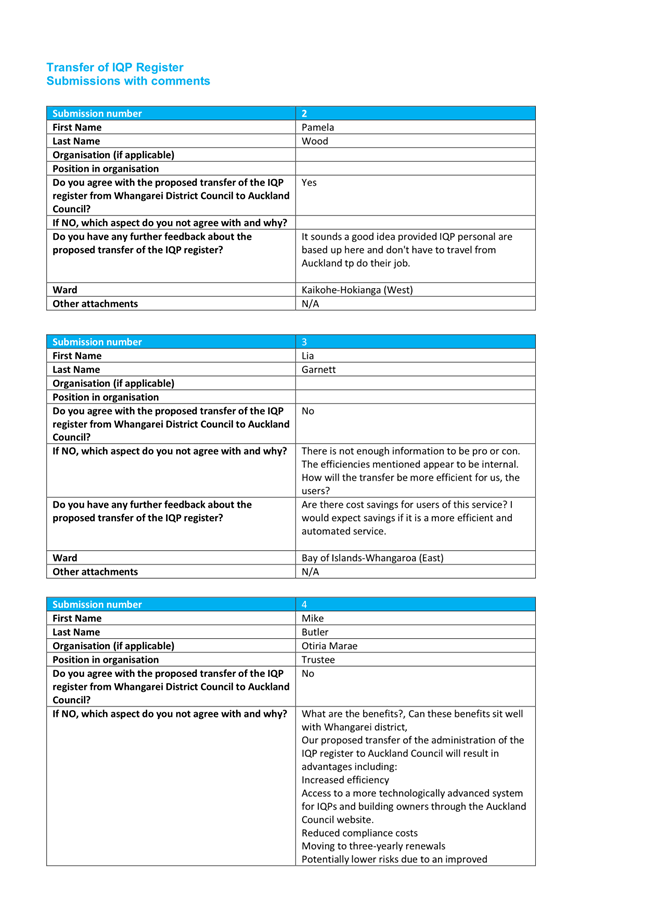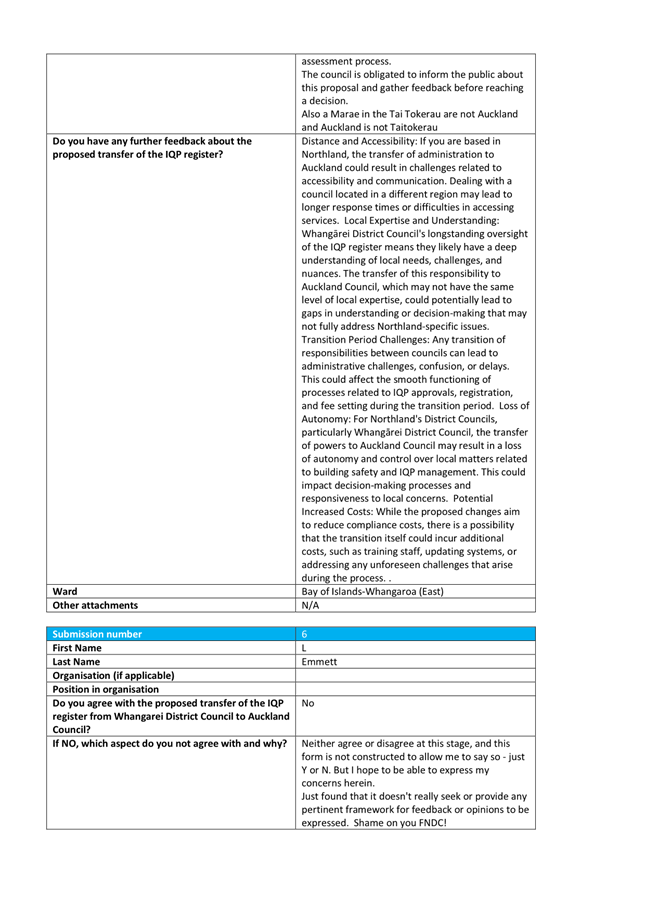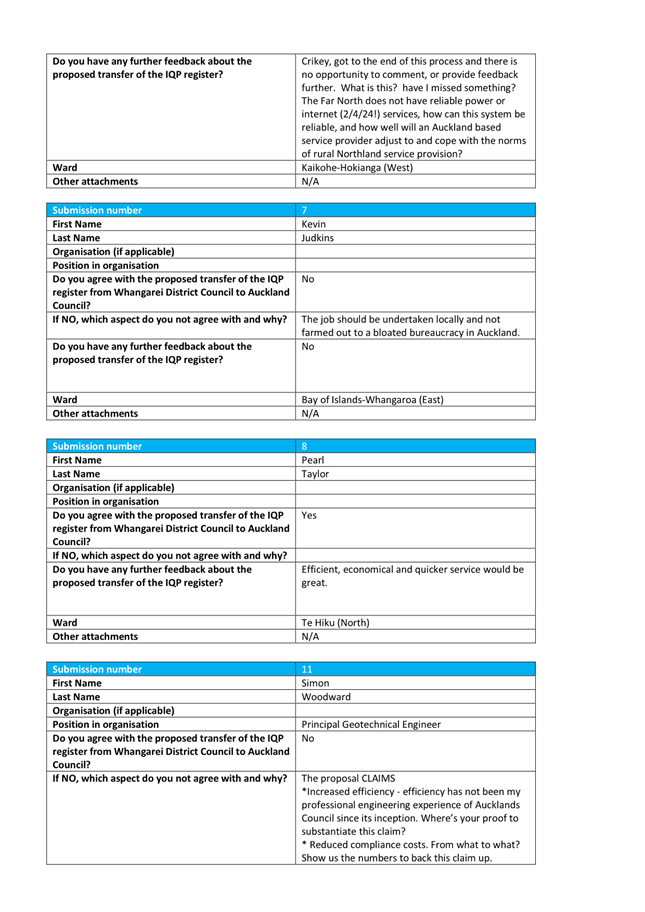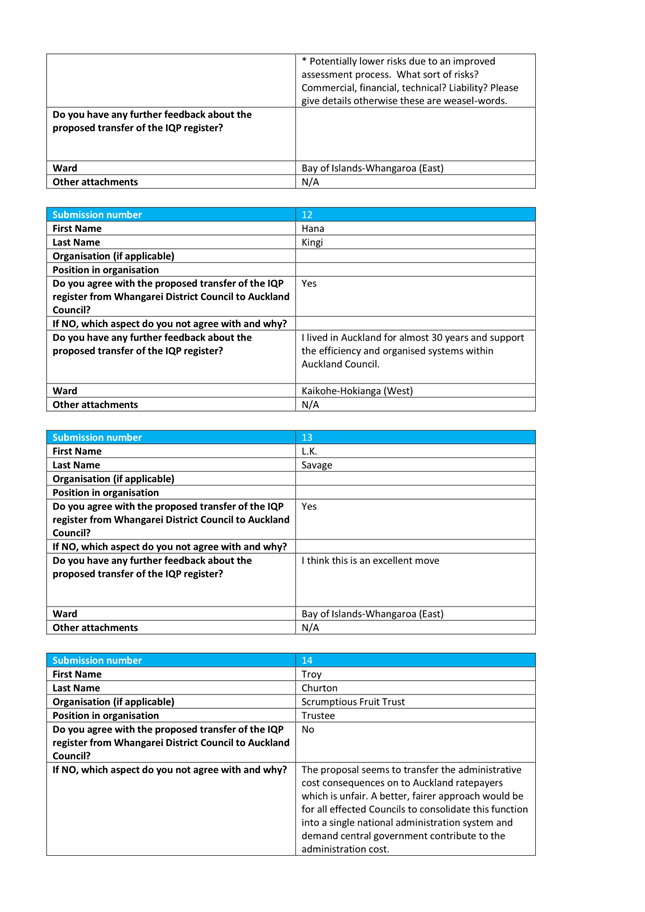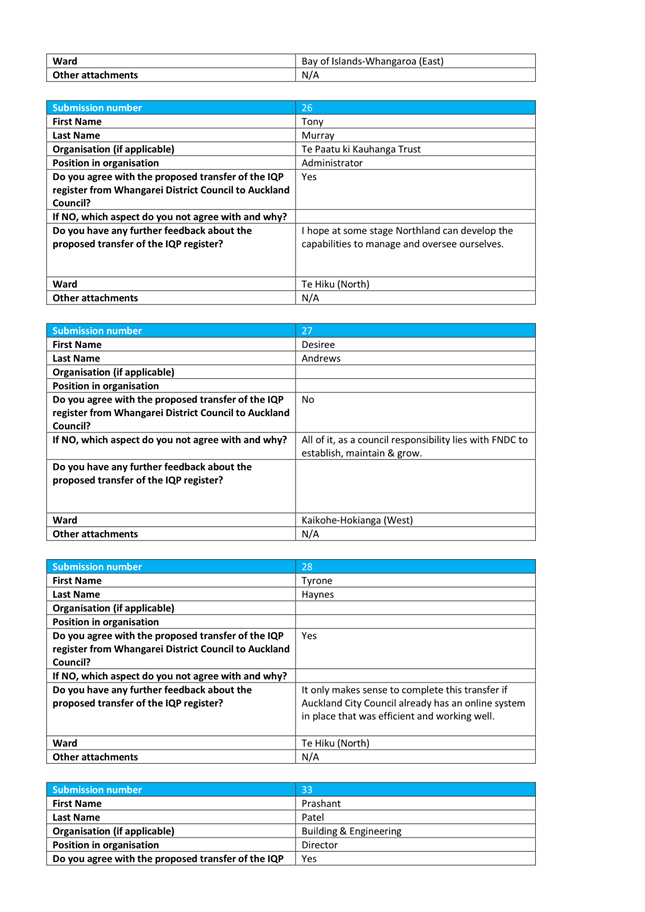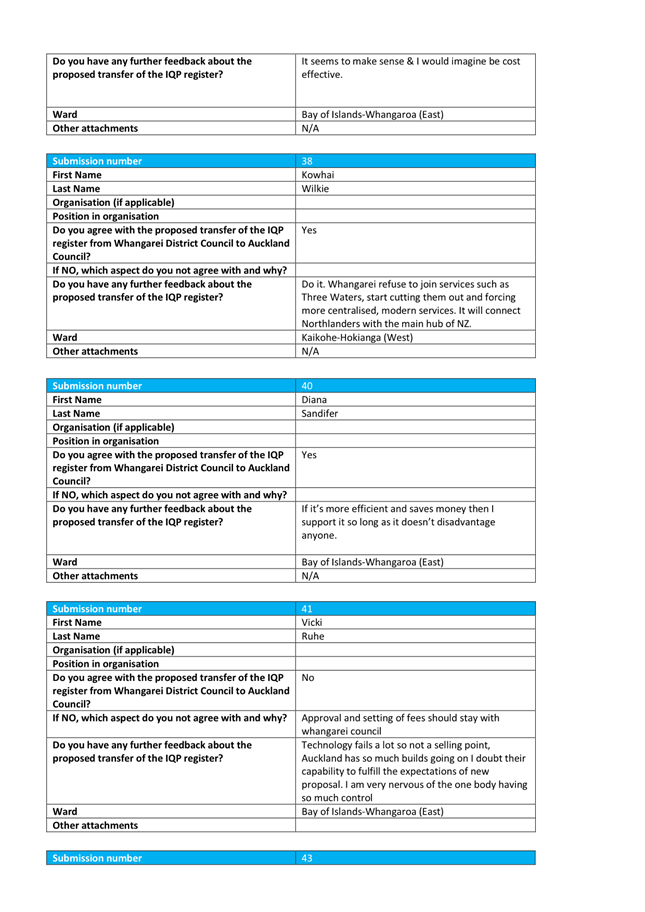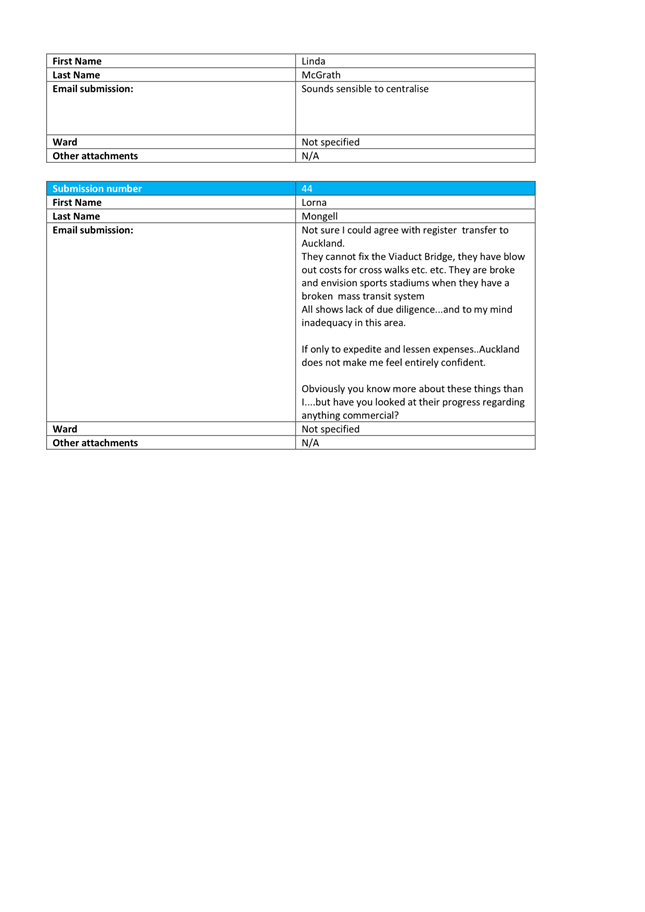
AGENDA
Ordinary Council
Meeting
Membership:
Kahika - Mayor Moko Tepania - Chairperson
Kōwhai - Deputy Mayor Kelly Stratford
Cr Ann Court
Cr Felicity Foy
Cr Hilda Halkyard-Harawira
Cr Babe Kapa
Cr Penetaui Kleskovic
Cr Steve McNally
Cr Mate Radich
Cr Tāmati Rākena
Cr John Vujcich

Thursday, 12 December 2024
Time:
10:00am
Location: Te Ahu, Kaitāia
Cnr State Highway 1 and
Mathews Avenue
1 Karakia
Timatanga / Opening Prayer
Ka tuku mātou kia kaha mai ngā māngai kua
whiriwhirihia mō Te Kaunihera o Te Hiku o te Ika ki te mahi me te
ngākau auaha me te whakamahi i ngā pūkenga me te mātauranga
i roto i ngā wānanga me ngā whakataunga kia whakatūria ai
tētahi Hapori e matatika ana, e tū kotahi ana ka mutu ka whakapiki
anō i te oranga o tō tātou rohe, ka whakatau anō i ngā
take o te rohe i runga i te tika me te pono.
We ask that through Council discussions and decisions the
representatives we have elected may govern the Far North District with
imagination, skill and wisdom to achieve a fairer and more united Community
that enhances the wellbeing of our district and solves the District’s
problems efficiently and effectively.
2 Ngā
Whakapāha Me Ngā Pānga Mema / Apologies and Declarations of
Interest
Members need to
stand aside from decision-making when a conflict arises between their role as a
Member of the Council and any private or other external interest they might
have. This note is provided as a reminder to Members to review the matters on
the agenda and assess and identify where they may have a pecuniary or other
conflict of interest, or where there may be a perception of a conflict of
interest.
If a Member
feels they do have a conflict of interest, they should publicly declare that at
the start of the meeting or of the relevant item of business and refrain from
participating in the discussion or voting on that item. If a Member thinks they
may have a conflict of interest, they can seek advice from the Chief Executive
Officer or the Manager - Democracy Services (preferably before the meeting).
It is noted that while members can seek advice the final
decision as to whether a conflict exists rests with the member.
Elected
Member - Register of Interests
3 Ngā
Tono Kōrero / Deputations
No requests for deputations were received at the time of the
Agenda going to print.
4 Ngā
Kōrero A Te Kahika / Mayoral Announcements
5 He
Pānui Whakamōtini / Notice of Motion
5.1 Notice
of Motion - Cancel Fluoride to Protect Public Health
File
Number: A5003619
I, Councillor Hilda Halkyard-Harawira, give notice that at the
next Ordinary Meeting of Council to be held on 12 December 2024, I intend to
move the following motion:
|
MŌtini / Motion
That the Far North
District Council cancel the fluoridation of Far North waters until local
residents on town water supply agree to do so.
|
Take / Rationale
I commend this Notice of Motion to
Council.
Āpitihanga / Attachments
1. Notice
of Motion - Cancel Fluoride to Protect Public Health November 2024 - A5003631 ⇩ 
|
Ordinary Council Meeting Agenda
|
12 December 2024
|


5.2 Notice
of Motion - Promotion & protection of He Wakaputanga o Te Rangatiratanga o
Nū tireni & Te Tiriti o Waitangi within the areas of the Far
North District Council
File
Number: A5008664
I, Councillor Hilda Halkyard-Harawira, give notice that at the
next Ordinary Meeting of Council to be held on 12 December 2024, I intend to
move the following motion:
|
MŌtini
/ Motion
That Council
1. future proof Tiriti gains made over the last
184 years, and in years to come, so that incoming governments cannot
undermine local progress and cause unnecessary anxiety amongst 53% of its
population;
2. adopt and embrace mutual and beneficial partnerships
with Māori that uplift community wellbeing i.e. housing, incentives for
health, education and sustainability industries within the area;
3. proactively heed the recommendations of the Waitangi
Tribunal findings regarding matters that impact on the territories within Tai
Tokerau i.e. Te Paparahi o Te Raki Stage 1 & 2 Reports;
4. return
all unused Council reserves to mana whenua expeditiously;
5. uphold and maintain former and yet to come Iwi
settlements, reparations agreements/ redress options and their evolving
conditions;
6. never approve resource consents or walking routes on
wāhi tapu;
7. by June 2025, commit formally in the Long-Term Plan
to the restoration of moana, rivers and streams and adopt the wholesale ban
on all sewage and hazardous waste dumping to the harbours, rivers and streams
in Tai Tokerau;
8. ensure 80% local procurement in all contracts to
sustain Tai Tokerau businesses.
|
Take / Rationale
I commend this Notice of Motion to
Council.
Āpitihanga
/ Attachments
1. Notice
of Motion - A5011799 ⇩ 
|
Ordinary Council Meeting Agenda
|
12 December 2024
|


6 Te
Whakaaetanga o Ngā Meneti o Mua / Confirmation of Previous Minutes
6.1 Confirmation
of Previous Minutes
File
Number: A5002689
Author: Maria
Bullen, Democracy Advisor
Authoriser: Aisha
Huriwai, Manager - Democracy Services
Take Pūrongo / Purpose of the Report
The minutes are attached to allow Council to confirm that
the minutes are a true and correct record
of previous meetings.
|
tŪtohunga
/ Recommendation
That Council confirm the minutes of the Council
meeting held 14 November 2024 are a true and correct record.
|
1) TĀhuhu kŌrero / Background
Local Government Act 2002 Schedule 7 Section 28 states that
a local authority must keep minutes
of its proceedings. The minutes of these proceedings duly
entered and authenticated as prescribed
by a local authority are prima facie evidence of those
meetings.
2) matapaki me NgĀ KŌwhiringa /
Discussion and Options
The minutes of the meetings are attached.
Far North District Council Standing Orders Section 27.3
states that no discussion shall arise on the
substance of the minutes in any succeeding meeting, except
as to their correctness.
TAKE TŪTOHUNGA
/ REASON FOR THE RECOMMENDATION
The reason for the recommendation is to confirm the minutes
are a true and correct record of the
previous meetings.
3) PĀnga PŪtea me ngĀ
wĀhanga tahua / Financial Implications and Budgetary Provision
There are no financial implications or the need for
budgetary provision as a result of this report.
Āpitihanga
/ Attachments
1. 2024-11-14
Council Minutes - A4968348 ⇩ 
Hōtaka Take Ōkawa / Compliance Schedule:
Full consideration has been given to the provisions of the
Local Government Act 2002 S77 in relation to decision making, in particular:
1. A
Local authority must, in the course of the decision-making process,
a) Seek
to identify all reasonably practicable options for the achievement of the
objective of a decision; and
b) Assess
the options in terms of their advantages and disadvantages; and
c) If
any of the options identified under paragraph (a) involves a significant
decision in relation to land or a body of water, take into account the
relationship of Māori and their culture and traditions with their
ancestral land, water sites, waahi tapu, valued flora and fauna and other
taonga.
2. This
section is subject to Section 79 - Compliance with procedures in relation to
decisions.
|
He Take Ōkawa /
Compliance Requirement
|
Aromatawai Kaimahi /
Staff Assessment
|
|
State the level of significance (high or low) of the
issue or proposal as determined by the Council’s
Significance and Engagement Policy
|
This is a matter of low significance.
|
|
State the relevant Council policies (external or
internal), legislation, and/or community outcomes (as stated in the LTP) that
relate to this decision.
|
This report complies with the Local Government Act
2002 Schedule 7 Section 28.
|
|
State whether this issue or proposal has a District wide
relevance and, if not, the ways in which the appropriate Community
Board’s views have been sought.
|
It is the responsibility of each meeting to confirm
their
minutes therefore the views of another meeting are not
relevant.
|
|
State the possible implications for Māori
and how Māori have been provided with an opportunity to contribute to
decision making if this decision is significant and relates to land and/or
any body of water.
State the possible implications and how this
report aligns with Te Tiriti o Waitangi / The Treaty of Waitangi.
|
There are no implications for Māori in confirming
minutes from previous meeting. Any implications on Māori arising from
matters included in meeting minutes should be considered as part of the
relevant report.
|
|
Identify persons likely to be affected by or have an
interest in the matter, and how you have given consideration to their views
or preferences (for example – youth, the aged and those with
disabilities).
|
This report is asking for minutes to be confirmed as
true
and correct record, any interests that affect other
people should be considered as part of the individual reports.
|
|
State the financial implications and where budgetary
provisions have been made to support this decision.
|
There are no financial implications or the need for
budgetary provision arising from this report
|
|
Chief Financial Officer review.
|
The Chief Financial Officer has not reviewed this
report.
|
|
Ordinary Council Meeting Agenda
|
12 December 2024
|








7 Ngā
Pūrongo / Reports
7.1 Setting
of 2025 Meeting Schedule
File Number: A4993990
Author: Marysa
Maheno, Democracy Advisor
Authoriser: Jacine
Warmington, Group Manager - Strategic Relationships
Take Pūrongo / Purpose of the Report
To seek approval for the 2025 formal meeting schedule.
WhakarĀpopoto matua / Executive Summary
· The
proposed calendar schedule incorporates formal Council and Committee meetings
up until the Local Government Election on 11 October 2025.
· Reserve
dates have been set aside for other Council business as required (workshops,
briefings, training sessions and extraordinary meetings).
· Council
and Committee formal meetings have been aligned with the Maramataka to support
good decision-making.
|
tŪtohunga
/ Recommendation
That Council:
a) adopt
the proposed 2025 calendar;
b) note
the 2025 reserve dates:
· January 28
· February 26
· March 5, 11, 25, 27
· April 1, 2, 4, 30
· May 1, 2, 22, 27,
28
· June 11, 18, 25
· July 9, 23, 24
· August 13, 19, 20,
26
· September 3, 10,
11, 17, 23
|
1) TĀhuhu kŌrero / Background
It is
good practice across New Zealand for a Council to set its Formal Meeting
Calendar in advance. In scheduling meetings and the frequency,
Councillors should be mindful of the following principles:
· Meetings should be
necessary for the good governance of its region or district.
· Meetings should
promote the open and public transaction of business at meetings.
· Councillors are
considered to be in a part-time role of which attendance at formal meetings is
only a small portion of the role. Consideration needs to be given to balancing
workloads and non-Council commitments.
The
proposed schedule includes ‘reserve’ dates for additional Council
commitments such as verbal submissions, workshops, training, extraordinary
meetings or briefings to enable elected members to plan their varying
commitments and in recognition that workshops are a beneficial tool to engage
on technical or complex issues where staff require some indication or
direction.
Council
resolved in December 2019 not to conduct meetings on 28 October each year in
recognition of He Whakaputanga o te Rangatiratanga o Nu Tireni –
Declaration of Independence of the United Tribes of New Zealand.
Council
also had a wānanga (workshop) on 23 November 2022 with esteemed Maramataka
expert Matua Rereata Makiha who explained the benefits of following the moon
cycles. Meeting dates have been proposed to take place in alignment with the
Maramataka for better decision-making.
2) matapaki me NgĀ KŌwhiringa / Discussion and Options
The proposed
calendar takes into consideration:
· LGNZ Regional and National
Events
· NRC Joint Meeting
commitments
· Proposed District Plan
commitments
· Annual Plan work programme
· Te Pātukurea work programme
The attached schedule continues the meeting structure and
frequency from the latter part of the 2024 formal meeting schedule.
Te Miromiro – Assurance, Risk and Finance Committee
terms of reference have been amended to reflect a six-weekly meeting schedule.
Te Kuaka
– Te Ao Māori Committee meetings have been held every eight weeks.
Staff confirmed the preference of Te Kahu o Taonui is to continue meeting every
eight weeks.
|
Council
(4-weekly)
|
Te Huia - Executive Review Committee
(4-weekly)
|
Te Kuaka – Te Ao Māori Committee
(8-weekly)
|
Te Miromiro – Assurance, Risk and Finance
Committee
(6-weekly)
|
Te Koukou-Transport Committee
(4-weekly)
|
|
13 February
|
11 February
|
27 February
|
19 February
|
25 February
|
|
13 March
|
6 March
|
24 April
|
8 April
|
19 March
|
|
10 April
|
3 April
|
19 June
|
14 May
|
23 April
|
|
8 May
|
6 May
|
14 August
|
1 July
|
20 May
|
|
5 June
|
21 May
|
|
6 August
|
17 June
|
|
3 July
|
26 June
|
|
16 September
|
22 July
|
|
31 July
|
29 July
|
|
|
12 August
|
|
28 August
|
21 August
|
|
|
9 September
|
|
25 September
|
18 September
|
|
|
|
Staff
have attempted to follow the agreed meeting frequency however the attached
calendar for adoption includes the following exceptions:
|
Meeting
|
Rationale
|
|
11 Feb – Te
Huia-Executive Review Committee
|
Delayed one week to avoid a clash with
Waitangi week.
|
|
19 February –
Te Miromiro-Assurance, Risk and Finance
|
Delayed one day to avoid clash with a
Community Board meeting.
|
|
19 March – Te
Koukou-Transport and Infrastructure Committee
|
Brought forward four working days to avoid a
clash with Proposed District Plan Hearings.
|
|
8 April – Te
Miromiro-Assurance, Risk and Finance
|
Delayed one week to avoid a clash with the
Regional Transport Committee.
|
|
23 April – Te
Koukou-Transport and Infrastructure Committee
|
Brought forward one week to avoid a clash with
Proposed District Plan Hearings.
|
|
29 April – Te
Koukou-Transport and Infrastructure Committee
|
Delayed one week to avoid being held within a
3-day week due to public holidays.
|
|
6 May – Te
Huia-Executive Review Committee
|
Delayed one week to avoid a clash with
Proposed District Plan Hearings.
|
|
21 May – Te
Huia-Executive Review Committee
|
Brought forward one week to avoid a clash with
Proposed District Plan Hearings.
|
|
1 July – Te
Miromiro-Assurance, Risk and Finance Committee
|
Delayed one week to avoid a clash with
Proposed District Plan Hearings.
|
|
22 July – Te
Koukou-Transport and Infrastructure Committee
|
Delayed one week to avoid a clash with the
LGNZ Conference.
|
|
29 July – Te
Huia-Executive Review Committee
|
Delayed one week to avoid a clash with
Transport and Infrastructure Committee meetings.
|
|
6 August – Te
Miromiro-Assurance, Risk and Finance Committee
|
Delayed one day to avoid clash with Community
Board meeting.
|
This
report recommends that all meetings in the schedule be held at Far North
District Council headquarters in Kaikohe. While it is possible, hosting
meetings elsewhere comes with an increase in cost and cannot be supported to
the same level that is possible at headquarters (i.e. live streaming). If there
is a desire to hold meetings elsewhere consideration needs to be given to what
value this would add to the decision-making process. Constituents are
encouraged to attend Community Board meetings in their area as a local option
for engagement.
Additional
time may be required outside of this schedule for extraordinary and/or urgent
matters. Staff are committed to providing as much notice as possible and that
business, where possible, is restricted to the days adopted as part of this
schedule. The total number of reserve dates proposed is 29, this is less than
in previous years taking into account the election period and new term.
Staff
will engage with Te Kahu o Taonui to consider holding Te Kuaka Te Ao Māori
Committee meetings at alternative sites as an opportunity to increase
engagement and participation with Iwi Māori.
TAKE TŪTOHUNGA
/ REASON FOR THE RECOMMENDATION
Adopting a formal meeting calendar
ahead of time is essential for effective planning and collaboration. It ensures
that elected members and staff can prioritise their time, prepare adequately,
and avoid scheduling conflicts reducing last-minute disruptions, and fosters
accountability by setting clear expectations. It also enables the council to
give advance notice to the public and increase engagement opportunities.
3) PĀnga PŪtea me ngĀ
wĀhanga tahua / Financial Implications and Budgetary Provision
The cost of supporting meetings
varies depending on the number of attendees, the location and the duration of
the meeting. The costs are covered within operational budgets.
Attachments
1. 2025
Formal Meeting Calendar - A5010643 ⇩ 
Hōtaka Take Ōkawa / Compliance schedule:
Full consideration has been given to the provisions of the
Local Government Act 2002 S77 in relation to decision making, in particular:
1. A
Local authority must, in the course of the decision-making process,
a) Seek
to identify all reasonably practicable options for the achievement of the
objective of a decision; and
b) Assess
the options in terms of their advantages and disadvantages; and
c) If
any of the options identified under paragraph (a) involves a significant
decision in relation to land or a body of water, take into account the
relationship of Māori and their culture and traditions with their
ancestral land, water sites, waahi tapu, valued flora and fauna and other
taonga.
2. This
section is subject to Section 79 - Compliance with procedures in relation to
decisions.
|
Compliance
requirement
|
Staff
assessment
|
|
State the level of significance
(high or low) of the issue or proposal as determined by the Council’s
Significance and Engagement Policy
|
This matter is of low
significance.
|
|
State the relevant Council
policies (external or internal), legislation, and/or community outcomes (as
stated in the LTP) that relate to this decision.
|
The relevant legislation is the
Local Government Act 2002 and the Local Government Official Information and
Meetings Act 1987.
|
|
State whether this issue or
proposal has a District wide relevance and, if not, the ways in which the
appropriate Community Board’s views have been sought.
|
Community Boards are responsible
for setting their own meeting schedule. The dates shown on the attached
schedule are the dates adopted by each of the Community Boards at their
November meetings.
|
|
State the possible implications for Māori
and how Māori have been provided with an opportunity to contribute to
decision making if this decision is significant and relates to land and/or
any body of water.
|
The recommendation takes into
account impacts for Te Kuaka – Te Ao Māori Committee and the
ability for wider participation in all formal meetings.
|
|
Identify persons likely to be
affected by or have an interest in the matter, and how you have given
consideration to their views or preferences (for example – youth, the
aged and those with disabilities.
|
This report does not have any
implications for persons identified in legislation.
|
|
State the financial implications
and where budgetary provisions have been made to support this decision.
|
Financial implications are
covered within operational budgets.
|
|
Chief Financial Officer review.
|
The CFO has not reviewed this
report.
|
|
Ordinary Council Meeting Agenda
|
12 December 2024
|


7.2 Waitangi
2025 Temporary Road Closures
File
Number: A4982563
Author: Cath
Beaumont, Road Corridor Manager
Authoriser: Tanya
Proctor, Head of Infrastructure Strategy
Take Pūrongo / Purpose of the Report
The purpose of this report is to obtain Council approval for
temporary road closures for Waitangi 2025.
WhakarĀpopoto matua / Executive Summary
· The task of approving Road Closures, specifically for the safe
operation of Events, cannot be delegated by Council.
· Advertising of each event will take place approximately 42 days
before proposed event and 1 week before the event in accordance with the
Transport (Vehicular Traffic Road Closure) Regulations 1965.
· Without Council approval, the Waitangi Day commemoration event
cannot take place.
· Traffic Management planning through a collaboration of Ti Tii Marae
and Waitangi (Upper) Marae, Waitangi Trust, Police, Council, NZTA and Focus
Paihia.
|
tŪtohunga
/ Recommendation
That Council approve the proposed temporary road
closures to accommodate the safe operation of the Waitangi Day commemoration
week event.
|
1) TĀhuhu kŌrero / Background
Waitangi Week – Te Tii Marae: Monday 3rd
February 2025 to Thursday 6th February 2025.
Waitangi week commemorations will be showcased with a large
marquee for people to sit and enjoy food from the food stalls and the
entertainment showcased on site, for the start of the Waitangi week.
Road Closures and times: 2am – 7pm
4 days from 3rd – 6th February
2025
Te Kemara Avenue
Te Karuwhā Parade
Tau Henare Drive
Tahuna Road
Travellers will be directed to parking areas around the
Haruru area: Bledisloe Domain, ITM Puketona and old airstrip Puketona
Road. Shuttle buses will transfer members of the public to and from
Waitangi grounds. This is to start the expectation of park and ride for
the next four days. Communications via radio, TV and social media will be
sent out prior to this week informing everyone on the expectation before
arriving at Waitangi. Electronic Noticeboards will be set up directing traffic
via State Highway 1 and 10 and Puketona Road.
Access to Te Kemara Avenue monitored and managed by
Ngāti Rahiri and Ngāti Kawa for residents and Marae Whanāu.
Limited access to Te Karuwhā Parade for VIPs, shuttle services for both
parking and cruise ships, emergency services, businesses and stall
holders. One way system set up from Te Karuwhā Parade over the
bridge and continuing through to Tau Henare Drive through to Haruru Falls
Road. This one way can be reversed at the discretion of the STMS in
charge.
Waitangi Day: Thursday 6th February 2025
Road closures to ensure safe operations for the day and
provide security for VIP operations. Reduce friction between vehicles and
pedestrians, directing travellers to parking areas and shuttle buses –
locations at Bledisloe Domain, large area next to ITM Puketona Road, old
airstrip Puketona Road are set aside for parking and shuttles will transfer
members of the public to and from Waitangi Marae and the grounds for the day.
Road Closures and time:
Thursday 6th February 2025 (Waitangi Day) 2am
– 5pm
Te Kemara Avenue
Te Karuwhā Parade
Tau Henare Drive
Tahuna Road
2) matapaki me NgĀ KŌwhiriAnga /
Discussion and Options
The public notice for the proposed temporary road closures
will be advertised in the Northern News, FNDC Website for at least 42 days
before this event and 7 days leading up to this event.
TAKE TŪTOHUNGA
/ REASON FOR THE RECOMMENDATION
To enable the Waitangi Week Commemorations to take place.
3) PĀnga PŪtea me ngĀ
wĀhanga tahua / Financial Implications and Budgetary Provision
There are no budgetary implications.
Āpitihanga
/ Attachments
1. Waitangi
2025 Timeline - A5003595 ⇩ 
2. WAITANGI
TMP RUN SHEET - A5003596 ⇩ 
Hōtaka Take Ōkawa / Compliance Schedule:
Full consideration has been given to the provisions of the
Local Government Act 2002 S77 in relation to decision making, in particular:
1. A
Local authority must, in the course of the decision-making process,
a) Seek
to identify all reasonably practicable options for the achievement of the
objective of a decision; and
b) Assess
the options in terms of their advantages and disadvantages; and
c) If
any of the options identified under paragraph (a) involves a significant
decision in relation to land or a body of water, take into account the
relationship of Māori and their culture and traditions with their
ancestral land, water sites, waahi tapu, valued flora and fauna and other
taonga.
2. This
section is subject to Section 79 - Compliance with procedures in relation to
decisions.
|
He Take Ōkawa /
Compliance Requirement
|
Aromatawai Kaimahi /
Staff Assessment
|
|
State the level of significance (high or low) of the
issue or proposal as determined by the Council’s
Significance and Engagement Policy
|
Low significance
|
|
State the relevant Council policies (external or
internal), legislation, and/or community outcomes (as stated in the LTP) that
relate to this decision.
|
For the purpose of holding on any road, any vehicle
races or trails, or any processions, carnivals, celebrations, sporting events
or other special events, the Controlling Authority may, subject to the
provisions of these regulations, close the road to ordinary vehicular traffic
for a period or series of periods of not more than 12 hours each in any
consecutive 24 hours.
|
|
State whether this issue or proposal has a District wide
relevance and, if not, the ways in which the appropriate Community
Board’s views have been sought.
|
Local Relevance.
|
|
State the
possible implications for Māori and how Māori have been provided
with an opportunity to contribute to decision making if this decision is
significant and relates to land and/or any body of water.
State the
possible implications and how this report aligns with Te Tiriti o Waitangi /
The Treaty of Waitangi.
|
There has been several meetings held at Waitangi Treaty
Grounds. Present at these hui were: Te Tii Marae, Kawati Marae, Ngati
Kawa Taituha, Waitangi Trust, Far North District Council, Police, Focus
Paihia and NZTA.
|
|
Identify persons likely to be affected by or have an
interest in the matter, and how you have given consideration to their views
or preferences (for example – youth, the aged and those with
disabilities).
|
Elderly and anyone with disabilities will be allowed
access through the road cordons for easier access to Waitangi. Parking
near the stallholders will be accessible.
|
|
State the financial implications and where budgetary
provisions have been made to support this decision.
|
No Budgetary implications
|
|
Chief Financial Officer review.
|
The Chief Financial Officer has not reviewed the Report
|
|
Ordinary
Council Meeting Agenda
|
12 December 2024
|







|
Ordinary Council Meeting Agenda
|
12 December 2024
|




7.3 Temporary
Road Closure - Kerikeri Cruz'n the Bayz
File
Number: A4851211
Author: Cath
Beaumont, Road Corridor Manager
Authoriser: Tanya
Proctor, Head of Infrastructure Strategy
Take Pūrongo / Purpose of the Report
The purpose of this paper is to obtain Council approval for
a temporary road closure.
WhakarĀpopoto matua / Executive Summary
· The task of approving Road Closures, specifically for the safe
operations for events, cannot be delegated by council.
· Advertising of each event will take place approximately at least a
minimum of 42 days before proposed event and one week before the event in
accordance with the transport (Vehicular Traffic Road Closure) Regulations
1965.
· Without Council approval the Kerikeri Cruz’n the Bayz cannot
take place.
|
TŪTOHUNGA / RECOMMENDATION
That council approve the proposed temporary road closure to
accommodate the safe operations of the kerikeri cruz’n the bayz event.
|
1) TĀhuhu kŌrero / Background
Saturday 1st March 2025 – Kerikeri
Cruz’n the Bayz
A Classic Hot Rod, Muscle Car, and Motorcycle event that
will take place in Waitangi, and Kerikeri.
The event will include driving from town to town, stopping
to enjoy local food and music.
The following Road Closure and times are the same as the
event held in March 2024:
- Kerikeri Road from Homestead Road intersection
ending at the intersection of Kerikeri Road and Fairway Drive. 7:00am to
3:00pm
- Cobham Road from Kerikeri Road intersection to
intersection of Hobson Ave. 7:00am to 3:00pm
2) matapaki me NgĀ KŌwhiringa /
Discussion and Options
The public notice for this proposed temporary road closures
have been advertised in the Northern News, Chronicle, Northland Age and FNDC
website for the first 42 days and a second public notice will go out seven days
leading up to this event.
TAKE TŪTOHUNGA
/ REASON FOR THE RECOMMENDATION
To enable the Kerikeri Cruz’n the Bayz to take place.
3) PĀnga PŪtea me ngĀ
wĀhanga tahua / Financial Implications and Budgetary Provision
There are no budgetary implications.
Āpitihanga
/ Attachments
Nil


Hōtaka Take Ōkawa / Compliance Schedule:
Full consideration has been given to the provisions of the
Local Government Act 2002 S77 in relation to decision making, in particular:
1. A
Local authority must, in the course of the decision-making process,
a) Seek
to identify all reasonably practicable options for the achievement of the
objective of a decision; and
b) Assess
the options in terms of their advantages and disadvantages; and
c) If
any of the options identified under paragraph (a) involves a significant
decision in relation to land or a body of water, take into account the
relationship of Māori and their culture and traditions with their
ancestral land, water sites, waahi tapu, valued flora and fauna and other
taonga.
2. This
section is subject to Section 79 - Compliance with procedures in relation to
decisions.
|
He Take Ōkawa /
Compliance Requirement
|
Aromatawai Kaimahi /
Staff Assessment
|
|
State the level of significance (high or low) of the
issue or proposal as determined by the Council’s
Significance and Engagement Policy
|
Low significance, the event organiser will be engaging
with property owners and business and community groups that will be affected
by their event with the road closures.
|
|
State the relevant Council policies (external or
internal), legislation, and/or community outcomes (as stated in the LTP) that
relate to this decision.
|
For the purpose of holding on any road any vehicle races
or trails, or any processions, carnivals, celebrations, sporting events, or
other special events, the controlling authority may, subject to the
provisions of these regulations, close the road to ordinary vehicular traffic
for a period or series of periods of not more than 12 hours each in any
consecutive 24 hours.
|
|
State whether this issue or proposal has a District wide
relevance and, if not, the ways in which the appropriate Community
Board’s views have been sought.
|
There will be local relevance only to the area where the
event will be held.
|
|
State the
possible implications for Māori and how Māori have been provided
with an opportunity to contribute to decision making if this decision is
significant and relates to land and/or any body of water.
State the
possible implications and how this report aligns with Te Tiriti o Waitangi /
The Treaty of Waitangi.
|
Talked to Te Hono for contacts. Emailed Ngāti
Rehia, Ngāti Kawa, Te Tii Waitangi and the Waitangi Trust informing them
of the three-day event. So far only comments from Waitangi Trust that
they appreciated the consultation.
|
|
Identify persons likely to be affected by or have an
interest in the matter, and how you have given consideration to their views
or preferences (for example – youth, the aged and those with
disabilities).
|
N/A Outlined in organisers event application.
|
|
State the financial implications and where budgetary
provisions have been made to support this decision.
|
No budgetary implications.
|
|
Chief Financial Officer review.
|
The Chief Financial Officer has not reviewed the report.
|
7.4 Control
of Earthworks Bylaw Consultation
File
Number: A4897747
Author: Dan
Bowmar, Policy Advisor
Authoriser: Angie
Thomas, Acting Chief Financial Officer
Take Pūrongo / Purpose of the Report
To obtain approval for the proposal to consult on continuing
the Earthworks Bylaw without amendment.
WhakarĀpopoto matua / Executive Summary
· On 03 October 2019, Council approved the Control of Earthworks Bylaw
under the Local Government Act 2002.
· On 12 September 2024, Council approved the continuation of the
Control of Earthworks Bylaw without amendment.
· The Local Government Act 2002 requires that Council consult when
continuing a bylaw without amendment.
· A Proposal for consultation on the Control of Earthworks Bylaw is in
Attachment 1.
· The recommended consultation period for written submissions is for
four weeks. The dates for oral submissions will be set following this four-week
period.
|
tŪtohunga
/ Recommendation
That Council:
a) approve, under
section 160(3)(b)(ii) of the Local Government Act 2002, to consult on
continuing the Control of Earthworks Bylaw without amendment in a manner that
gives effect to the requirements of section 82 of the local government act
2002.
b) approve,
the Proposal for Consultation on the Control of Earthworks Bylaw, in
attachment one, to be made publicly available for the purpose of the
consultation.
c) approve,
the period for making written submissions on the proposal will be a minimum
of 4 weeks.
d) delegate
authority to the Mayor to decide on the date of oral presentation/s of
submissions.
e) direct
council staff to make all necessary logistical arrangements for
people’s verbal submissions to be heard in person in the council
chambers or online via Microsoft Teams on the date decided by the mayor.
f) authorise
the Chief Executive to make minor changes to the Proposal for Consultation on
the Control of Earthworks Bylaw to correct grammatical or spelling errors, or
formatting.
|
1) TĀhuhu kŌrero / Background
On 03 October 2019 (refers 2019/39), the governing body of
the Council approved the Control of Earthworks Bylaw under the Local Government
Act 2002.
On 12 September 2024 (refers 202125), the governing body of
the Council:
a) approved,
under section 158 of the Local Government Act 2002, the Control of Earthworks
Bylaw has been reviewed.
b) approved,
under section 155(1) of the Local Government Act 2002, that a bylaw is the most
appropriate way of addressing problems related to the control of earthworks.
c) approved,
under section 155(2) of the Local Government Act 2002, the Control of
Earthworks Bylaw:
i. is
the most appropriate form of bylaw
ii. does
not give rise to any implications under the New Zealand Bill of Rights Act
1990.
d) Approved
to continue the Control of Earthworks Bylaw without amendment under section 145
of the Local Government Act 2002.
2) matapaki me NgĀ KŌwhiringa /
Discussion and Options
Legal requirements for consultation
Section 160 of the Local Government Act 2002 requires
consultation following a bylaw review. Continuing the
Control of Earthworks Bylaw without amendment is not considered a significant
decision under the Council’s Significance and Engagement Policy.
Therefore, section 160 of the Local Government Act 2002 requires the Council to
consult in a manner that meets the requirements of section 82. This
includes:
· giving submitters information in a manner and
format that is appropriate
· encouraging people to give their views and have
a reasonable opportunity to present those views in either a written or verbal
manner
· being clear about the purpose of the
consultation and the scope of the decisions to be taken.
Section 160(4) of the Local
Government Act 2002 requires, for consultation purposes, the Council to make
publicly available:
· a copy of the bylaw to be continued
· the reasons for the proposal
· a report of any relevant determinations by the local
authority under Local Government Act 2002, section 155.
Attachment 1 is the proposal
document that meets the requirements of section 160 and a copy of the bylaw to
be continued.
Consultation process
Section 82 of the Local Government
Act 2002 does not stipulate a minimum length of time for consultation, however
a consultation period of at least four weeks is considered best practice.
Due to other engagement priorities, and reduced capacity in the Communications
and Engagement team, the first available space in the engagement calendar is
early February. Therefore, consultation will open on 10 February 2025 and close
13 March 2025, which is a period of four weeks.
Council staff recommend people be encouraged to present
their views primarily by making comments or submissions via the Council’s
website. A submission form will be provided for download on the website for
people to print and use to make written submissions either by post or delivery
to Council offices. A small number of printed copies of the proposal document
and submission form will be made available at Council offices for people to use
if they are not able to print the documents themselves. A link to the webpage
for making submissions will be emailed to the Council’s
“subscribers” database and publicised on the Council’s social
media pages.
Council staff will be available to discuss the Proposal with
interested and affected parties during the consultation period. The Proposal
may be of interest to the public and Council staff expect there may be requests
to present submissions orally to elected members. Staff therefore recommend the
Council delegate, to the Mayor, the power to arrange and change the date of the
oral presentations of submissions.
TAKE TŪTOHUNGA
/ REASON FOR THE RECOMMENDATION
The Council is required to consult
after deciding a bylaw should continue without amendment. The proposal document
in Attachment 1 meets the provisions of section 82A of the Local Government Act
2002 that prescribe the information the Council is required to make publicly
available for consultation. The consultation process will meet the requirements
of section 82 of the Local Government Act 2002 by:
· providing an opportunity for people to give
their views on the proposal, the period to open on 10 February 2025 and end on
13 March 2025
· the Council conducting hearings of oral
presentations of submissions.
Next
Steps
If Council approves the recommendation, staff aim to present an analysis of
submissions and a proposed final version of the Bylaw to Council by the end of the
second quarter of 2025.
3) PĀnga PŪtea me ngĀ
wĀhanga tahua / Financial Implications and Budgetary Provision
The operational cost of consultation on the proposal to
continue the Control of Earthworks Bylaw is expected to be minimal (less than
$1000 plus staff time and resources) and will be met from within existing
budgets.
Āpitihanga
/ Attachments
1. Proposal
- Control of Earthworks Bylaw 2019 - A4948807 ⇩ 
Hōtaka Take Ōkawa / Compliance Schedule:
Full consideration has been given to the provisions of the
Local Government Act 2002 S77 in relation to decision making, in particular:
1. A
Local authority must, in the course of the decision-making process,
a) Seek
to identify all reasonably practicable options for the achievement of the
objective of a decision; and
b) Assess
the options in terms of their advantages and disadvantages; and
c) If
any of the options identified under paragraph (a) involves a significant
decision in relation to land or a body of water, take into account the
relationship of Māori and their culture and traditions with their
ancestral land, water sites, waahi tapu, valued flora and fauna and other
taonga.
2. This
section is subject to Section 79 - Compliance with procedures in relation to
decisions.
|
He Take Ōkawa /
Compliance Requirement
|
Aromatawai Kaimahi /
Staff Assessment
|
|
State the level of significance (high or low) of the
issue or proposal as determined by the Council’s
Significance and Engagement Policy
|
The Control of Earthworks Bylaw has a low level of
significance as: a) it does not involve the transfer of ownership or control
of a strategic asset or other important asset; and b) it is not inconsistent
with current Council plans and policies.
|
|
State the relevant Council policies (external or
internal), legislation, and/or community outcomes (as stated in the LTP) that
relate to this decision.
|
Sections 82, 155(1), 155(2), 158, and 160(3)(b)(ii) of
the Local Government Act 2002 apply to the decision recommended in this
report.
|
|
State whether this issue or proposal has a District wide
relevance and, if not, the ways in which the appropriate Community
Board’s views have been sought.
|
The proposal has district-wide relevance and is not
within the delegations of Community Boards.
|
|
State the
possible implications for Māori and how Māori have been provided
with an opportunity to contribute to decision making if this decision is
significant and relates to land and/or any body of water.
State the
possible implications and how this report aligns with Te Tiriti o Waitangi /
The Treaty of Waitangi.
|
Seeking the views and input of iwi in the development of
policy is integral. Māori will be given an opportunity to consult as
part of the consultative procedure.
|
|
Identify persons likely to be affected by or have an
interest in the matter, and how you have given consideration to their views
or preferences (for example – youth, the aged and those with
disabilities).
|
Affected and interested parties will be given an
opportunity to share their views and preferences during the consultation
process.
This includes:
· Mana
whenua
· Land
owners
· Land
developers
· Earthworks
companies
· Farmers
· Communities
|
|
State the financial implications and where budgetary provisions
have been made to support this decision.
|
The operational cost of consultation on the proposal to
continue the Control of Earthworks Bylaw is expected to be minimal (less than
$1000 plus staff time and resources) and will be met from within existing
budgets.
|
|
Chief Financial Officer review.
|
This report has been reviewed by the Chief Financial
Officer.
|
|
Ordinary Council Meeting Agenda
|
12 December 2024
|
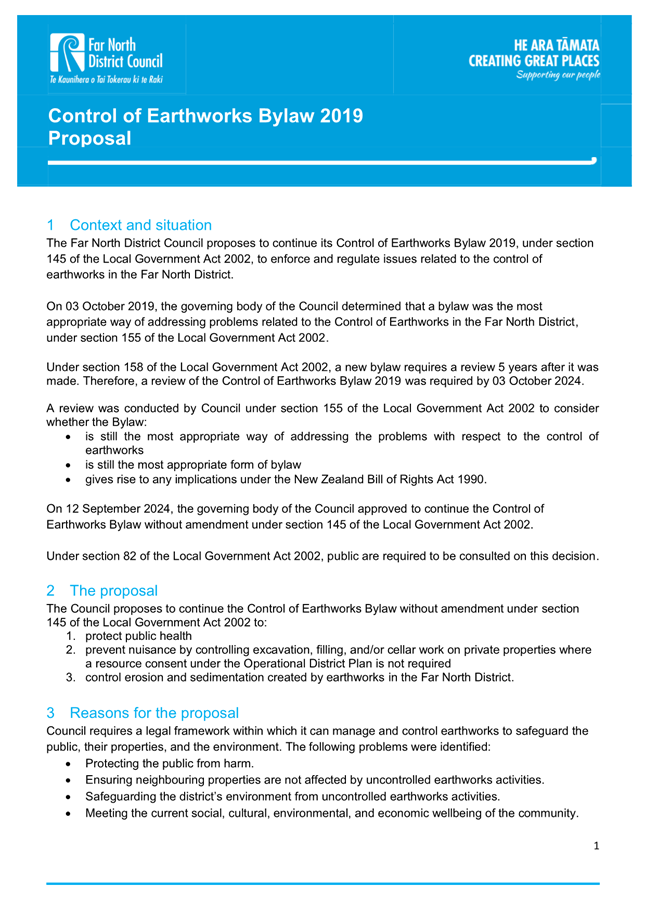
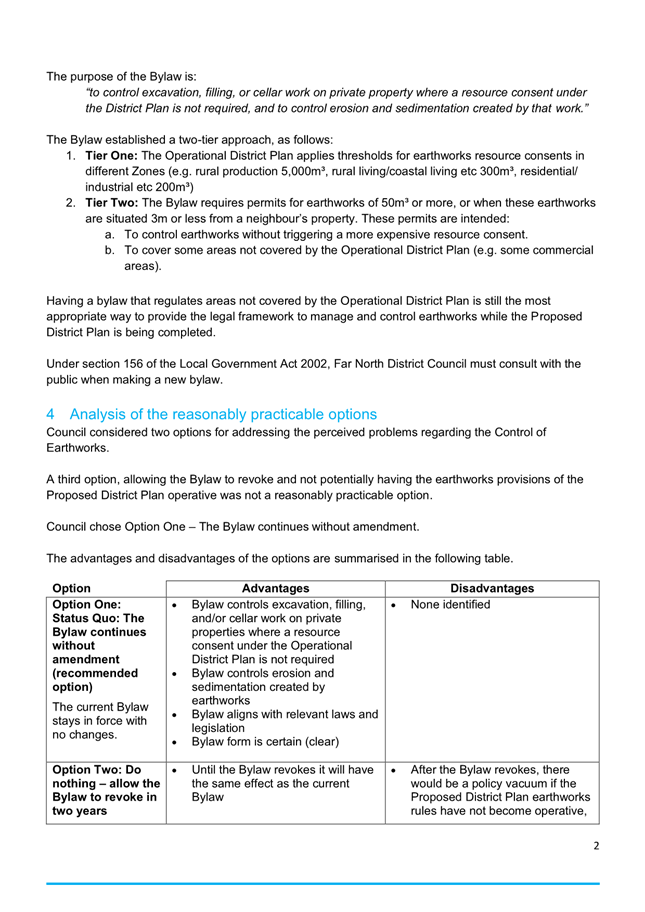
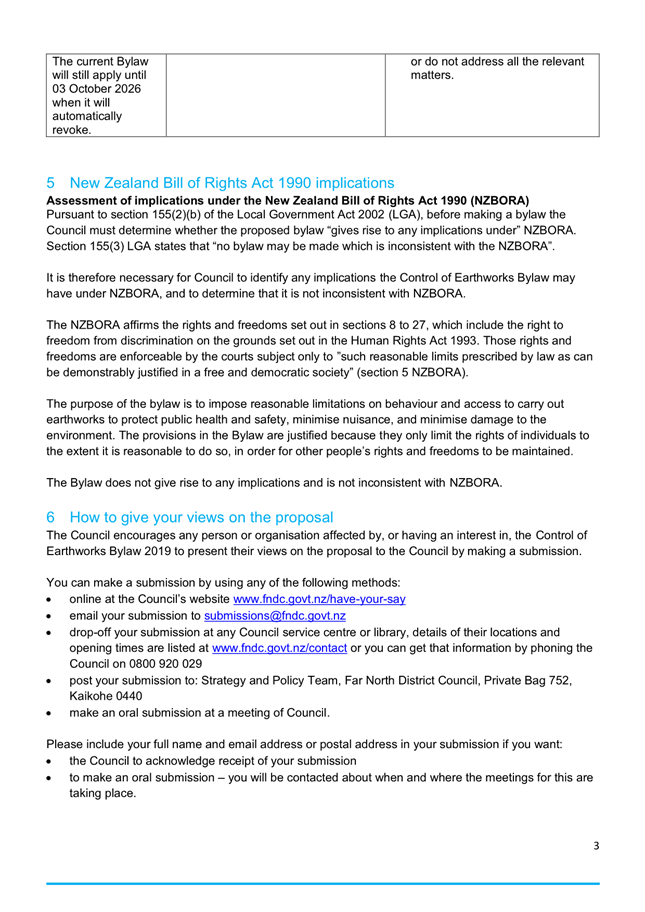
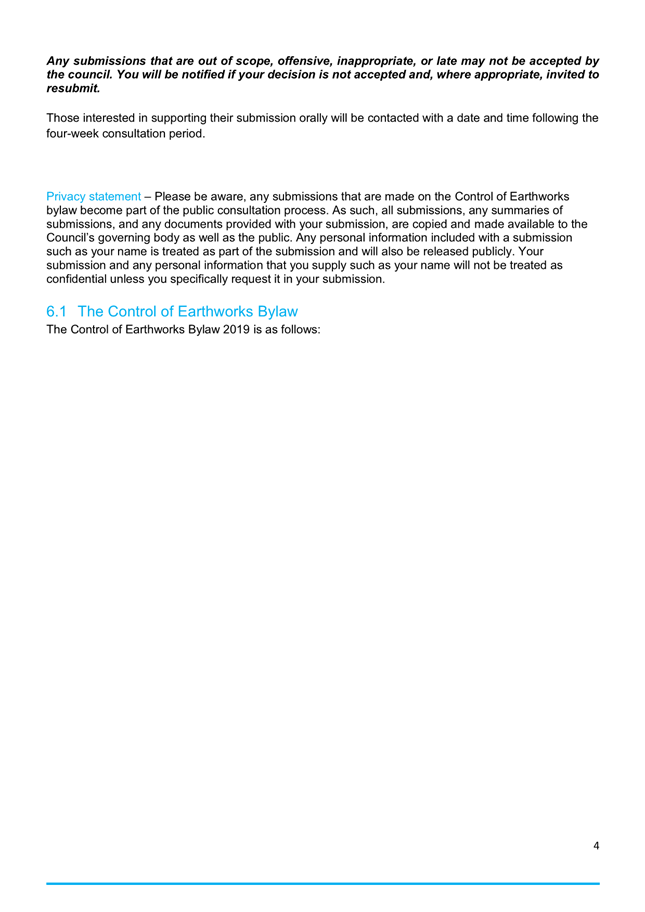

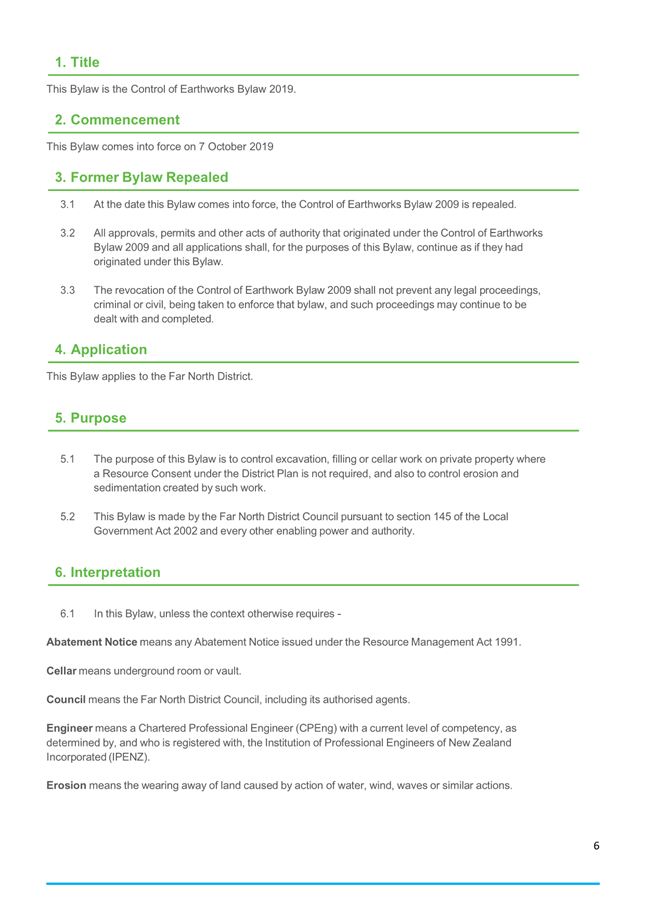

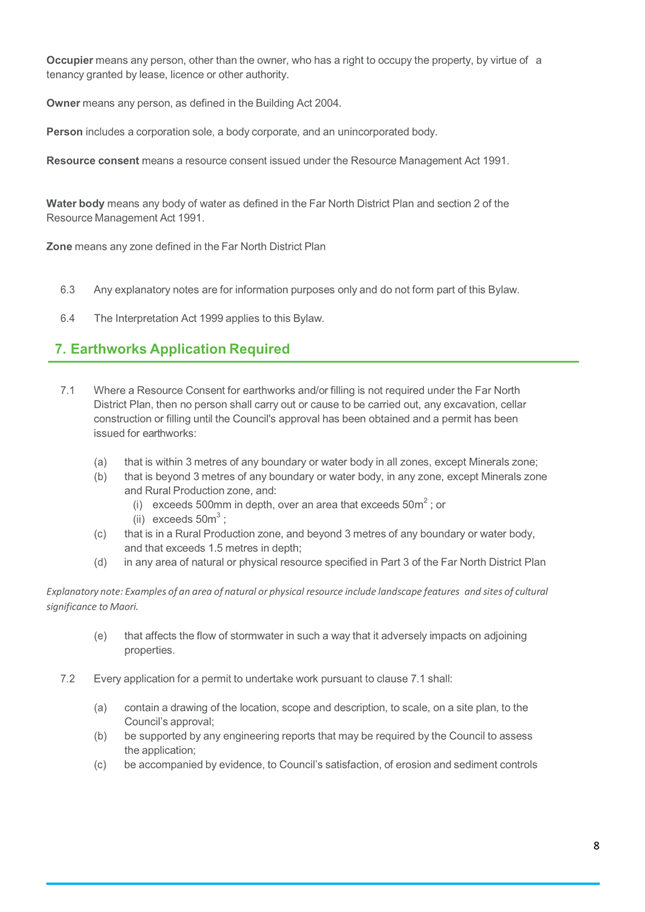
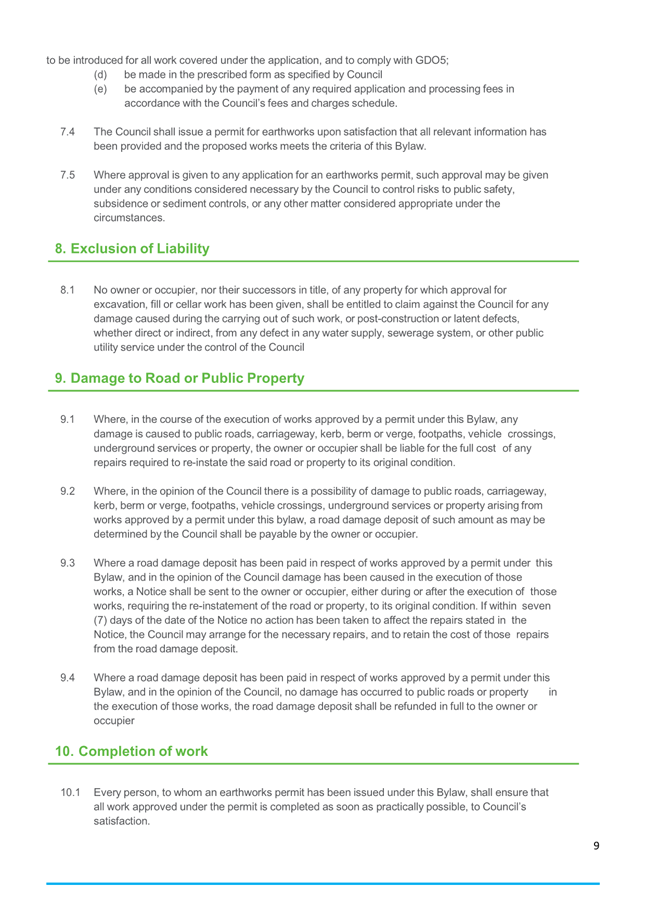
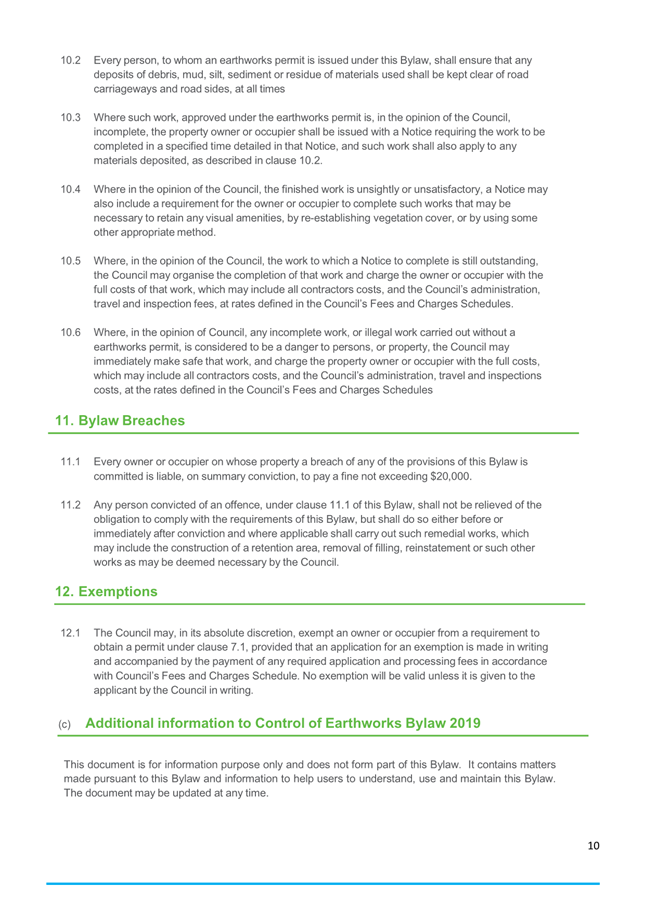
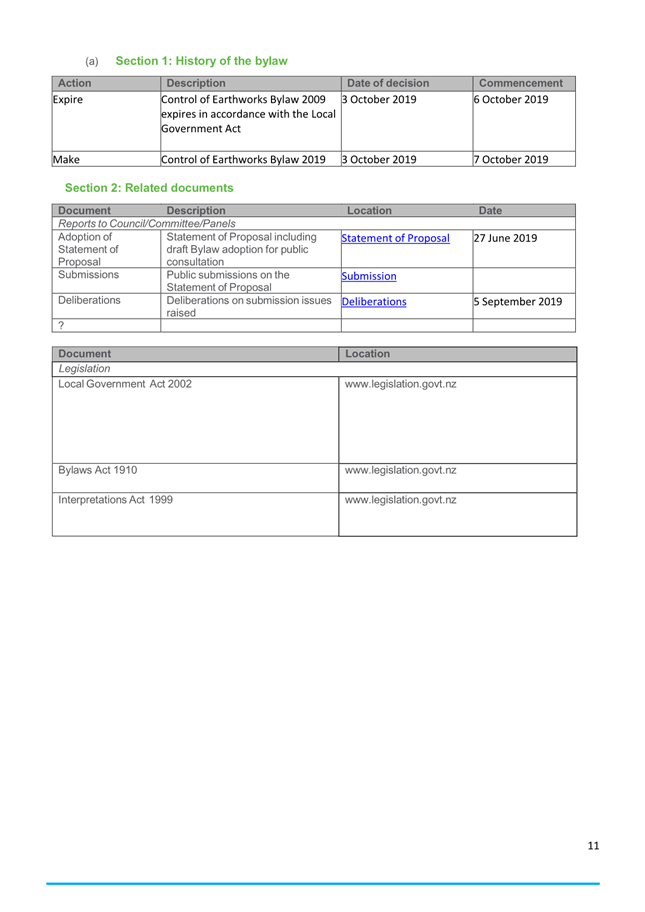
7.5 2024-27
National Land Transport Plan (NLTP) Outcomes
File
Number: A4952885
Author: Cushla
Jordan, Senior Asset Manager
Authoriser: Tanya
Proctor, Head of Infrastructure Strategy
Take Pūrongo / Purpose of the Report
The purpose of this report is to provide Council with an
update on the 2024-27 National Land Transport Plan subsidy funding for our Land
Transport activities and inform Council’s decisions regarding use of
remaining unsubsidised local share.
WhakarĀpopoto matua / Executive Summary
NZ Transport
Agency Waka Kotahi announced their final approved subsidy on 3rd
September 2024 for:
· Continuous programmes including walking and cycling and road safety
promotion
· Low cost, low risk activities include local road improvements and
walking and cycling improvements.
With subsidy
funding now confirmed, full option and impact analysis has been undertaken by
roading staff. Based on the analysis, staff have put forward
recommendations for Council to consider for the allocation of remaining
unsubsidised funding for the continuous programmes and low cost low risk
activities to ensure continuation of projects.
|
TŪTOHUNGA / RECOMMENDATION
That Council:
a) approves
option 1 for all recommended allocations of unsubsidised funding for:
i) continuous
programmes funding; and
ii) low-cost low risk investment funding
|
1) TĀhuhu kŌrero / Background
A funding budget was prepared for the Council to maintain,
operate, renew, and invest in transportation infrastructure which was submitted
into the Council’s Long-Term Plan 2024-27. The same funding request was
submitted to NZ Transport Agency Waka Kotahi for subsidy.
The subsidy application was made under NZ Transport Agency
Waka Kotahi Funding Assistance Rates policy through the National Land Transport
Fund for the 2024-27 period to co-invest in local roading transport activities.
The funding application was justified through the Northland
Regional Activity Management Plan 2024-2054: Transportation.
The Asset Management Plan supported a funding request not
only to maintain existing levels of service, but in key areas such as drainage,
sealed and unsealed roads, bridges and structures maintenance and renewals,
additional funding requirements were identified and applied for to implement
targeted improvement programmes.
NZ Transport Agency Waka Kotahi issued indicative
allocations:
· On 6th of June
2024 for continuous programmes (excluding road safety promotion, and footpath
and cycle path maintenance) that was $16.015 million lower than the bid made in
December 2023,
· On 2nd August 2024
for the remaining continuous programmes for road safety promotion, and footpath
and cycle path maintenance that was $5.973 million lower that the bid made in
December 2023.
The funding application is classified into various activity
classes as defined in the Government Policy Statement on Land Transport. The
activity classes are high-level groupings of outputs, e.g., Local Road Pothole
Prevention, Local Road Operations etc.
2) matapaki me NgĀ KŌwhiringa /
Discussion and Options
2.1 Requested Funding budget for 2024-27 National Land
Transport Plan vs Approved Subsidy
The funding budget prepared for the 2024-27 National Land
Transport Plan versus the NZ Transport Agency Waka Kotahi approved subsidy of
3rd September is shown below in Table 1.
This section contains details of funding outcomes for the
specific funding categories of:
• Continuous
programmes including Local Road Improvements, Walking and Cycling and Road
Safety Promotion
• Low
Cost Low Risk
Table 1 - Comparison of 3-year funding request versus
approval
|
Far North District Council
Summary of 3 Year Funding Budget Request and NZTA Subsidy Funding approval
|
2024-27 NLTP Funding Budget Request $
|
2024-27 NLTP NZTA Approved Subsidy $
|
2024-27 NLTP Difference (Approved -
Requested) $
|
|
Pothole Prevention
|
103,107,431
|
97,300,002
|
5,807,429
|
|
Operations
|
53,953,470
|
47,285,001
|
6,668,469
|
|
Local Road Improvements - WC216 Bridges
|
11,540,045
|
8,000,001
|
3,540,044
|
|
Walking and Cycling
|
2,990,987
|
684,000
|
2,306,987
|
|
Road Safety Promotion
|
6,036,763
|
2,370,000
|
3,666,763
|
|
Total continuous programmes
|
177,628,696
|
155,639,004
|
21,989,692
|
|
|
|
|
|
|
Low-Cost Low Risk
|
54,477,982
|
8,750,000
|
45,727,982
|
Figure 1 - Comparison of 3-year funding request versus
approval
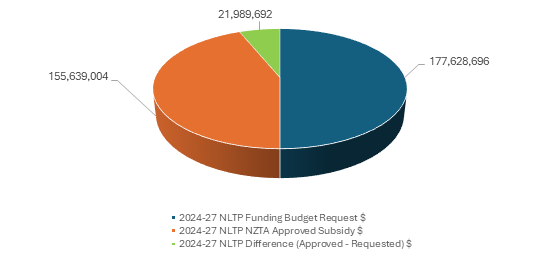
Continuous Programmes - Local Road Pothole Prevention
Fund
Table 2 - Percentage of funding approved against request
for Pothole Prevention
|
W/C
|
Description
|
%
|
|
111
|
Sealed Pavement Maintenance
|
99%
|
|
112
|
Unsealed Pavement Maintenance
|
96%
|
|
113
|
Routine Drainage Maintenance
|
99%
|
|
211
|
Unsealed Road Metalling
|
89%
|
|
212
|
Sealed Road Resurfacing
|
92%
|
|
213
|
Drainage Renewals
|
90%
|
|
214
|
Sealed Road Pavement Rehabilitations
|
99%
|
Continuous Programmes - Local Road Operations
Table 3 - Percentage of funding approved against request
for Operations
|
W/C
|
Description
|
%
|
|
114
|
Structures Maintenance
|
96%
|
|
121
|
Environmental Maintenance
|
96%
|
|
122
|
Network Services Maintenance
|
91%
|
|
140
|
Minor Events
|
0%
|
|
151
|
Network and Asset Management
|
90%
|
|
215
|
Structures Component Replacement
|
67%
|
|
222
|
Traffic Services Renewals
|
89%
|
Figure 2 - Comparison of Continuous Programmes
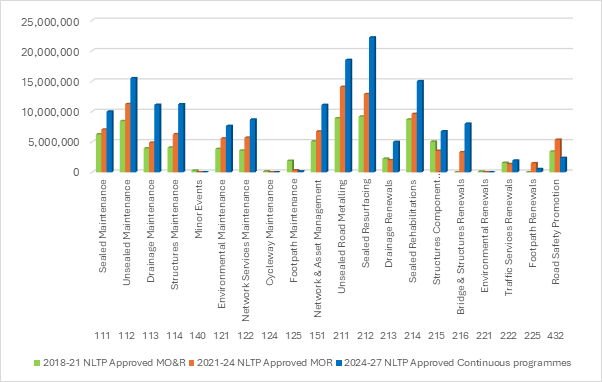
Local Road Improvements
69% of councils funding request was approved for Local Road
Improvements. This activity class is for full replacement of bridge and
structures and requires a Present Value End of Life analysis to be completed
for final sign off from NZ Transport Agency Waka Kotahi. Council’s
annual bridge inspections inform future forward works programmes for this
activity class.
Walking and Cycling
23% of councils funding request was approved for subsidy
under Walking and Cycling.
Road Safety Promotion
Figure 3 - Comparison of Road Safety Promotion Funding
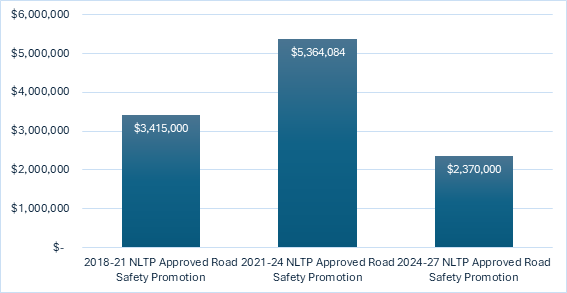
Low-Cost Low Risk Investment Funding
Figure 4 - Comparison of Low-Cost Low Risk Road Investment Funding
2.2 Local share of funding for Continuous programmes and
Low-Cost Low Risk Investment Activities
Based upon the NZ Transport Agency Waka Kotahi subsidy
funding approvals, the recommendations presented below, which consider the
local share portion of the Long Term Plan that has not received subsidy
funding.
Refer to Appendix A which provides a detailed breakdown of
the 3 years of approved National Land Transport Plan funding for Continuous
Programmes.
Refer to Appendix B which provides a detailed breakdown of
the 3 years of approved funding for Low Cost Low Risk.
Table 4 - 3-year funding request versus approval and
available Local Share
|
Far North District Council
Summary of 3 Year Funding Budget Request and NZTA Subsidy Funding approval
|
2024-27 NLTP Funding Budget Request
$
|
2024-27 NLTP NZTA Approved Subsidy
$
|
2024-27 NLTP Difference (Approved -
Requested)
$
|
|
2024-27 Surplus Local Share
$
|
Recommendation No.
|
|
Pothole Prevention
|
103,107,431
|
97,300,002
|
5,807,429
|
|
1,684,155
|
4
|
|
Operations
|
53,953,470
|
47,285,001
|
6,668,469
|
|
1,933,856
|
4
|
|
Local Road Improvements
|
11,540,045
|
8,000,001
|
3,540,044
|
|
1,026,613
|
2
|
|
Walking and Cycling
|
2,990,987
|
684,000
|
2,306,987
|
|
669,026
|
2
|
|
Road Safety Promotion
|
6,036,763
|
2,370,000
|
3,666,763
|
|
1,063,361
|
3
|
|
Total continuous programmes
|
177,628,696
|
155,639,004
|
21,989,692
|
|
6,377,011
|
|
|
|
|
|
|
|
|
|
|
Low-Cost Low Risk
|
54,477,982
|
8,750,000
|
45,727,982
|
|
13,261,115
|
5 to 11
|
Option 1 – Approve all recommended allocations of
unsubsidised funding
Continuous Programmes Funding
There is an overall local share surplus in the 3-years under
continuous programmes of $6,377M, however, in 2024-25 (Year 1) there is a
shortfall of local share of $54K under the operational activities within
Council’s policy.
Recommendations for the redistribution of local share for
continuous programmes are provided below:
1. Reallocate
$54k of the approved Long Term Plan budget for unsubsidised Tree Trimming to
enable Council to match NZ Transport Agency Waka Kotahi’s operational
subsidy.
2. That
the surplus local share remains for Walking and Cycling of $669k and that the
Local Road Improvements of $1,026M be reallocated to Walking and Cycling to
enable footpath maintenance and renewals programmes to be completed. The
approved allocation compared to councils funding request for was reduced by 77%
over the 3-years from NZ Transport Agency Waka Kotahi.
3. That
the surplus local share remains for Road Safety Promotion of $1,063M to enable
Far North Rural Education Activities Programme (REAP) to undertake more
programmes. The approved allocation compared to councils funding request
was reduced by 61% over the 3-years from NZ Transport Agency Waka Kotahi.
4. That
the surplus local share remains under each work activity within the Pothole
Prevention of $1,684M and operations of $1,933M activity classes as identified
in Tables 2 and 3 above, to help complete targeted programmes defined in the
Activity Management Plan.
Low-Cost Low Risk Investment Funding
There is an overall local share surplus in the 3 years under
Low-Cost Low Risk of $13,261M. Refer to Appendix B which provides a
detailed breakdown of the 3 years of approved National Land Transport Plan
funding for Low-Cost Low Risk.
Additional Resilience Funding to be approved by NZTA
· $100 million Resilience Fund under Low-Cost
Low Risk is for Resilience or Associated Improvement projects only that are
<$2M. NZ Transport Agency Waka Kotahi have not yet advised on how to
apply for funding from this Fund.
· $140 million Transport Resilience
Fund ($20M annually over 7-years) and has an 85% Funding Assistance Rate.
Council has put forward six resilience sites and is currently working through
this approval from NZ Transport Agency Waka Kotahi.
Recommendations for the redistribution of local share for
Low-Cost Low Risk are provided below:
5. That the projects identified in
Table 5 below remain to enable Council to uptake funding under the Additional
Resilience Funds and redistribute the $4.0M in 25-26 and $4.0M in 26-27 for
Resilience Improvements across the 3-years to balance the Low-Cost Low Risk
programme:
Table 5 – Associated Improvements and Resilience
|
Activity name
|
Location
description
|
Requested budget
this NLTP period by year
|
|
Total cost $'s
2024/25
|
Total cost $'s
2025/26
|
Total cost $'s
2026/27
|
|
Associated
Improvements
|
Sites
determined on the 2021-24 FWP for Rehabilitation sites
|
480,000
|
480,000
|
480,000
|
|
Resilience
Improvements
|
Scope
and locations confirmed on various locations across the district on the
roading network
|
0
1,828,643
|
4,000,000
3,216,704
|
4,000,000
2,954,653
|
6. The School Zone Improvements did
not receive NZ Transport Agency Waka Kotahi funding. Under both the
current and proposed speed limit rule, all schools are required to be treated
by 2027. Potential funding required is $1.5M which assumes that all
schools already completed require change to electronic variable signage.
Refer to Appendix D which provide a breakdown of schools that will require new
or re-worked treatments should the proposed rule move forward.
7. The Speed Management did not
receive NZ Transport Agency Waka Kotahi funding. The council has elected
to consult on the Russell catchment. Consultation will be completed at
the end of September 2025 and elected members will have an option to move the
entire catchment, or a portion of it, forward for implementation.
Potential funding required is $400K.
8. The Walking and Cycling
(footpaths) did not receive NZ Transport Agency Waka Kotahi funding.
Consideration be given for small amount of funding for each of the Community
Board Wards. Potential funding required is $900K (equates to $300K per ward).
9. The lighting improvements did
not receive NZ Transport Agency Waka Kotahi funding. Consideration be
given to fund some lighting improvements, in particular unlit pedestrian
crossings (pedestrian safety improvement). Potential funding required is
$350k (equates to $35k per crossing).
10. The local safety improvements did not
receive NZ Transport Agency Waka Kotahi funding. Consideration be given
to fund minor safety improvements to enable staff to respond to minor safety
requests such as improvements to road-to-road walkway safety and security,
accessibility improvements such as ramps or mobility parking, minor
improvements for school travel, minor intersection improvements such as line
marking, etc. These are projects that could be let through a construction panel
or to small local contractors for minor improvements in their own
community. Potential funding required $300k (equates to $100k per year).
11. That funding be provided for reversal of
previously implemented speed limits. Under the proposed rule only
widespread 30’s around schools and urban connectors will require
changing. Refer to Appendix E which indicates the number of urban
connectors that may require changing (five roads). Assuming signage
changes around the school zones accounted for above it is suggested allowance
be made to make these changes. Potential funding required is $50K.
Refer to Appendix C which provides a detailed breakdown of
the 3-years of redistribution of local share.
Option 2 - Approve most of the recommended allocations
and outline changes to some recommendations
Council may want to consider approving unbudgeted funding
for only the highest-priority projects. This ensures that critical projects
will be delivered while limiting the financial impact on Council’s
budget. This will mean that projects will either be delayed or not completed.
Option 3 – Do nothing
Proceed without providing any additional Council funding to
cover the NZ Transport Agency Waka Kotahi subsidy shortfall. This avoids
increasing Council’s financial commitment, maintaining the current budget
allocation. This will require a reassessment of the scope of the projects to
fit within the revised budget and communicate changes and impacts to
stakeholders, including the community.
TAKE TŪTOHUNGA
/ REASON FOR THE RECOMMENDATION
Based on the funding shortfall and the potential impacts on
project delivery, it is recommended that Council consider Option 1 (Approve all
recommended allocations of unsubsidised funding). This option allows the
projects which were put forward for funding but were not approved, to proceed
as planned.
3) PĀnga PŪtea me ngĀ
wĀhanga tahua / Financial Implications and Budgetary Provision
Local share of funding for Continuous programmes and
Low-Cost Low Risk Investment Activities as outlined in detail under Section 2.
Āpitihanga
/ Attachments
1. APPENDIX
A - Continuous Programmes funding - A5003911 ⇩ 
2. APPENDIX
B - Approved Low-Cost Low Risk Programme 2024-27 - A5003912 ⇩ 
3. APPENDIX
C - Redistribution of Local Share for Low-Cost Low Risk - A5003913 ⇩ 
4. APPENDIX
D - FNDC 2024 Speed Limits Rule - A5003903 ⇩ 
5. APPENDIX
E- Speed Limits Urban Connectors - A5003910 ⇩ 
Hōtaka Take Ōkawa / Compliance Schedule:
Full consideration has been given to the provisions of the
Local Government Act 2002 S77 in relation to decision making, in particular:
1. A
Local authority must, in the course of the decision-making process,
a) Seek
to identify all reasonably practicable options for the achievement of the
objective of a decision; and
b) Assess
the options in terms of their advantages and disadvantages; and
c) If
any of the options identified under paragraph (a) involves a significant
decision in relation to land or a body of water, take into account the
relationship of Māori and their culture and traditions with their
ancestral land, water sites, waahi tapu, valued flora and fauna and other
taonga.
2. This
section is subject to Section 79 - Compliance with procedures in relation to
decisions.
|
He Take Ōkawa /
Compliance Requirement
|
Aromatawai Kaimahi /
Staff Assessment
|
|
State the level of significance (high or low) of the
issue or proposal as determined by the Council’s
Significance and Engagement Policy
|
The decisions or matters of this report do trigger the
significance criteria
outlined in Council’s Significance and Engagement Policy.
|
|
State the relevant Council policies (external or
internal), legislation, and/or community outcomes (as stated in the LTP) that
relate to this decision.
|
This matter pertains to the Local Government Act, Long
Term Plan (LTP), Regional Land Transport Plan (RLTP),
National Land Transport Programme (NLTP).
|
|
State whether this issue or proposal has a District wide
relevance and, if not, the ways in which the appropriate Community
Board’s views have been sought.
|
This matter has District wide relevance and all members
of the community have been given an opportunity to provide their feedback
through the LTP submissions process.
|
|
State the
possible implications for Māori and how Māori have been provided
with an opportunity to contribute to decision making if this decision is
significant and relates to land and/or any body of water.
State the
possible implications and how this report aligns with Te Tiriti o Waitangi /
The Treaty of Waitangi.
|
Iwi and hapu have not been directly consulted with,
however, all members of our community have been given an opportunity to
provide feedback through the LTP submissions process.
|
|
Identify persons likely to be affected by or have an
interest in the matter, and how you have given consideration to their views
or preferences (for example – youth, the aged and those with
disabilities).
|
All members of our community will likely be affected.
|
|
State the financial implications and where budgetary
provisions have been made to support this decision.
|
The financial implications are due to NZ Transport
Agency Waka Kotahi not funding the budget funding request which results in
surplus local share available over the 3 years.
|
|
Chief Financial Officer review.
|
The Chief Financial Officer has not reviewed this
report.
|
|
Ordinary Council Meeting Agenda
|
12 December 2024
|
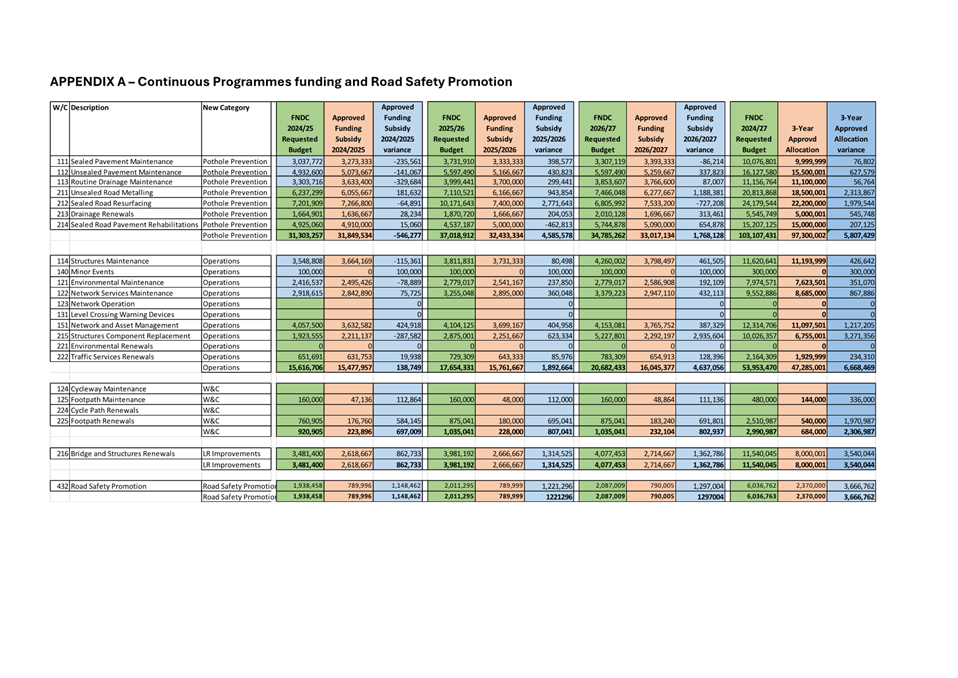
|
Ordinary Council Meeting Agenda
|
12 December 2024
|
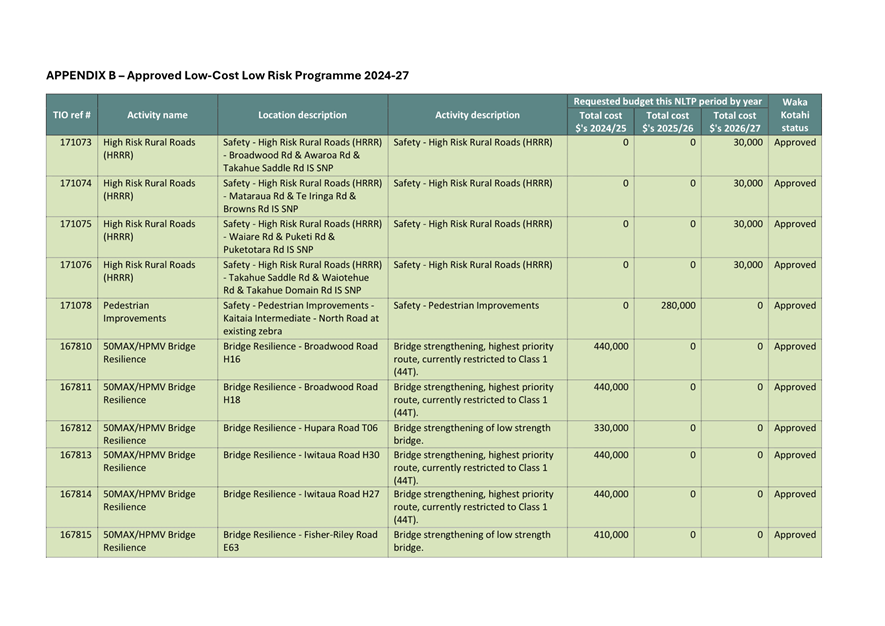
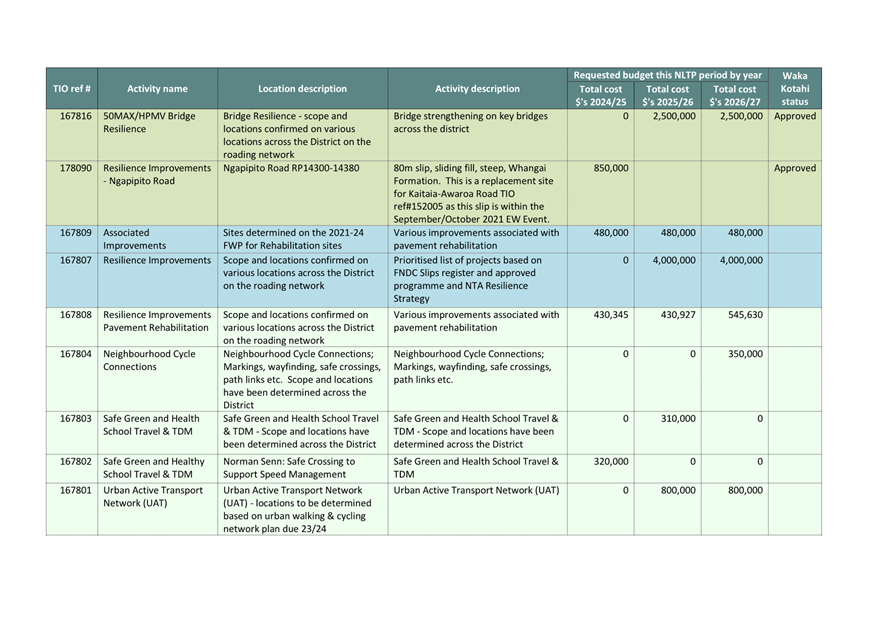
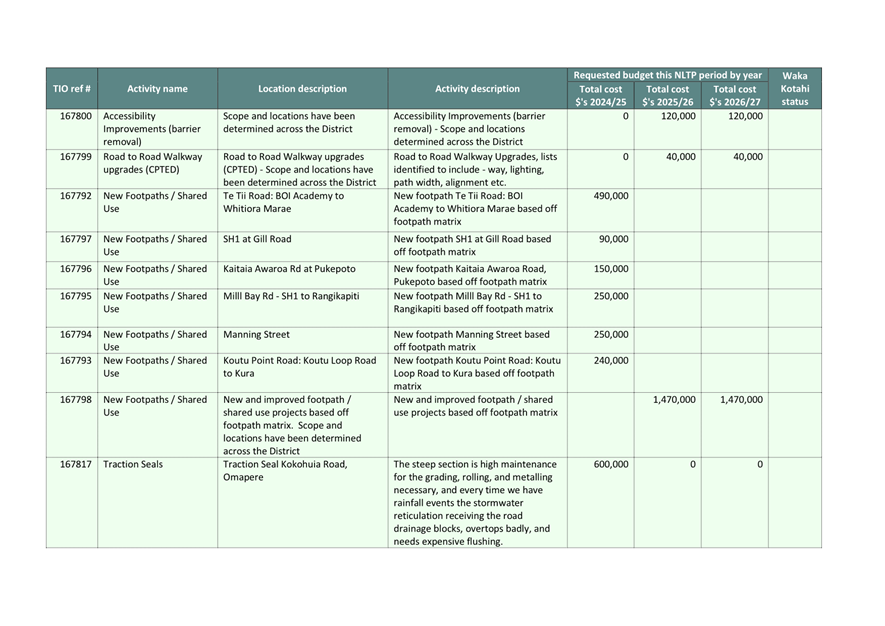
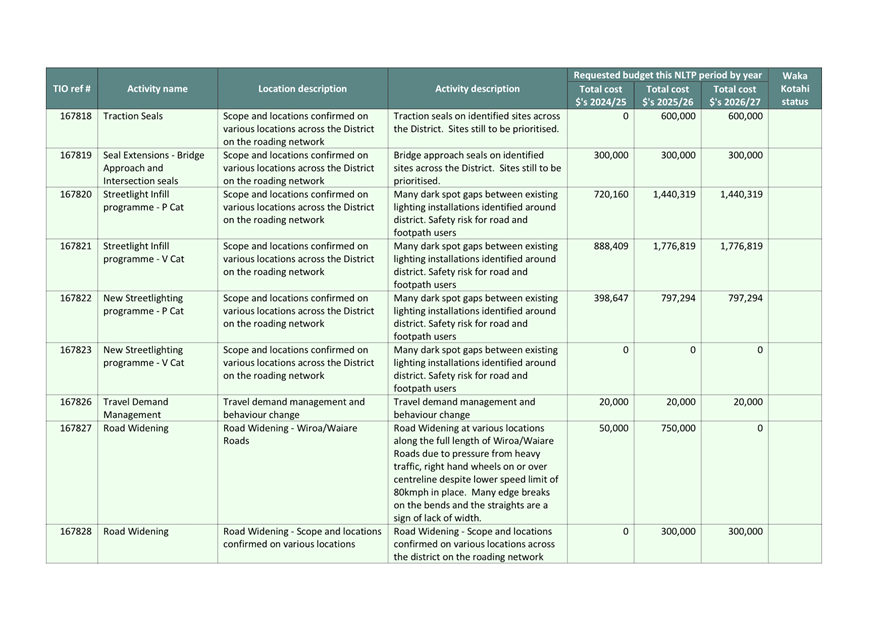
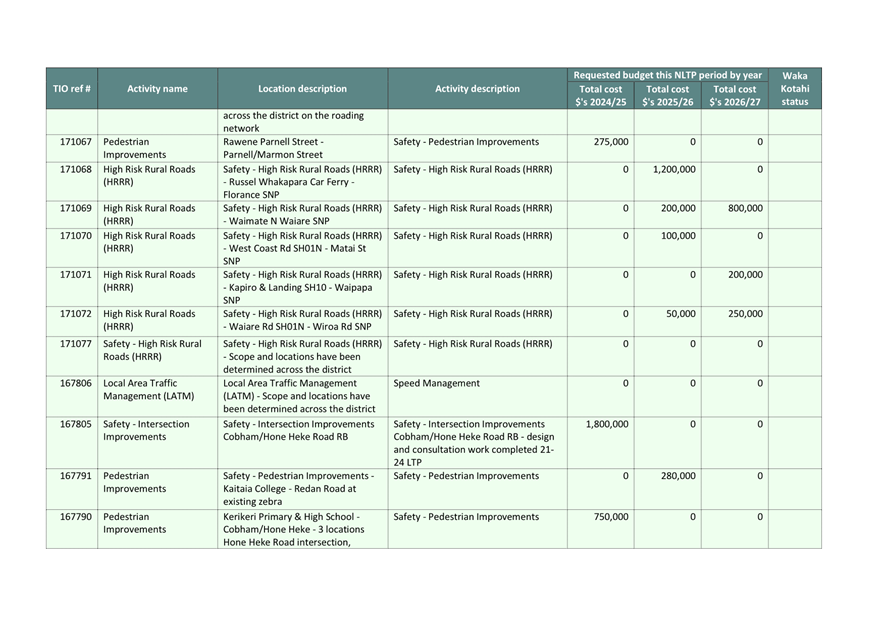

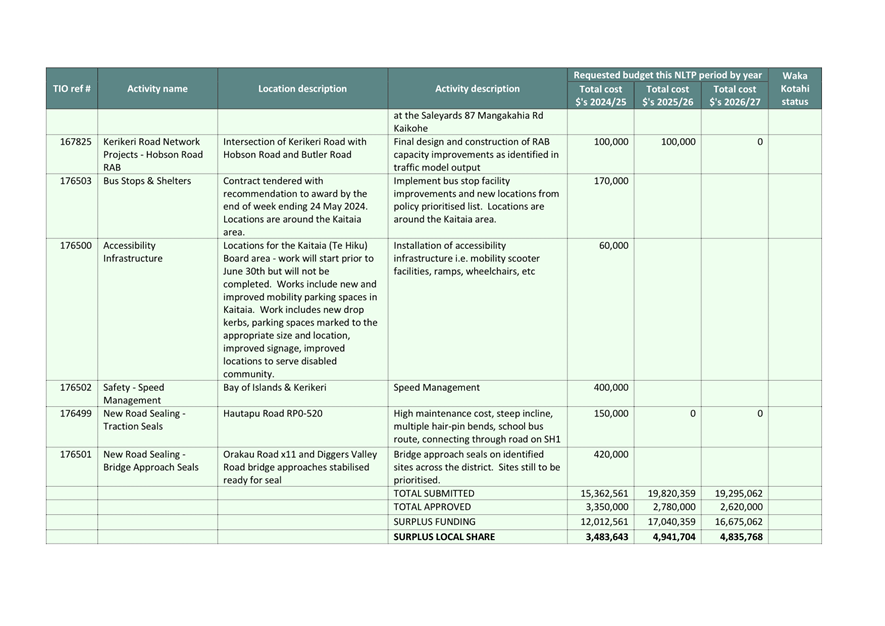
|
Ordinary Council Meeting Agenda
|
12 December 2024
|
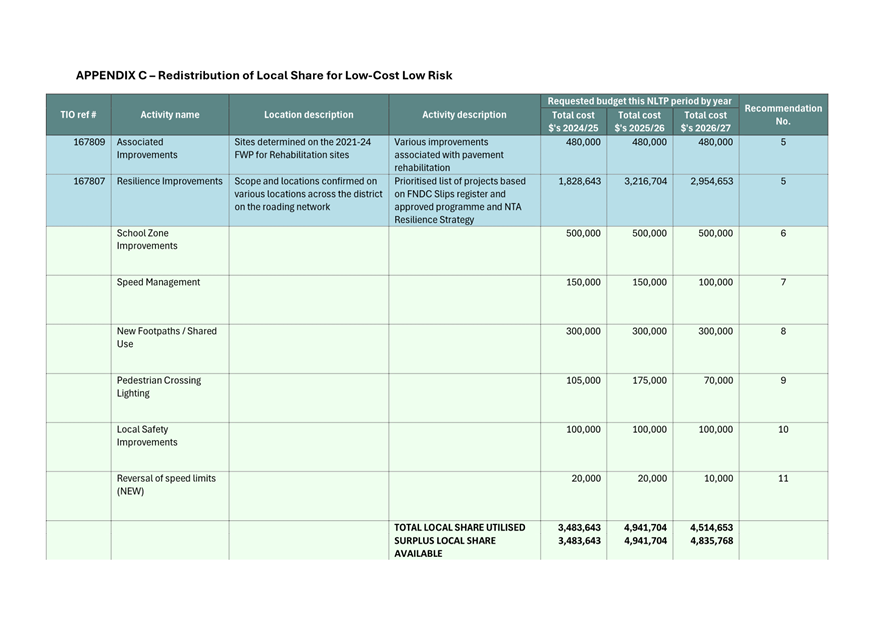
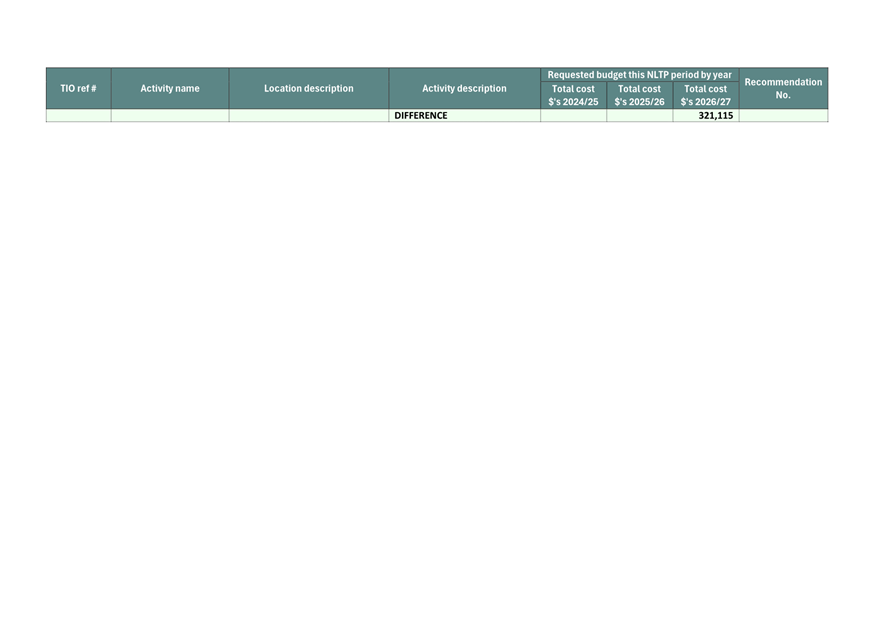
|
Ordinary Council Meeting Agenda
|
12 December 2024
|
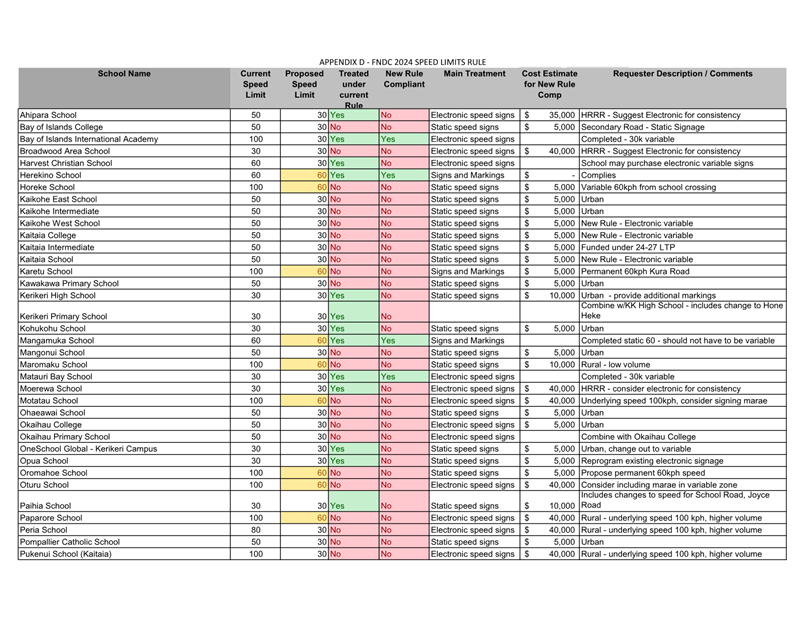
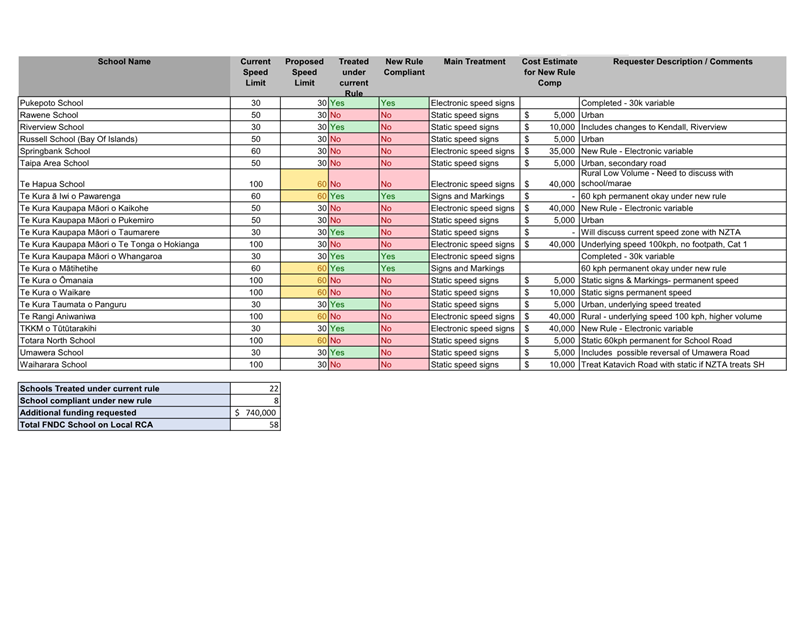
|
Ordinary Council Meeting Agenda
|
12 December 2024
|

7.6 Transfer
of Independently Qualified Person's (IQP's)
File
Number: A4934061
Author: Oliver
Godden, Manager - Building Services
Authoriser: Trent
Blakeman, Acting Group Manager - Delivery and Operations
Take Pūrongo / Purpose of the Report
To seek council approval
to transfer the powers of the Territorial Authority to register IQPs to Auckland
Council, post consultation.
WhakarĀpopoto matua / Executive Summary
The
consultation has been complete, and the summary of the consultation has been
attached that out lines that feedback, but in general the consensus is to
transfer the powers to Auckland Council to manage the IQP register. no further
action is required by council.
|
tŪtohunga
/ Recommendation
That Council approve the transfer of powers from
the Far North District Council to Auckland Council to administer the IQP
register for IQP’s working in our district.
|
1) TĀhuhu kŌrero / Background
A
report was considered by Council 14 March 2024. A copy of the report is
available as item 6.3 at https://infocouncil.fndc.govt.nz/RedirectToDoc.aspx?URL=Open/2024/03/CO_20240314_AGN_2730_AT_WEB.htm. The resolution of Council was:
That
Council:
a) adopt
the statement of proposal which is subject to s.83 the Special Consultative
Procedure Process under the Local Government Act 2002.
b) resolve
to seek public submissions on the proposal between 2 April 2024, and 30 April
2024, in accordance with the Special Consultative Procedure process.
c) authorise
the Chief Executive to make any necessary drafting, typographical or
presentation corrections to the attached supporting documents prior to
consultation.
This
consultation has close, and all submissions have been heard at the meeting on
the Wednesday 26 June
2024, for a proposal to transfer some of its powers to Auckland Council under
the Building Act 2004 (BA) in relation to the approval of Independently
Qualified Persons (IQP). IQPs are those parties accepted by Council as being
qualified to carry out responsibilities in relation to building warrants of
fitness (BWoF).
The proposed transfer only relates to the
approval of IQPs, the maintenance of the register of IQPs and the setting of
fees for such approval and on-going registration. The responsibilities of
ensuring that buildings have current BWoFs, and their auditing will remain with
Far North District Council.
It
is considered that there are several positive outcomes to be gained through the
transfer, including cost savings, greater opportunities for Northland based
IQPs to work within the Auckland region, a better experience for IQPs and
building owners through the modern Auckland web-based system, whilst reducing
potential risk through a robust assessment of IQPs. It is acknowledged that
some parties may see such a transfer as a loss of local autonomy. A joint
regional approach such as the Waikato example was considered
but would not give any advantages (efficiencies or technical) that can’
be gained through the simpler transfer as proposed.
Section
233 of the BA provides for a TA to transfer its functions, duties, or powers to
another TA subject to the use of the special consultative procedure in section
83 of the Local Government Act 2002.
2) matapaki me NgĀ KŌwhiringa /
Discussion and Options
The options
were provided via the Statement of proposal in a previous Council meeting and
the statement of proposal has been attached for convenience, the transfer of
power to Auckland is the most cost effective and rational action to Take.
TAKE TŪTOHUNGA
/ REASON FOR THE RECOMMENDATION:
The
recommendation will provide the best outcome in terms of the level of
competence of those reviewing the IQP’s that will be working in our
district and the overall cost of administering the register as we will bear
none of those costs.
3) PĀnga PŪtea me ngĀ
wĀhanga tahua / Financial Implications and Budgetary Provision
Nil
Āpitihanga
/ Attachments
1. Consultation
Summary for IQP Public Engagement - A4999318 ⇩ 
Hōtaka Take Ōkawa / Compliance Schedule:
Full consideration has been given to the provisions of the
Local Government Act 2002 S77 in relation to decision making, in particular:
1. A
Local authority must, in the course of the decision-making process,
a) Seek
to identify all reasonably practicable options for the achievement of the
objective of a decision; and
b) Assess
the options in terms of their advantages and disadvantages; and
c) If
any of the options identified under paragraph (a) involves a significant
decision in relation to land or a body of water, take into account the
relationship of Māori and their culture and traditions with their
ancestral land, water sites, Wahi tapu, valued flora and fauna and other
taonga.
2. This
section is subject to Section 79 - Compliance with procedures in relation to
decisions.
|
He Take Ōkawa /
Compliance Requirement
|
Aromatawai Kaimahi /
Staff Assessment
|
|
State the level of significance (high or low) of the
issue or proposal as determined by the Council’s
Significance and Engagement Policy
|
Low significance.
|
|
State the relevant Council policies (external or
internal), legislation, and/or community outcomes (as stated in the LTP) that
relate to this decision.
|
This is a regulatory function, and the transfer of
powers is necessary to ensure an enduring solution to the management of the
IQP register which in term has a higher level of competence reviewing
IQP’s that work in our district there by aiding in safer building for
all.
|
|
State whether this issue or proposal has a District wide
relevance and, if not, the ways in which the appropriate Community
Board’s views have been sought.
|
Apart from the consultation that has bee held to the
whole community there has been no direct interaction with community boards,
with the except of those in the sitting council that have been privy to this
process.
|
|
State the
possible implications for Māori and how Māori have been provided
with an opportunity to contribute to decision making if this decision is
significant and relates to land and/or any body of water.
State the
possible implications and how this report aligns with Te Tiriti o Waitangi /
The Treaty of Waitangi.
|
This an issue relating to the transfer of powers under
section 223 of the BA 2004 as a regulatory function and include no land or
water bodies and has no treaty of Waitangi implications.
|
|
Identify persons likely to be affected by or have an
interest in the matter, and how you have given consideration to their views
or preferences (for example – youth, the aged and those with
disabilities).
|
Consultation has been completed, and a summary of that
consultation is attached.
|
|
State the financial implications and where budgetary
provisions have been made to support this decision.
|
Nil
|
|
Chief Financial Officer review.
|
Done
|
|
Ordinary Council Meeting Agenda
|
12 December 2024
|

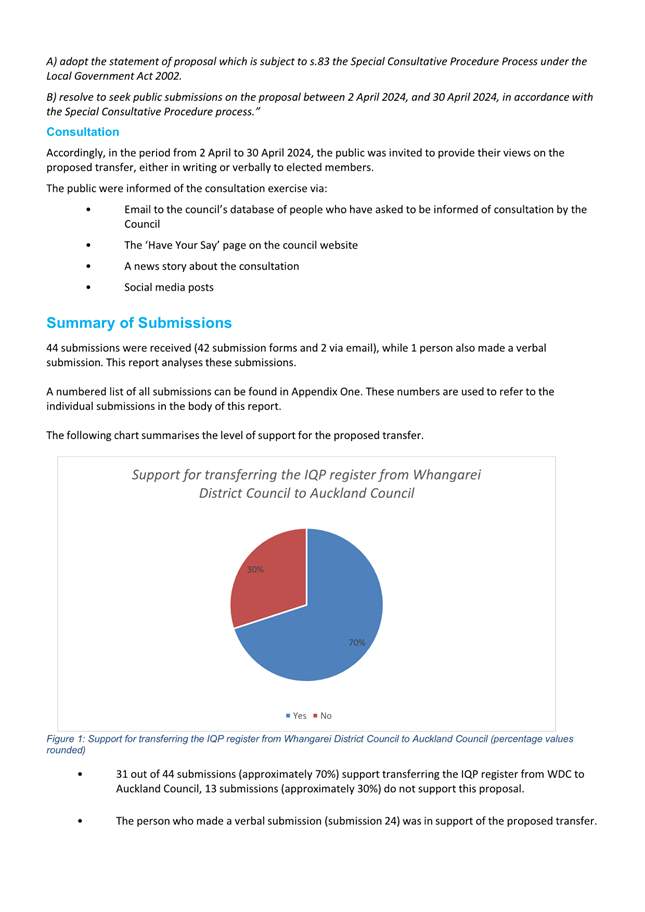
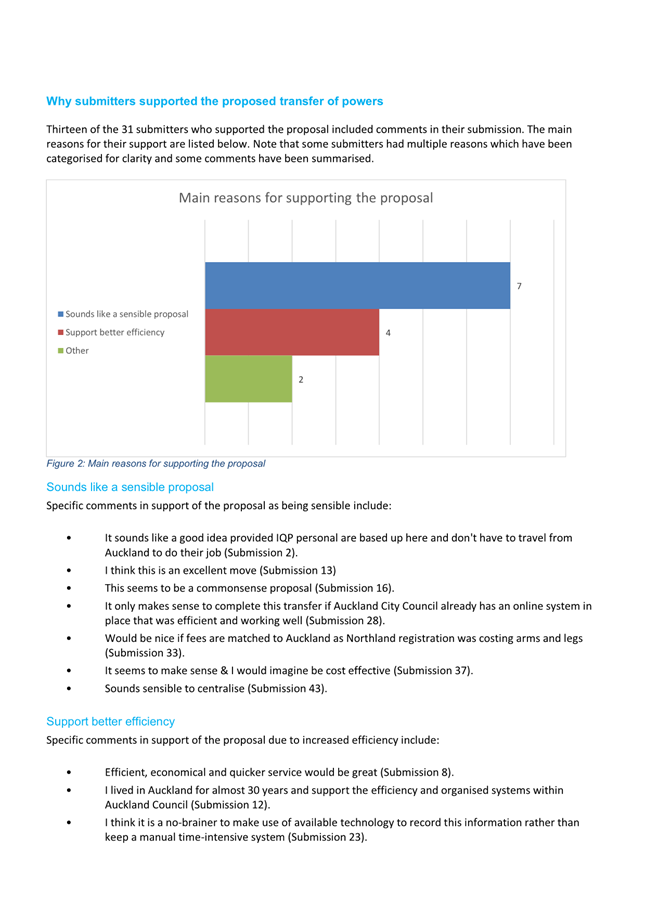
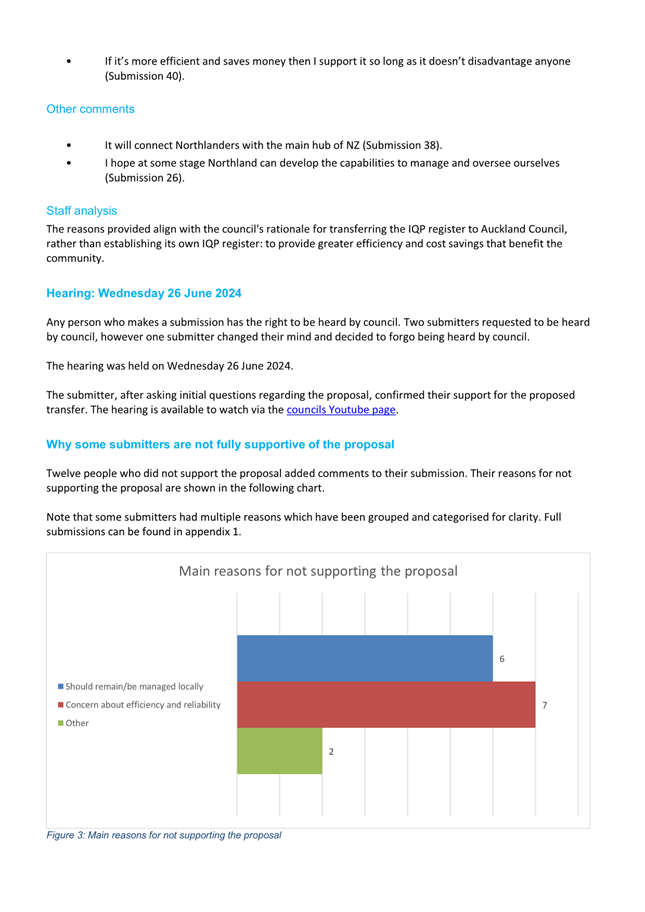
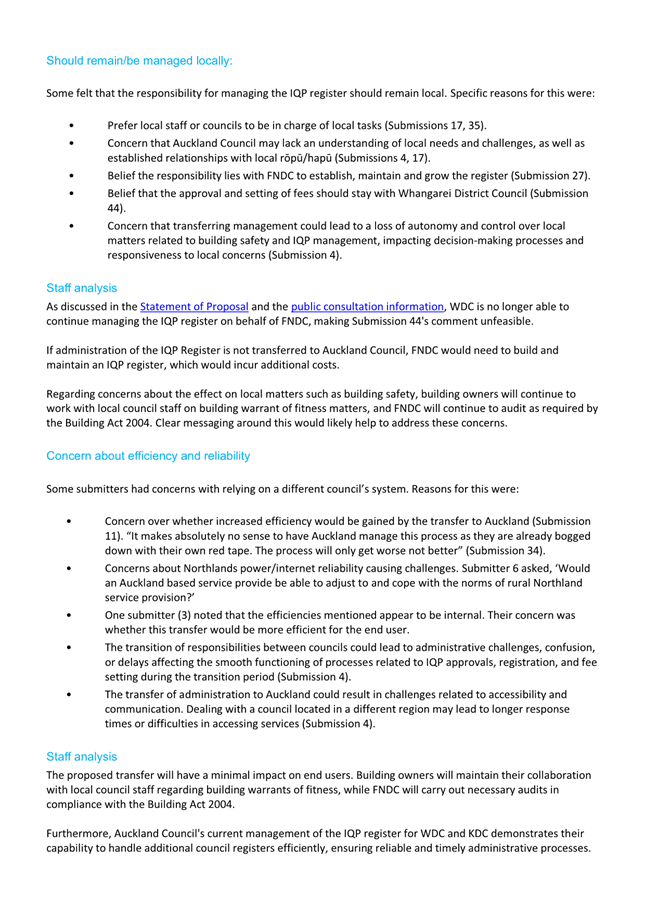
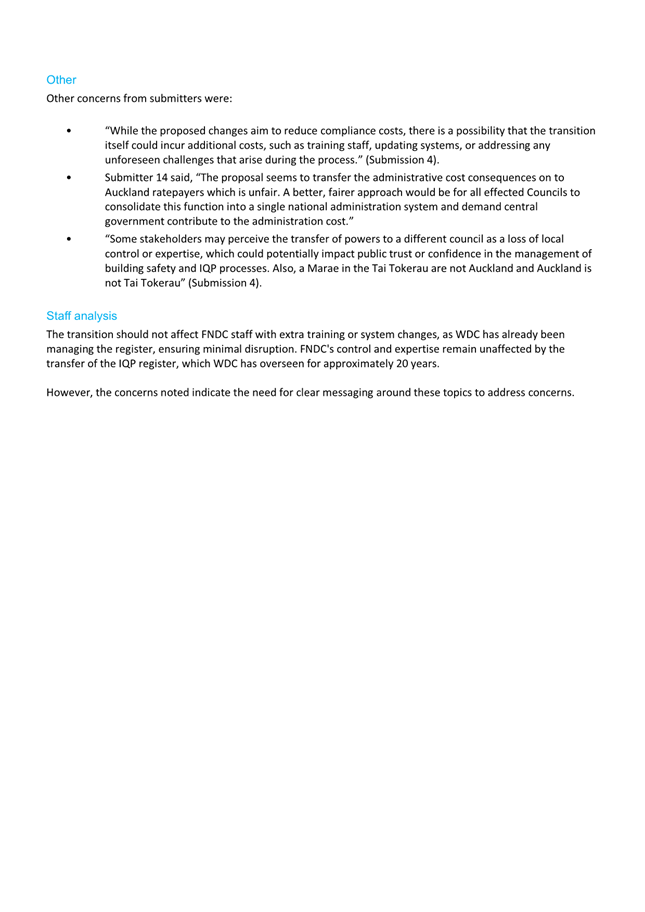
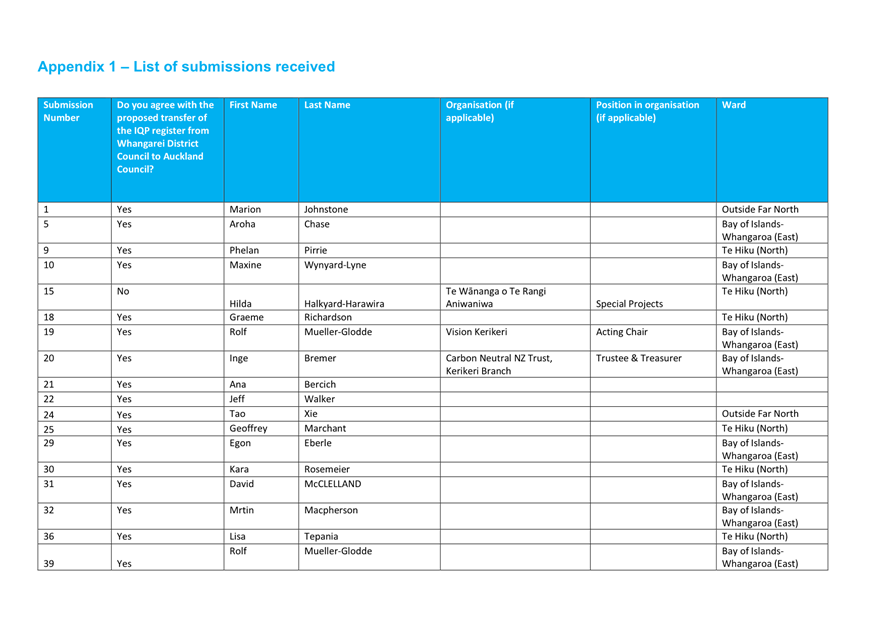

7.7 Development
of a Local Alcohol Policy
File
Number: A4950769
Author: Donald
Sheppard, Policy Advisor
Authoriser: Angie
Thomas, Acting Chief Financial Officer
Take Pūrongo / Purpose of the Report
To seek approval to develop a Local Alcohol Policy (LAP) for
the district.
WhakarĀpopoto matua / Executive Summary
· The alcohol industry provides some positive social and economic
benefits for the district, however, there are a range of concerning problems
and harms associated with the sale and consumption of alcohol in the Far North
· The Far North District Council does not currently have a Local
Alcohol Policy
· Developing a LAP will enable the Council to address these problems
and harms by providing policy guidance to the District Licensing Committee
(DLC) to help inform its alcohol licensing decisions.
|
tŪtohunga
/ Recommendation
That Council approve the development of a Local
Alcohol Policy (LAP) for the district.
|
1) TĀhuhu kŌrero / Background
What is a LAP?
A LAP is a set of policy guidelines made by a local council
in consultation with its community about the sale and supply of alcohol in its
district.
A LAP is made under the Sale and
Supply of Alcohol Act 2012 (the Act) and is intended to ensure:
· the sale, supply,
and consumption of alcohol occurs safely and responsibly
· alcohol-related
harm is minimised.
A LAP applies to licensing decisions and covers matters such
as the trading hours, location, and density of licensed premises. A LAP may
have different conditions for different areas in the district.
Under sections 105 and 131 of the Act the District Licensing
Committee (DLC) “must have regard to” a LAP when issuing or
renewing licences.
LAP history in the Far North
In 2014/15 Council developed a Provisional LAP that was
legally challenged (see Attachment Four). In 2018, due to mounting legal costs,
Council decided to cease developing this LAP.
Supreme Court clarification of how LAP policies may be
justified
In May 2023, a Supreme Court judgement clarified that
policies in a LAP may be justified based on a “reasonable
likelihood” (rather than proof) it will reduce alcohol-related harm.
Changes to the Act in 2023
In August 2023 several amendments were made to the Act:
· the right of
parties to appeal against the LAP to the Alcohol Regulatory and Licensing
Authority (ARLA) was removed – this means that Council can develop a LAP
without the threat of legal challenges other than the possibility of a judicial
review that might consider whether Council acted within the powers given to it
by the Act
· Council does not
need to make a Provisional LAP – a draft LAP is sufficient for the
purposes of consultation and making the LAP
· changes to make it
easier for community members to contribute to DLC hearings:
o allowing “any
person” to object to a licence application, rather than just those with a
“greater interest” than the general public
o extending the time to make an
objection from 15 to 25 days after the public notice of a licence application
o parties can attend DLC
hearings remotely
o cross-examination is not
allowed (the DLC will test the evidence)
o tikanga may be incorporated
into proceedings and evidence may be presented in te reo Māori.
Community interest in developing a new LAP for the
district
In August 2023, given the changes to the Act, several
stakeholder groups asked the Council to recommence developing a LAP for the
district. These groups included NZ Police, the Medical Officer of Health,
Council’s Alcohol Licencing Inspectors, Ministry of Social Development
(MSD), and the Te Hiku Social Accord/ Whiria Te Muka.
Research into developing a LAP
On 16 November 2023 Council authorised the Policy &
Bylaws Team to conduct research into making a new LAP (Agenda
item 6.4 document number A4437661, pages 46 - 56 refers) and the
attached research report covers the findings of this research (see Attachment
One).
Attachment Two is a PowerPoint presentation prepared for the
workshop with elected members held on 15 October 2024 which summarises the
research findings.
Attachment Three is a report analysing the options for
developing a LAP.
Attachment Four is the Provisional LAP developed in 2015
– this is not particularly relevant as the Act requires Council to start
again with developing a new LAP.
NB. Under the Act, Council cannot recommence developing the
previous Provisional LAP, as consultation with the public on its content
occurred more than six years ago, in 2014.
2) matapaki me NgĀ KŌwhiringa /
Discussion and Options
Relevant legislation
Under section 10 of the Local Government Act 2002, the
purpose of local government is to “promote the social, economic,
environmental, and cultural wellbeing of communities, in the present and for
the future”. A LAP could address all four “wellbeings” as
discussed in section 4.1 of the Research Report. NB. Central government
has recently announced that it may amend the Local Government Act, including
the purpose of local government. If this occurs, staff will review all policies
and make recommendations to Council to amend accordingly. Central Government
has indicated they will provide further information by the end of 2024.
Currently there is no Bill before parliament. Council must continue to adhere
to existing legislation.
The Act empowers a territorial authority to make a LAP
relating to the sale, supply, and consumption of alcohol within its district.
Reflecting the object of the Act stated in section 4(1), a
LAP’s purpose is to ensure:
· the sale,
supply and consumption of alcohol is undertaken safely and responsibly
· the harm
caused by the excessive or inappropriate consumption of alcohol is minimised.
Section 77 of the Act provides for a LAP to include policies
on any or all of the following licensing matters:
a) location of licensed
premises by reference to broad areas
b) location of licensed
premises by proximity to premises of a particular kind or kinds – for
example, how close liquor stores can be to each other
c) location of licensed
premises by proximity to facilities of a particular kind or kinds – these
facilities could include ‘sensitive sites’ such as educational
facilities, places of worship, marae and/or medical practices
d) whether further licences
(or licences of a particular kind or kinds) should be issued for premises in
the district, or any part of the district – the Council may impose a cap
or ‘sinking lid’ on the issue of further licences in particular
towns or across the district
e) maximum trading hours
– default hours are stated in the Act. Council may reduce or increase
these hours to reflect community preferences
f) the issue of
licences, or licences of a particular kind or kinds, subject to discretionary
conditions – these are conditions that the DLC may or may not apply to
specific licensed premises and could cover areas such as noise control, outdoor
advertising of alcohol, and safety and security provisions
g) one-way door
restrictions – these restrictions allow patrons to leave on-licences such
as bars, taverns, pubs, and nightclubs but not to re-enter these premises after
a certain time.
LAPs are optional, but where a territorial authority has a
LAP, the DLC and ARLA must “have regard to” the LAP when
considering licence applications and renewals in the district.
What is required to develop a
LAP?
If Council wishes to develop a LAP, under section 78(1) of the
Act, it must prepare a draft LAP, having regard to:
a) the objectives and
policies of its District Plan
b) the number of licences
of each kind held for premises in its district, and the location and opening
hours of these premises
c) any areas in which
bylaws prohibiting alcohol in public places are in force
d) the demography of the
district’s residents
e) the demography of people
who visit the district as tourists or holidaymakers
f) the overall health
indicators of the district’s residents
g) the nature and severity
of alcohol-related problems arising in the district.
The above areas are all discussed in the attached research
report.
Developing a draft LAP will require extensive engagement
and consultation
A LAP needs to reflect community preferences regarding the
sale and supply of alcohol in the district. This implies engaging with local
communities and stakeholder groups (including licensees) to understand their
preferences.
Under the Act, Council must:
· consult with the Police, Licencing Inspectors, and the Medical
Officer of Health regarding the content of the draft LAP;
· conduct public consultation on the draft LAP using the Special
Consultative Procedure described in section 83 of the Local Government Act
2002;
· review the LAP, once adopted, at least every six years.
Summary of the research findings
A summary of the research findings is provided below. For
more information, refer to the attached full report.
On the one hand,
the alcohol industry provides a range of positive social and economic benefits
to the district including:
· support for the local economy through revenue generated by alcohol
sales
· direct and indirect employment
· support for the hospitality and tourism sectors
· licensed clubs and on-licence premises (such as bars, taverns,
restaurants and nightclubs) serve as social hubs where people gather to
socialise, network, and celebrate special occasions
· licensed restaurants and cafés offer patrons the opportunity to enjoy alcohol with food
· off-licences such as supermarkets, groceries, and liquor stores are
convenient places to purchase alcohol
· sponsorship and funding of community groups and events.
On the other hand, there are some serious
problems and harms associated with the sale and consumption of alcohol in the
Far North, including:
· from the Ministry of Health’s New Zealand Health Survey
2017 to 2020:
o 22% of Northland residents aged 15 or more were classified as
hazardous drinkers
o 26% of these residents were frequent binge drinkers i.e. consuming
at least six standard drinks per occasion at least monthly (the Ministry of
Health acknowledges this is likely to be under-reported)
· physical health problems – alcohol consumption is associated
with over 200 health conditions. The rate of hospital admissions solely
attributable to alcohol in the Far North from 2016 to 2018 placed the district
in 6th worst place out of all territorial authorities. Also, the Far North had
a 70% higher mortality rate wholly attributable to alcohol than the national
average
· excessive alcohol consumption is associated with mental disorders
such as depression, anxiety, bipolar disorders, psychosis, and suicidal
thoughts and behaviours
· unsafe alcohol use can trigger social problems such as family/whanau
dysfunction and domestic violence – in the Te Hiku area in 2023 Whiria Te
Muka reported 329 instances of family/whānau violence triggered by alcohol
that affected 783 people, including 178 children under the age of 17
· drinking to excess can lead to abusive behaviour, violence, and
public disorder - in 2023, the Police attended 1,174 incidents in public spaces
in the Far North where alcohol was a contributing factor
· driving under the influence is more common in the Far North than
nationally, with the rate of alcohol and drug-related crashes causing death or
injuries being 76% higher in the Far North in 2018 to 2021 than in New Zealand
overall
· in 2019/20, 12% of drinkers in Northland reported feeling worried or
stressed about money because of their drinking
· excessive and inappropriate alcohol use has major economic impacts,
including costs related to healthcare, accident compensation, and law
enforcement
On balance, alcohol harms and problems
cost more to the community than alcohol sales
See the following diagram:
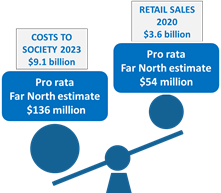
Demographic groups most at risk
of alcohol-related harms
Groups that are particularly
vulnerable to alcohol-related harms include:
· children aged less than 15 years
· young adults aged 15 to 24
· adults aged 25 to 44
· those living in areas with high social deprivation
· males
· Māori (particularly Māori males).
Community engagement
If the Council resolves that a LAP should be developed for
the district, in the design stage of the LAP, extensive community engagement
will take place to assess community preferences before a draft LAP can be made
for consideration by Council.
Risks and mitigations – judicial review
While the changes to the Act mean that affected parties such
as the alcohol industry cannot appeal against a draft LAP developed by the
Council, these parties could request a judicial review of the process taken to
develop the LAP and whether Council acted within the authority provided by the
Act. This is a risk for any new policy or policy review.
The network of councils across the country who are working
on developing or reviewing LAPs report that there have been threats of judicial
reviews from the alcohol industry when undertaking consultation on their LAPs;
however, no official judicial review requests have occurred. Matters
raised relate to some of the discretionary policies in their LAPs relating to
single unit sales and requiring CCTV cameras for security purposes. This
suggests that we can be confident that more substantive issues around the
location, opening hours and density of licensed premises are likely not to be
challenged. Because the Far North District is behind these other Councils in
our LAP development, we can potentially learn from the rulings in any judicial
reviews. Also, Alcohol Healthwatch is prepared to help us address any request
for a judicial review of our LAP.
Options
There
are two options:
1. to
develop a LAP for the district
2. not
to develop a LAP.
Advantages and
disadvantages of these options are summarised below.
|
Options
|
Advantages
|
Disadvantages
|
|
1) Develop a LAP for the district (recommended)
|
Public health, wellbeing, and safety benefits
A LAP will address the effects of alcohol-related
harm in the district which is at a high level compared with other districts.
These harms come at a large social and economic cost to the community
Community input
A LAP can enable alcohol licensing decisions to
reflect community preferences. The changes to the Act strengthen
Council’s ability to develop a LAP influenced by the preferences of the
community, without legal challenges.
Protection of vulnerable groups
Possible LAP provisions regarding the location of
licensed premises in relation to sensitive sites such as schools,
playgrounds, medical facilities, and marae could help protect vulnerable
groups from alcohol-related harms.
Protection of existing licensed businesses
Possible LAP provisions regarding the number and
location of new licensed premises could protect existing businesses from
competition.
Initial support from key stakeholders
The Police, the Medical Officer of Health, the DLC,
and the majority of Alcohol Licensing Inspectors support making a LAP.
Clarity of policy direction
A LAP would give the DLC and applicants for licences
clear direction regarding Council’s intentions for alcohol licensing.
Greater consistency in licensing decisions
The District Licensing Committee will have a point
of reference for all licensing decisions which it must have regard to in its
decisions.
Potential cost savings
Having a LAP may lead to a decrease in the number of
objections made against individual licence applications and consequently
fewer costly hearings.
|
Adverse impact of LAP provisions on alcohol outlets
Licensed businesses may be adversely affected by
possible LAP provisions such as reduced trading hours. NB. customers may
change their behaviour (e.g. purchase alcohol earlier) meaning adverse
effects may be minimal.
Managing conflicting views
Council should be prepared to manage opposing
viewpoints from stakeholders representing the alcohol industry, and to accept
that its decisions in this area may not satisfy all parties equally.
Potential for judicial review
Judicial review is still possible despite the
amendments to the Act. Defending a judicial review can be costly and time
consuming. NB. the Council can potentially be guided by any judicial reviews
of other Councils’ LAPs developed after the Act was amended. To date,
no such reviews have occurred.
Resource commitment
Developing a LAP requires extensive engagement with
the community and significant staff time will be involved in this engagement
and in drafting the LAP.
Reviewing a LAP at least every six years will involve one-off costs
and again will require significant staff resources.
|
|
2) Do not
develop a LAP for the district
|
Licensed premises would not be adversely affected by LAP provisions
For example, licensing provisions in a LAP that may
apply to trading hours and the location of licensed premises would not apply.
Council will avoid an issue that is likely to have conflicting views
A judicial review will not occur
Council will avoid the time and cost of responding
to a potential judicial review
Resources will not be committed to LAP development and review
Developing a LAP requires extensive engagement with
the community and significant staff time will be involved in drafting the LAP
and analysing submissions.
Reviewing a LAP at least every six years will involve one-off costs and require significant
staff resources.
|
Failure to address public health, wellbeing, and safety issues in the
community
Council will lose the opportunity to reduce the
level of alcohol-related harm in the district via a LAP.
Community input
The Council will not benefit from community feedback
into addressing alcohol-related harm.
Missed opportunity to protect vulnerable groups
Potential LAP provisions regarding the location of
licensed premises in relation to sensitive sites would not be in place.
Missed opportunity to protect existing licensed businesses
LAP provisions regarding the number and location of
new licensed premises that could protect existing businesses from competition
would not be in place.
Lack of a LAP would disappoint key stakeholders
The Police, the Medical Officer of Health, and the
majority of Alcohol Licensing Inspectors would be disappointed if a LAP is
not developed.
Lack of policy direction
The DLC will not benefit from policy advice from the
Council regarding its decisions.
Potential inconsistency in licensing decisions
The DLC will lack a point of reference for its
licensing decisions.
Potential cost savings will not occur
Cost savings through fewer licensing objections and
hearings will not occur
|
TAKE TŪTOHUNGA
/ REASON FOR THE RECOMMENDATION
On
balance, Option 1 (develop a LAP for the district) is recommended because:
· there
are extensive problems and harms associated with the inappropriate consumption
of alcohol in the district, and there is a reasonable likelihood that a LAP
could address these issues
· developing
a LAP will enable alcohol licensing decisions to reflect community preferences
· a
LAP may protect existing licensed businesses
· a
LAP will lead to clarity of policy direction from the Council and greater
consistency in licensing decisions by the DLC
· a
LAP can potentially lead to cost savings for the DLC through fewer objections
against licencing decisions and fewer costly hearings.
NEXT
STEPS
As required by the Act, Council
staff will work closely with the Police, the Medical Officer of Health, and
Alcohol Inspectors to develop the draft LAP. Extensive engagement with the
community will also occur via a survey of the public and meetings with key
stakeholders including social agencies, iwi and hapu representatives, and the
alcohol industry. Input from Community Boards will also be sought during
the LAP design phase.
The estimated timeframe to develop
and consult on the draft LAP is 6 to 8 months starting in February 2025.
3) PĀnga PŪtea me ngĀ
wĀhanga tahua / Financial Implications and Budgetary Provision
Costs to develop a LAP will only involve staff resourcing
and will be met from existing budgets. No implementation costs will be involved.
Potentially having a LAP in place will reduce the number of costly hearings
regarding objections to the DLC’s decisions, as a LAP will give the DLC
and licensed premises clear direction regarding Council’s intentions for
alcohol licensing.
Āpitihanga
/ Attachments
1. FNDC
LAP Research Report - A4960202 ⇩ 
2. FNDC
LAP Workshop presentation 151024 - A4960190 ⇩ 
3. Options
Analysis report - Local Alcohol Policy - A4960402 ⇩ 
4. Provisional
LAP 2015 - A1570334 ⇩ 
Hōtaka Take Ōkawa / Compliance Schedule:
Full consideration has been given to the provisions of the
Local Government Act 2002 S77 in relation to decision making, in particular:
1. A
Local authority must, in the course of the decision-making process,
a) Seek
to identify all reasonably practicable options for the achievement of the
objective of a decision; and
b) Assess
the options in terms of their advantages and disadvantages; and
c) If
any of the options identified under paragraph (a) involves a significant
decision in relation to land or a body of water, take into account the
relationship of Māori and their culture and traditions with their
ancestral land, water sites, waahi tapu, valued flora and fauna and other
taonga.
2. This
section is subject to Section 79 - Compliance with procedures in relation to
decisions.
|
He Take Ōkawa /
Compliance Requirement
|
Aromatawai Kaimahi /
Staff Assessment
|
|
State the level of significance (high or low) of the
issue or proposal as determined by the Council’s
Significance and Engagement Policy
|
Under the Significance and Engagement
Policy, Council staff consider that developing a LAP is highly significant
as:
· this area is not covered
by current plans or policies
· developing a LAP is
likely to generate considerable public interest
· a LAP is likely to be of
particular interest to Māori given the disproportionate level of
alcohol-related harms experienced by Māori
· a LAP is likely to have
an impact on the social, economic, environmental and cultural wellbeing of
the District.
|
|
State the relevant Council policies (external or
internal), legislation, and/or community outcomes (as stated in the LTP) that
relate to this decision.
|
Legislation:
· Sale and Supply of
Alcohol Act 2012
· Local Government Act
2002
o section 10 - purpose of local government is to promote the four
“well-beings”
· section 14(c) - Council’s decisions
should take into account a) the diversity of the community, and the
community’s interests within its district; b) the interests of future
as well as current communities
· section 14(d) - Council should provide
opportunities for Māori to contribute to its decision-making processes.
This is particularly relevant given the disproportionate level of
alcohol-related harm experienced by Māori in the district
Council’s Long-Term Plan Community Outcomes:
· communities that are
healthy, safe and connected
District Plan Objectives and
Policies
· see section 4.5 of the attached
research report
Alcohol Control Bylaw 2018
· see section 4.4 of the
research report
|
|
State whether this issue or proposal has a District wide
relevance and, if not, the ways in which the appropriate Community
Board’s views have been sought.
|
The sale, supply, and consumption of alcohol has
district-wide relevance across the Far North District with 83% of adults aged
15 or more in Northland having consumed alcohol in the past year (2017-20
results).
Issues regarding the sale and consumption of alcohol
affect local communities and towns and the Act allows for a LAP to have
different conditions for different areas in the district. Therefore, local
input into developing a LAP is vital.
Input from Community Boards will be sought during the
LAP design phase to help ensure that local perspectives are considered and
appropriate local stakeholders are consulted.
|
|
State the
possible implications for Māori and how Māori have been provided
with an opportunity to contribute to decision making if this decision is
significant and relates to land and/or any body of water.
State the
possible implications and how this report aligns with Te Tiriti o Waitangi /
The Treaty of Waitangi.
|
A LAP has potential implications for Māori
communities, who are disproportionately affected by the harms and problems
associated with alcohol use. To ensure alignment with Māori health
priorities and cultural values, Council staff plan to engage with iwi and
hapū representatives during the policy design phase. NB. Whiria Te Muka
has already provided valuable insights from the perspective of Te Hiku iwi
regarding alcohol-related domestic violence in Te Hiku and the desire for iwi
and hapu to have their say on a LAP.
|
|
Identify persons likely to be affected by or have an
interest in the matter, and how you have given consideration to their views
or preferences (for example – youth, the aged and those with
disabilities).
|
Practically all members of the
community are affected by the sale, supply, and consumption of alcohol in the
district.
As discussed in section 9.2 of the research report,
demographic groups that are particularly vulnerable to alcohol-related harms
include:
· children aged less than
15 years
· young adults aged 15 to
24
· adults aged 25 to 44
· those living in areas
with high social deprivation
· males
· Māori (particularly
Māori males).
|
|
State the financial implications and where budgetary
provisions have been made to support this decision.
|
Costs to develop a LAP will only involve staff
resourcing and will be met from existing budgets. No implementation costs
will be involved. Potentially having a LAP in place will reduce the
number of costly hearings regarding objections to the DLC’s decisions.
|
|
Chief Financial Officer review.
|
The Chief Financial Officer has not reviewed this
report.
|
|
Ordinary Council Meeting Agenda
|
12 December 2024
|
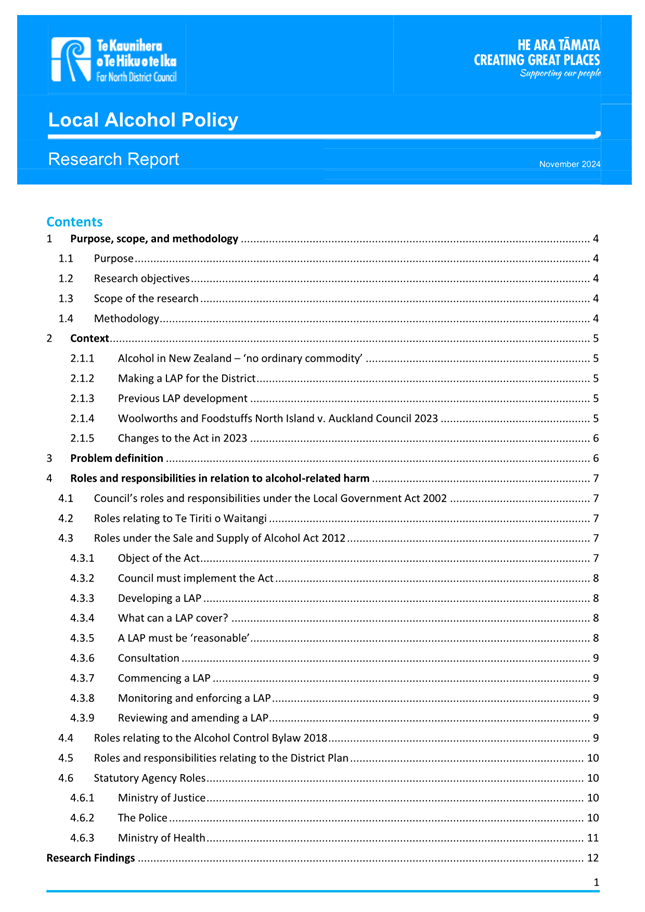
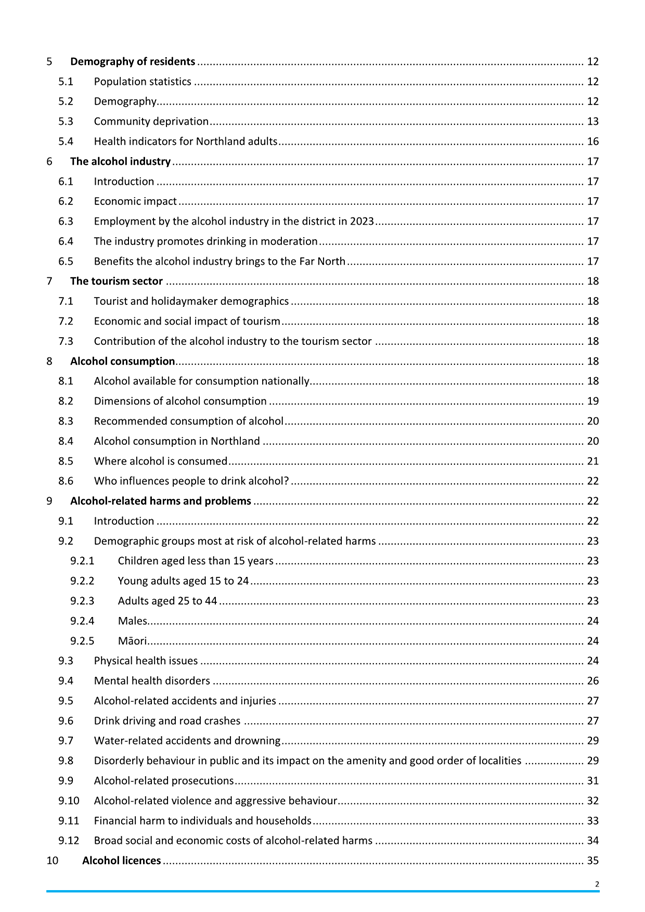
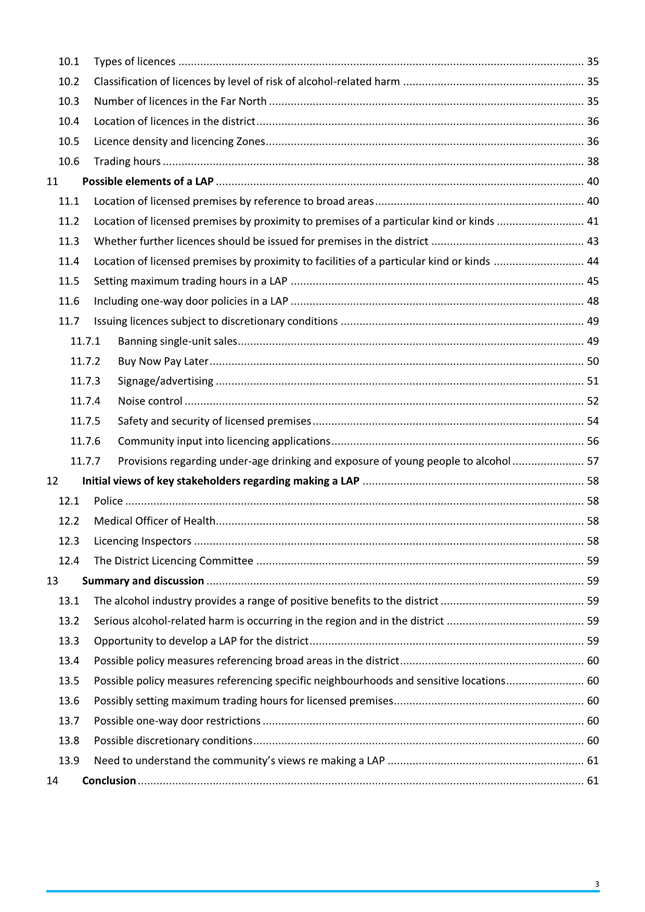
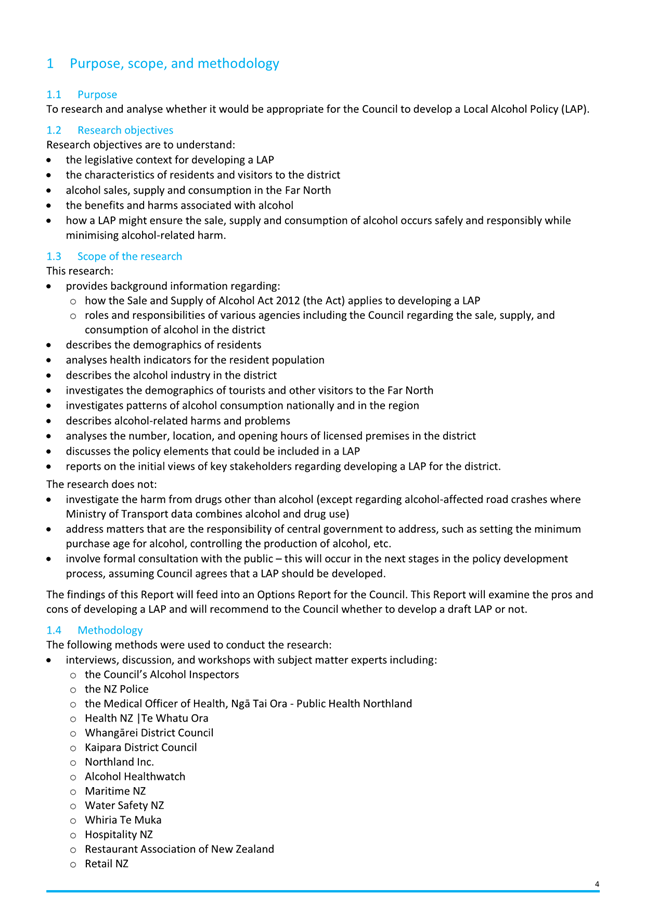
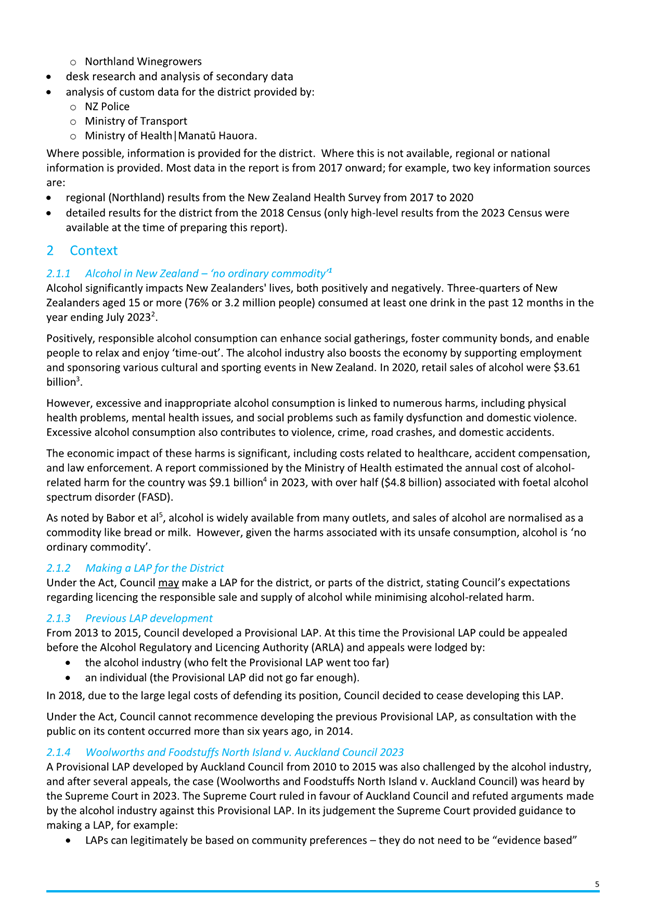

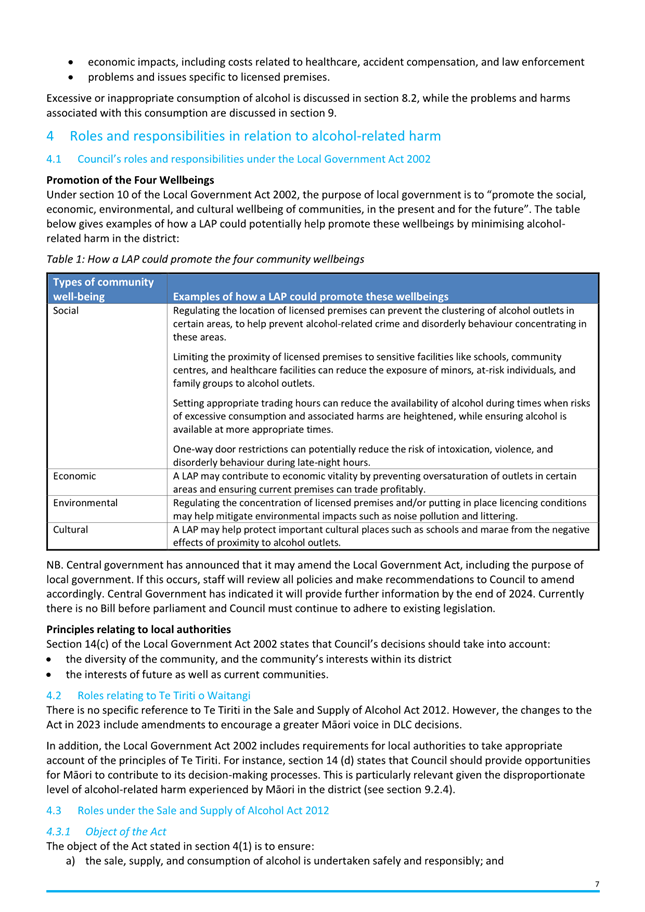
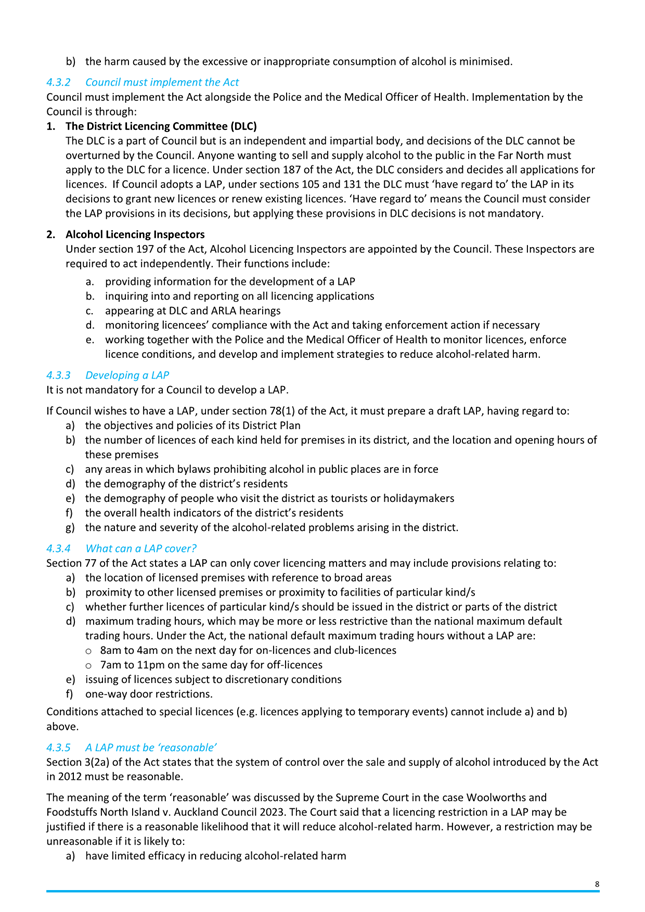
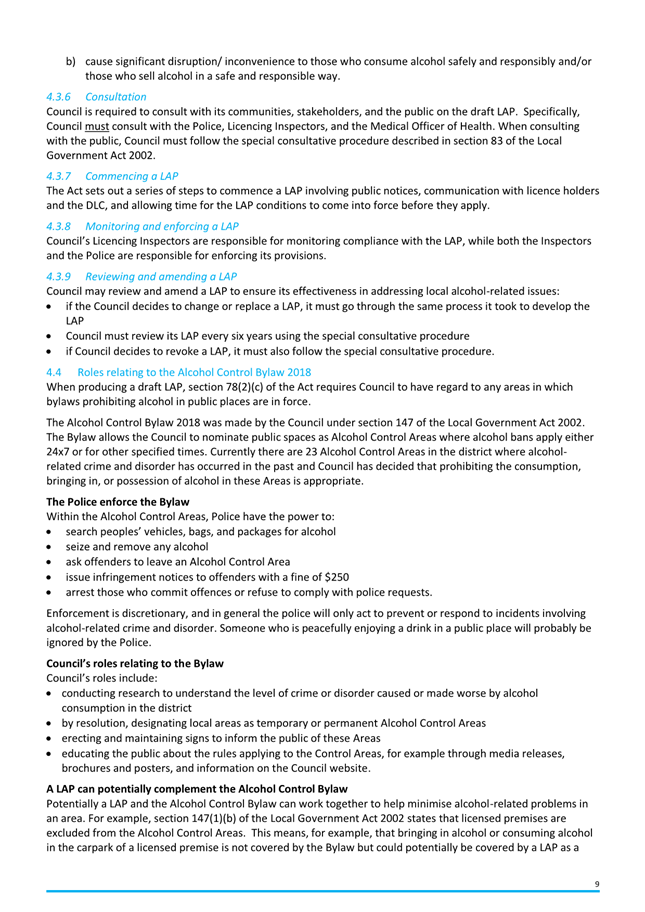
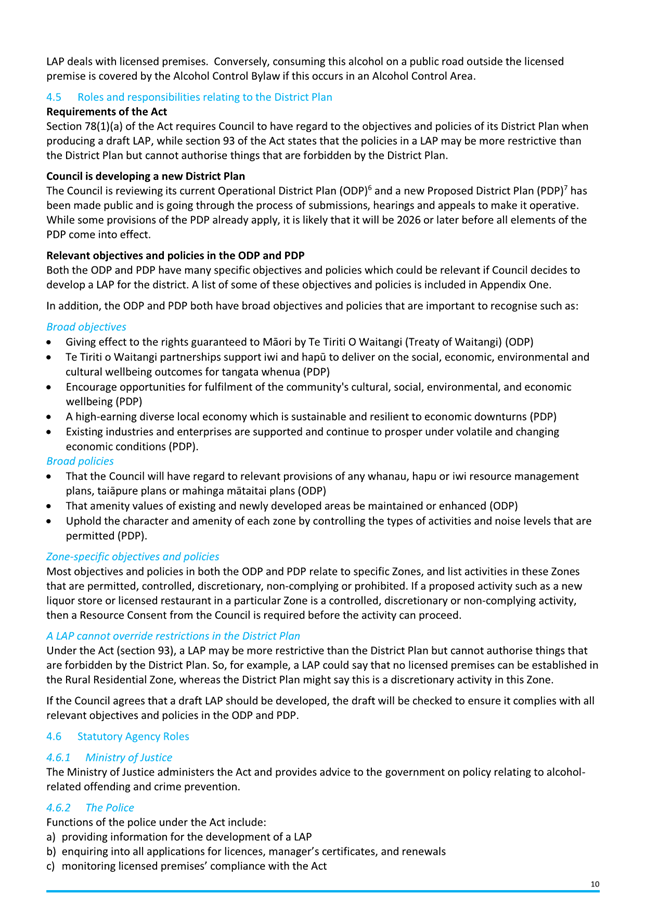

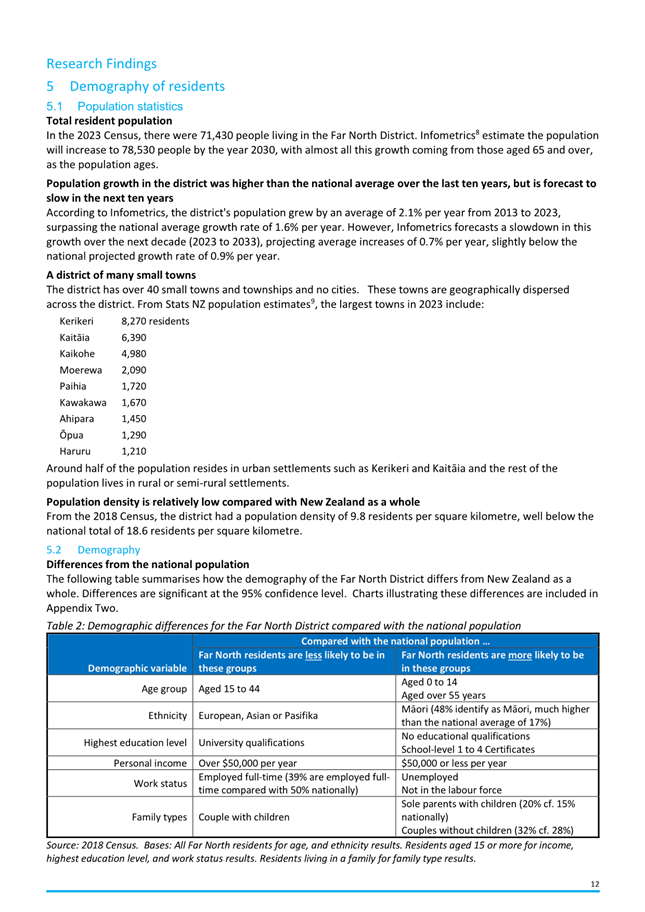
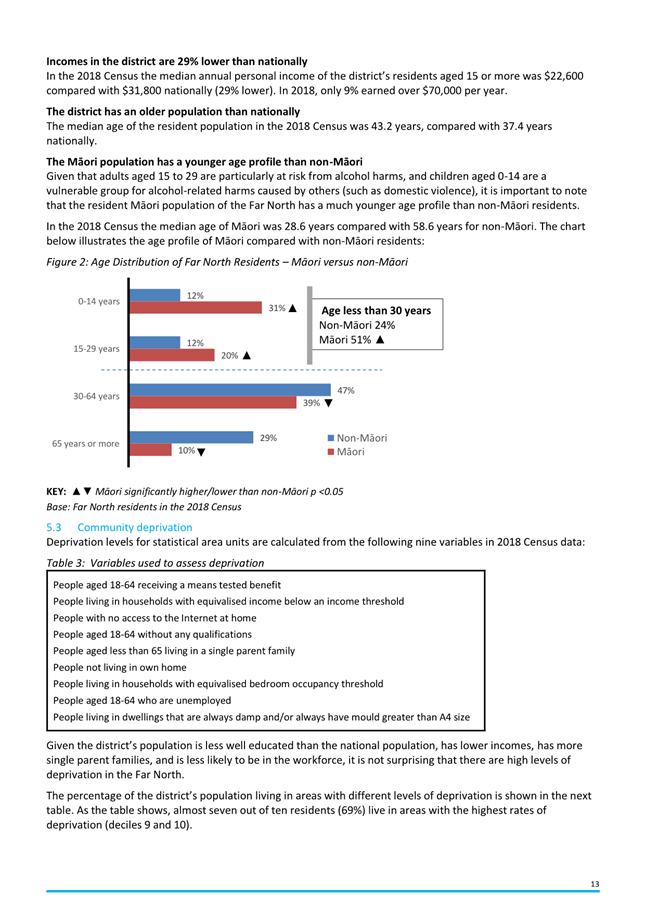

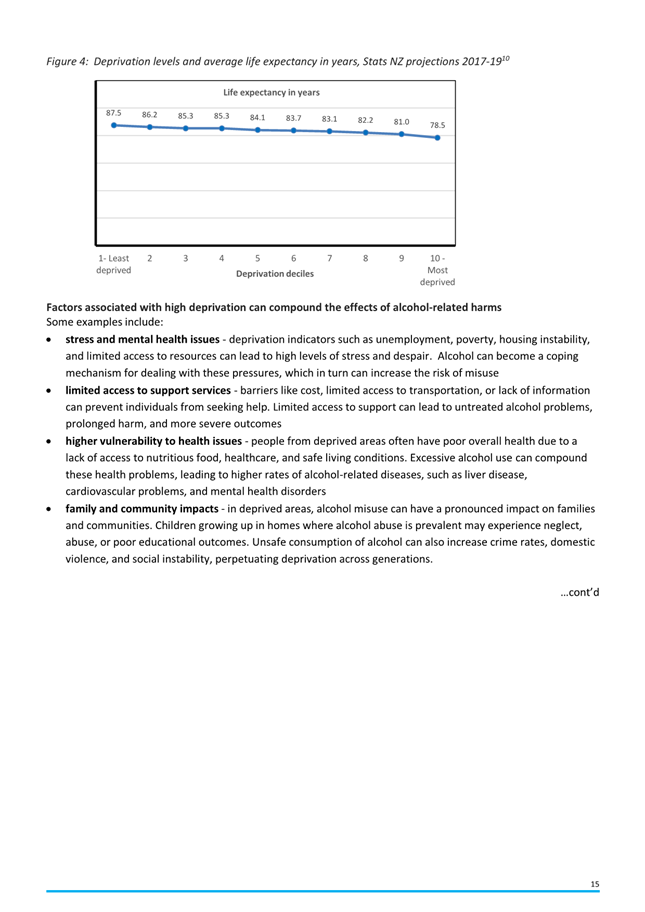
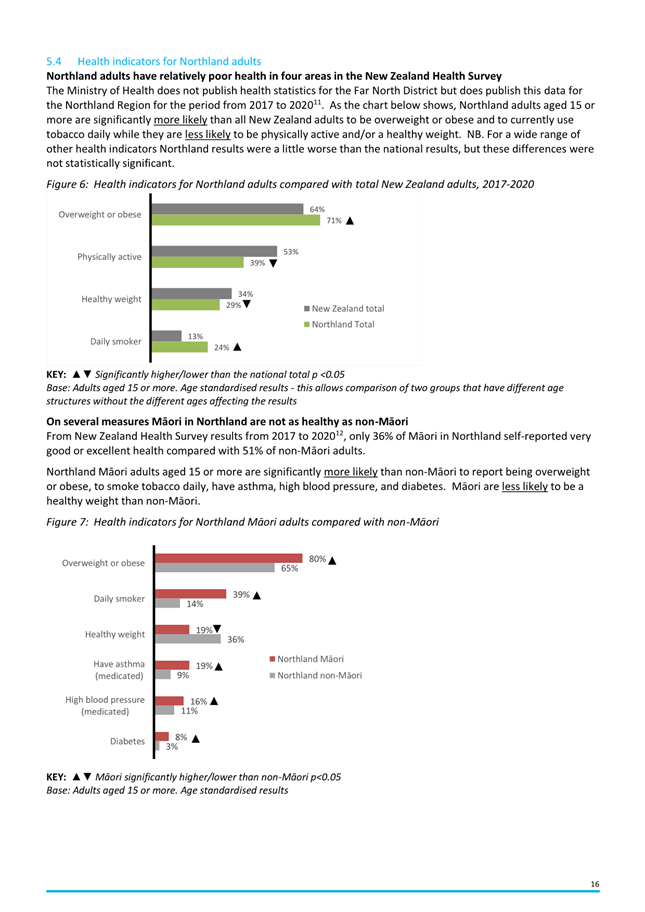
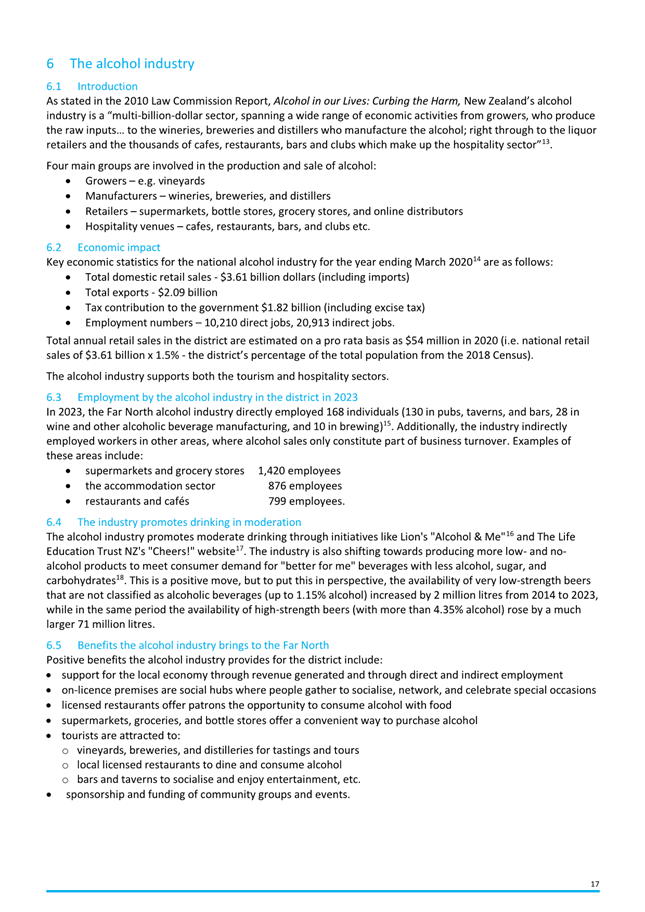
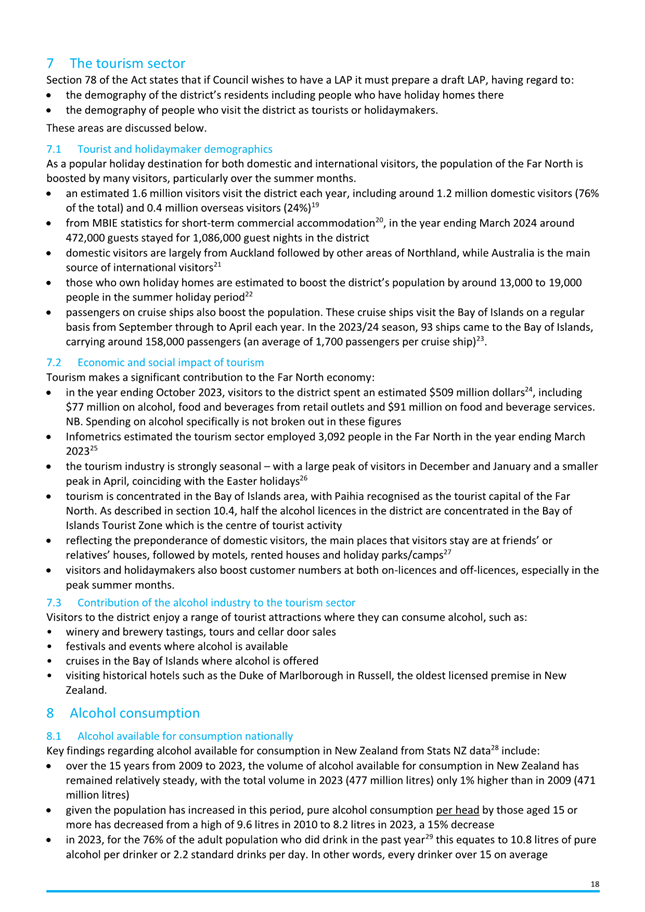
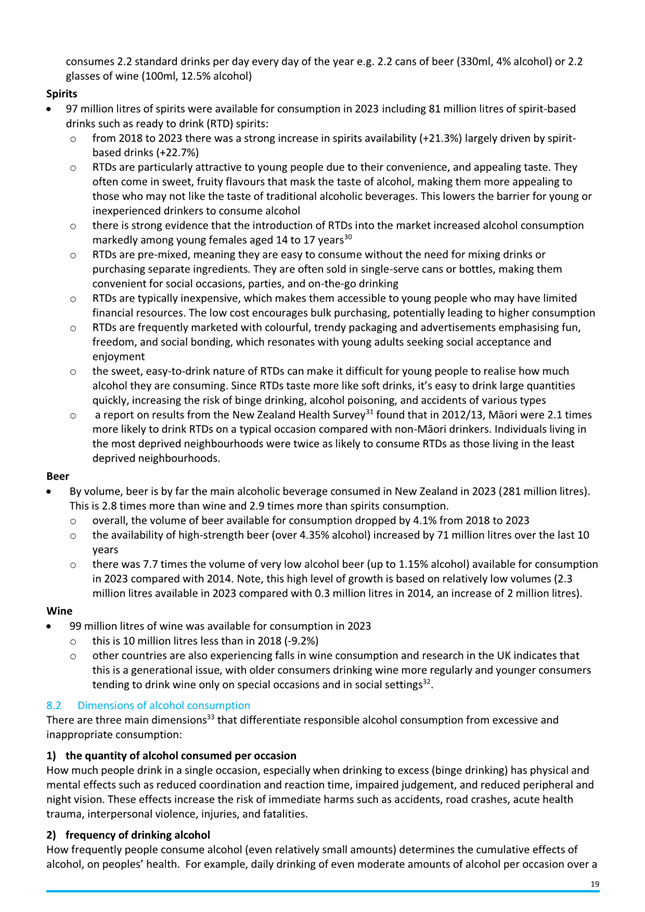
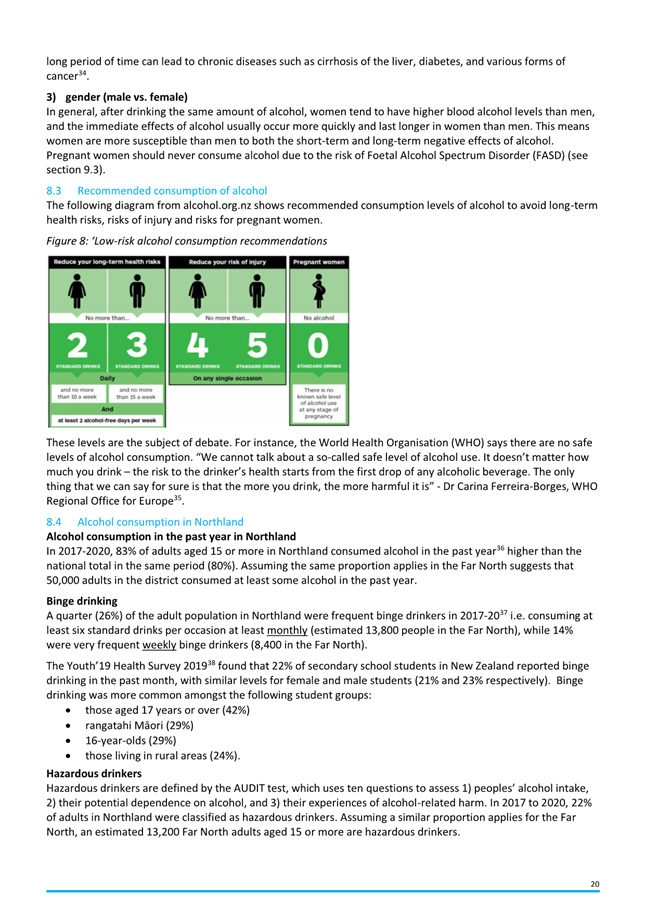
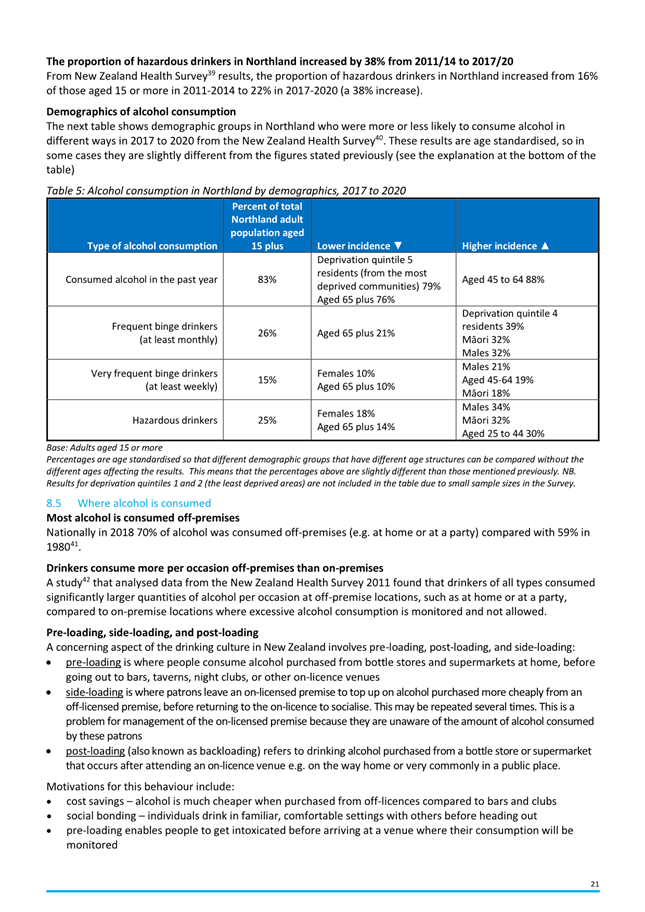
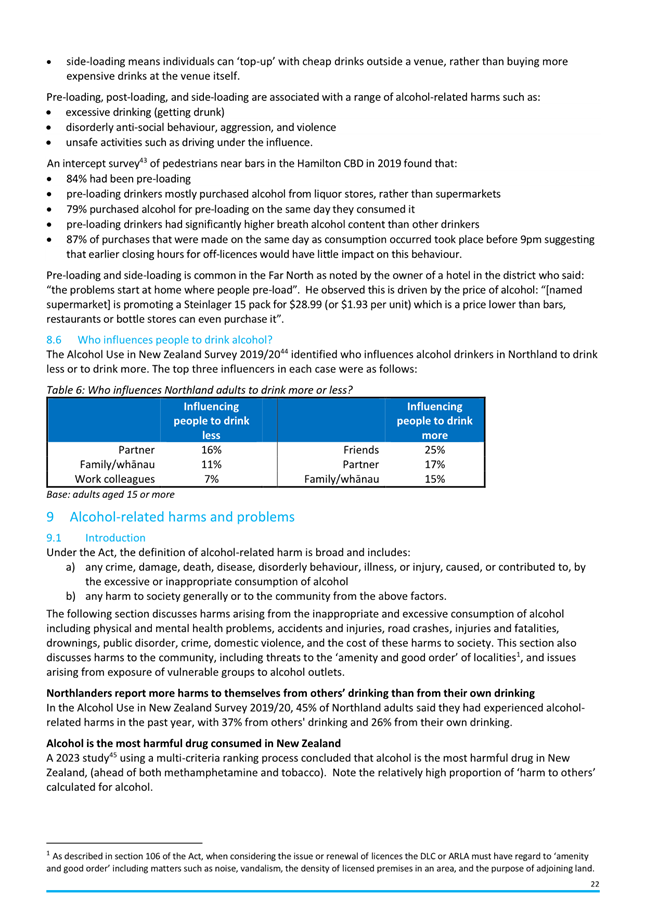
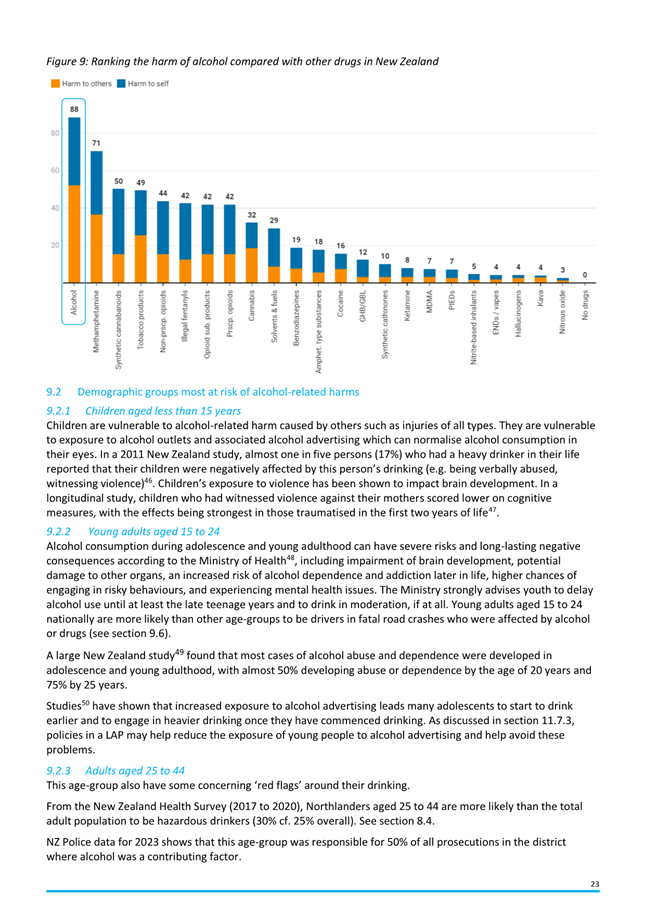
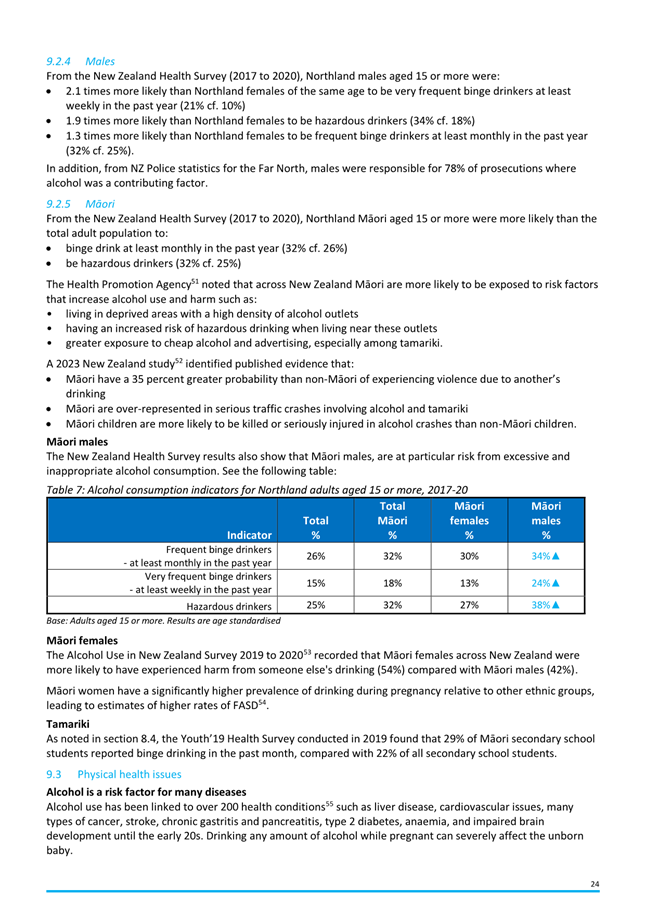
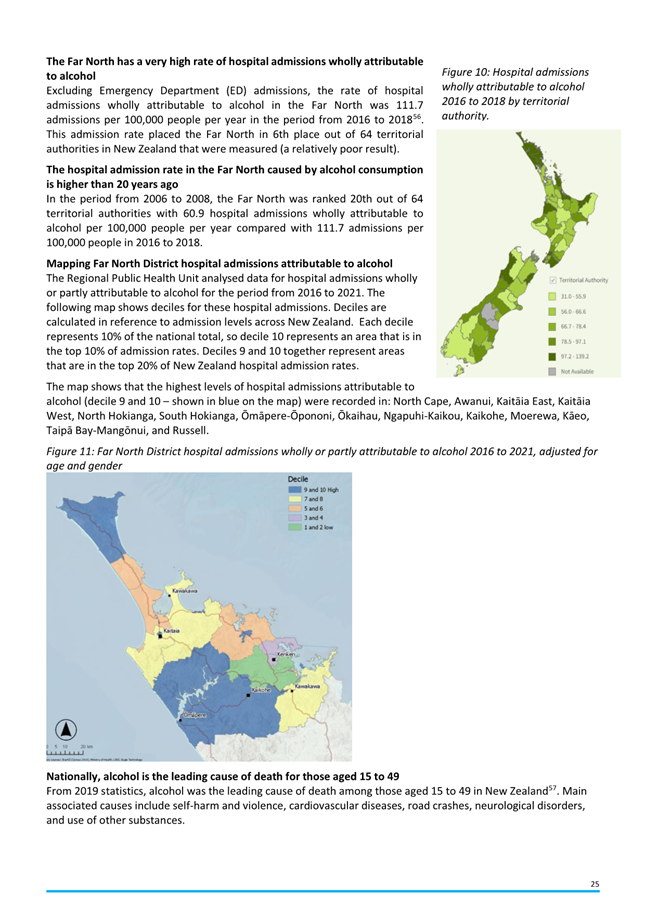
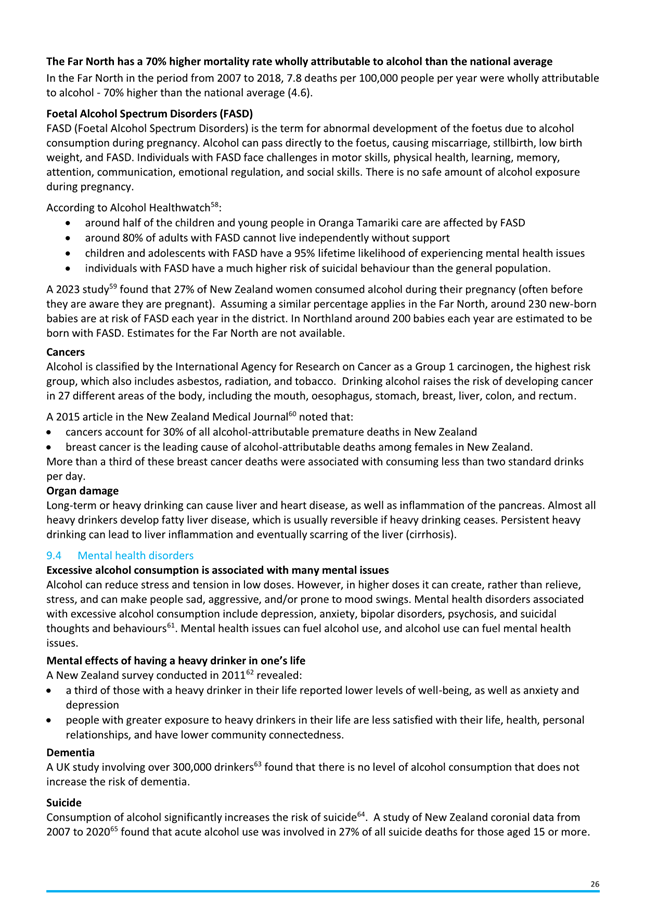
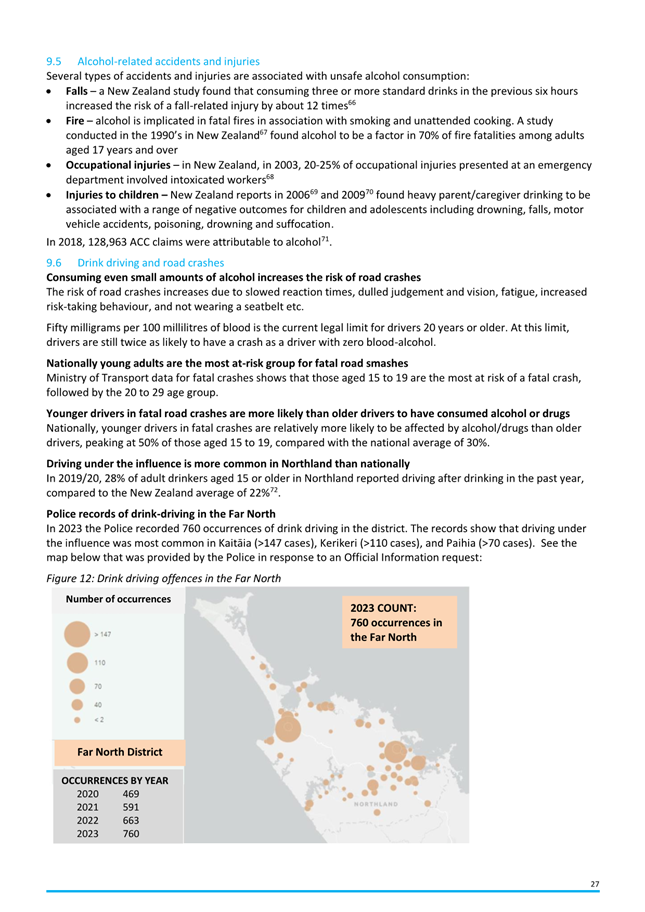
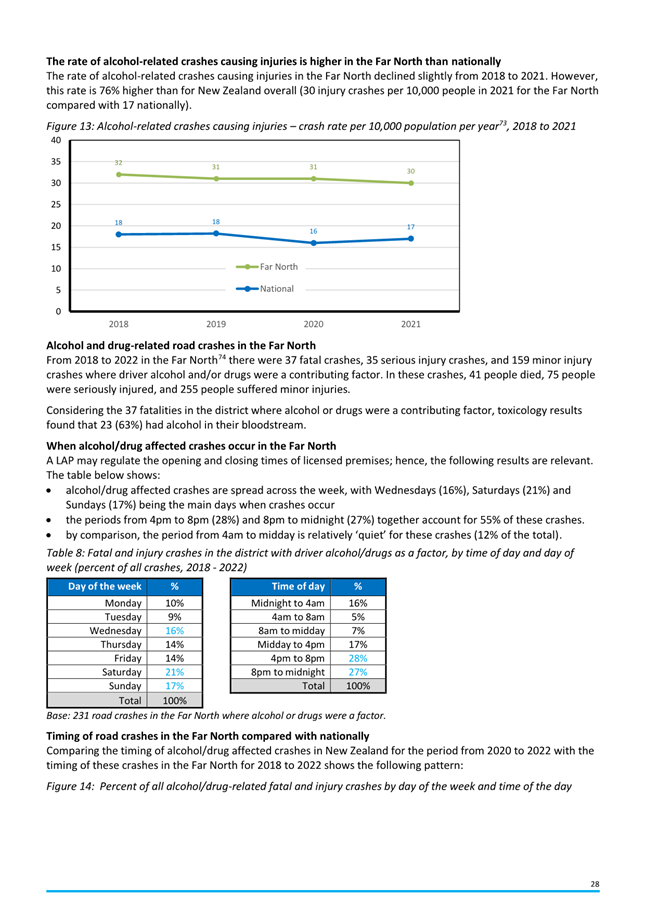
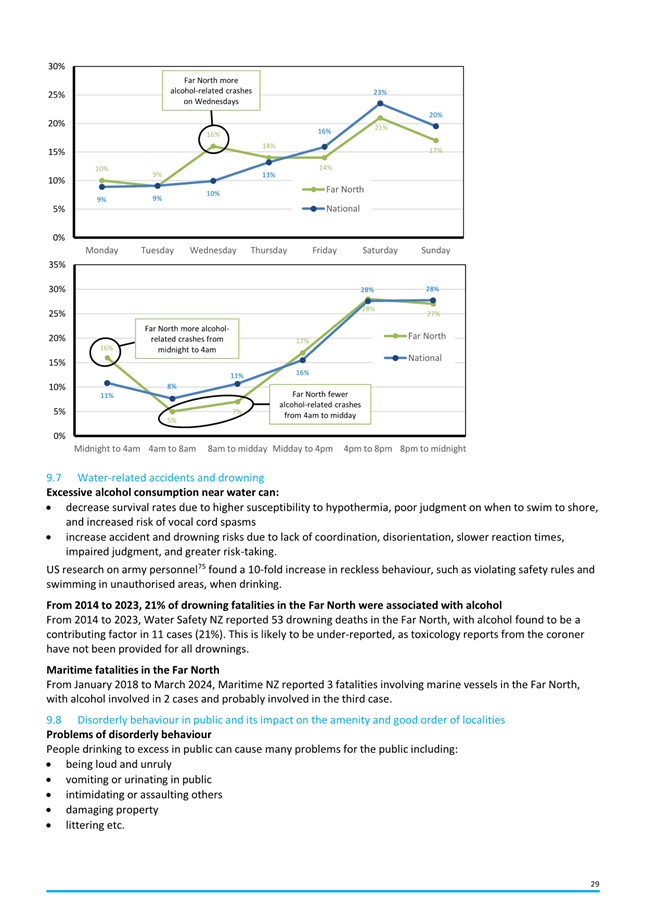
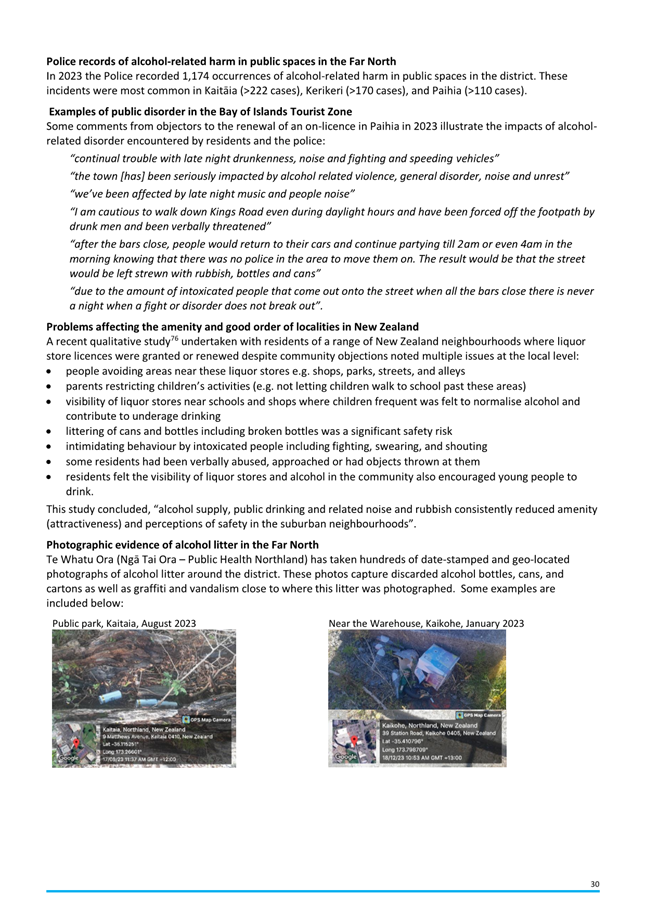
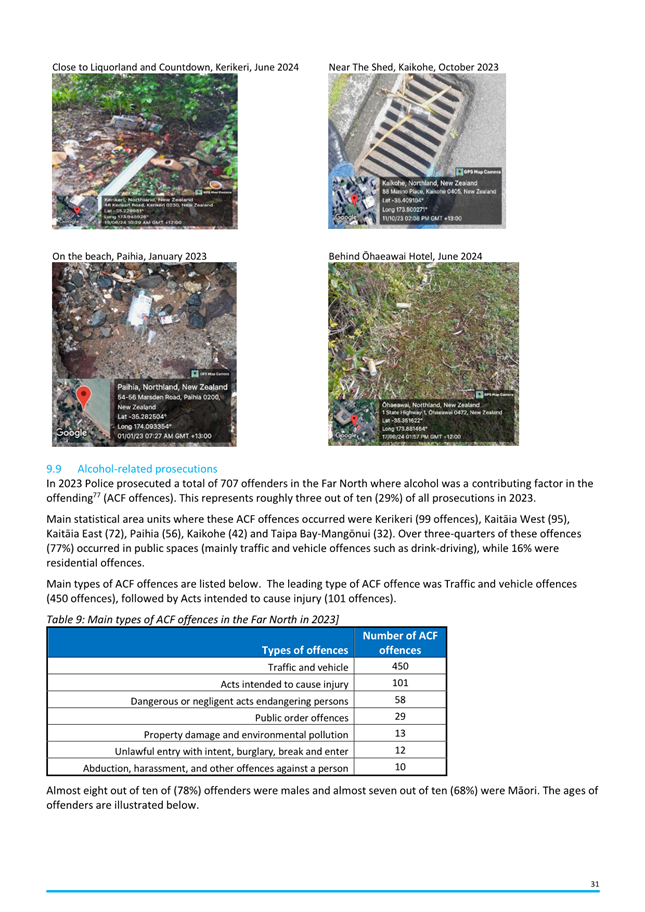
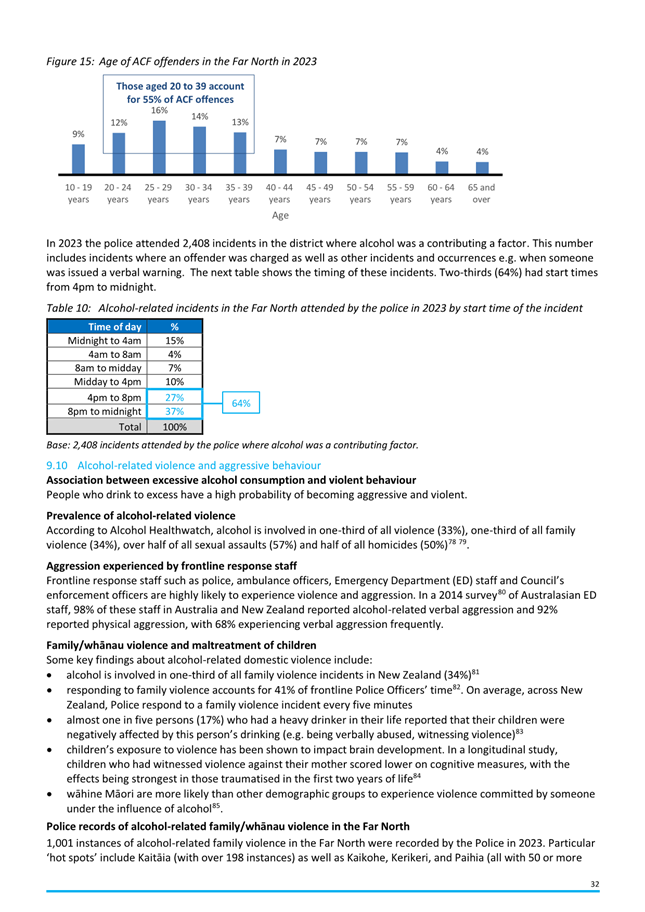
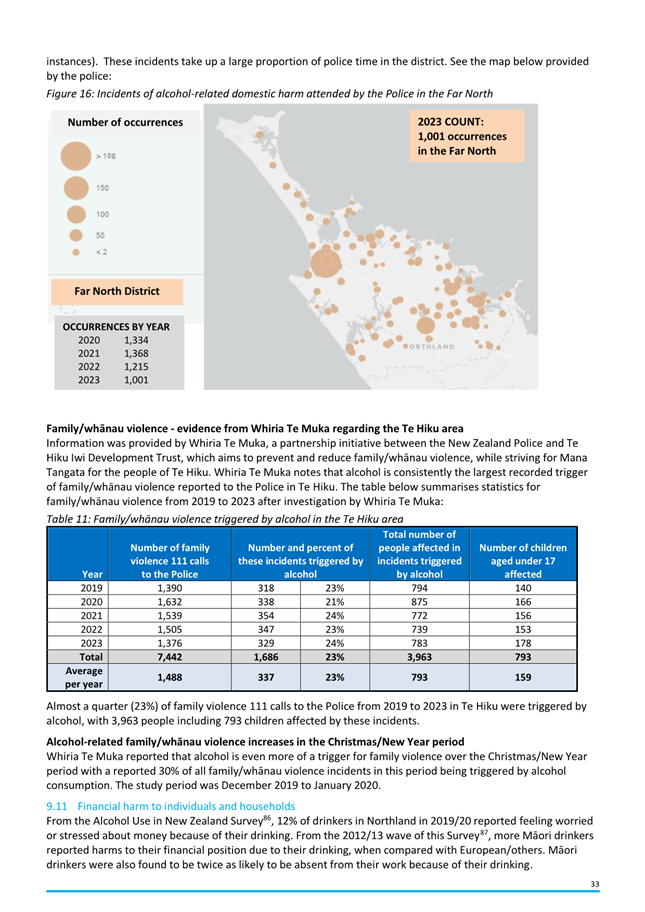
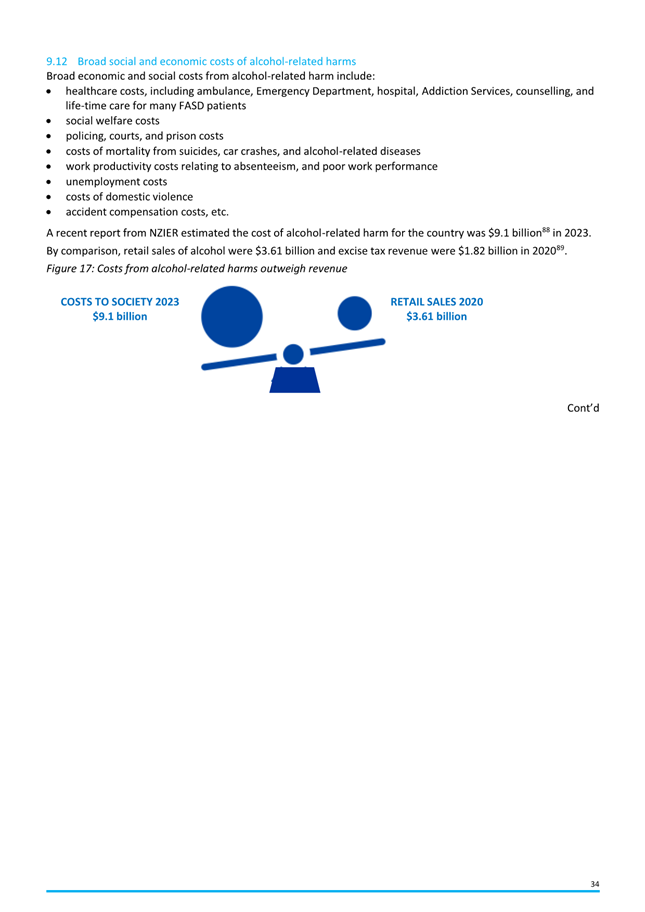
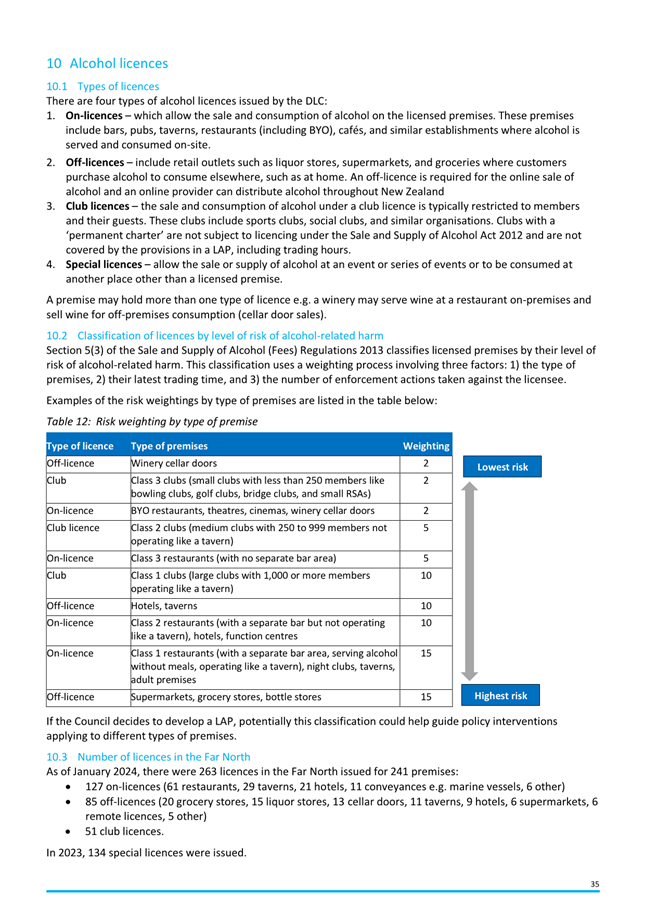
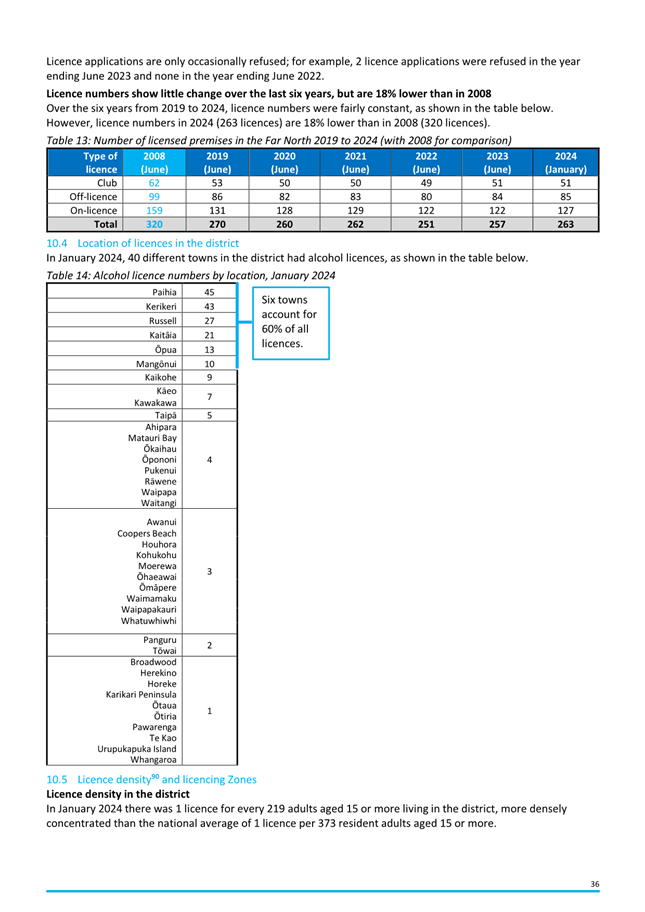
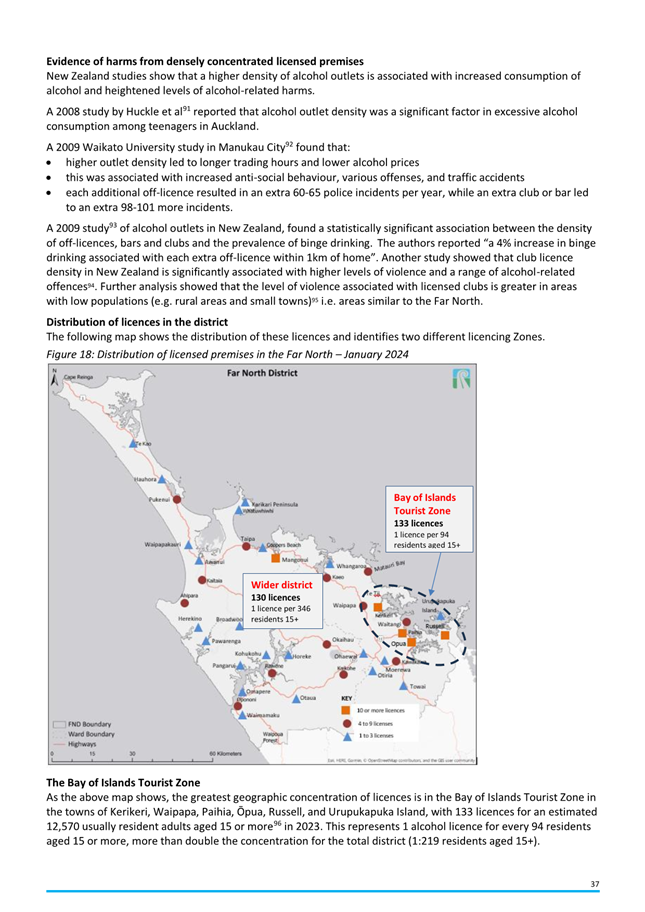

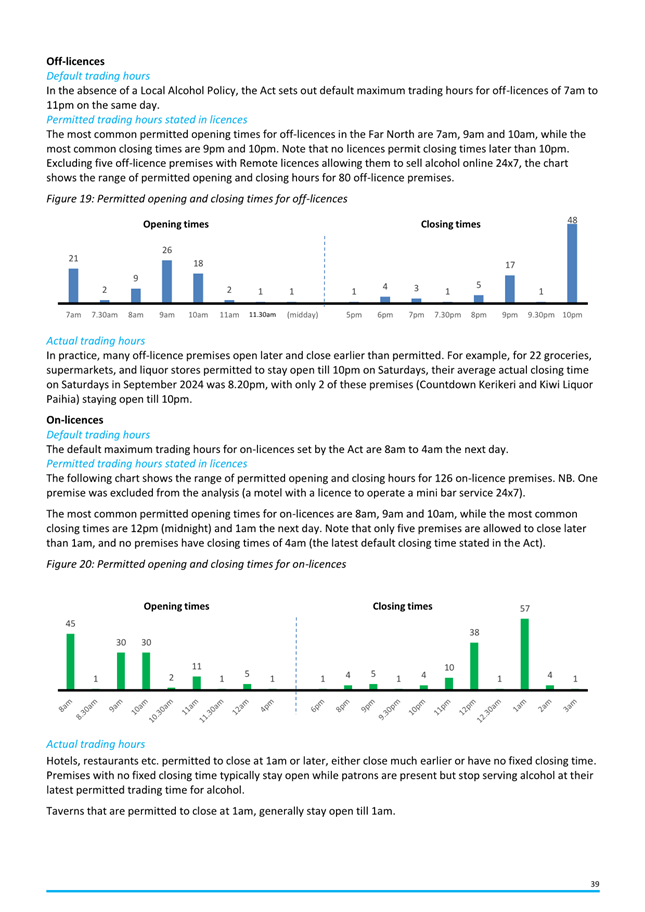

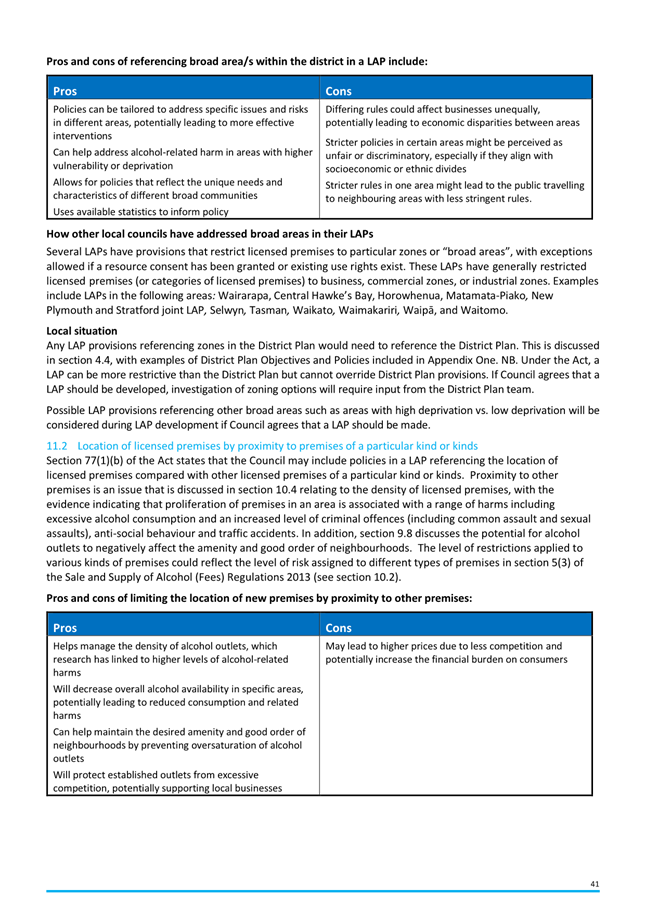
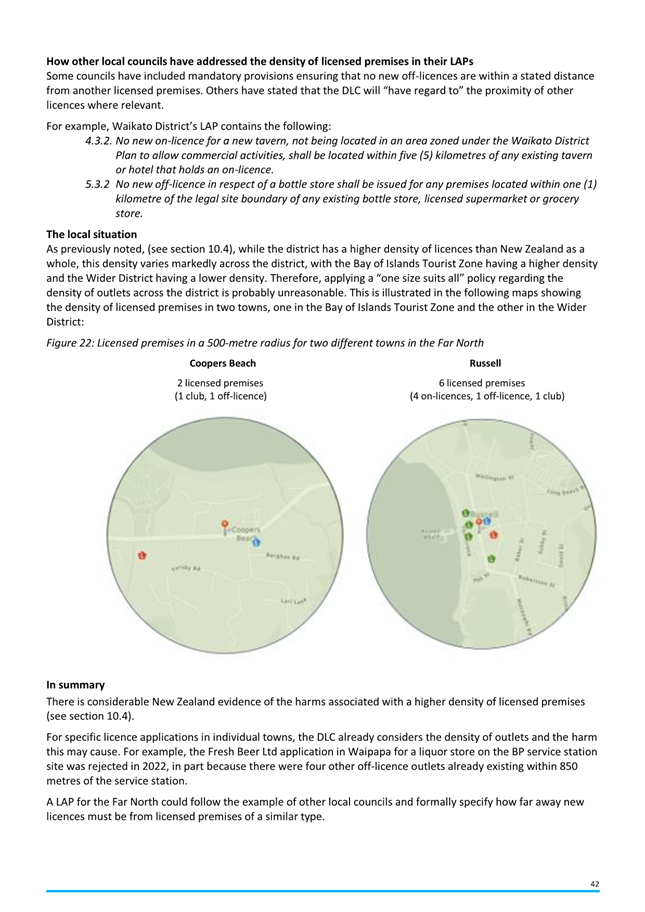
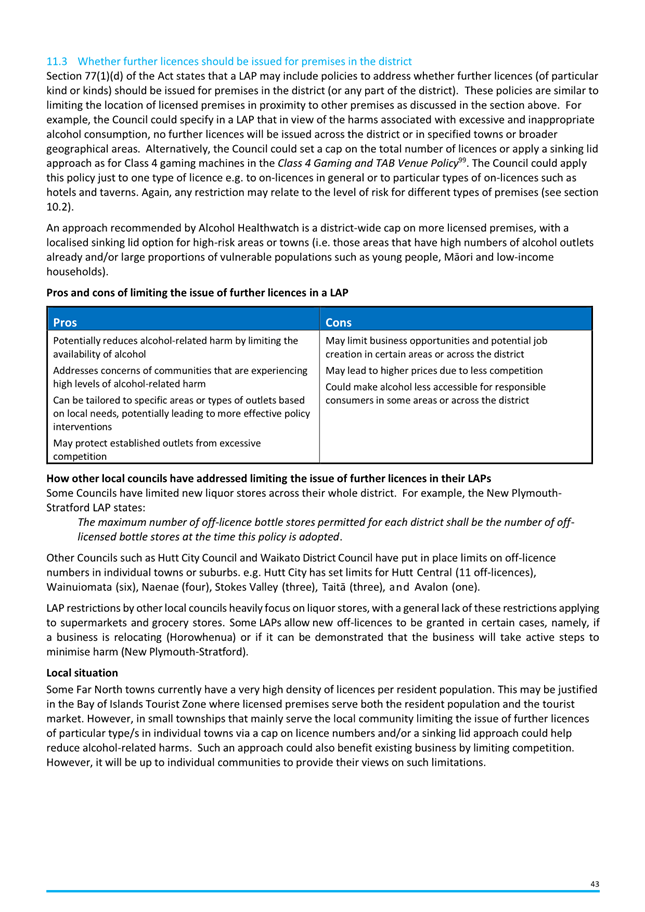
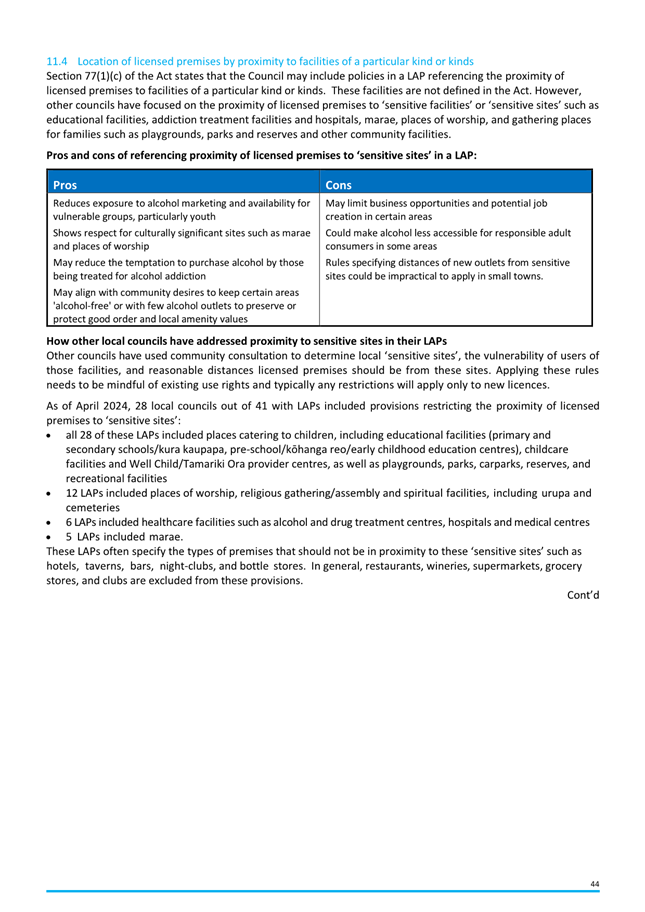

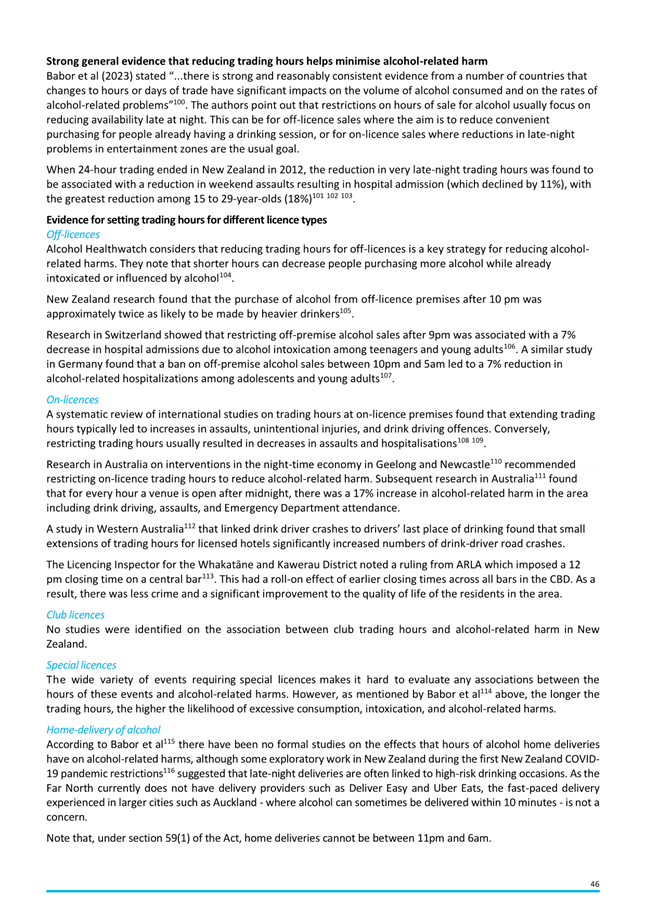
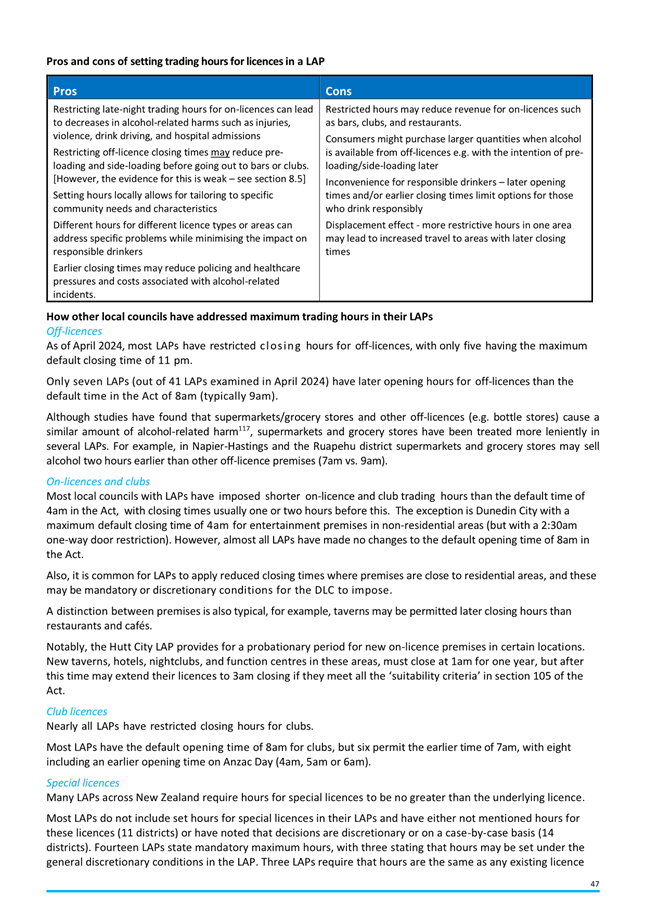
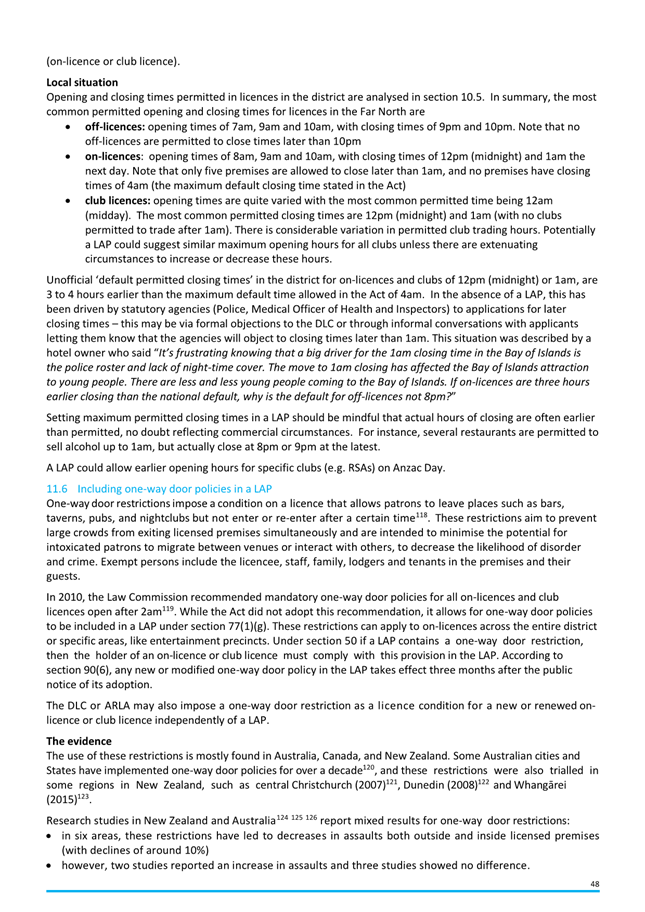
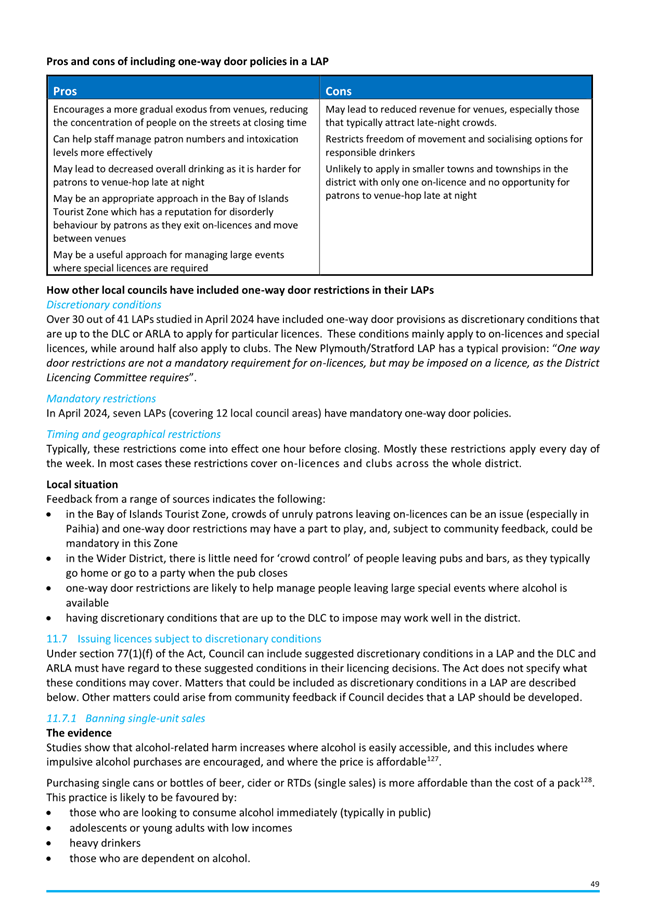
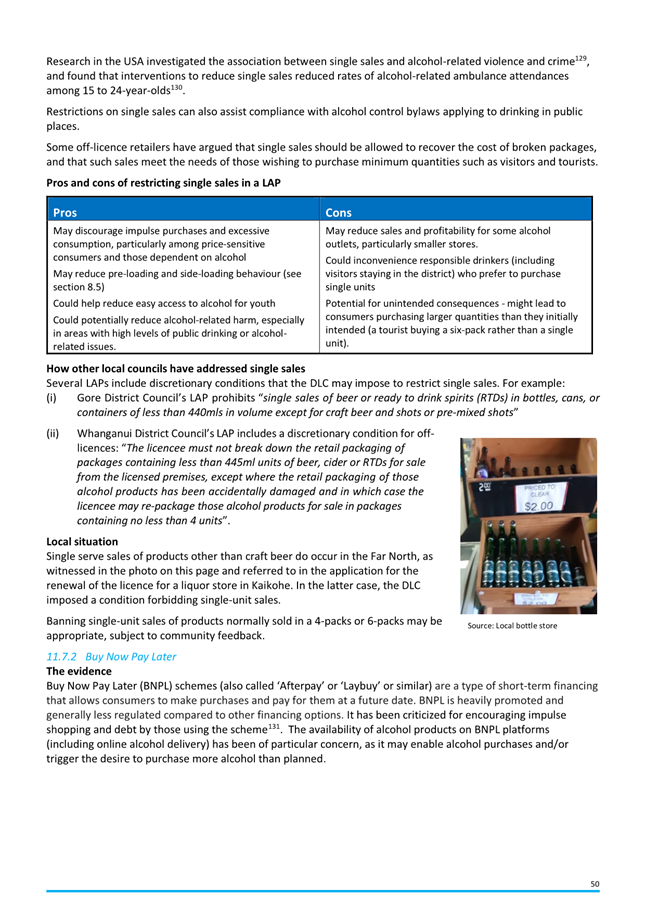
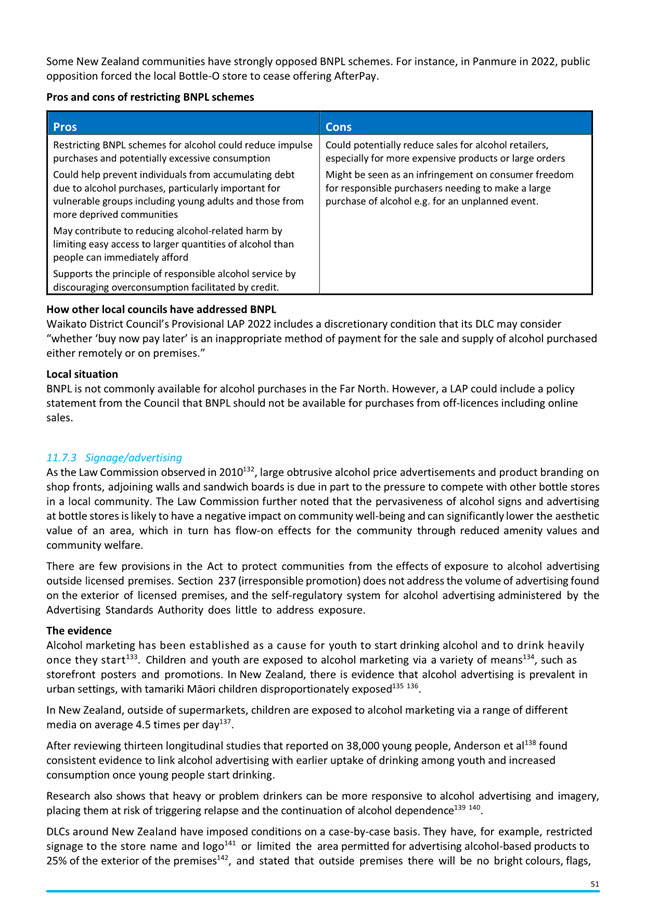
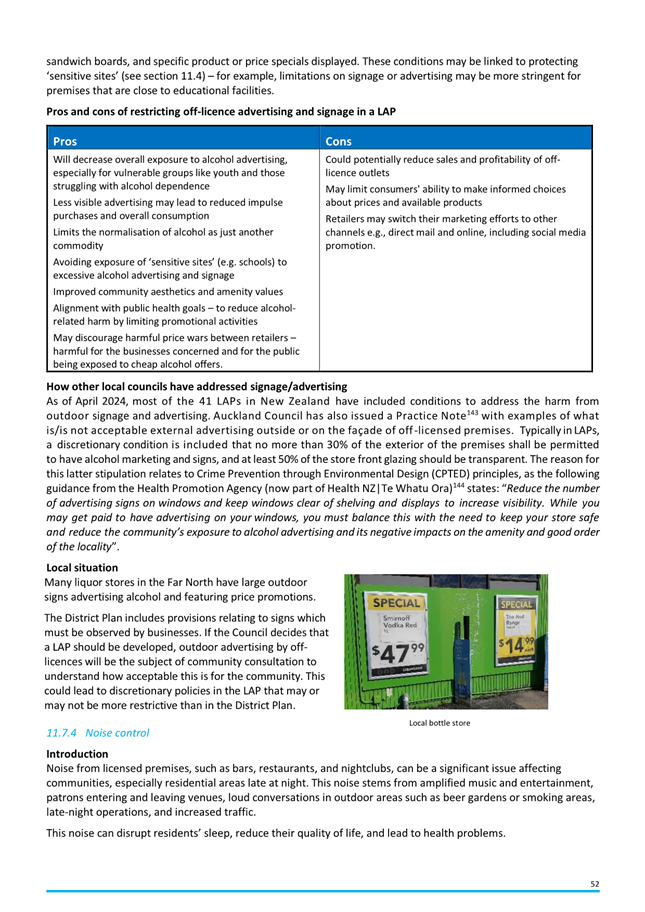
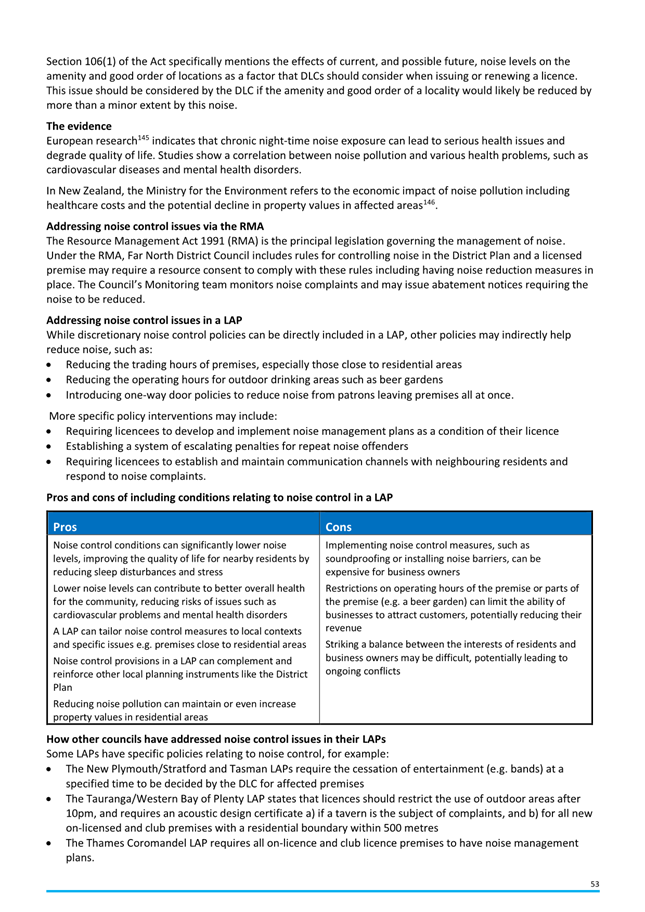
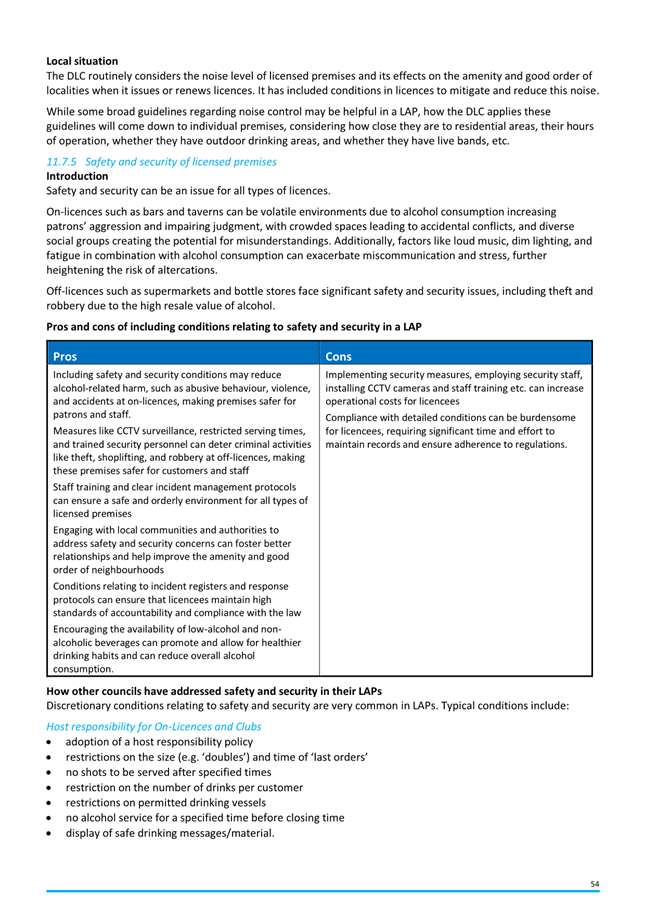
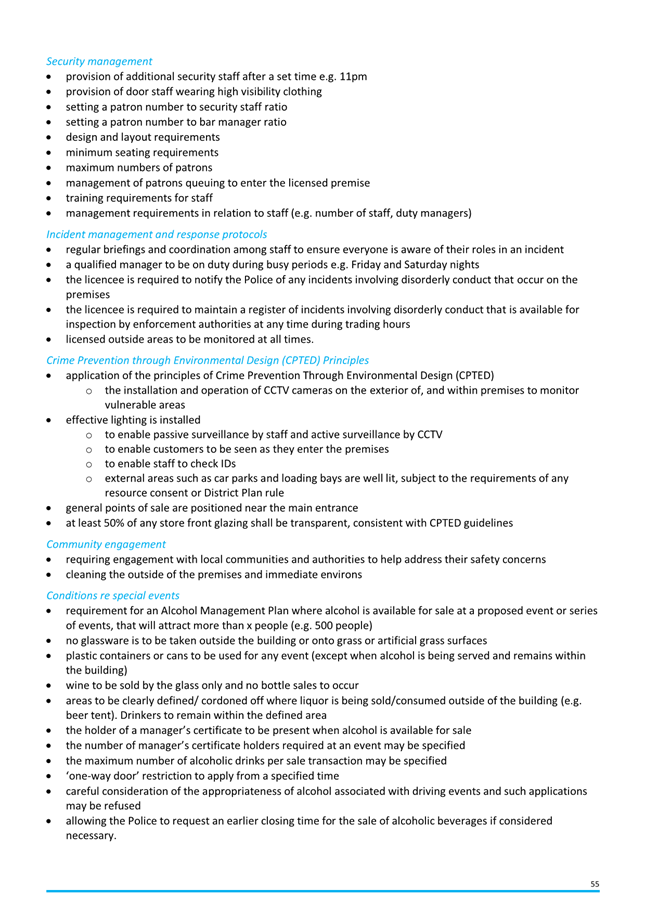
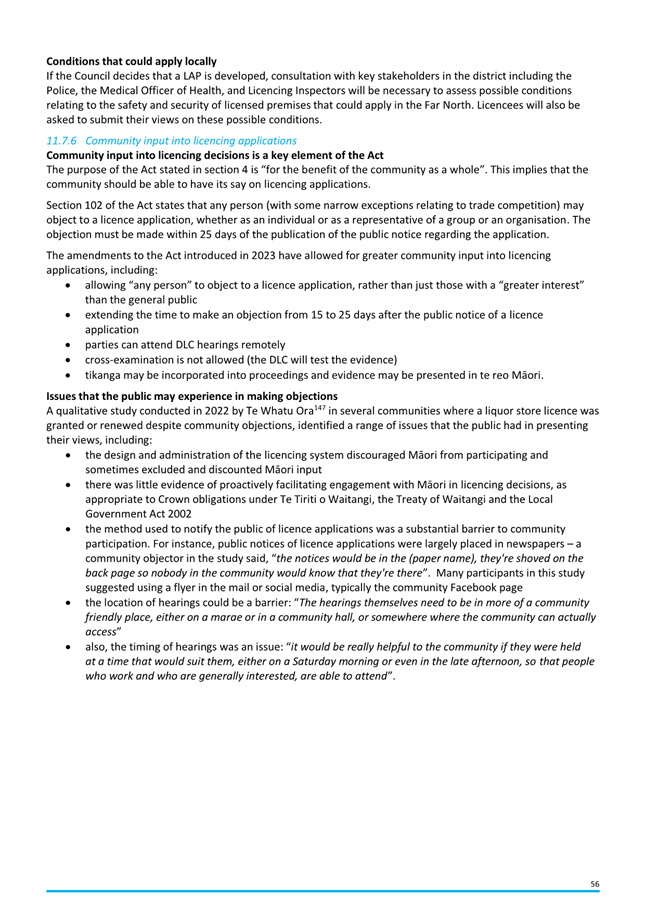
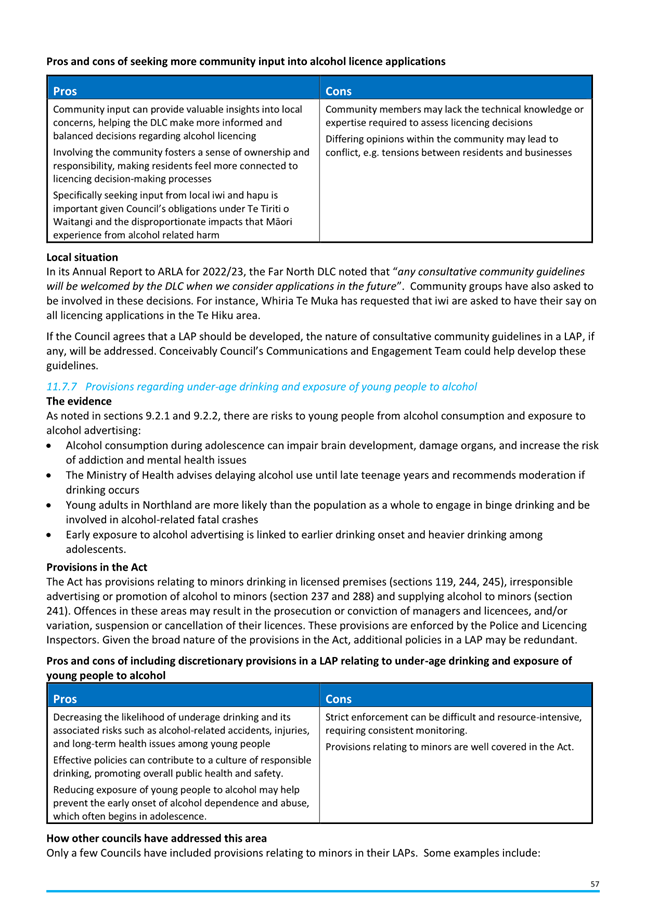

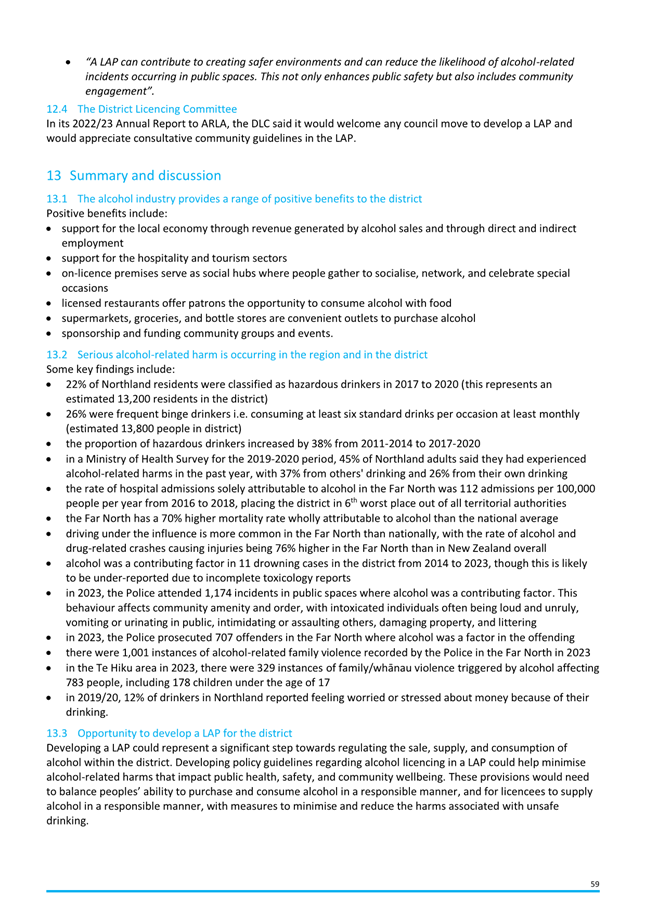
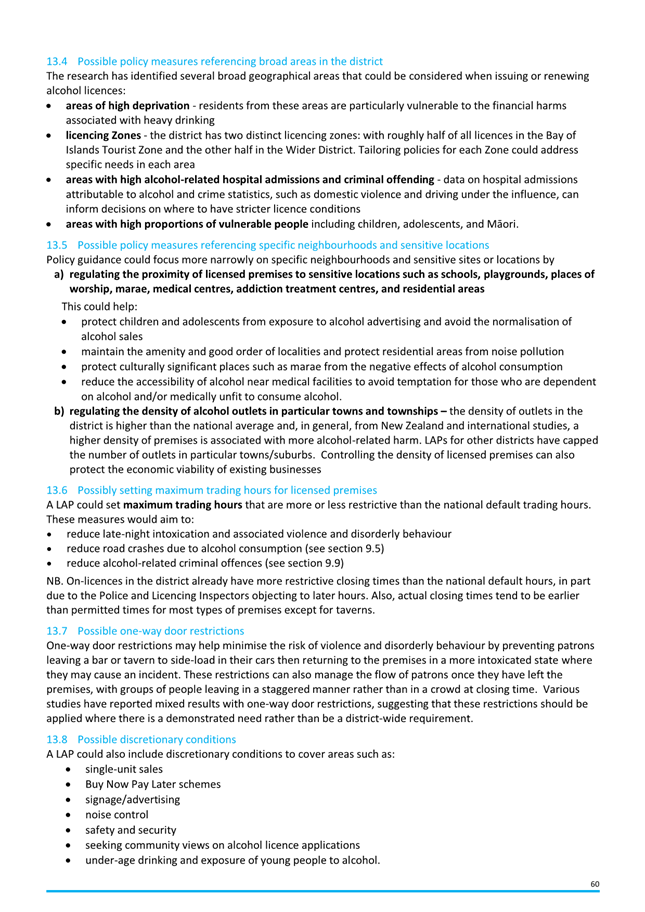
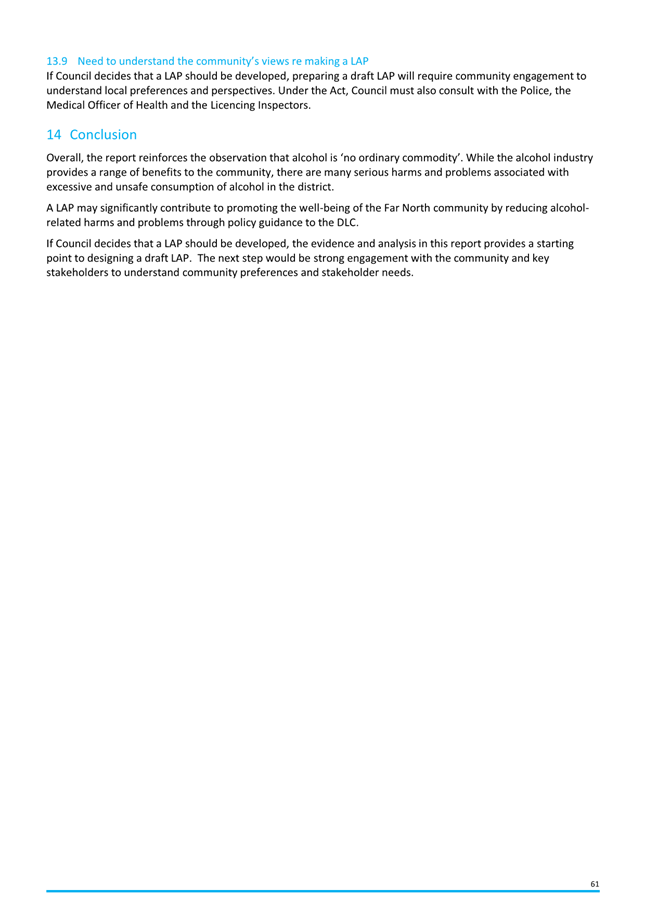

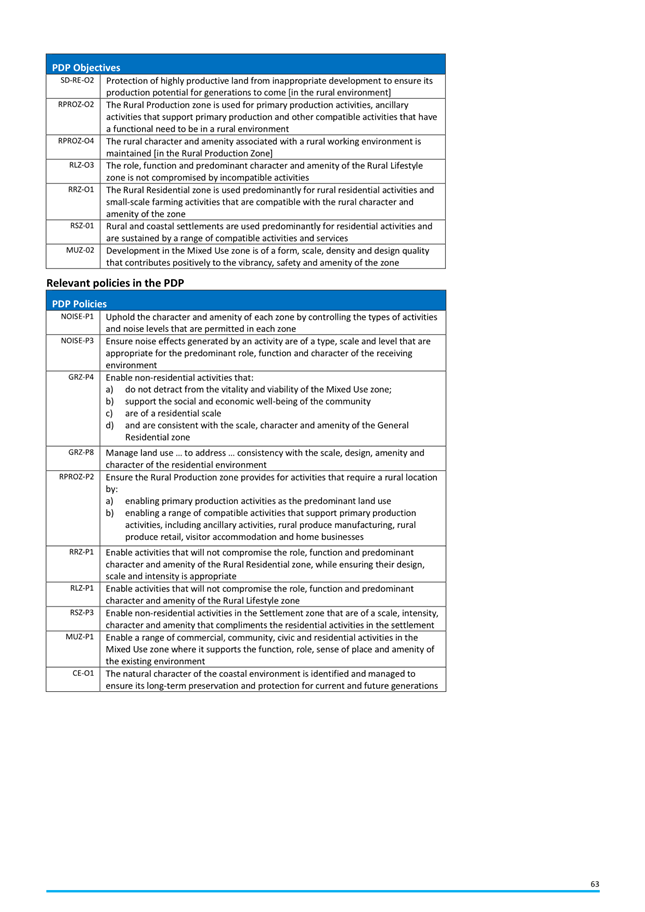
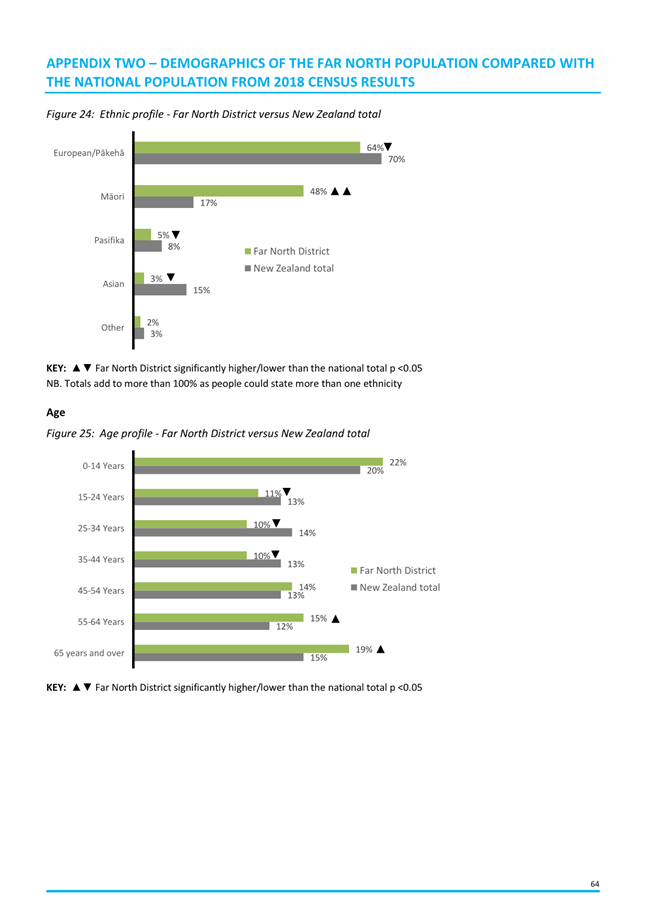
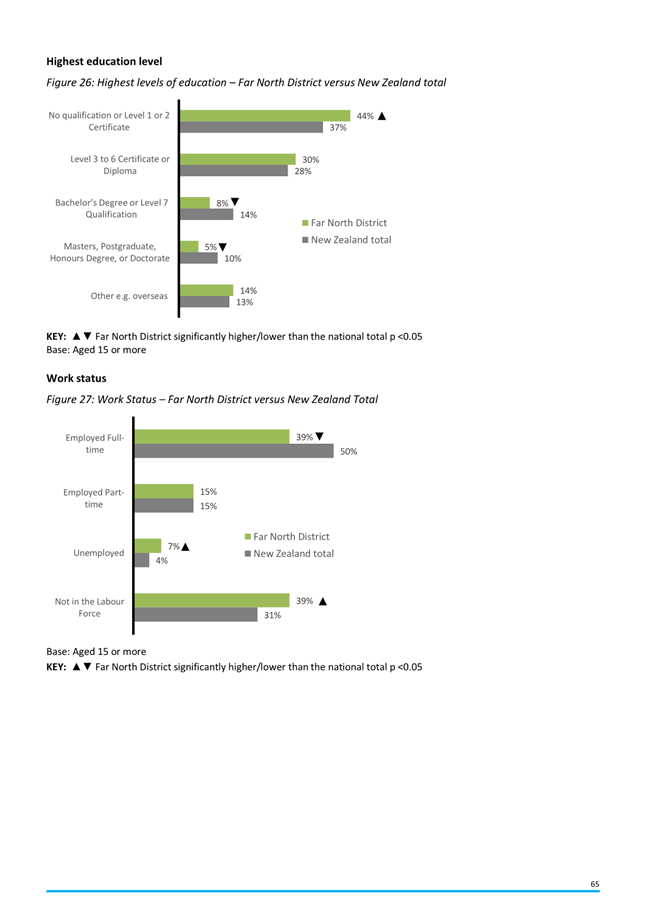
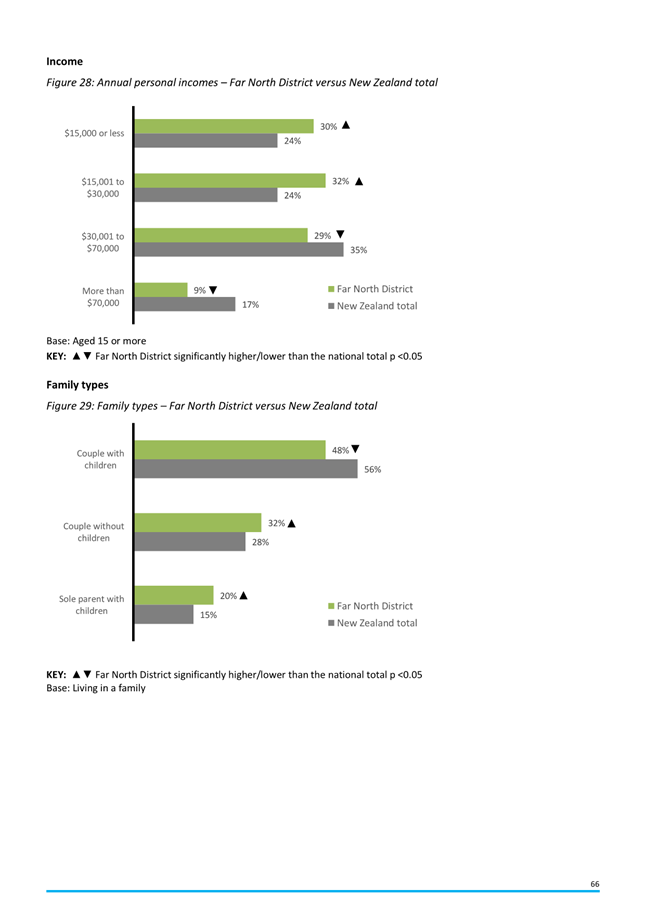
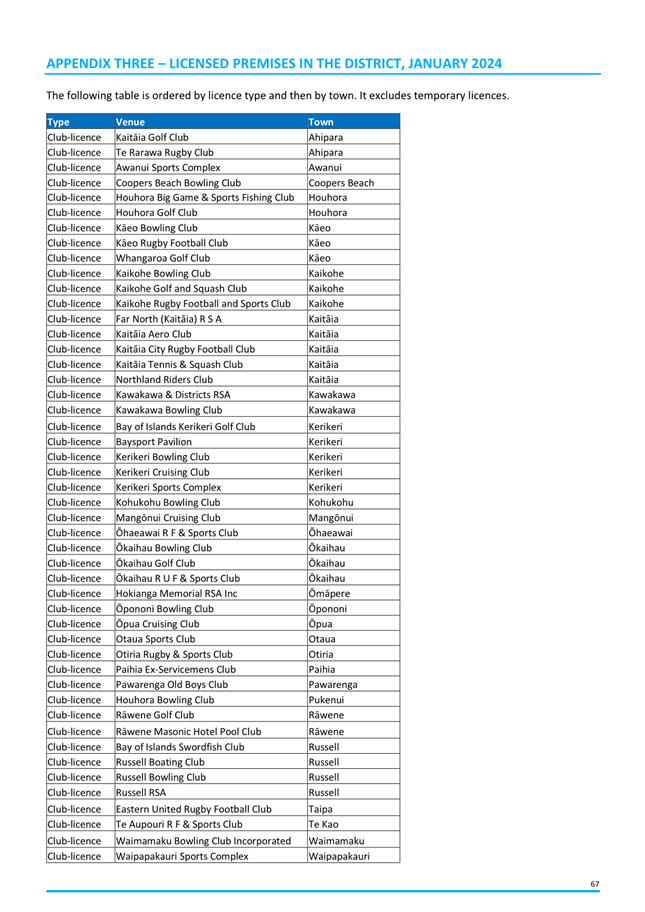
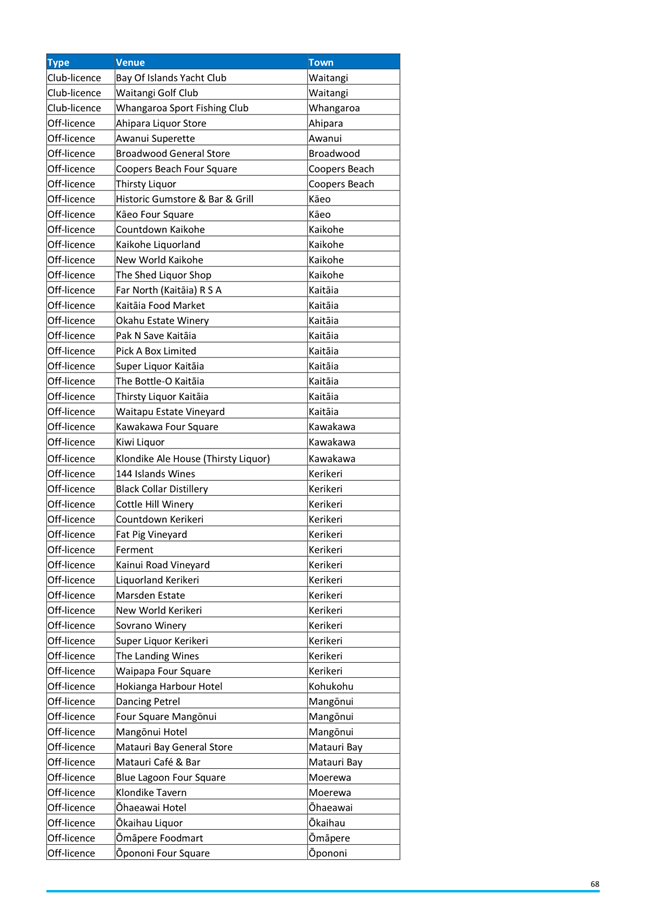
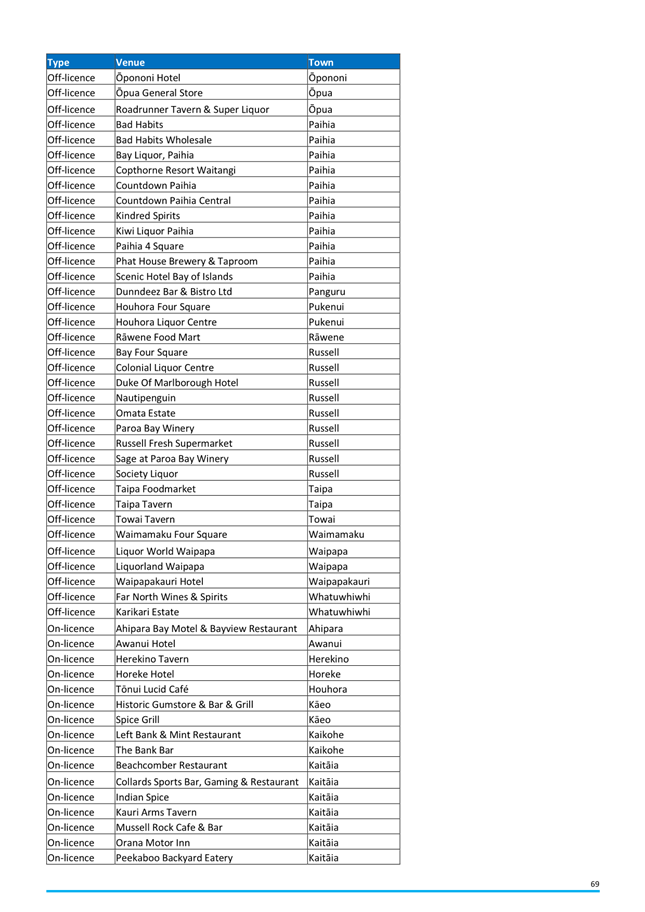
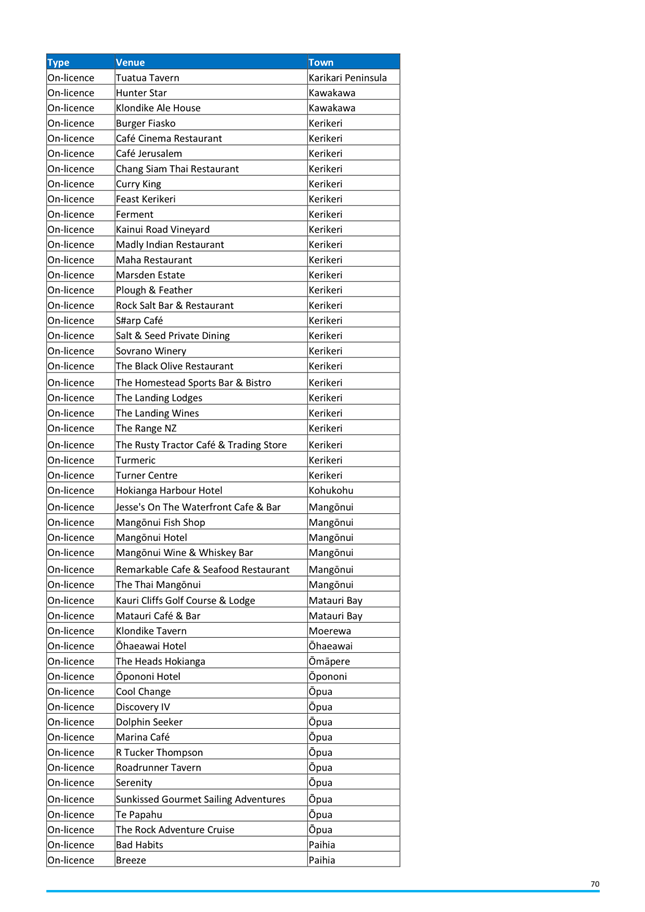
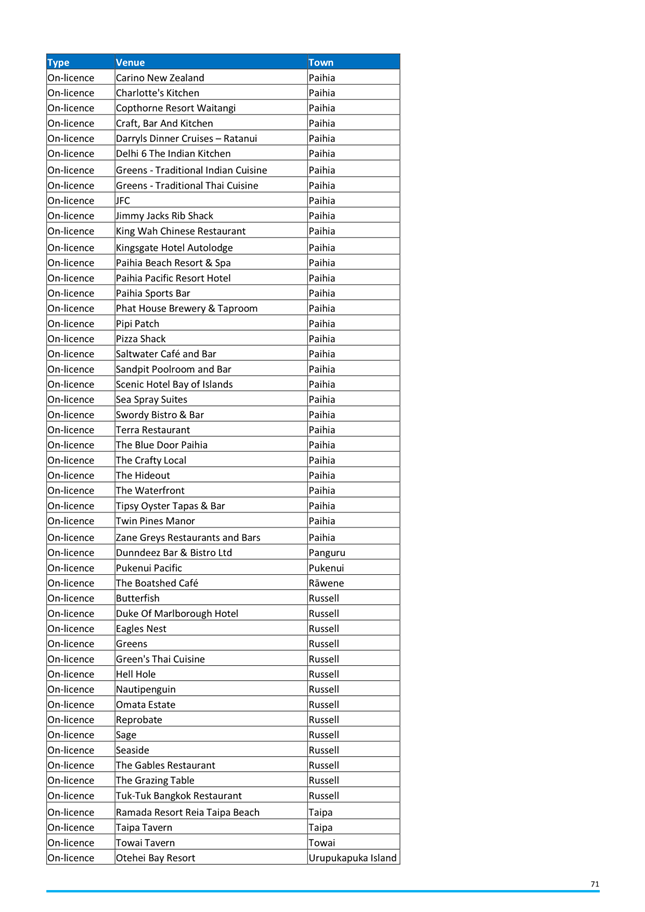

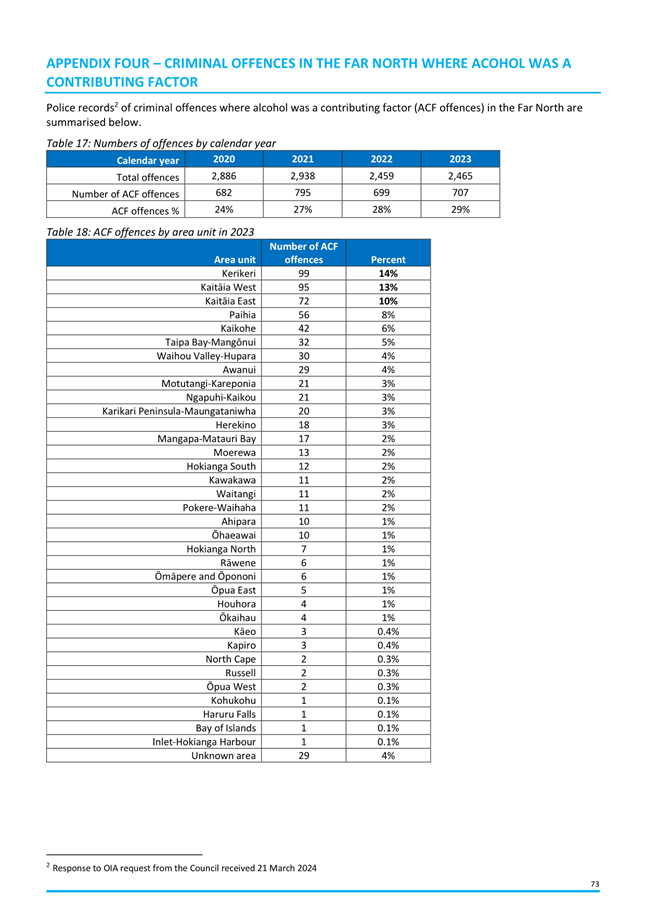
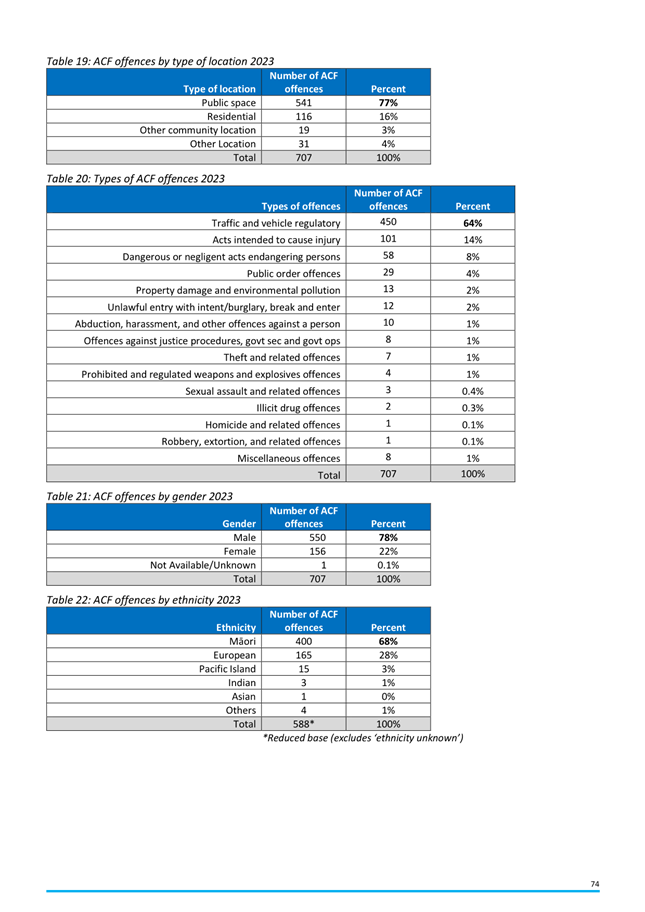
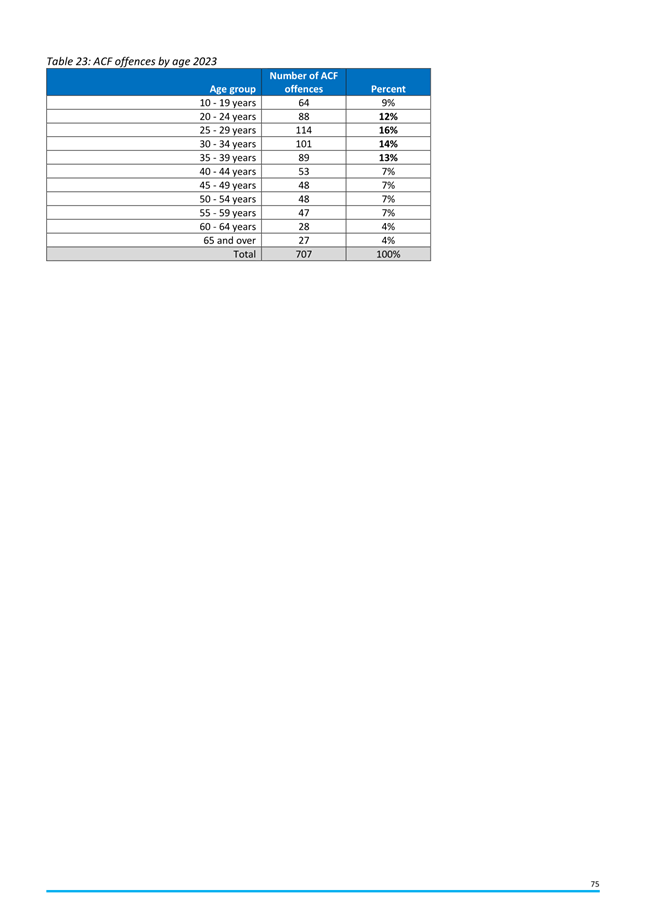
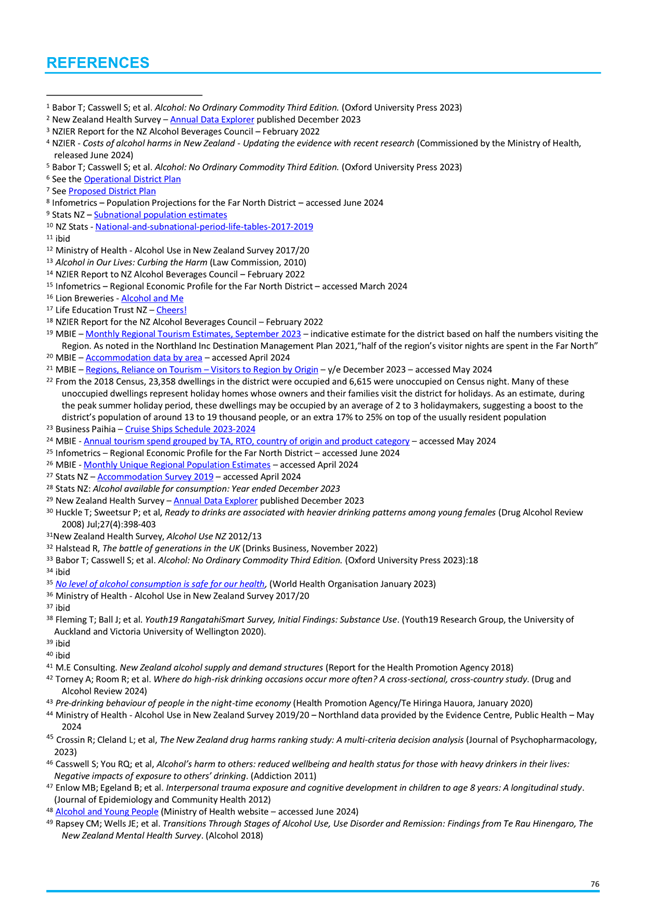
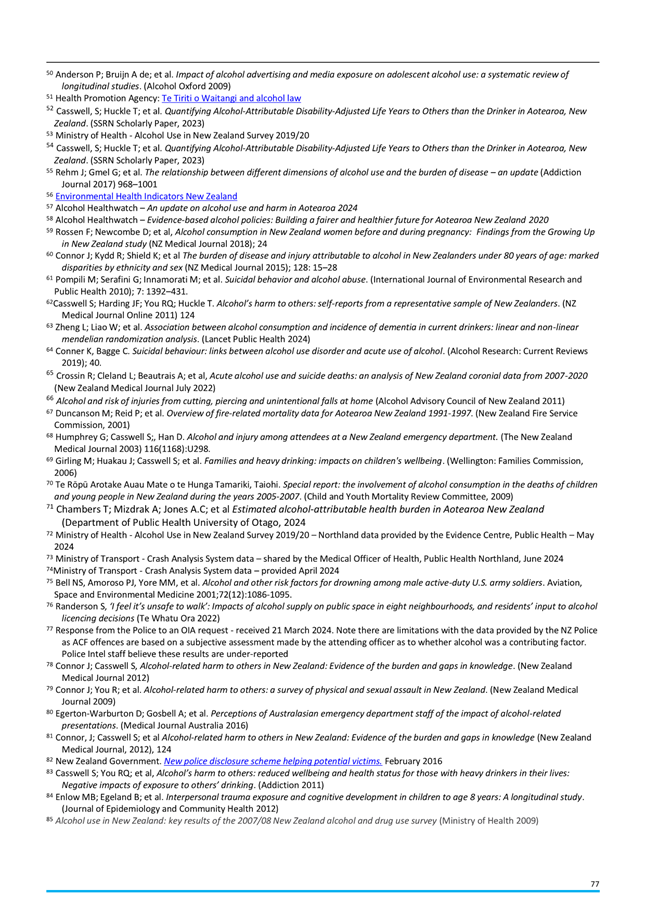
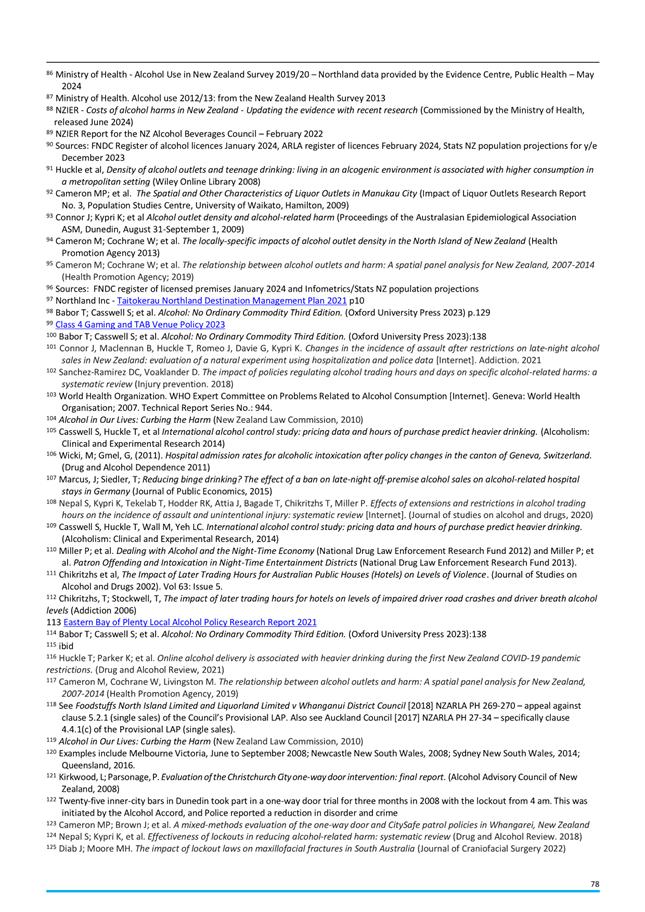
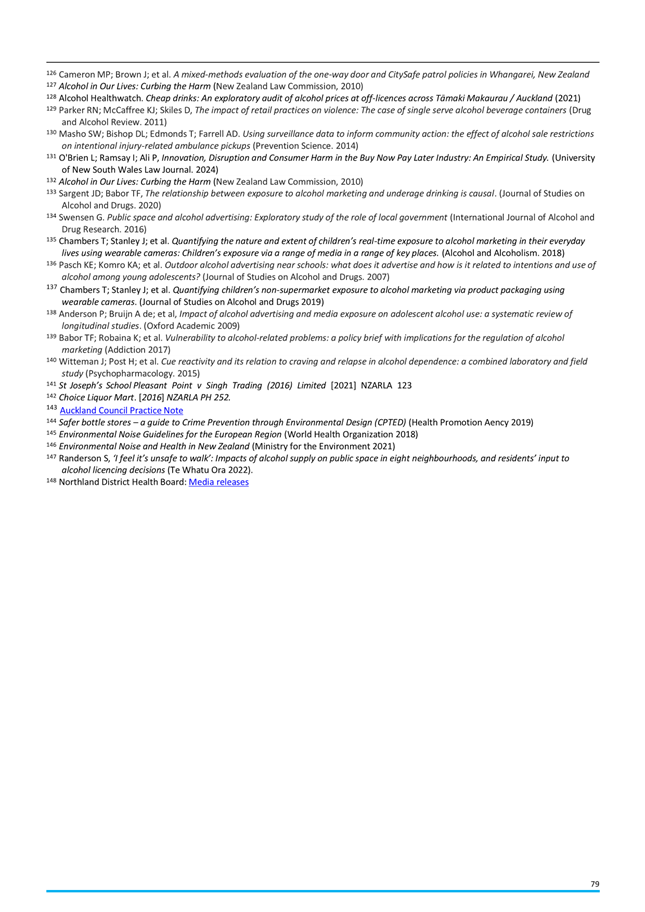
|
Ordinary Council Meeting Agenda
|
12 December 2024
|
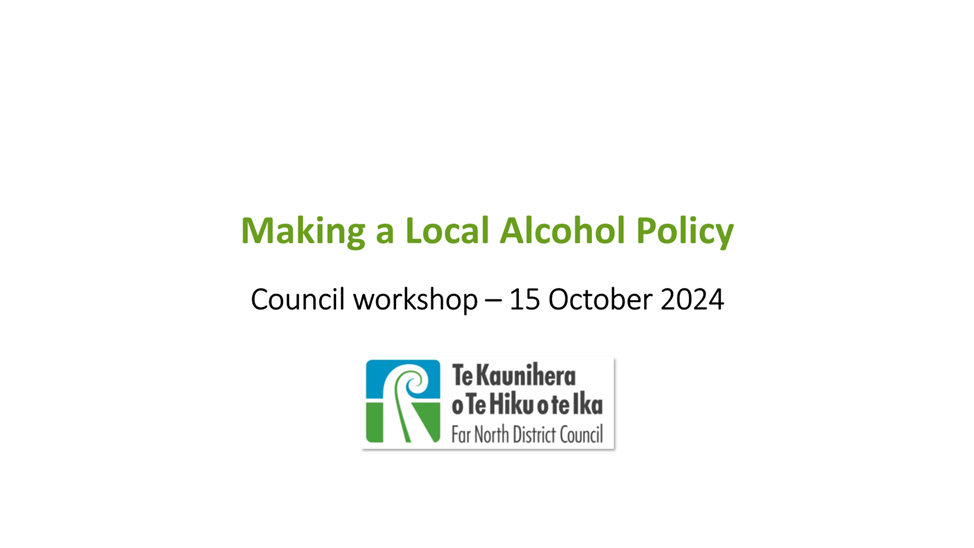
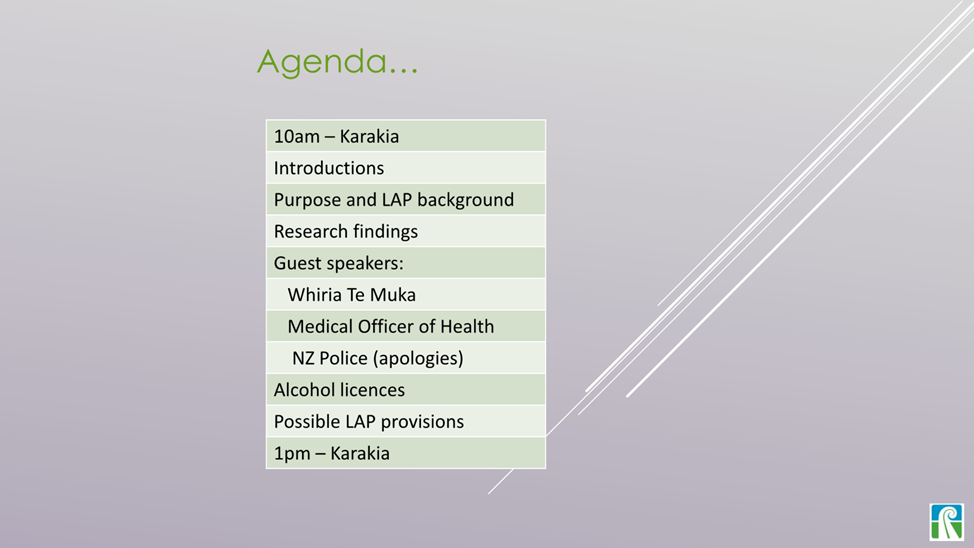

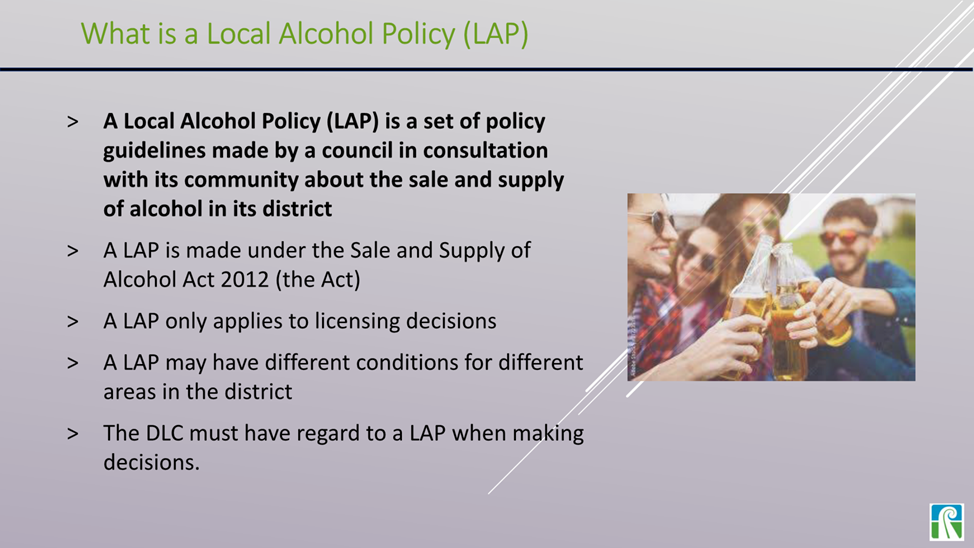
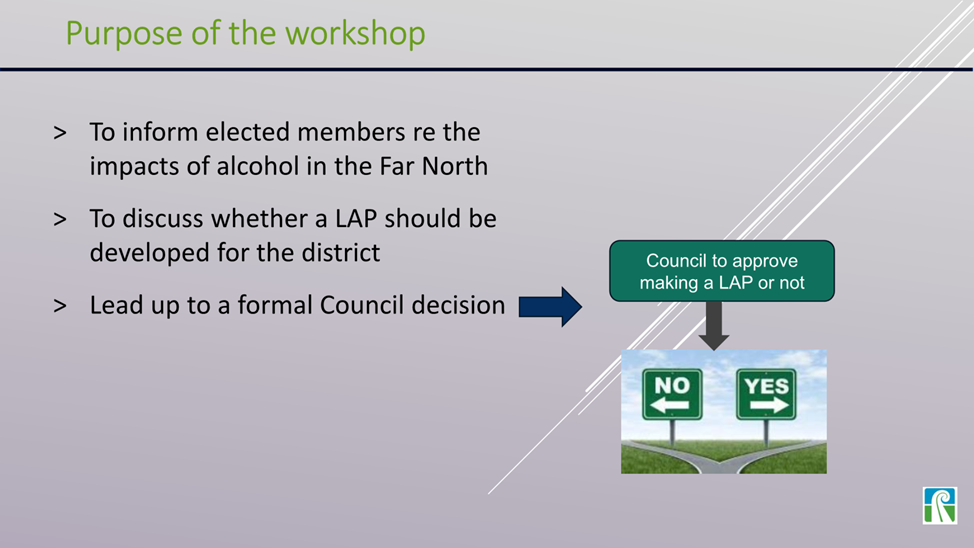
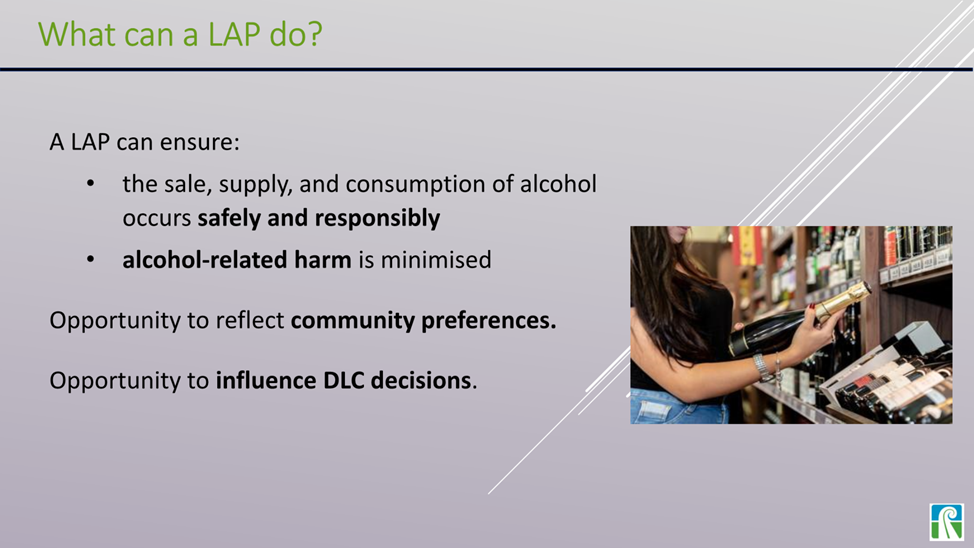
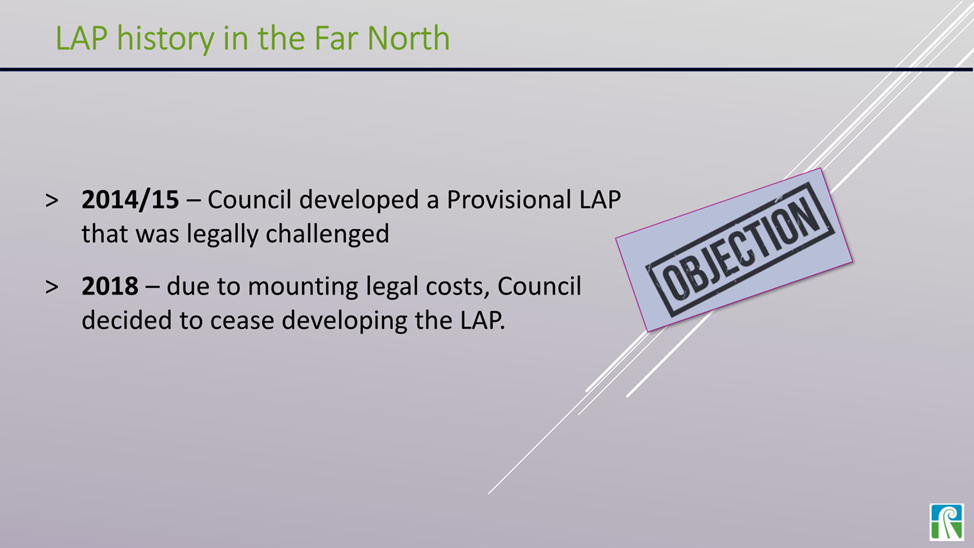
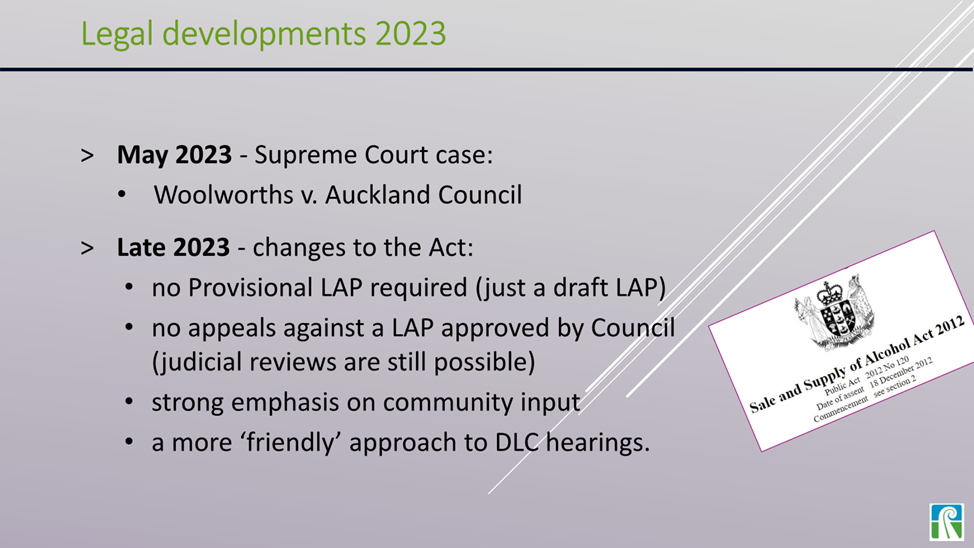
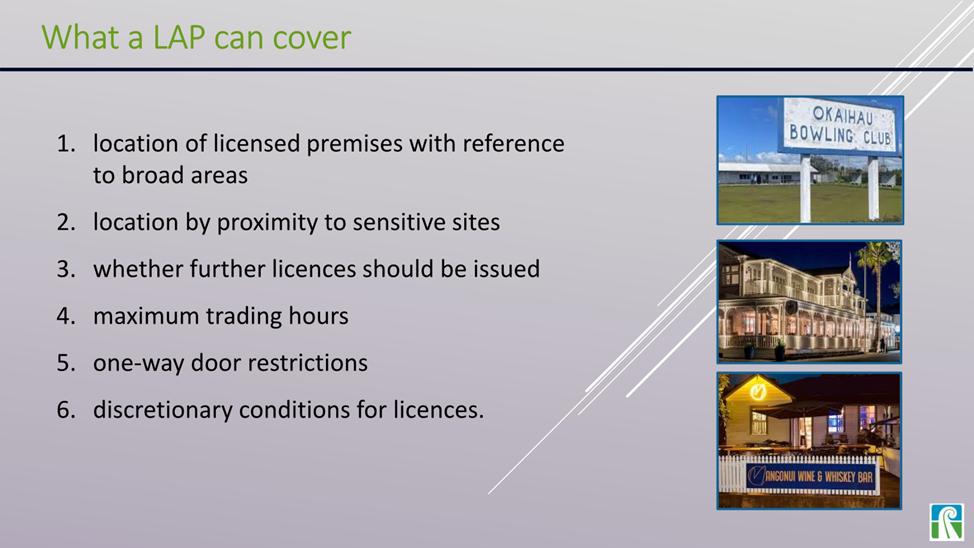


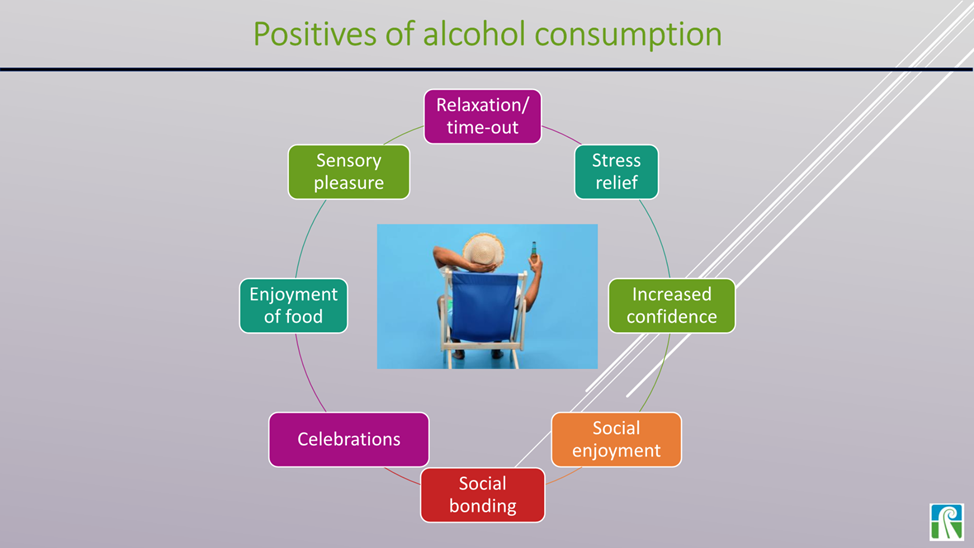
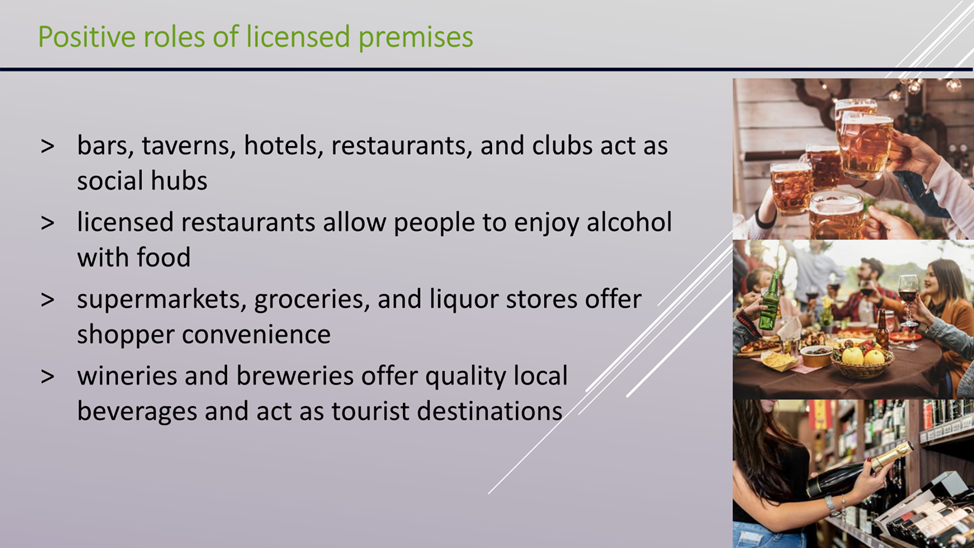
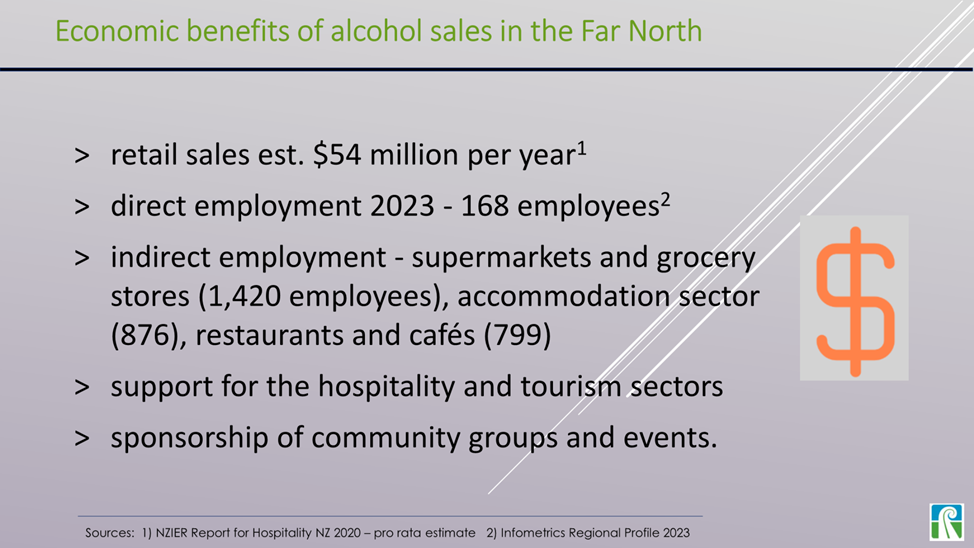


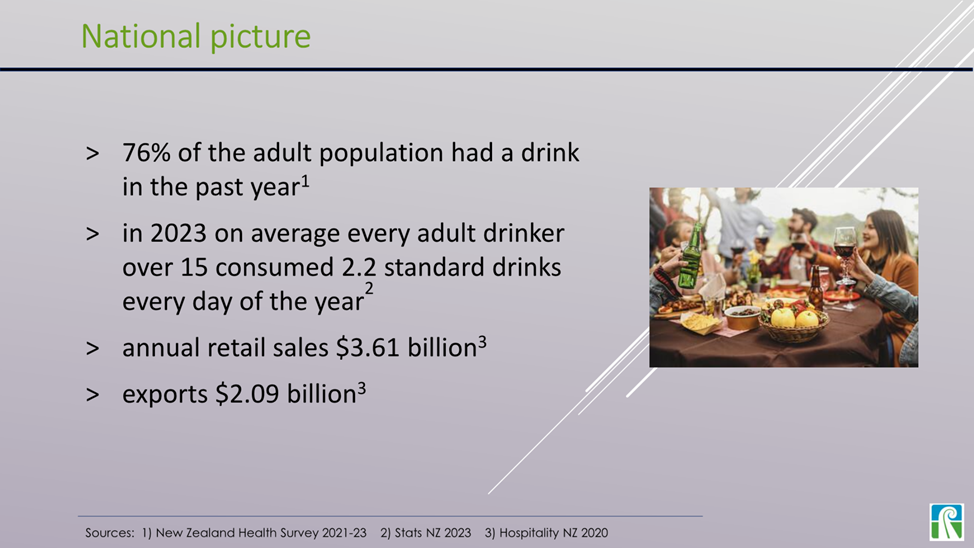
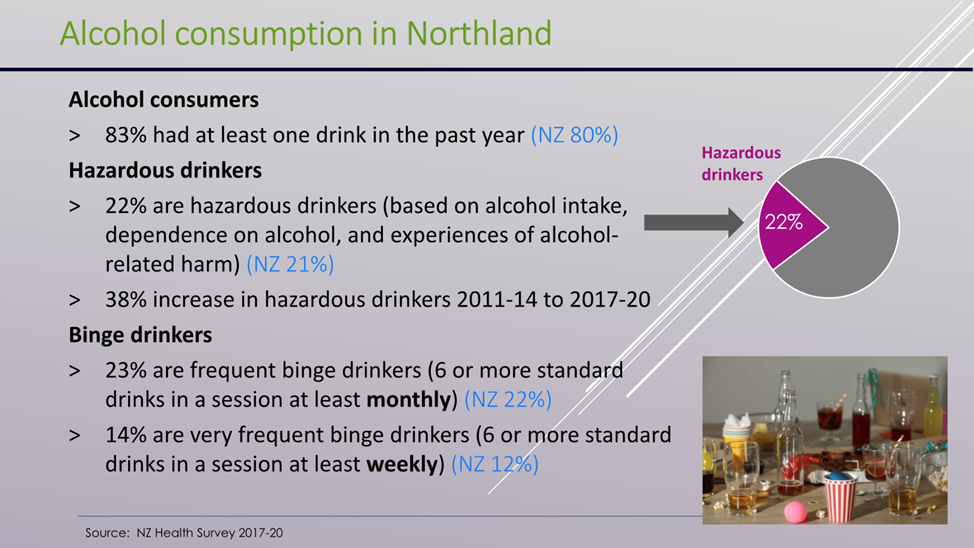
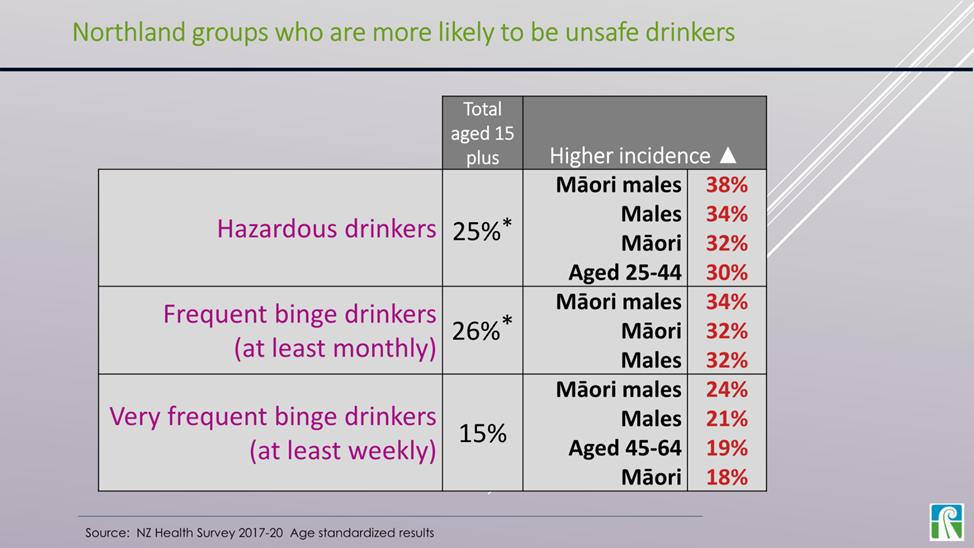
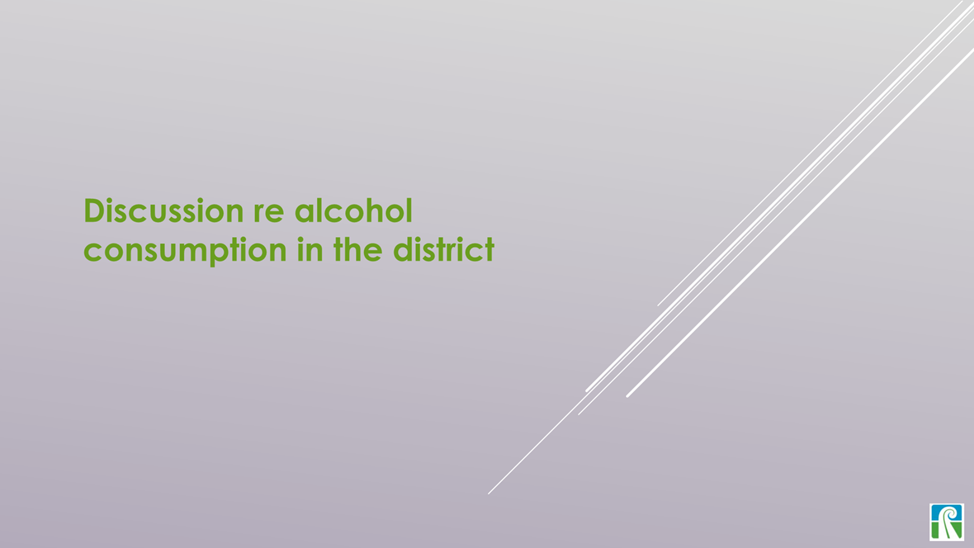

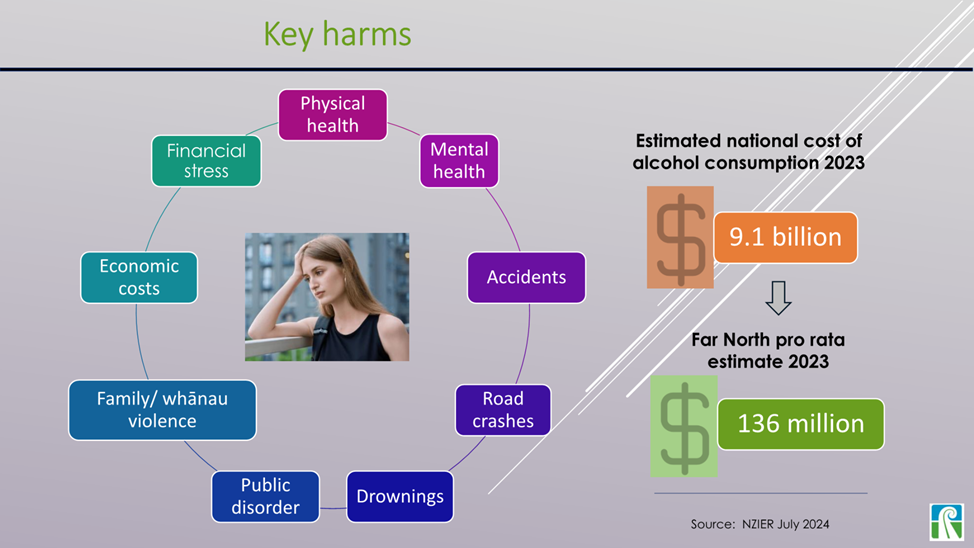
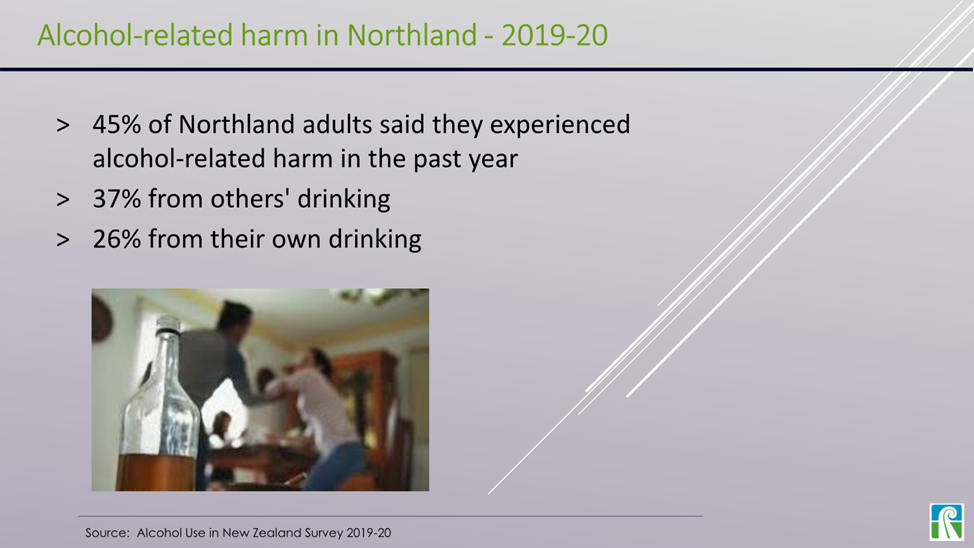

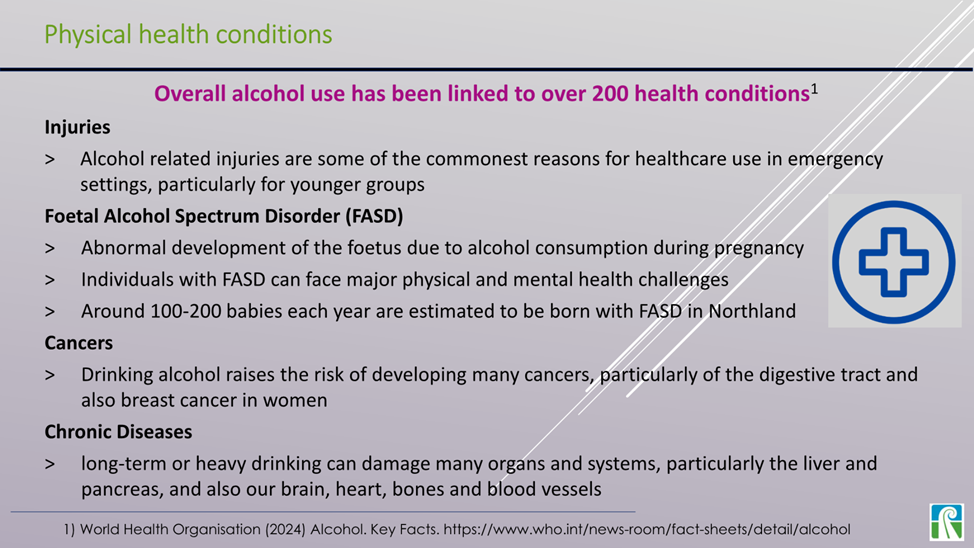
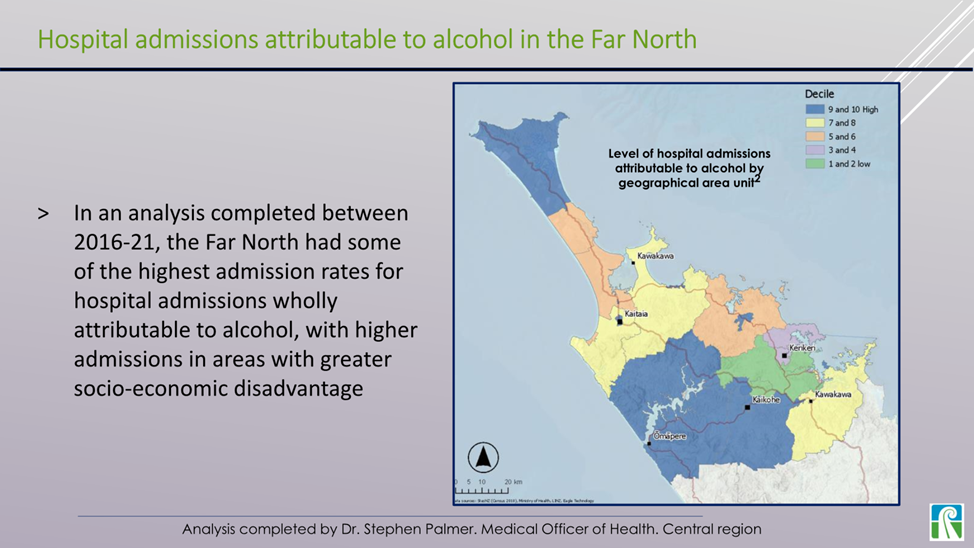
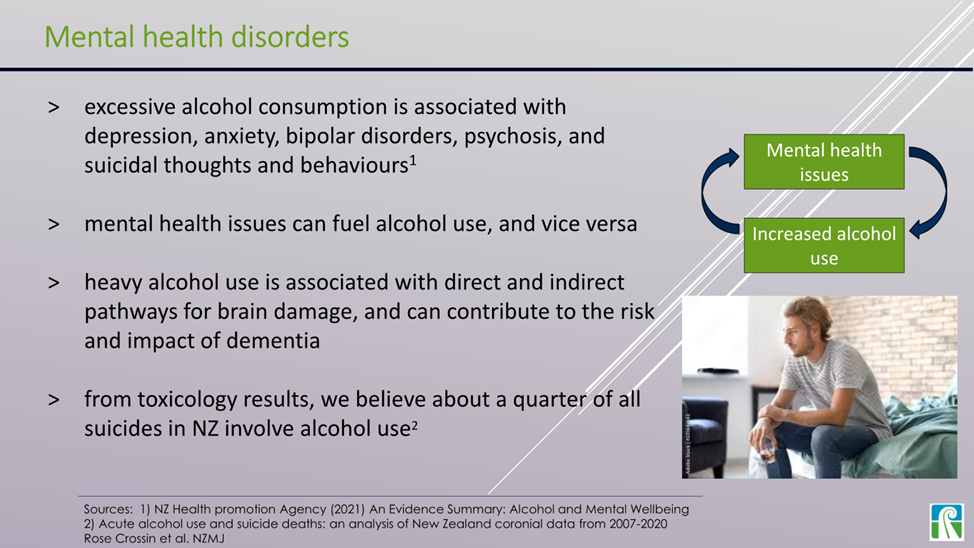

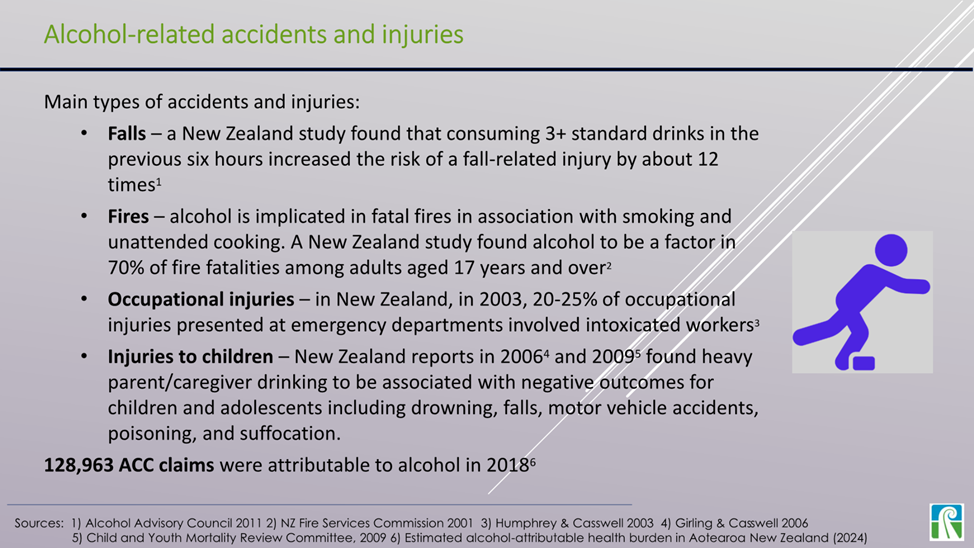
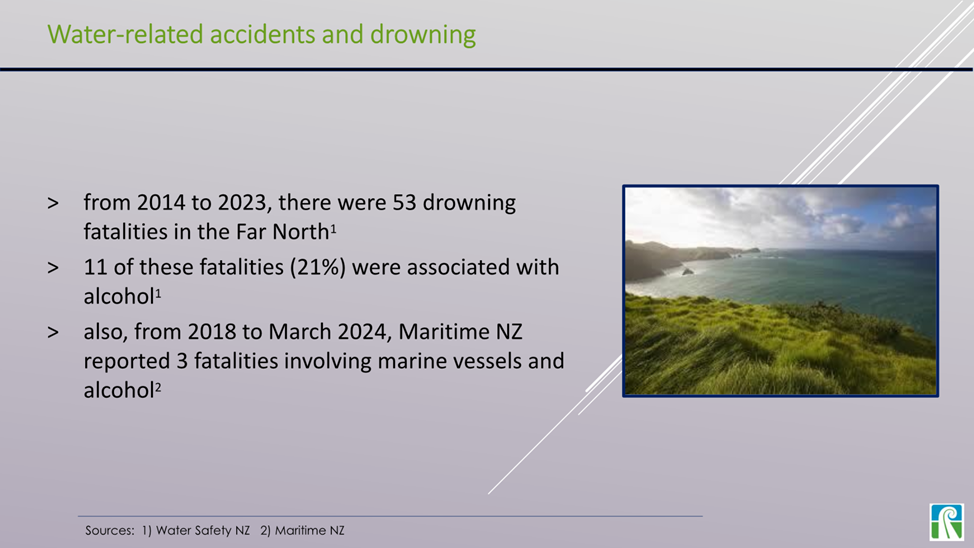
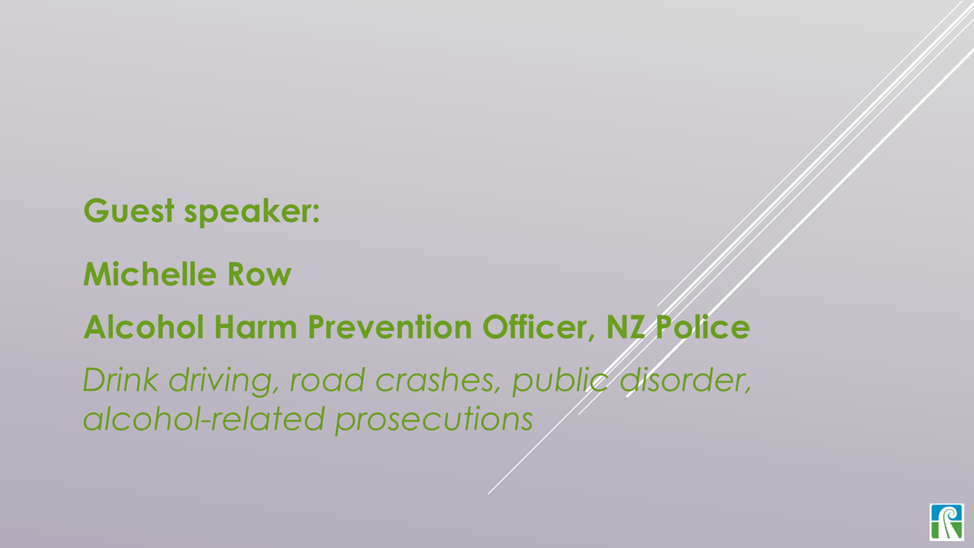
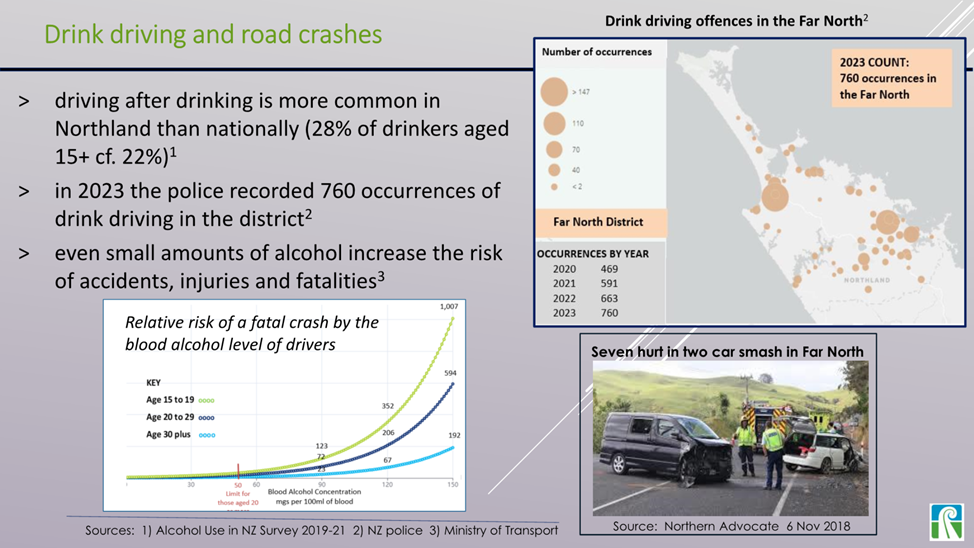
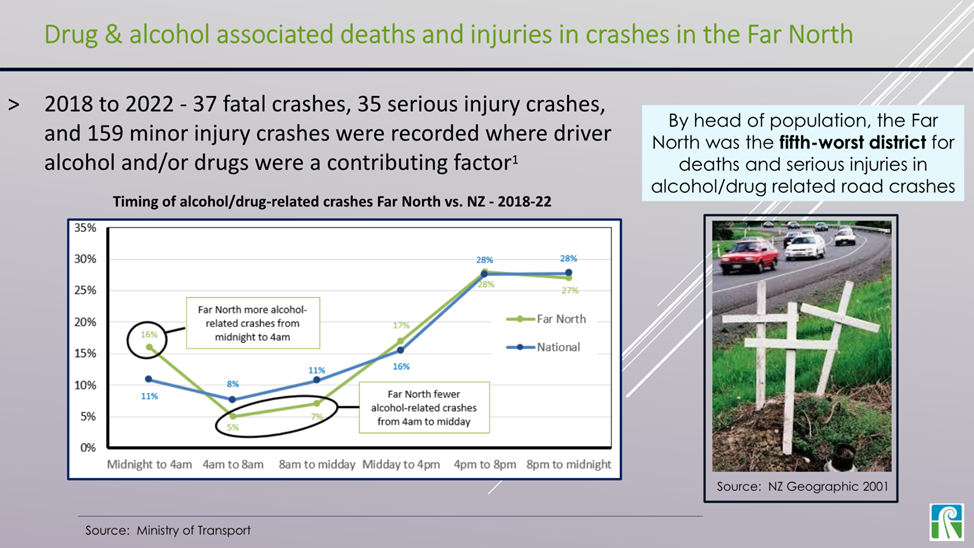
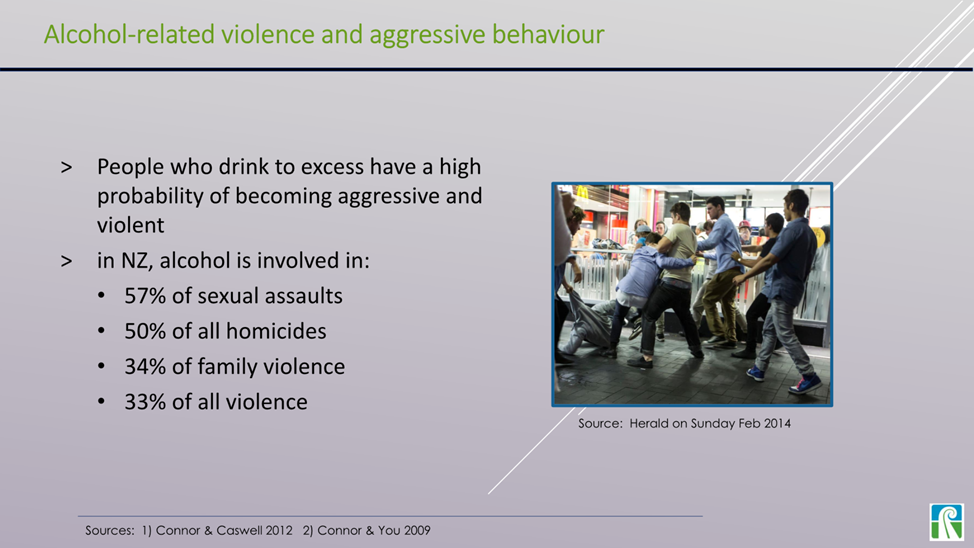
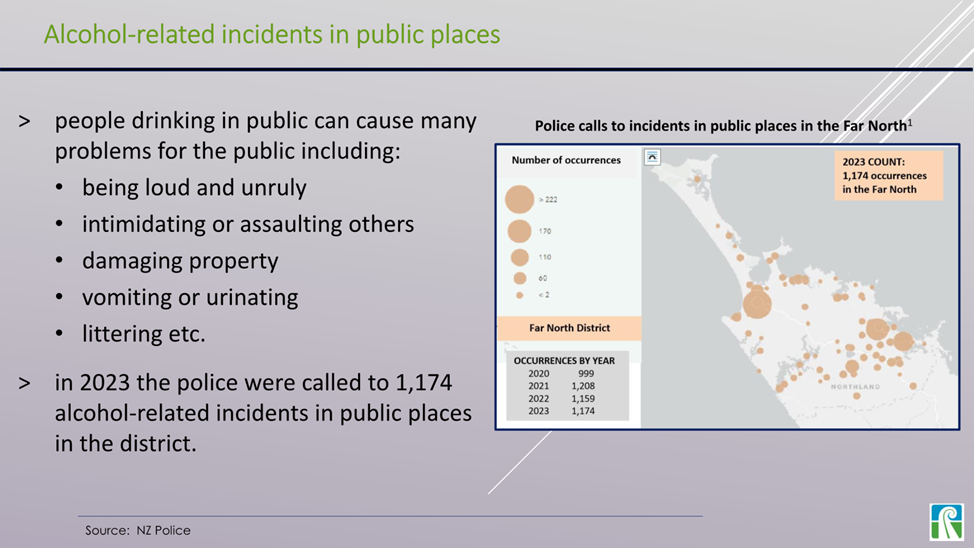
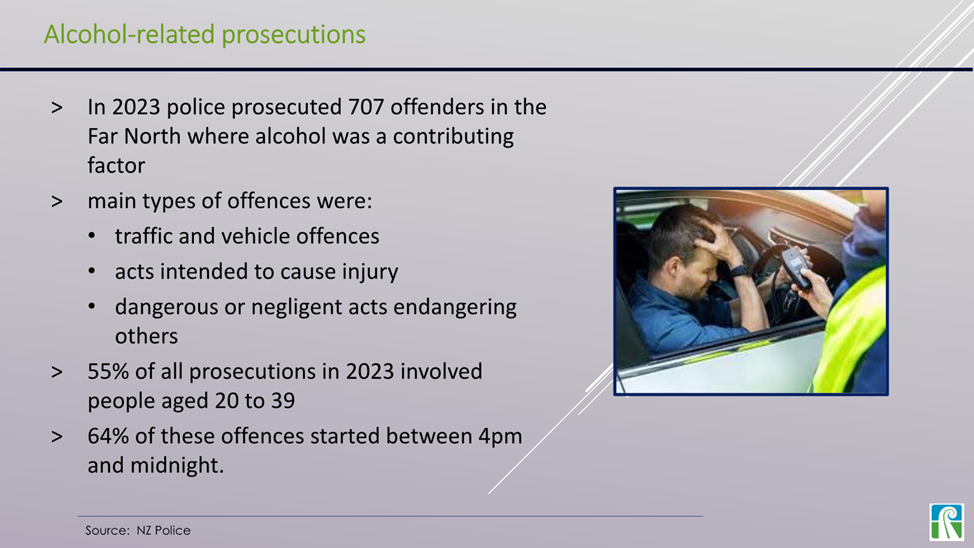
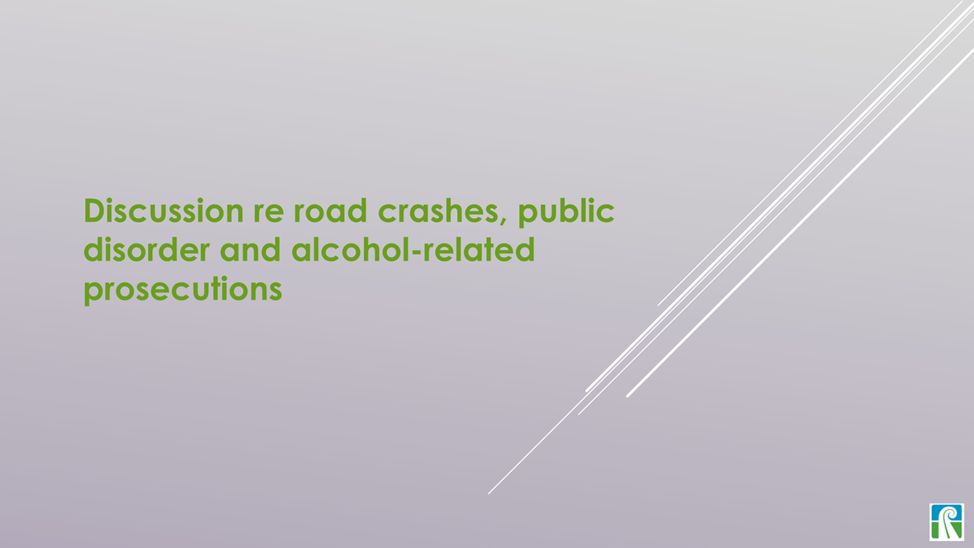
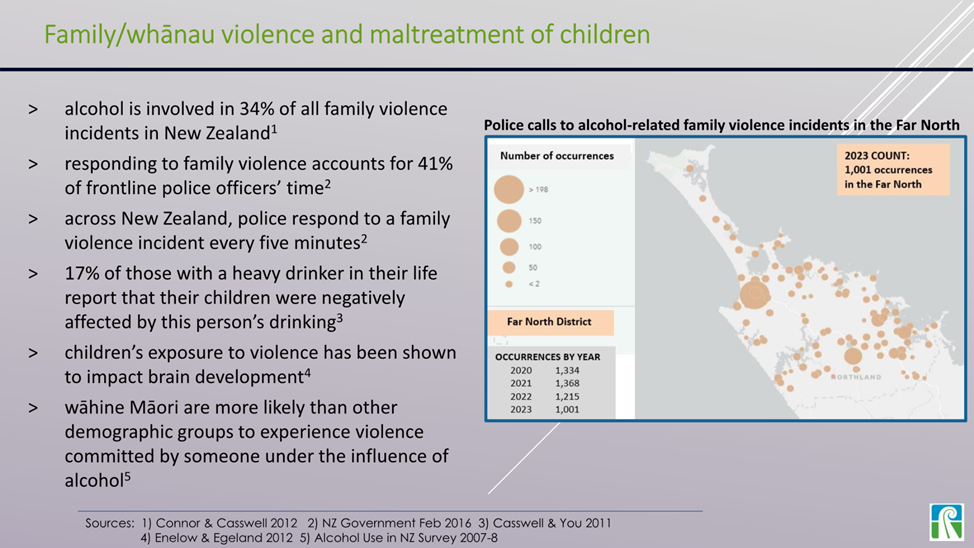
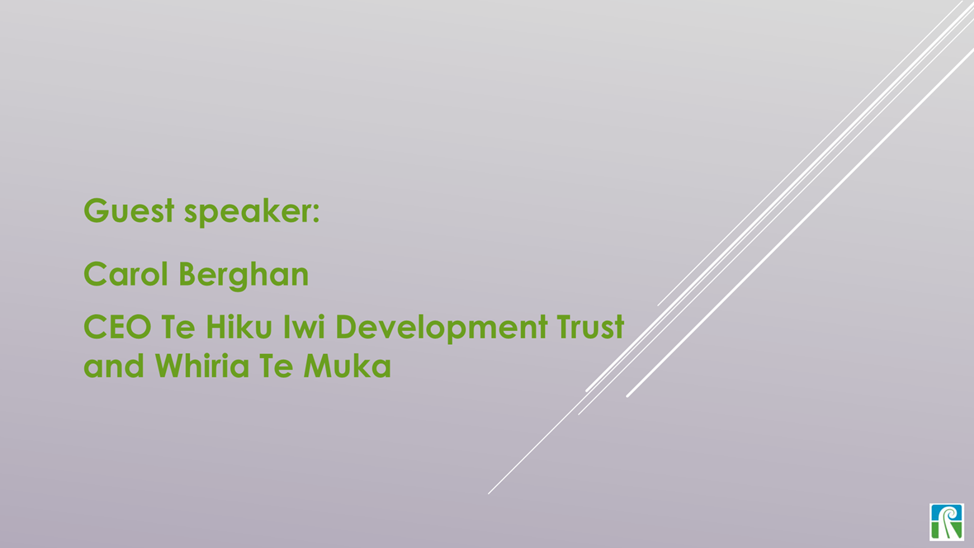
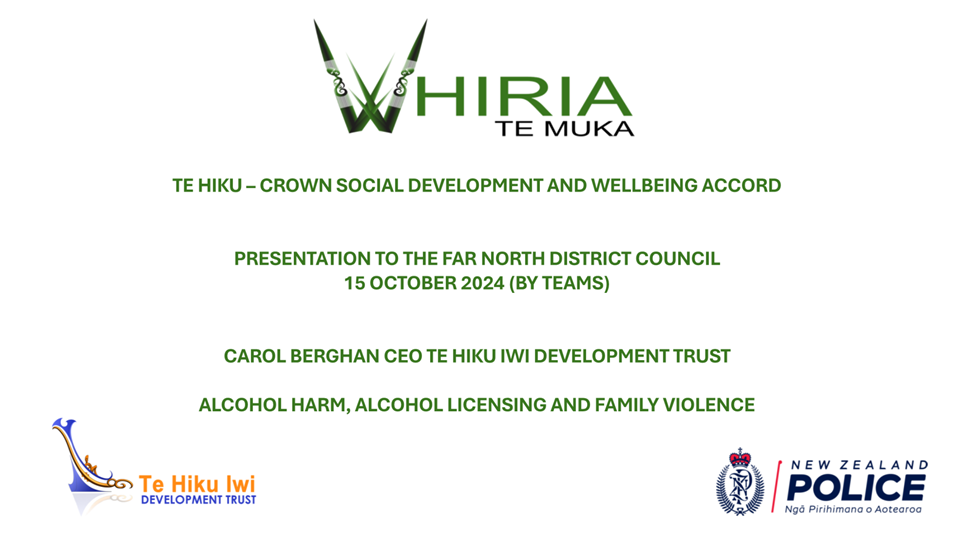
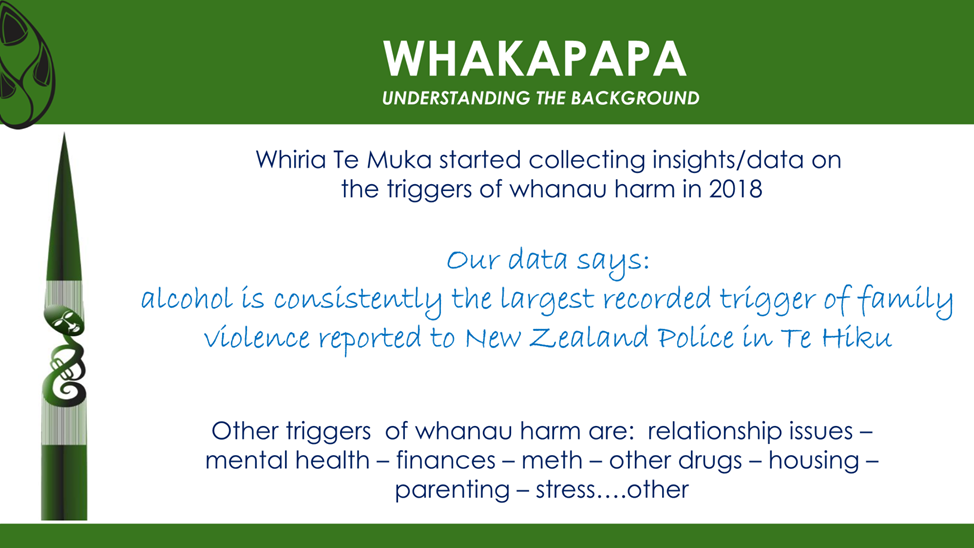
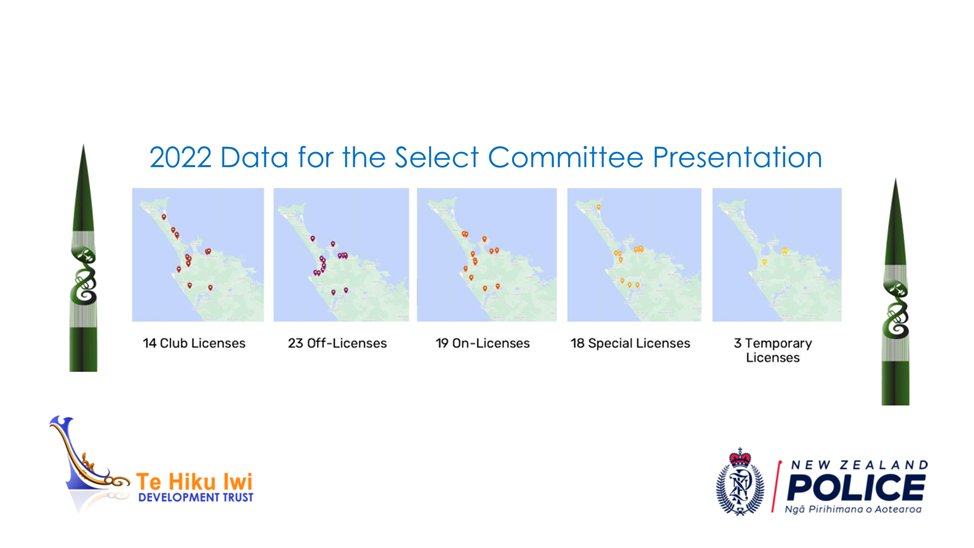

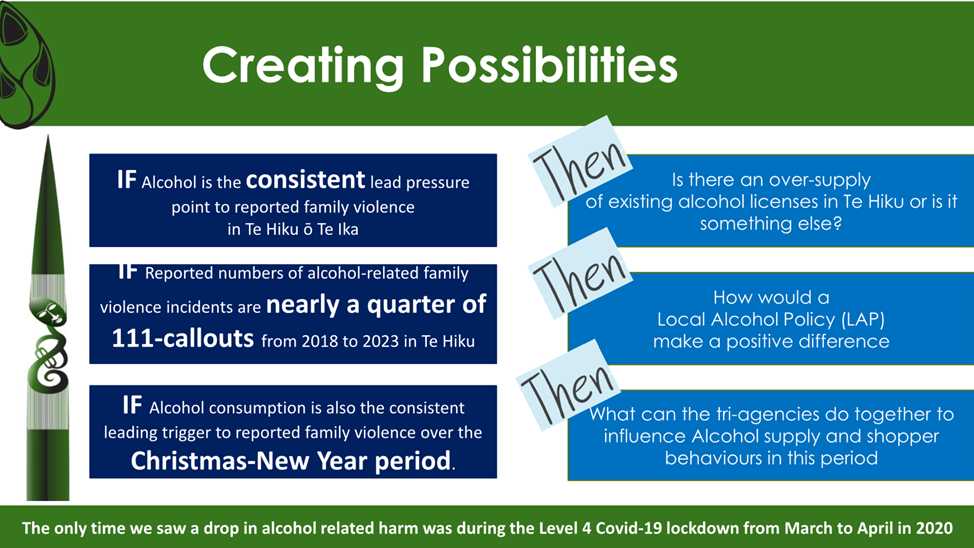
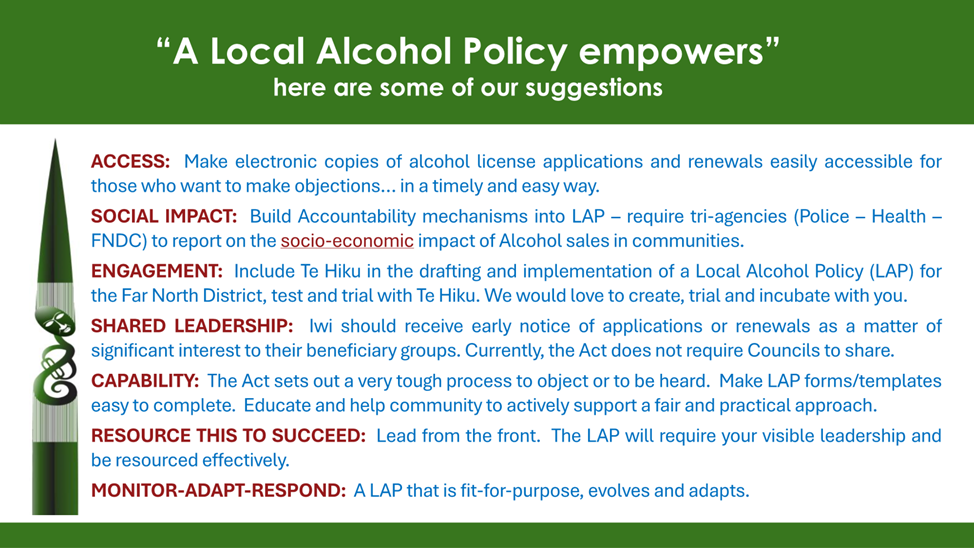
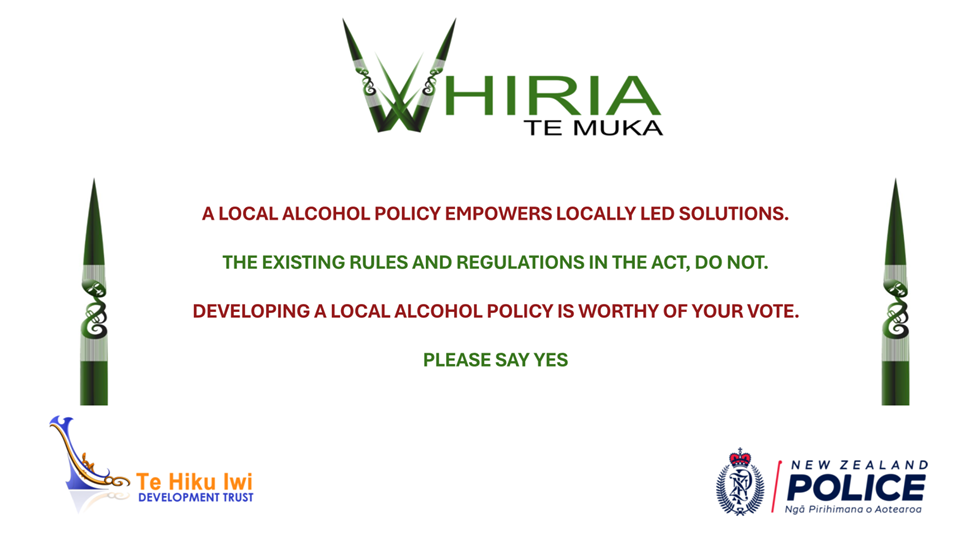

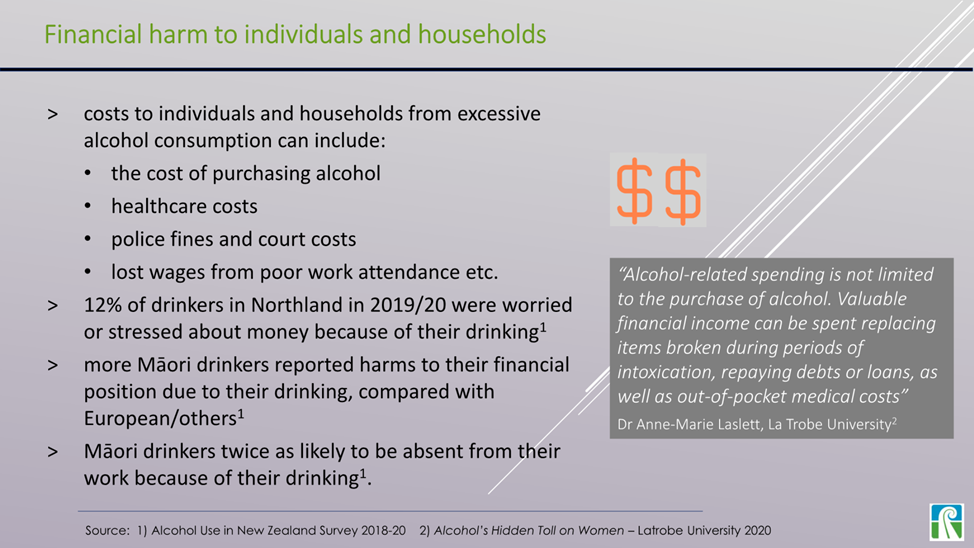
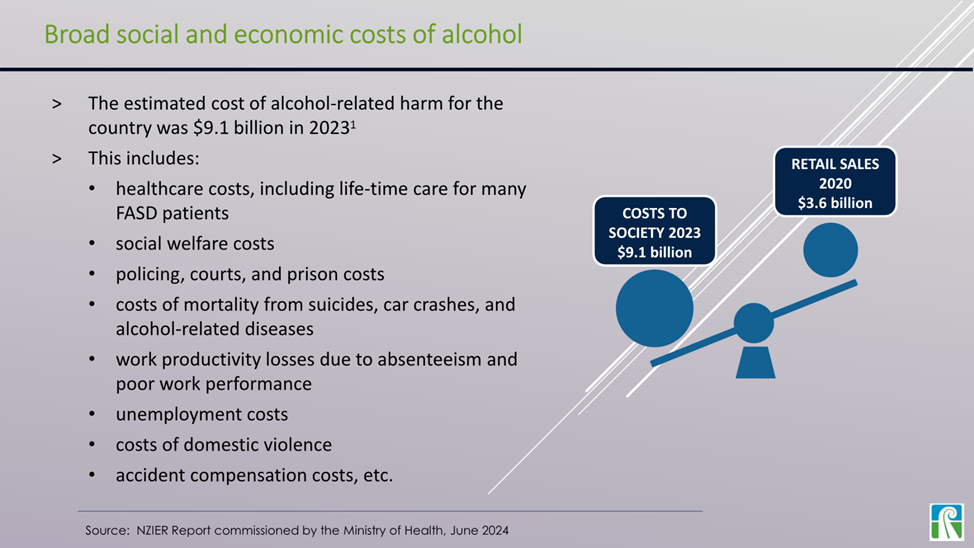

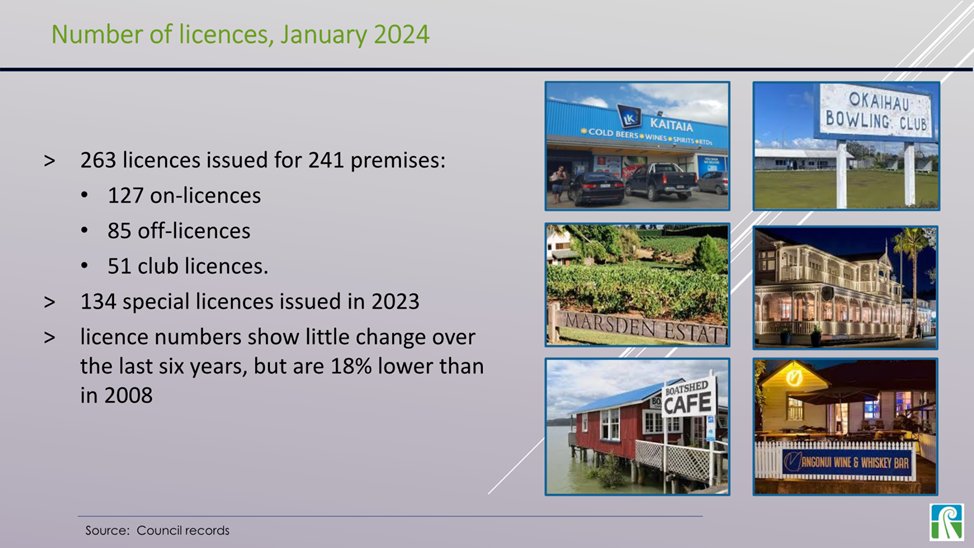
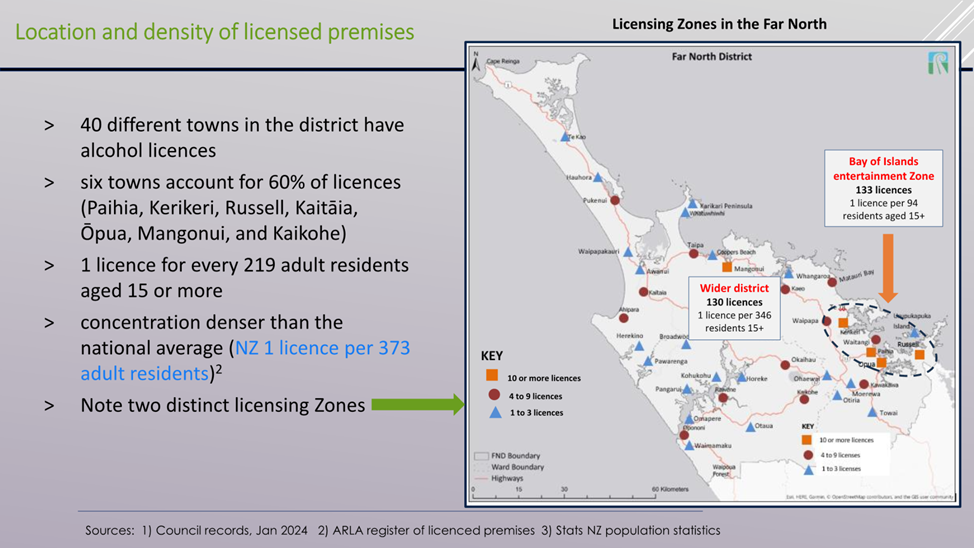
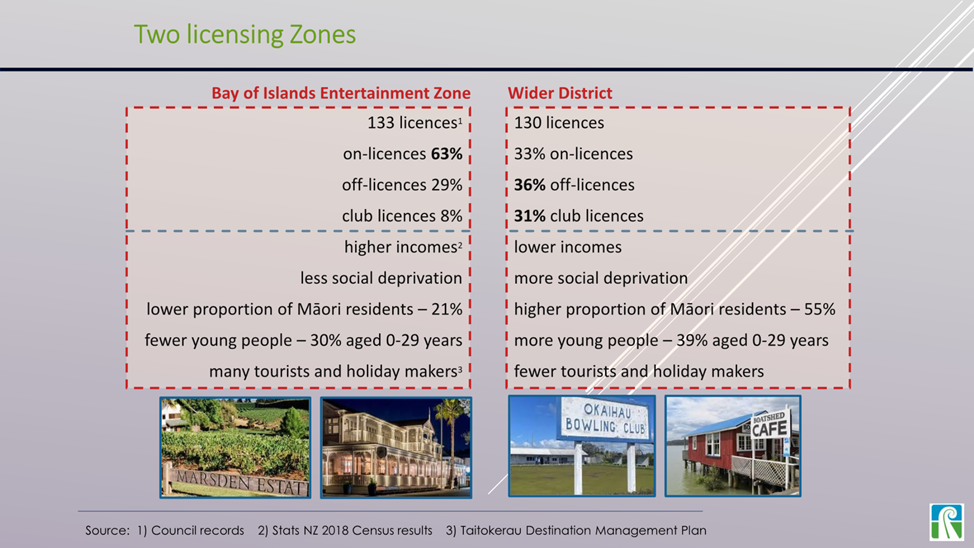
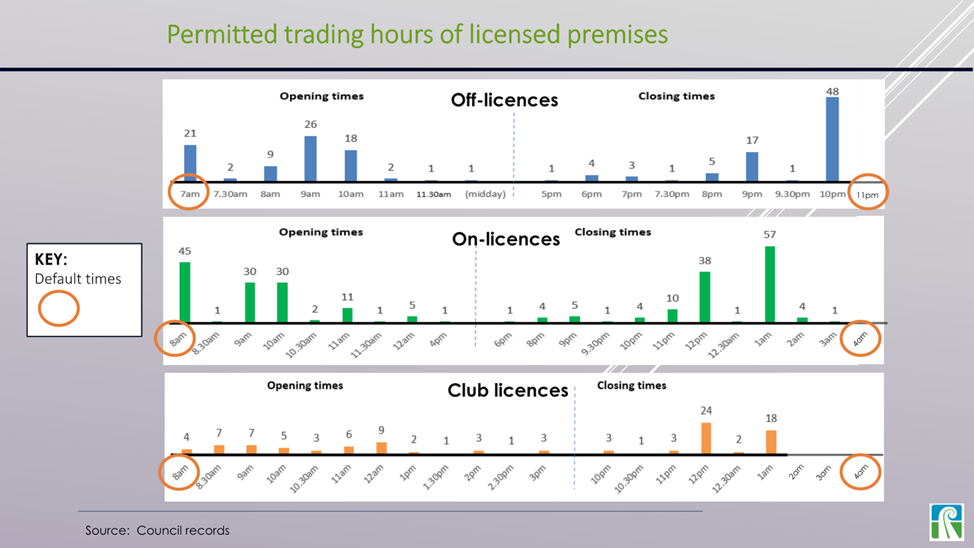
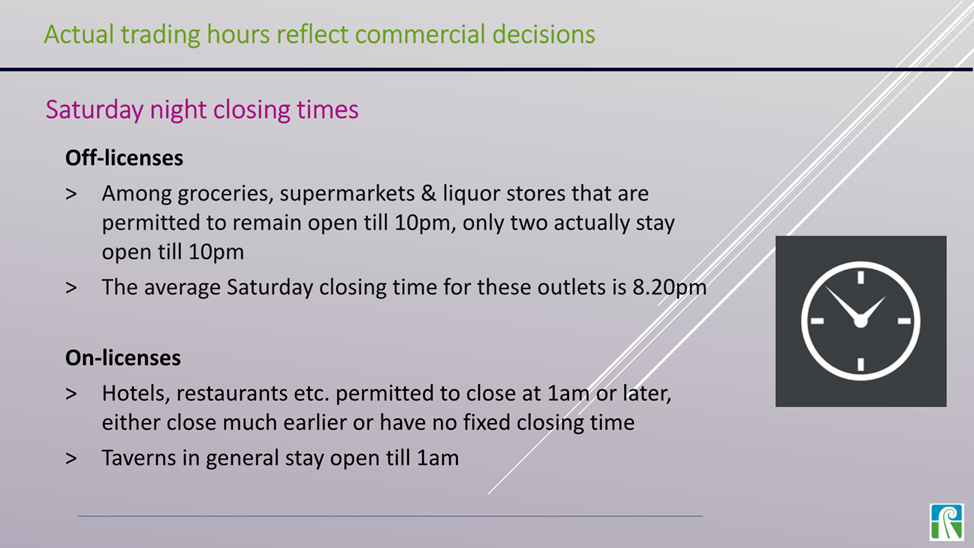


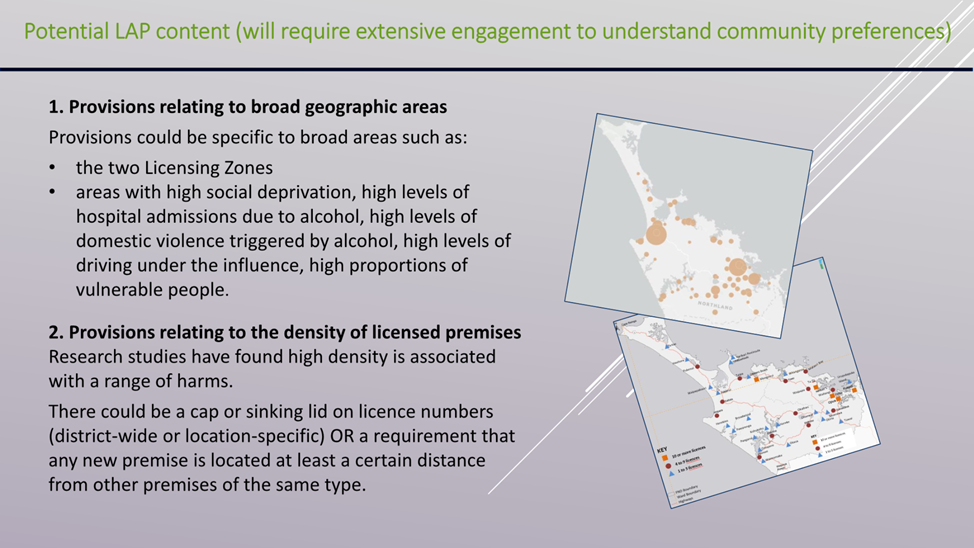
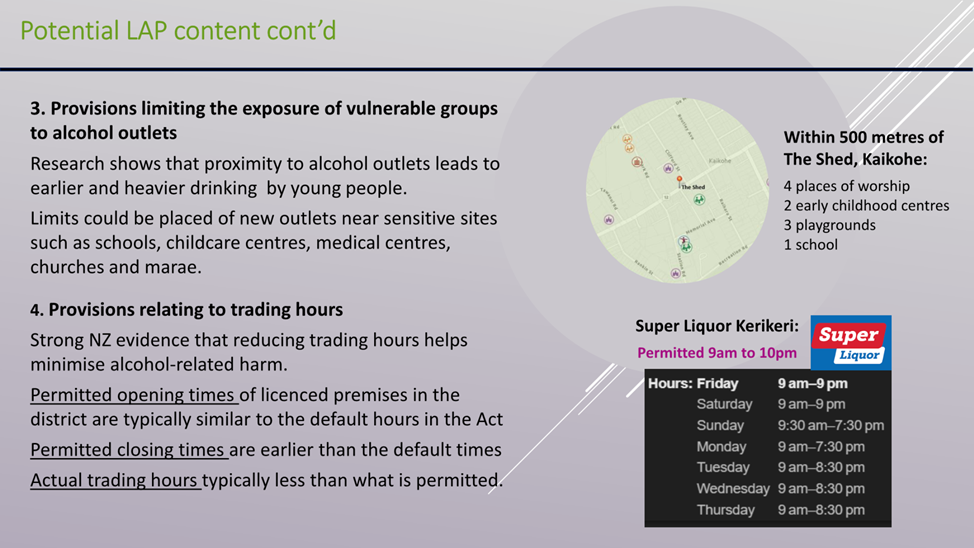
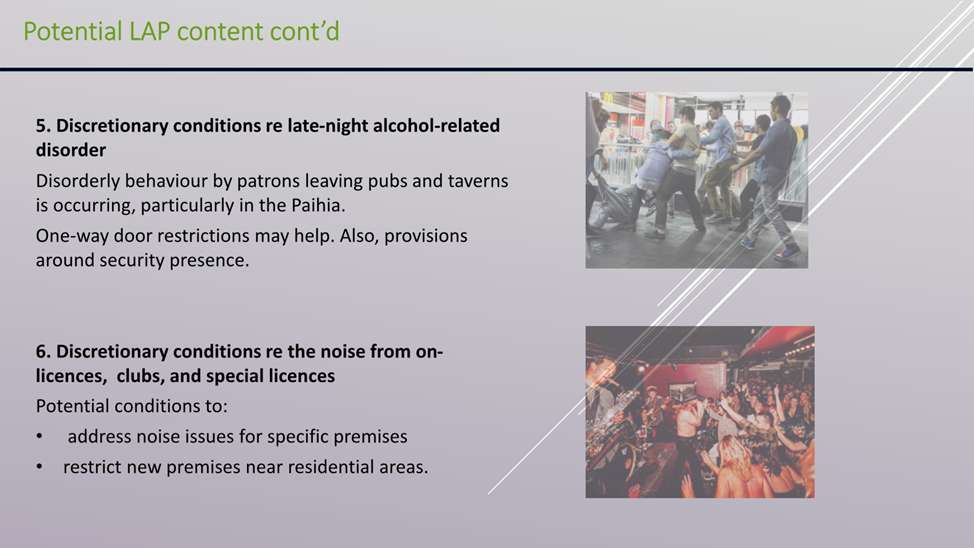
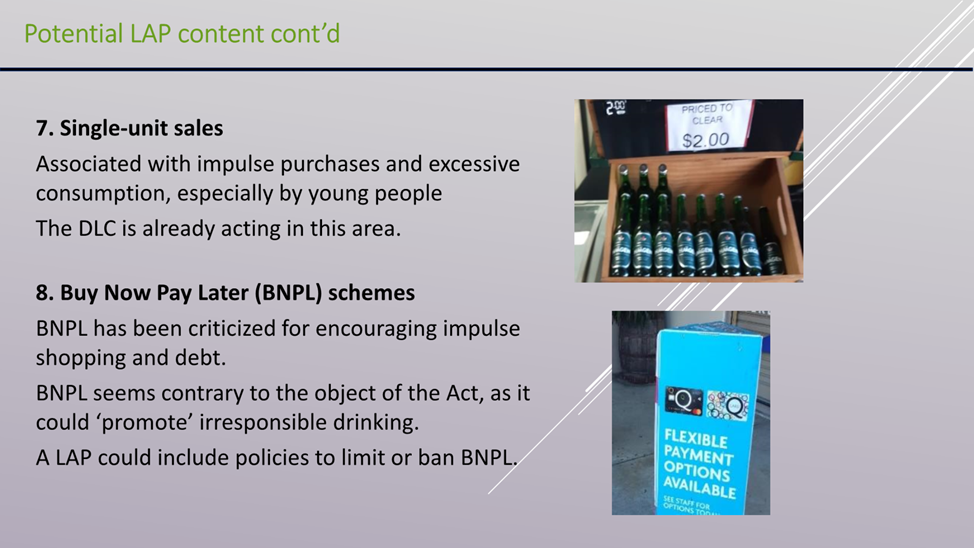
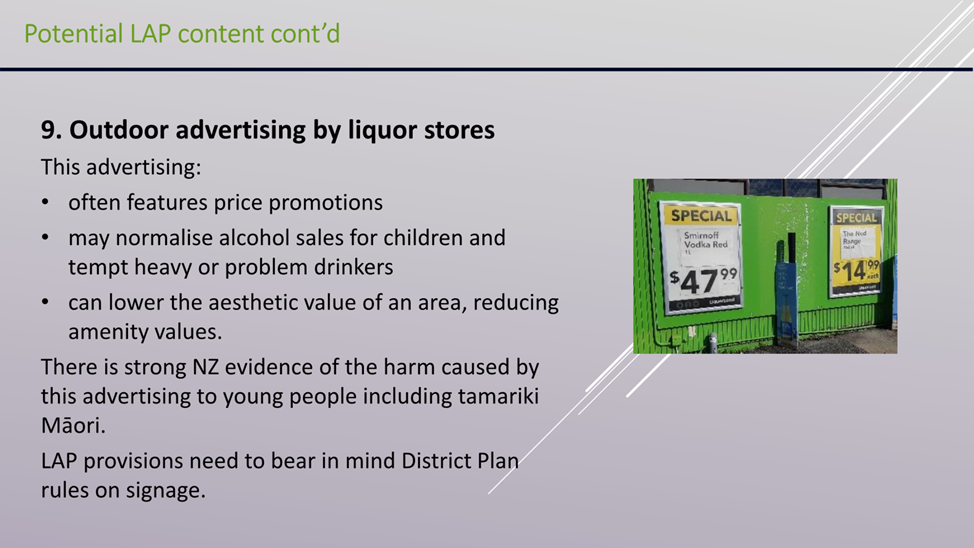
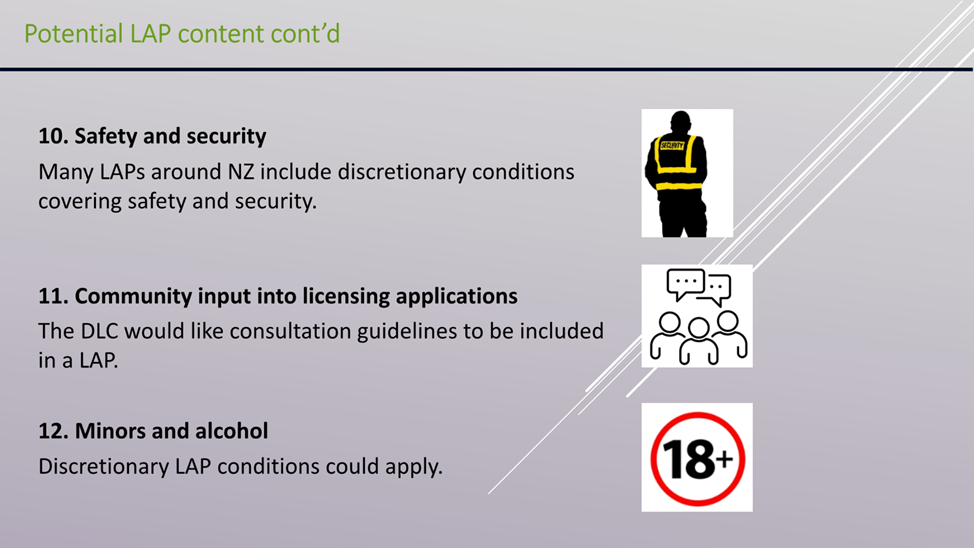
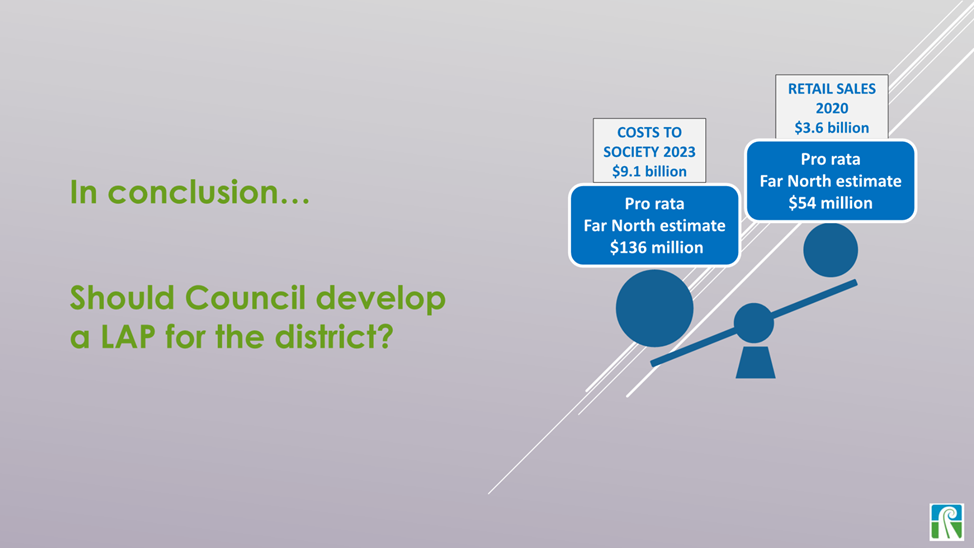
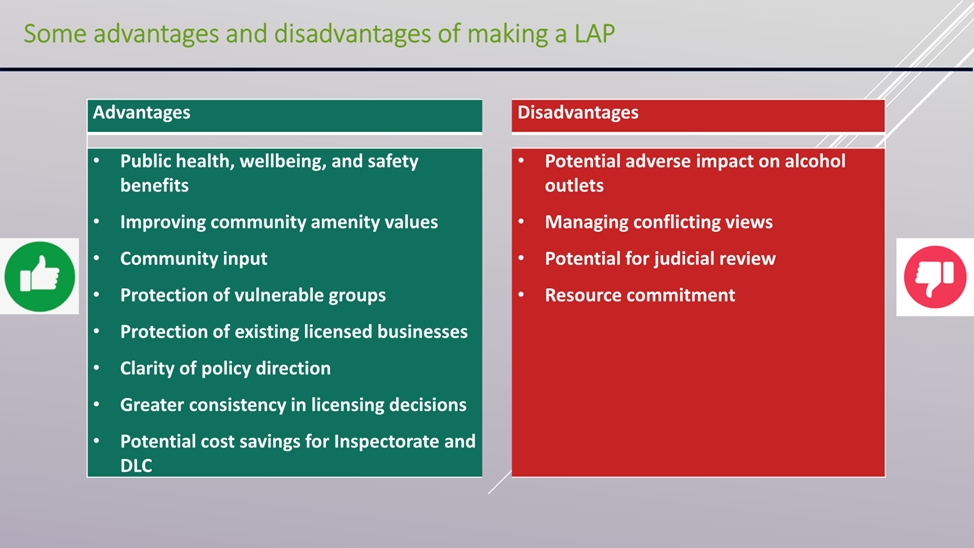
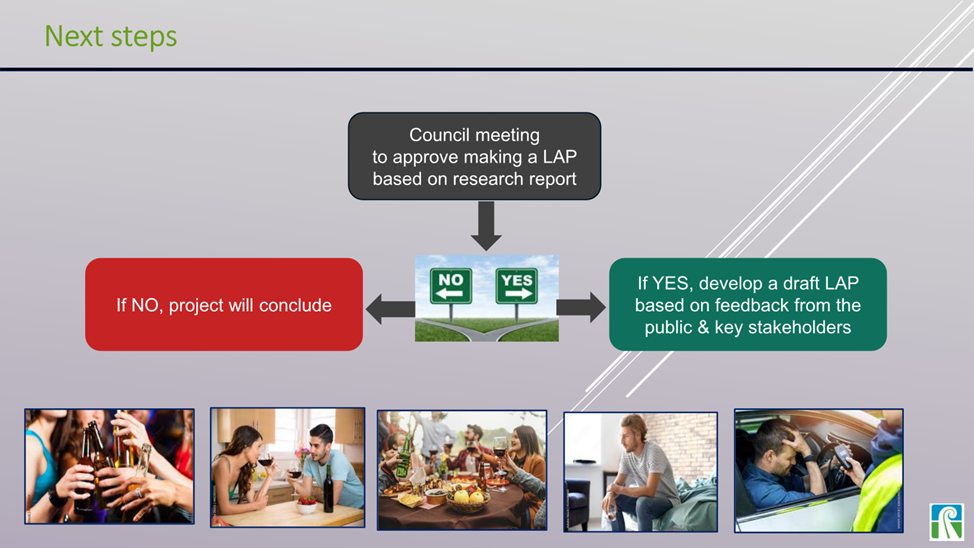

|
Ordinary Council Meeting Agenda
|
12 December 2024
|
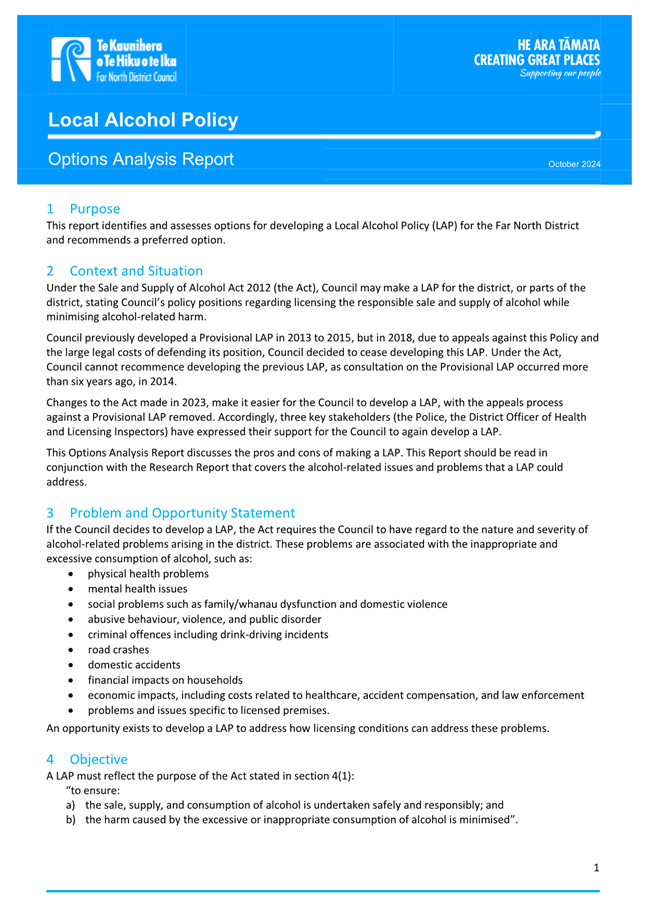
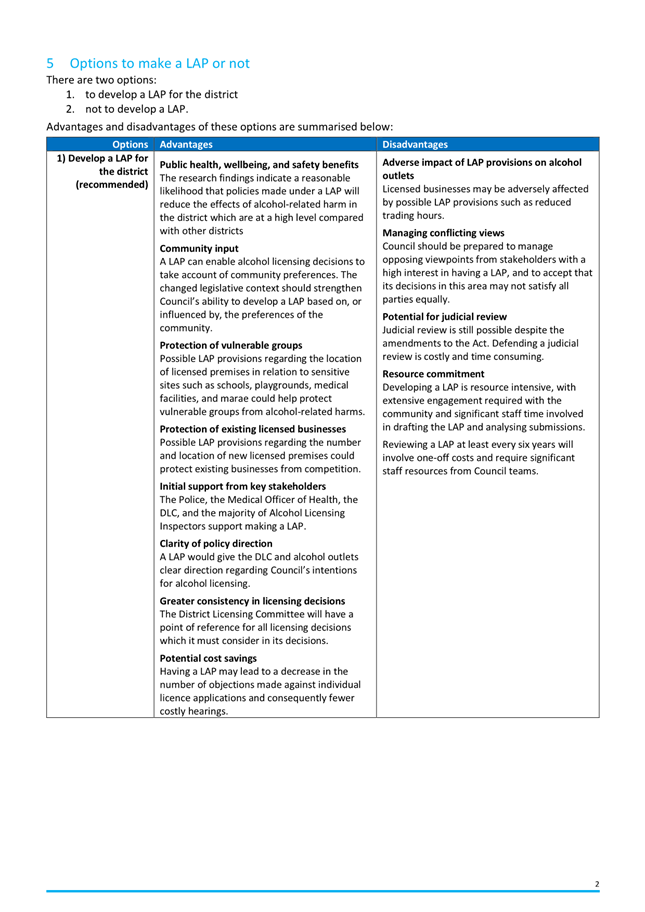

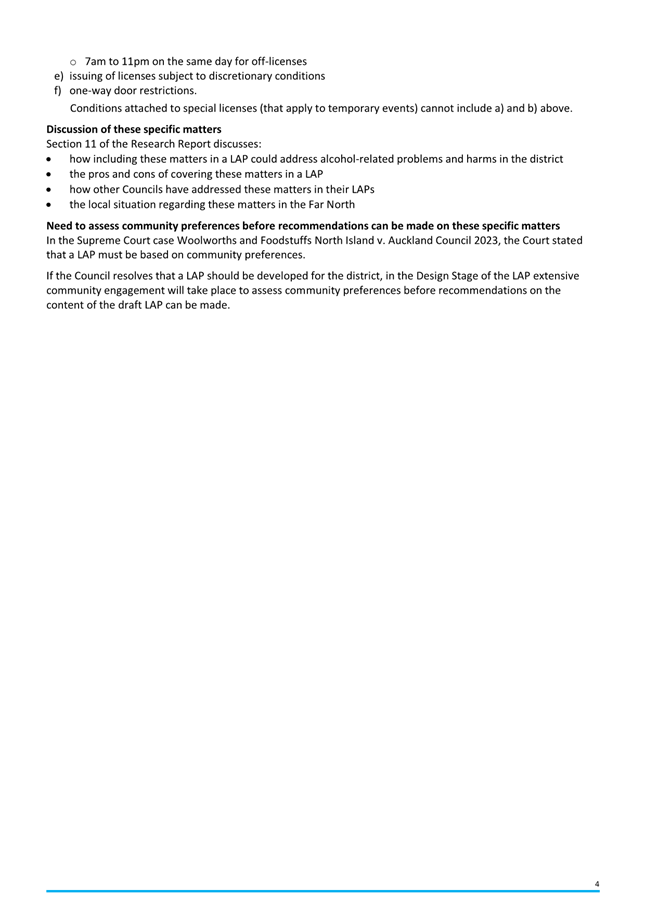
|
Ordinary Council Meeting Agenda
|
12 December 2024
|
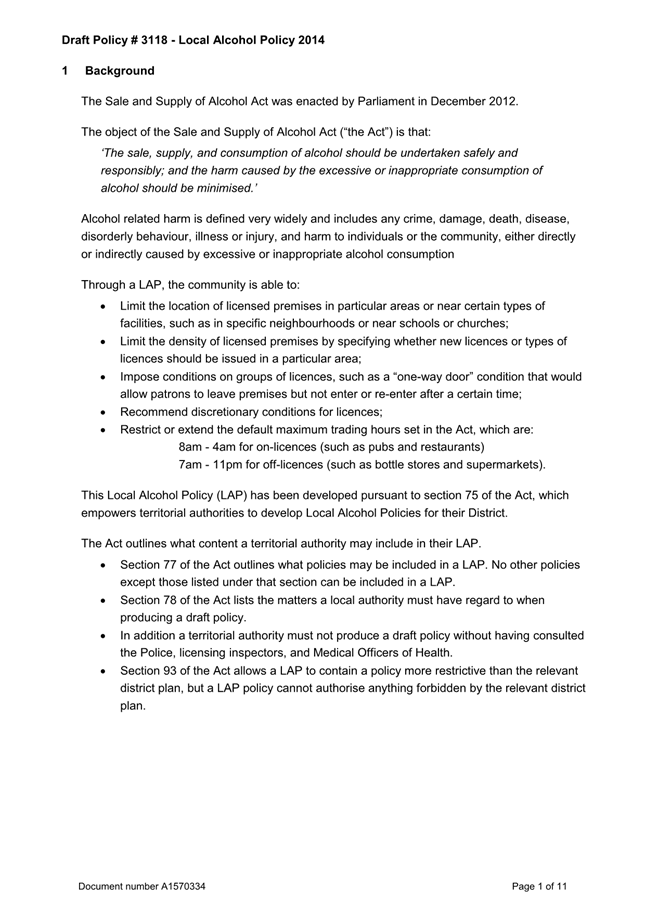
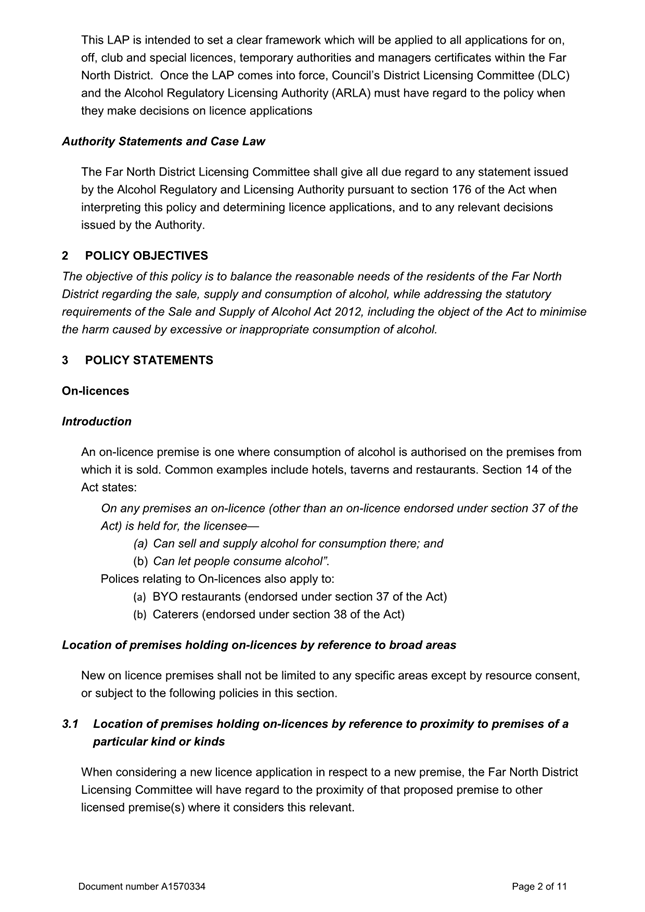
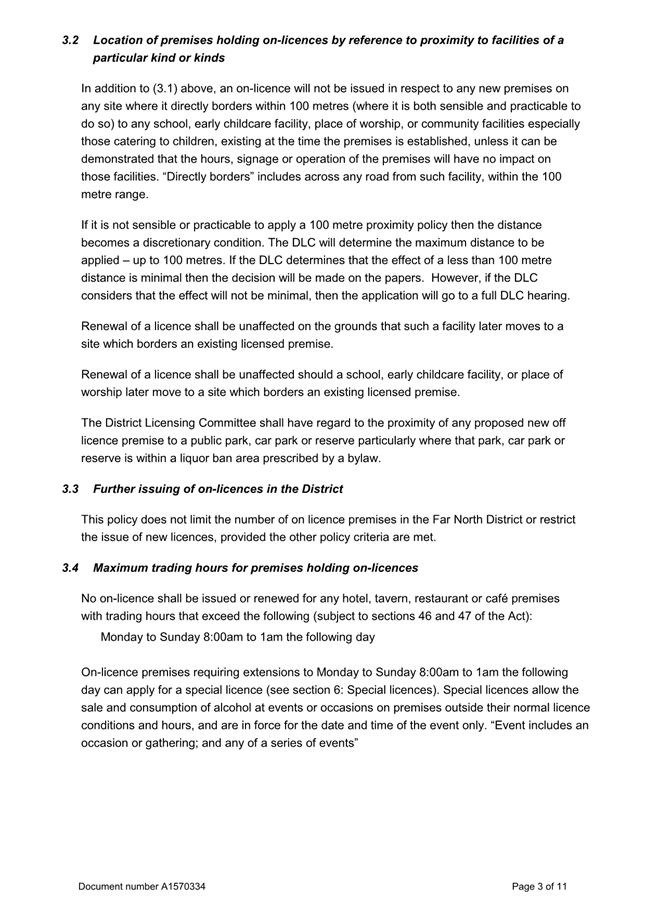
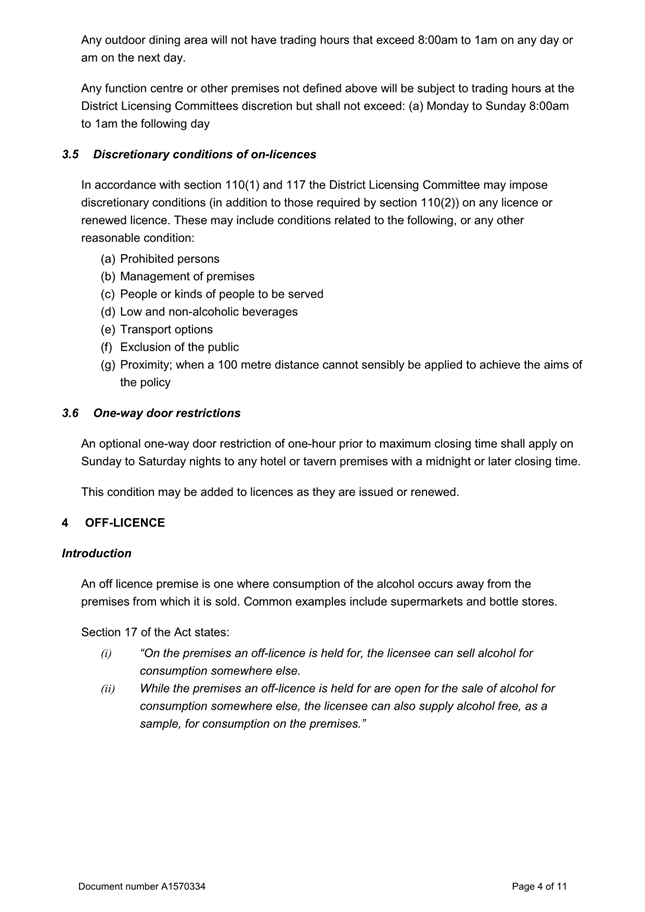
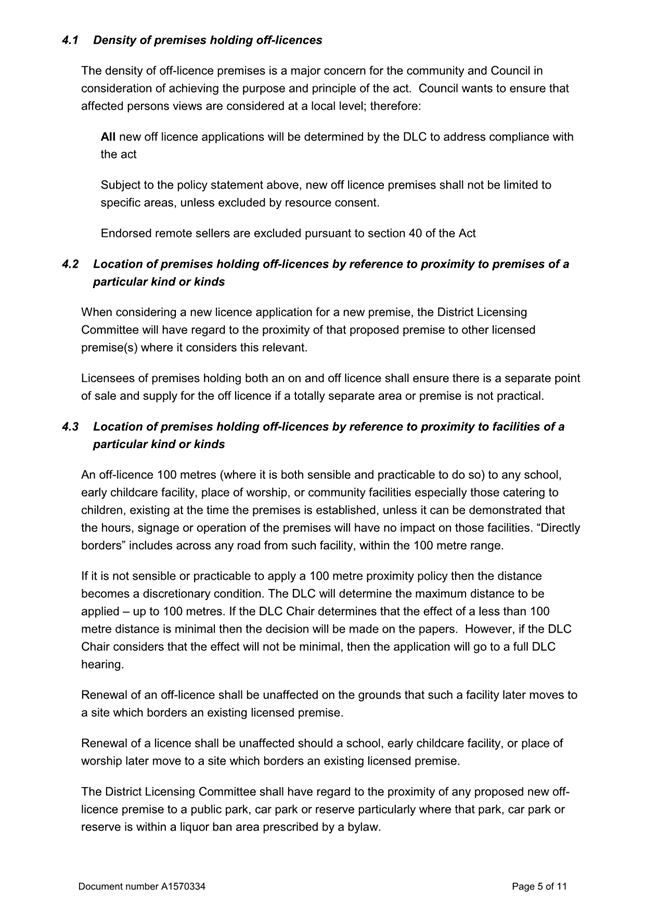
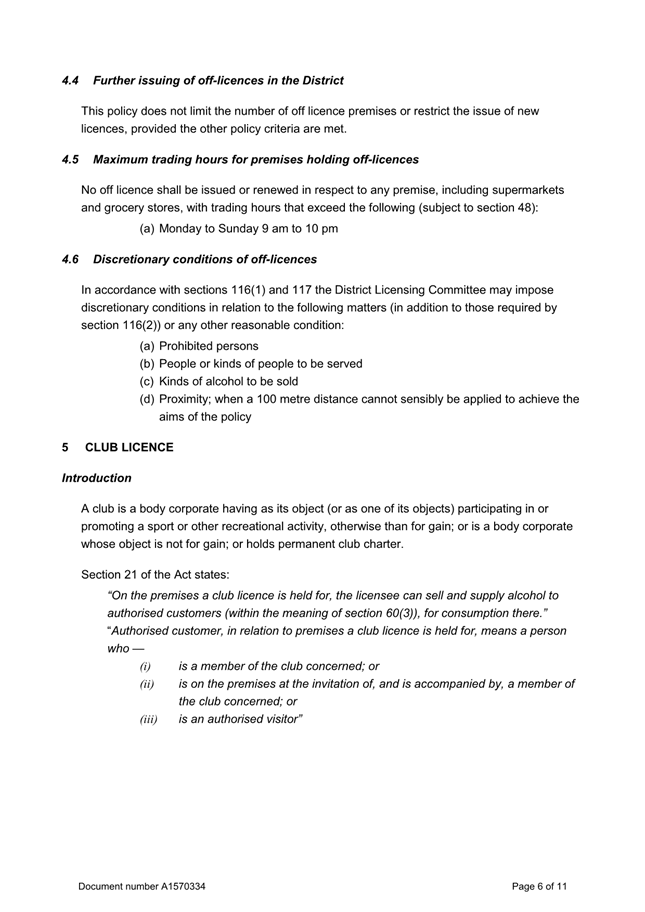
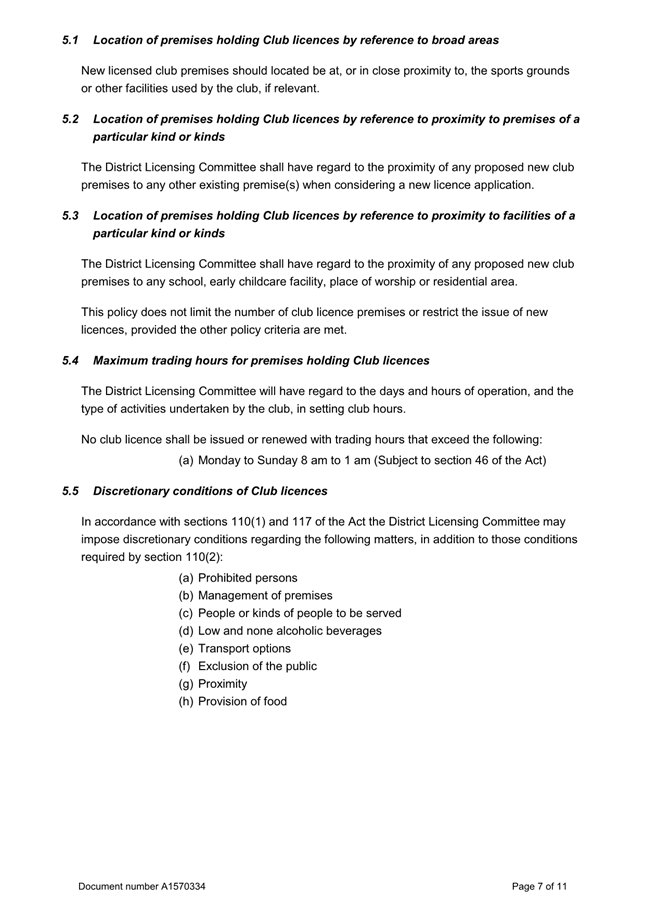
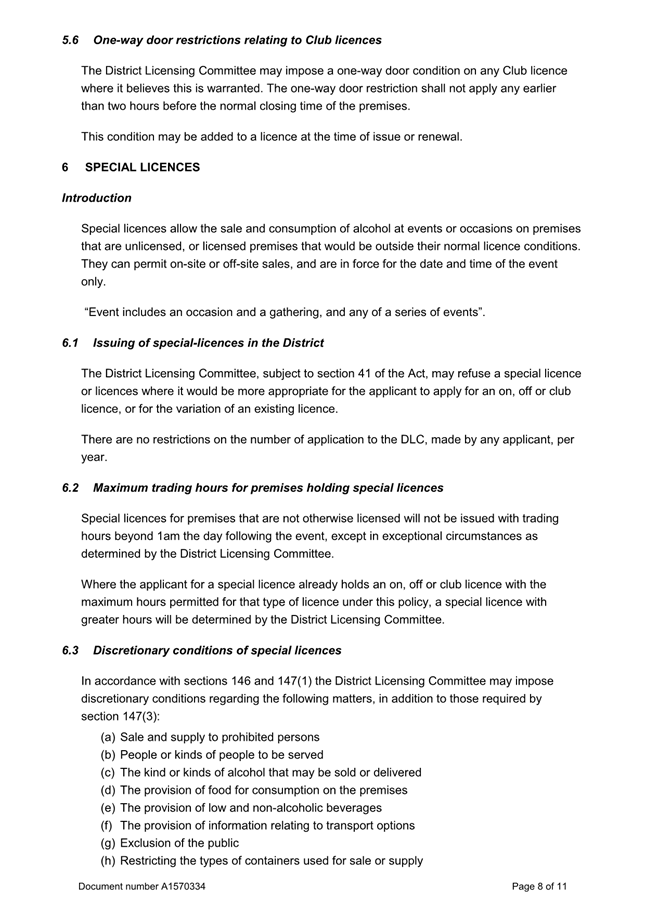
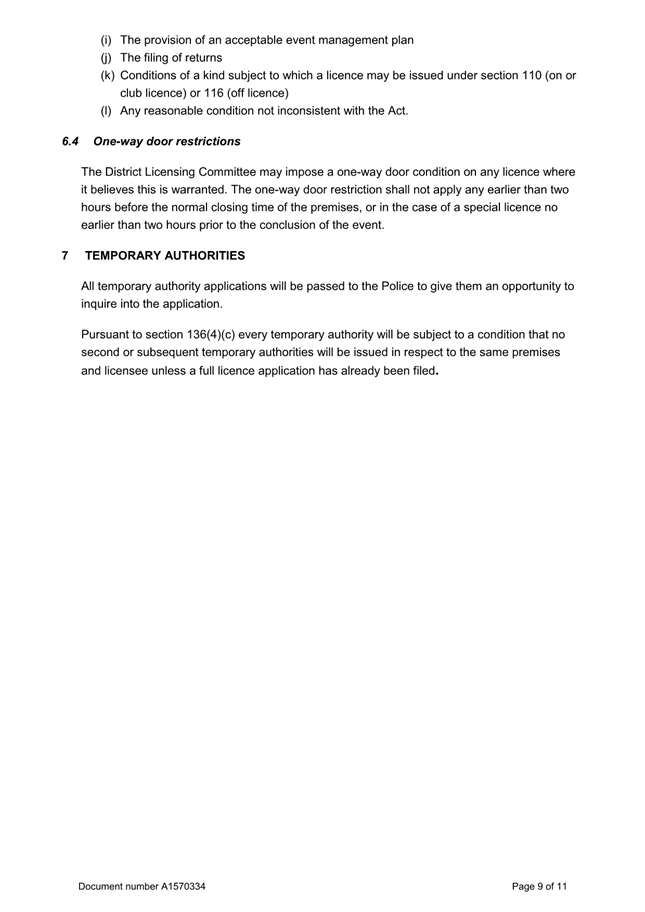
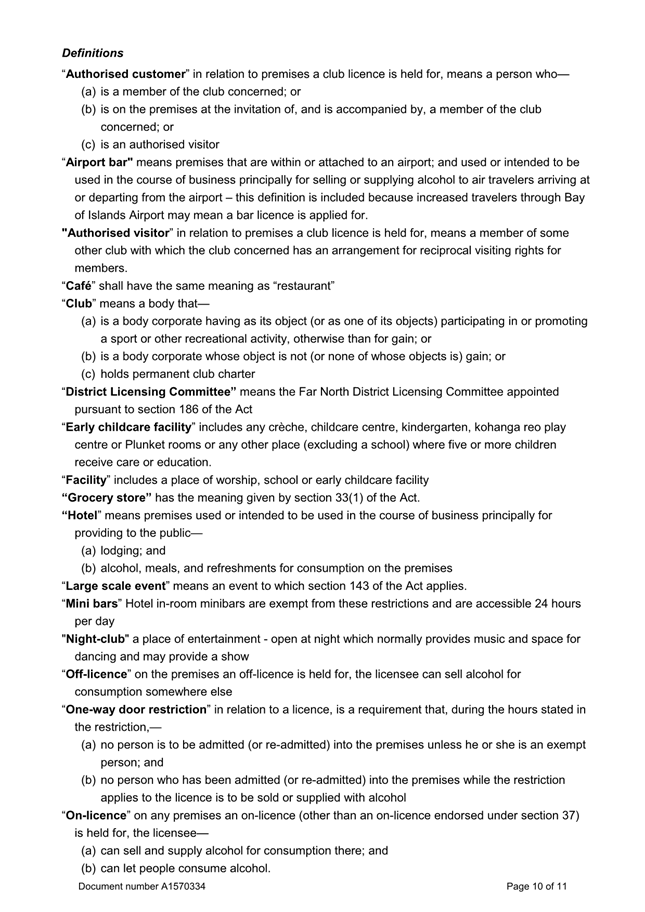
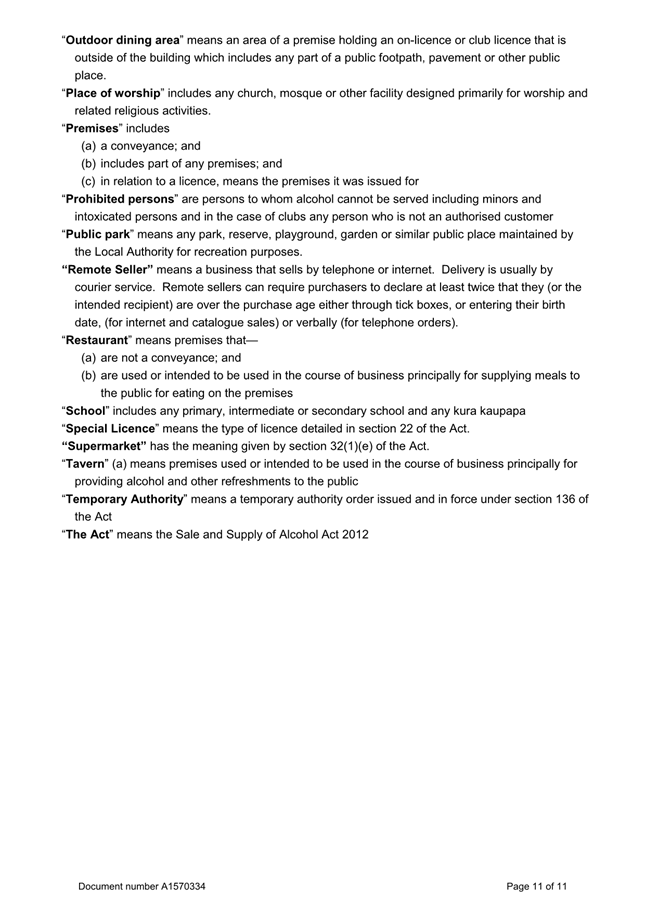
7.8 Future
of Severely Affected Locations (FOSAL) Proposed Buyout & Relocation Policy
File
Number: A4975532
Author: Esther
Powell, Manager - Climate & Action Resilience
Authoriser: Angie
Thomas, Acting Chief Financial Officer
Take Pūrongo / Purpose of the Report
To provide an update on the Future of Severely Affected
Locations (FOSAL) Programme as of 18 November 2024 and to provide an update on
the public consultation undertaken on the Proposed FOSAL Buyout and Relocation
Policy.
WhakarĀpopoto matua / Executive Summary
· In June 2024, funds were allocated through the Long-Term Plan to
assess properties against FOSAL criteria
· Council expedited the FOSAL process by undertaking concurrent
workstreams to develop a buyout and relocation policy while evaluating
properties
· The Proposed FOSAL Voluntary Buyout and Relocation Policy underwent
public consultation from 26 September to 10 October 2024
· 21 submissions received (18 online, 3 via email), 52% supported
Council’s participation in FOSAL, 38% opposed, and 10% were unsure
· In November 2024, it was determined that no properties in the
district qualify for the FOSAL Programme therefore the Policy is not required
· While no properties qualify under FOSAL, one general title property
and several marae face ongoing risk
· Council staff are working with the Cyclone Recovery Unit (CRU) and
Northland Regional Council (NRC) on potential interventions to reduce risk on
these properties.
|
tŪtohunga
/ Recommendation
That Council:
a) Acknowledge
that that there are no residential properties in the Far North District that
meet the FOSAL criteria; and
b) Does
not adopt the Proposed FOSAL Buyout and Relocation Policy as there are no
properties that meet the FOSAL criteria in the Far North.
|
1) TĀhuhu kŌrero / Background
The FOSAL Programme aims to remove people from danger by
identifying intolerable risk to human life from future extreme weather events.
As a one-time, post-event programme, FOSAL supports recovery from the severe
2023 North Island Weather Events (NIWE), including Cyclones Hale and Gabrielle
and the Auckland Anniversary Floods as defined under s4 of the Severe Weather
Emergency Recovery Legislation Act 2023.
In June 2024, Council resolved to invest funds through the
Long-Term Plan, to investigate whether any properties within the district meet
the criteria of the central government FOSAL Framework.
Council was instructed to accelerate and optimise the FOSAL
Programme by the Minister for Emergency Management. In response staff hastened
the process by undertaking concurrent work streams to develop a buyout and
relocation policy while it was still establishing if there were properties
which met the FOSAL criteria.
Council had limited visibility on the full extent of the
NIWE's damage. To address this, a district-wide computer simulation identified
potentially affected residential locations. A multi-criteria analysis,
incorporating qualitative and quantitative data, refined the results,
identifying 31 freehold titles and 23 Whenua Māori titles for further
investigation. Engagement with the identified landowners reduced the short-list
to one general title property and no Whenua Māori properties requiring in-depth
investigation.
On 24 September 2024, the Council approved public
consultation on the Proposed FOSAL Voluntary Buyout and Relocation Policy, that
would address Category 3 locations should they be subsequently identified. The
Policy provides a voluntary buyout or relocation option for properties that
were severely affected by NIWE and that are facing ongoing intolerable risk to
human life from future severe weather. Public feedback was received from 26
September to 10 October 2024 via email, the Council’s "Have Your
Say" webpage, and social media updates.
Concurrent to the development and public notification of the
Policy, consultants Tonkin Taylor developed a categorisation methodology then
undertook an engineering assessment, site visit and interviews with the
landowners of the property identified for in-depth assessment. It was
determined that the property had not been significantly affected by NIWE, so
does not meet the criteria for eligibility into the FOSAL Programme. Therefore,
there are no properties in the Far North District that qualify for the FOSAL
Programme and the Proposed FOSAL Buyout and Relocation Policy is not required
to be adopted at this time.
Although no properties have been categorised under FOSAL,
one general title property assessed by Tonkin Taylor faces a significant
ongoing risk. Additionally, several marae, while not eligible under FOSAL
criteria, are also at risk. Council staff are working with the Cyclone Recovery
Unit (CRU) and Northland Regional Council (NRC) to explore potential property
and community level solutions to build resilience and reduce risk on these
locations.
2) matapaki me NgĀ KŌwhiringa /
Discussion and Options
Submissions on the Draft FOSAL Buyout and Relocation
Policy.
Twenty-one written submissions were received (18 online,
three via email). Eleven out of the 21 submissions (52%) supported
Council’s participation in the FOSAL programme, eight submissions (38%)
did not support Council’s participation, while two submitters (10%) were
not sure.
Only three of the eleven supporting submissions provided any
comment. One submitter thought that the Programme should be expanded to cover
future events while another thought that engagement with other councils would
maximise the befits of the Programme and prepare the district for future
events. The final submitter commented that “it (the Programme) is a
start”.
Those who did not support the Programme sighted reasons such
as cost, personal responsibility and fairness to unaffected ratepayers. One
submitter thought that the Programme would encourage people to buy
“hopeless” properties to receive the buyout payment. A further
submitter thought that the Programme was a “land grab” and racist
as it excludes Māori.
The above points are addressed in detail in the attached
analysis report.
Where to from here
While the Proposed Policy is no longer required for the
FOSAL Programme, it remains a strategic document, informed by public
consultation. In the event of a future severe weather event, the Proposed
Policy is available to be adapted to any future government initiative. The
readiness of the Proposed Policy will enable Council to respond quickly,
streamline processes, and strengthen Councils position if it is required to
negotiate potential cost-sharing and support from central government. The
Proposed Policy ensures efficient activation by building on existing
foundations, optimising time and resources. It demonstrates the Council's
dedication to long-term safety and climate adaptation.
Climate Adaptation Inquiry
On 1 October 2024 the Finance and Expenditure Committee
released its report into climate adaptation.
The Climate Adaptation Inquiry report will inform the
development of a national policy framework for climate change adaptation. The
report recommends comprehensive legislation that defines the roles of local and
central government, along with associated resourcing and financing
arrangements. Retaining the Proposed Policy in reserve will provide a template
for future policy development, ensuring continuity and efficiency without the
need to start from the ground up.
Option One (Not Recommended)
Adopt the FOSAL Buyout and Relocation Policy.
Option Two (Recommended)
Acknowledge that that there are no residential properties in
the Far North District that meet the FOSAL criteria, and
Do not adopt the Proposed FOSAL Buyout and Relocation Policy
as there are no properties that meet the FOSAL criteria in the Far North.
TAKE TŪTOHUNGA
/ REASON FOR THE RECOMMENDATION
After significant investigation council staff have
determined that there are no properties in the Far North that meet the criteria
of the FOSAL Programme. Therefore, adopting the FOSAL Buyout and Relocation
Policy is irrelevant in the present context as the Proposed Policy only relates
to properties that meet the FOSAL criteria.
3) PĀnga PŪtea me ngĀ
wĀhanga tahua / Financial Implications and Budgetary Provision
There are no financial or budgetary implications.
Āpitihanga
/ Attachments
1. FOSAL
Submissions Analysis Report - A4978551 ⇩ 
Hōtaka Take Ōkawa / Compliance Schedule:
Full consideration has been given to the provisions of the
Local Government Act 2002 S77 in relation to decision making, in particular:
1. A
Local authority must, in the course of the decision-making process,
a) Seek
to identify all reasonably practicable options for the achievement of the
objective of a decision; and
b) Assess
the options in terms of their advantages and disadvantages; and
c) If
any of the options identified under paragraph (a) involves a significant
decision in relation to land or a body of water, take into account the
relationship of Māori and their culture and traditions with their
ancestral land, water sites, waahi tapu, valued flora and fauna and other
taonga.
2. This
section is subject to Section 79 - Compliance with procedures in relation to
decisions.
|
He Take Ōkawa /
Compliance Requirement
|
Aromatawai Kaimahi /
Staff Assessment
|
|
State the level of significance (high or low) of the
issue or proposal as determined by the Council’s
Significance and Engagement Policy
|
The significance is low.
|
|
State the relevant Council policies (external or
internal), legislation, and/or community outcomes (as stated in the LTP) that
relate to this decision.
|
The Climate Action Policy, Te Tai Tokerau Climate
Adaptation Strategy.
|
|
State whether this issue or proposal has a District wide
relevance and, if not, the ways in which the appropriate Community
Board’s views have been sought.
|
The Community Boards views are not required as there is
no implications.
|
|
State the
possible implications for Māori and how Māori have been provided
with an opportunity to contribute to decision making if this decision is
significant and relates to land and/or any body of water.
State the
possible implications and how this report aligns with Te Tiriti o Waitangi /
The Treaty of Waitangi.
|
There are no implications for Māori.
|
|
Identify persons likely to be affected by or have an
interest in the matter, and how you have given consideration to their views
or preferences (for example – youth, the aged and those with
disabilities).
|
There are no affected persons.
|
|
State the financial implications and where budgetary
provisions have been made to support this decision.
|
There are no financial or budgetary implications.
|
|
Chief Financial Officer review.
|
The Chief Financial Officer has not reviewed this
report.
|
|
Ordinary Council Meeting Agenda
|
12 December 2024
|
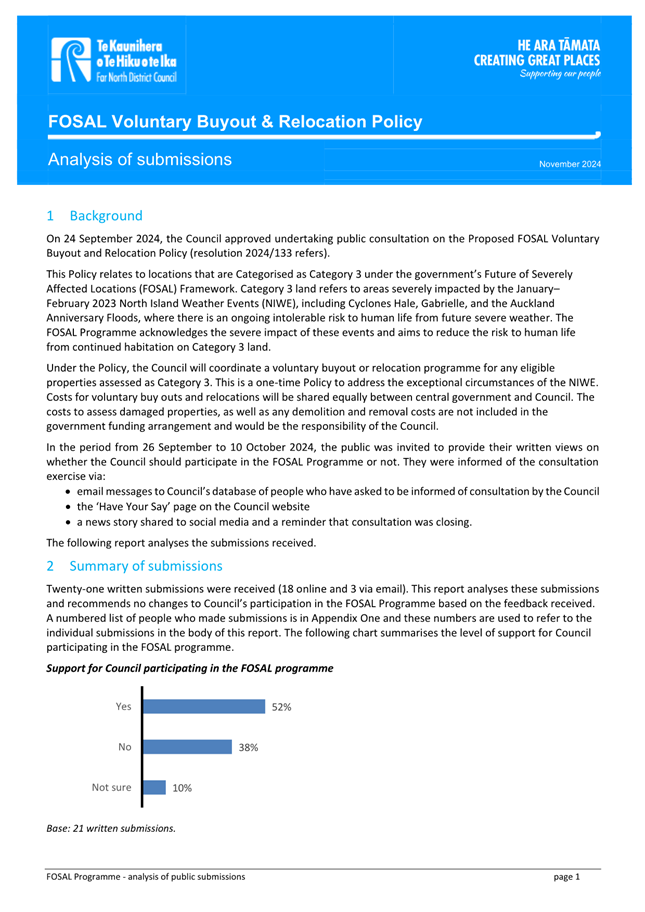
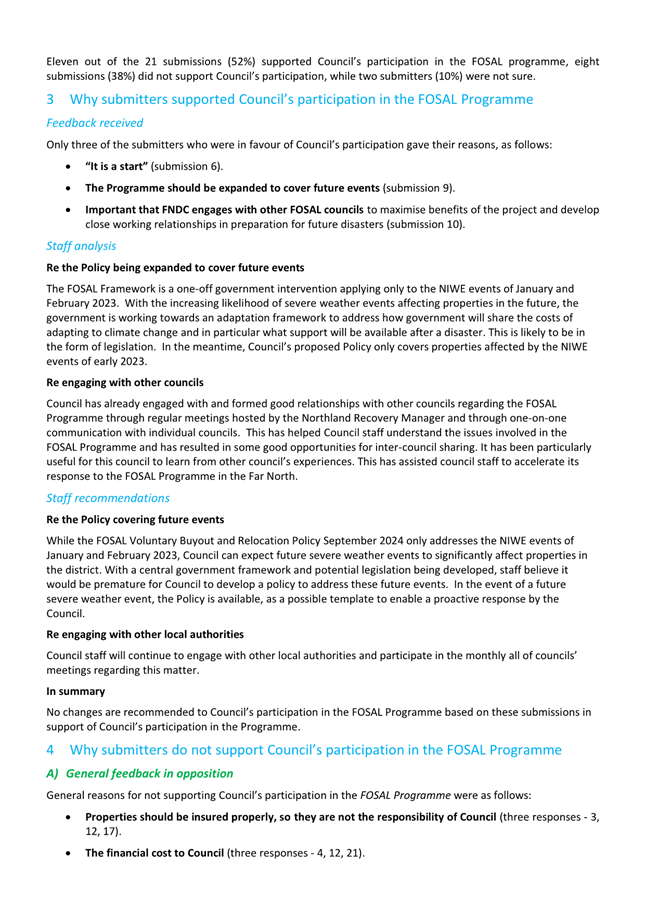
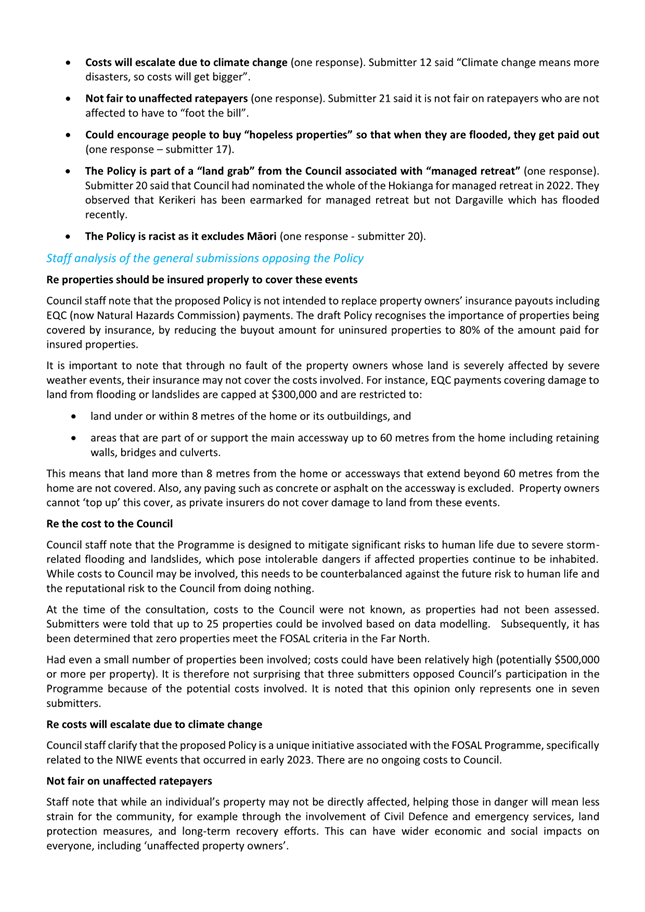
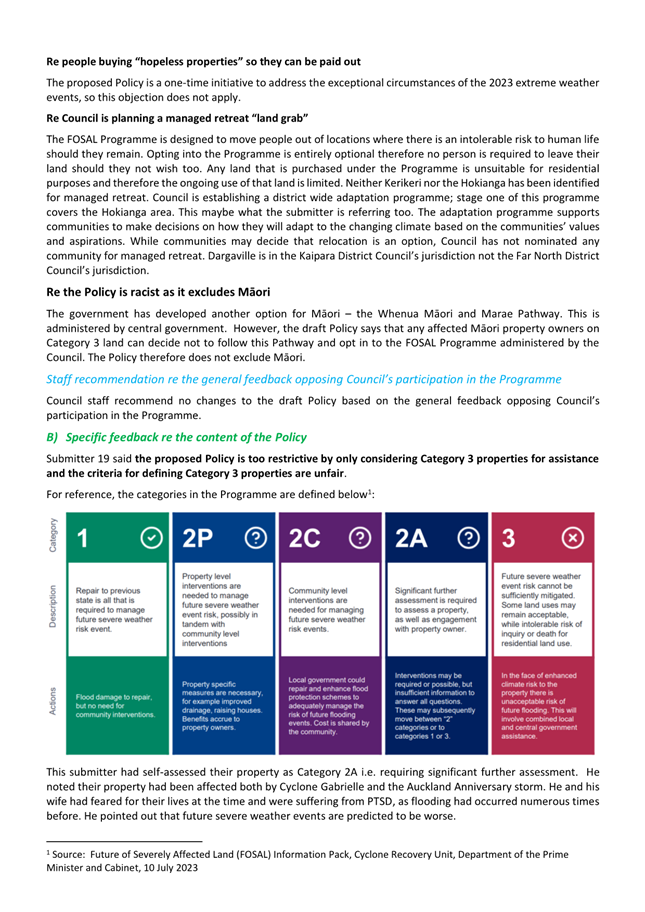
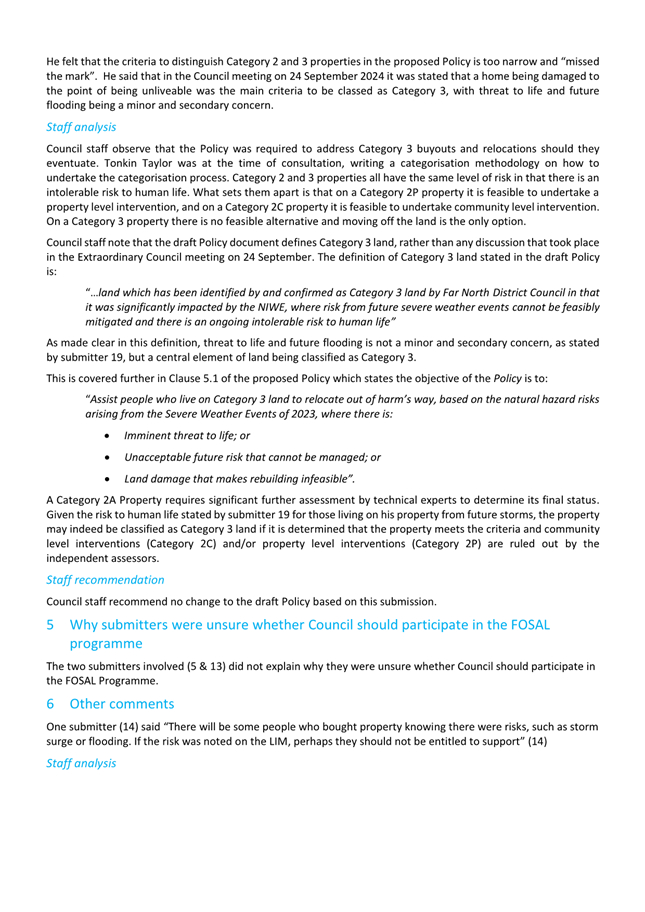

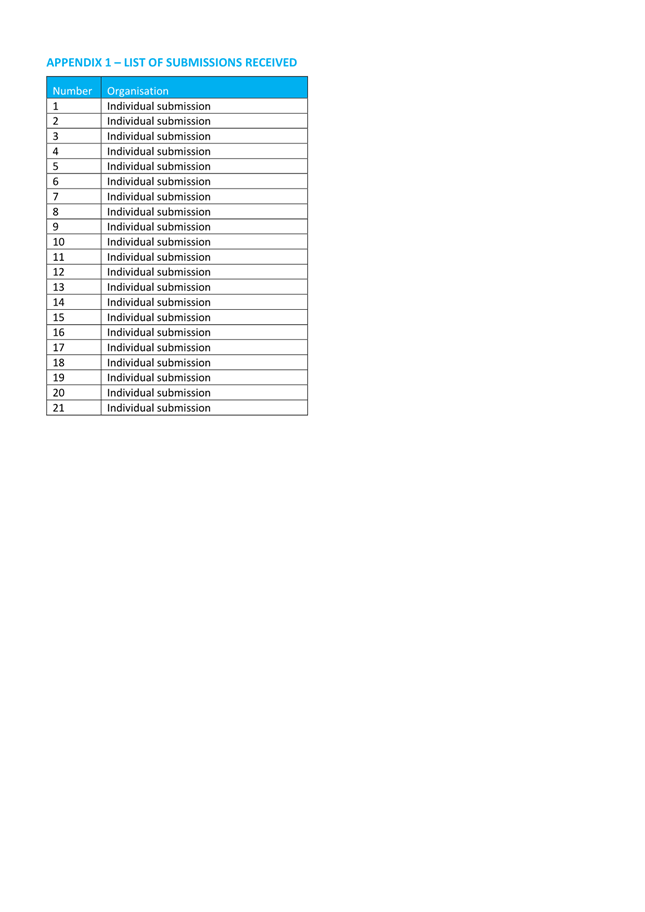
7.9 Appointment
to External Organisations
File
Number: A4988098
Author: Aisha
Huriwai, Manager - Democracy Services
Authoriser: Jacine
Warmington, Group Manager - Strategic Relationships
Take Pūrongo / Purpose of the Report
To seek appointments of Council to further external bodies.
WhakarĀpopoto matua / Executive Summary
· Council have been approached by additional external stakeholders
requesting Council representation.
o Kaikohe Sportsville
o Lake Ōmāpere Trust
o Joint Regional Economic Development (alternate)
|
tŪtohunga
/ Recommendation
That Council appoint:
a) Councillor
Rākena to Kaikohe Sportsville
b) Councillor
_______________ as liaison for Lake Ōmāpere
Trust
c) Councillor
_______________ as the alternate to Councillors Vujcich and Kleskovic to
Joint Regional Economic Development Group
|
1) TĀhuhu kŌrero / Background
Elected members often hold appointments to various external
bodies.
Those appointed to bodies outside of Council act as the
spokesperson on matters of local, district, regional or national
significance. Some appointments are legislatively required, some are part
of a regional agreement, MOU or by invitation.
Members should include commentary on activities for their
appointments in their member's reports.
In December 2022 Council made a variety of appointments.
Further appointments were made as part of the mid-term governance review in
April 2024.
The following table provides a list of all current
appointments.
|
Meeting
or role
|
Lead appointment(s)
|
Alternates
(if any)
|
|
Northland
Regional Transport Committee
|
1. Cr
Steve McNally
|
1. Cr
Ann Court (alternate)
|
|
Te Oneroa a Tōhē Beach Board
|
1. Mayor Moko Tepania
2. Cr Hilda Halkyard-Harawira
|
|
|
Joint Climate Change Adaptation
|
1. Kowhai/Deputy Mayor Kelly
Stratford
|
1. Cr
Tāmati Rākena (alternate)
|
|
Joint Regional Economic Development
|
1. Cr
John Vujcich
2. Cr Penetaui Kleskovic
|
|
|
Mayoral Taskforce for Jobs
|
1. Kahika/Mayor Moko Tepania
|
1. Cr
Penetaui Kleskovic (alternate)
|
|
Creative Communities Funding Assessment Committee
|
1. Cr
Felicity Foy
|
1. Cr
Tāmati Rākena (alternate)
|
|
Kaikohe Library & Civic Hub Steering Group (KLCHSG)
|
1. Cr
Tāmati Rākena
2. Cr Babe Kapa
3. Cr Felicity Foy
|
|
|
Turner Centre
|
1. Cr
Babe Kapa
|
|
|
Ngakahu Steering Group
|
1. Cr
John Vujcich
2. Cr
Hilda Halkyard-Harawira
3. Cr
Babe Kapa
4. Cr
Mate Radich
5. Cr
Steve McNally
|
|
|
Cycle Trail Trust
|
1. Cr
John Vujcich
2. Cr
Babe Kapa
|
|
|
Road Controlling Authority Forum
|
1. Cr
Ann Court
|
|
|
North Chamber
|
1. Cr
John Vujcich
|
|
|
Te Hiku Sports Hub
|
1. Cr
Felicity Foy
|
|
|
Te Ahu Charitable Trust
|
1. Cr
Felicity Foy
|
|
|
NRC Kaeo-Whangaroa River Working Group
|
1. Kowhai/Deputy Mayor Kelly Stratford
|
|
|
NRC Awanui River Working Group
|
1. Cr Mate Radich
|
|
2) matapaki me NgĀ KŌwhiringa /
Discussion and Options
This report seeks a resolution of Council for the following
appointments:
· Kaikohe Sportsville
· Lake Ōmāpere Trust
· Joint Regional
Economic Development (alternate)
Kaikohe
Sportsville
Kaikohe and
District Sportsville is a council-initiated Incorporated Society to manage the
council-owned sporting facilities at Lindvart Park, Kaikohe. Elected Members
have held appointments to Sportsville in the past.
Lake Ōmāpere Trust
The Lake Ōmāpere Trust made a deputation to the Te Kuaka Committee 27 June 2024.
Te Kuaka noted in their minutes that they support the work of the Lake Ōmāpere Trust They are actively working to restore Lake Ōmāpere, located near Okaihau. The Trust have a relationship agreement
with NRC and is working with NIWA and DOC. Details about what this appointment
would look like practically is unknown at this stage. It is understood that the
trust has broader aspirations around the built environment and community. This
report recommends a Councillor be appointed as the liaison for the Trust to
assist in building the relationship between the Trust and the Council.
Joint Regional
Economic Development Committee
In December 2022
Council appointed Councillors Kleskovic and Vujcich as the FNDC representatives
to this Northland Regional Council Joint Committee. NRC is seeking an alternate
to attend meetings in the event that one of the appointed members is unavailable.
There are five meetings scheduled each year generally for a half day. Meetings
move around the region, following the Mayoral Forum which is held the same day.
TAKE TŪTOHUNGA
/ REASON FOR THE RECOMMENDATION
Appointing elected members to external bodies ensures public
interests, community values, and regional priorities are represented while
fostering alignment with Council’s strategic goals.
3) PĀnga PŪtea me ngĀ
wĀhanga tahua / Financial Implications and Budgetary Provision
There is no cost in appointing members. There may be mileage
or reimbursements from time to time which will be considered as part of the
Elected Member Allowance and Reimbursement Policy. These costs are considered
to be minimal and within existing budgets.
Āpitihanga
/ Attachments
Nil
Hōtaka Take Ōkawa / Compliance Schedule:
Full consideration has been given to the provisions of the
Local Government Act 2002 S77 in relation to decision making, in particular:
1. A
Local authority must, in the course of the decision-making process,
a) Seek
to identify all reasonably practicable options for the achievement of the
objective of a decision; and
b) Assess
the options in terms of their advantages and disadvantages; and
c) If
any of the options identified under paragraph (a) involves a significant
decision in relation to land or a body of water, take into account the
relationship of Māori and their culture and traditions with their
ancestral land, water sites, waahi tapu, valued flora and fauna and other
taonga.
2. This
section is subject to Section 79 - Compliance with procedures in relation to
decisions.
|
He Take Ōkawa /
Compliance Requirement
|
Aromatawai Kaimahi /
Staff Assessment
|
|
State the level of significance (high or low) of the
issue or proposal as determined by the Council’s
Significance and Engagement Policy
|
This is a matter of low significance.
|
|
State the relevant Council policies (external or
internal), legislation, and/or community outcomes (as stated in the LTP) that
relate to this decision.
|
Elected member representation on external bodies is in
alignment with key strategies including Far North 2100, Te Rerenga –
Economic Development Strategy, and the Te Pae o Uta framework. It takes into
account the Elected Member’s Allowances and Reimbursement Policy.
|
|
State whether this issue or proposal has a District wide
relevance and, if not, the ways in which the appropriate Community
Board’s views have been sought.
|
Council may consider it more appropriate for
appointments to be made by the Community Board.
|
|
State the
possible implications for Māori and how Māori have been provided
with an opportunity to contribute to decision making if this decision is
significant and relates to land and/or any body of water.
State the
possible implications and how this report aligns with Te Tiriti o Waitangi /
The Treaty of Waitangi.
|
By providing a representative on external bodies,
Council will respond more effectively to the needs of Māori, fostering
empowered communities, and working collaboratively.
|
|
Identify persons likely to be affected by or have an
interest in the matter, and how you have given consideration to their views
or preferences (for example – youth, the aged and those with
disabilities).
|
This doesn’t impact any persons identified by
legislation.
|
|
State the financial implications and where budgetary
provisions have been made to support this decision.
|
There are no financial implications of need for
budgetary provision.
|
|
Chief Financial Officer review.
|
The Chief Financial Officer has not reviewed this
report.
|
7.10 Progressing
the Multi-Agency Joint Emergency Coordination Centre
File Number: A4997686
Author: Ruben
Garcia, Group Manager – Community and Engagement
Authoriser: Guy
Holroyd, Chief Executive Officer
Take Pūrongo / Purpose of the Report
The purpose of this report is for the Chief Executive to
obtain council authorisation to enter into a binding Heads of Agreement for a
Multi-Agency Joint Emergency Coordination Centre with Northland councils. The
Heads of Agreement is concurrently being considered by these councils.
Additionally, at Fire and Emergency New Zealand (FENZ)’s request as
landowner, NRC is working on a separate head of agreement with FENZ along with
a development agreement.
WhakarĀpopoto matua / Executive Summary
The report outlines the proposed
governance, funding and execution process for the four Northland councils, and
FENZ, in constructing the centre as well as its subsequent operating principles
under standard Auckland District Law Society leases. The Northland CDEM Group
Joint Committee, who have centre provision as an ‘action’ in their
2021-2026 CDEM Group Plan, is to be the governance body for the build and is to
receive regular reporting.
|
tŪtohunga
/ Recommendation
That:
a) That
the report ‘Progressing the Multi-Agency Joint Emergency Coordination
Centre’ by Ruben Garcia, Group Manager – Community &
Engagement and dated 12 December 2024, be received.
b) That
council approve the Chief Executive entering into a Heads of Agreement with
Northland councils for a Multi-Agency Joint Emergency Coordination Centre
(the Agreement), subject to him being satisfied that:
i) Council
has complied with all statutory, regulatory (and policy) obligations that
relate to the Agreement; and
ii) The
Agreement includes any conditions deemed to be reasonable and appropriate in
his view having taken legal or other professional advice, if required.
|
1) TĀhuhu kŌrero / Background
The Northland CDEM Group Joint Committee is the governance
group for CDEM in Northland. In their 2021-2026 Northland CDEM Group Plan, they
have an action to build a Multi-agency Joint Emergency Coordination Centre
(MACC) for the region. The MACC design will provide for:
· An Emergency
Coordination Centre (ECC) for emergency management anywhere in, or throughout,
the region;
· Whangarei District
Council (WDC) to operate an Emergency Operations Centre (EOC) to address any
localised event;
· Office space for
the daily operations of ‘Northland Regional Council based’ CDEM
staff;
· Office space for
the daily operations of Fire and Emergency New Zealand (FENZ) staff.
Decisions arising from NRC’s 2021 to 2031 LTP and 2024
to 2034 LTP process allow for a portion of the Targeted Emergency and Hazard
Management Rate to provide debt servicing and repayment of $5,500,000 in
capital as a regional council contribution to the MACC Project.
Furthermore, Northland’s three territorial
authorities, have also approved contributions to the MACC Project’s
construction, as has central government as outlined in the table below.
Fixed Budget and Preliminary Cost Estimate

A Project Advisory Group (PAG), made up of NRC and FENZ key
personnel, has been established which will oversee the MACC Project with
monthly meetings. The preliminary budget provides a cost estimate to June 2024
with $500,000 ‘headroom’. However, the PAG has agreed that the
headroom be tightly held to allow for the fitout (IT, security, soft
furnishings), any further market movement and for the unforeseen, albeit
$630,000 also sits in the budget as a 10% contingency.
The PAG has also agreed not to attempt a two-storey
building, or future proof the foundations and structure for a two-storey, as
this cannot be contained within the budget.
Heads of Agreement (HoA) for a MACC
The Final Draft HoA is attached for councils’
consideration and Chief Executive execution should the partnership be agreed.
In essence, the HoA sets forth the governing objectives between the four
councils, relationships and accountabilities, construction process, payment,
principles of ownership, and usage. The HoA has been broadly approved by Chief
Executives.
A separate Heads of Lease agreement and Development
Agreement between Northland Regional Council and FENZ will cement the PAG
relationship; NRC working with FENZ (as landowner and key tenant) executing the
design, construction and handover to tenants and the ECC and EOC users.
While the PAG oversees the Project, they will rely upon a
Design Team for MACC design. The Design Team will be made up of a
representative from each of CDEM, WDC and FENZ with supporting design
consultants and an independent Quantity Surveyor.
For the Project, it is intended that operational and
reporting lines will be as shown on the schematic model below.
PAG Operation and Reporting
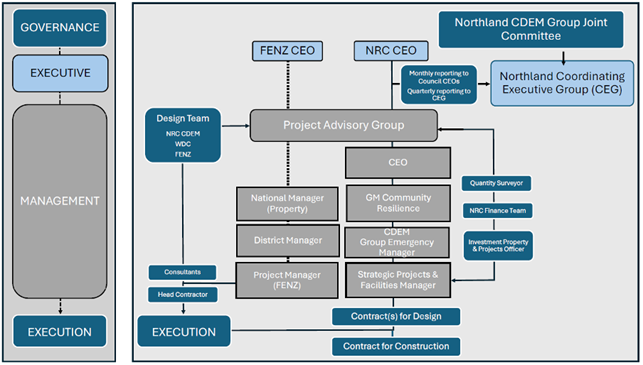
Preliminary Timeline
Over the design phase of the MACC Project, the timeline and
budget priorities will inevitably evolve and become more detailed. However, the
current timeline is as below and envisages 6 to 12 months design process and an
18-month build.
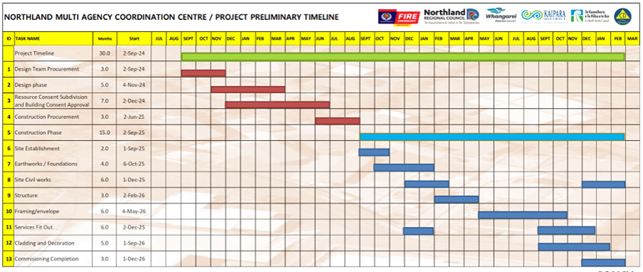
Summary of the HoA for a MACC
· All four councils
have CDEM responsibilities under legislation and agree to work together to
provide a MACC.
· The Northland CDEM
Group Joint Committee is the governance body, as they already exist, and they
have the MACC build as an ‘action’ in their 2021-2026 CDEM Group
Plan.
Clause I
· Once the MACC is
constructed, the land and building(s) will accommodate NRC based CDEM staff and
FENZ staff.
· In an emergency
requiring an ECC, or when WDC require an EOC, the MACC space will
‘convert’ and be made immediately available to address the event.
The MACC is also available for WDC training purposes when required.
Clauses J and 1 – 3
· NRC will provide
property and lease management services for the building.
· FENZ is providing
their land at nominal fee, they will subdivide the section off and lease it to
council.
Clauses K, L and 4 -7
· NRC will Chair the
Project Advisory Group (PAG), made up of NRC and FENZ key personnel, which will
oversee the Project with monthly meetings.
· The PAG will rely
on a Design Team made up of CDEM, WDC and FENZ emergency response practitioners
and supporting design consultants.
· NRC will demolish
the existing buildings and construct the MACC in concert with FENZ.
· The Concept Plans
demonstrate that the MACC can be constructed to accommodate an ECC for
emergency management throughout the region, WDC operation of an EOC to address
any localised event and office space for the daily operations of CDEM staff and
FENZ staff.
· The Concept Plans
are strictly ‘concept only’, the final design will be agreed by the
Design Team.
Clauses 8 -12
· NRC is ultimately
responsible for the MACC Project and is to report monthly to Chief Executives
and through to the Northland CDEM Group Joint Committee.
· NRC, Central
Government, WDC, Far North District Council and Kaipara District Council each
provide specific funding amounts. Proportionally this is 78.2%, 13.27%, 7.11%
and 1.42% respectively where Central Government’s contribution is spread
proportionally across parties’ contribution.
· If a decision is
made to invest more in the building, the four councils will provide further
funds in these proportions.
· If in the future
the building is disposed of, or acquired by a new government agency, sale
proceeds shall be returned to each Council in these proportions.
Clauses 13 -17
· NRC will lease the
property (land and buildings) to the four councils as ‘tenants in
common’ with equal shares. In this way, each council is responsible for
all Landlord outgoings in equal portions (essentially external maintenance) as
the MACC activities will serve them equally.
· The ‘tenants
in common’ will then sublease to CDEM and FENZ as tenants who will occupy
the centre and be proportionally responsible for Tenant outgoings (rates,
insurance, utilities, internal maintenance, etc).
· Each council is
responsible for CDEM tenant outgoings in equal portions as the CDEM staff and
activities will serve them equally.
The HoA with FENZ (as landowner) will reflect these terms
but will be with Northland Regional Council (as MACC Project lead) only.
2) matapaki me NgĀ KŌwhiringa /
Discussion and Options
Considerations
Climate Impact
The construction of the Multi-Agency Joint Emergency
Coordination Centre project (MACC Project) does not have climate impact
reduction as its primary purpose. However, positive climate change impacts will
result from the inclusion of a number of environmentally beneficial utilities
in the design. Those to be considered will include solar power generation, LED
lighting, water efficient tapware and plumbing, litter traps for stormwater
drains, sustainable material use, daylight harvesting alongside light sensing,
installation of efficient heating and cooling elements and provision of
electric car charging.
Environmental Impact
There are no significant environmental impacts with the
redevelopment project largely due to the FENZ site being well above river and
sea level and not on reclaimed land.
Community views
The wider regional community/ratepayers will be affected
positively with NRC executing a successful development on the site for the
provision of regionwide Civil Defence and Emergency Management (CDEM). Seeking
community commentary on the Agreement is not necessary as the MACC Project was
already included in NRC’s 2021 to 2031 LTP and 2024 to 2034 LTP
processes.
Māori impact statement
In successive Long-Term Plans there were no specific
concerns raised from Māori or iwi groups in respect of the MACC
Project. While the proposal has no specific impact on Māori, it is
intended that local hapū will be involved in the blessing of the property
prior to demolition and will be engaged with any resulting pre-construction
site blessing and commissioning of the building.
Implementation issues
The proposed redevelopment will require intense project
oversight best sourced from the private sector. NRC will form a Project
Advisory Group (PAG) with members from NRC’s senior management and from
FENZ. FENZ have agreed to supply an inhouse Project Manager as FENZ undertake a
significant number of builds across New Zealand annually and have inhouse
expertise. NRC’s Chief Executive will have final decision-making
authority with the benefit of PAG and Design Team advice.
Significance and engagement
The MACC Project is considered ‘not significant’
as the allocation of Targeted Emergency and Hazard Management Rate to provide
debt servicing and repayment was publicly canvassed in NRC’s 2021 to 2031
LTP and 2024 to 2034 LTP process.
Policy, risk management and legislative compliance
As with all redevelopments, the PAG provide, monitor and
update a risk register for construction risk and health and safety risks. Both
a QS and an independent Health and Safety advisor will be engaged throughout
the duration of the Project.
A Development Agreement with FENZ will allow for NRC’s
usual procurement procedures to be followed, similar to FENZ.
The ground lease and all subleases will be on terms and
conditions standard in the modern Auckland District Law Society agreement to
lease. Subleases will reflect the nominal rental, outgoings, term and renewal
as the head ground lease. The areas to be leased are subject to final agreement
and measure once the MACC Project is complete.
Options
|
No.
|
Option
|
Advantages
|
Disadvantages
|
|
1
|
Council does not
approve the Chief Executive entering into a Heads of Agreement for a
Multi-Agency Joint Emergency Coordination Centre (the Agreement) with
Northland councils.
|
The rated funds may be
allocated to an alternative centre with other joint user arrangements.
|
NRC is unlikely to
provide a fully effective centre without the partnership and contribution of
other key stakeholders.
The design and
construction of a centre is delayed.
Central government has
offered financing on the basis of a joint arrangement and may reconsider if
an agreement varies significantly from the joint proposal.
There is no guarantee
an equally attractive alternative site to that offered by FENZ can be sourced
easily.
NRC will incur project
risks, including construction and Health and Safety risk, regardless of what
site or partner arrangements are in place.
|
|
2
|
Council approves the
Chief Executive entering into a Heads of Agreement for a Multi-Agency Joint
Emergency Coordination Centre (the Agreement) with Northland councils.
|
NRC can provide a
coordination centre with the benefit of partnership input and funding from
other key stakeholders.
Central government has
offered financing on the basis of a joint arrangement.
The Chief Executive is
able to confirm key terms of the Agreement.
The design and
construction of the centre can commence immediately upon signing.
|
The opportunity to
consider other sites or pursue alternative arrangements is ended.
|
TAKE TŪTOHUNGA
/ REASON FOR THE RECOMMENDATION
NRC may allocate rated funds to an alternative centre with
joint user arrangements, leveraging partnerships and funding from key
stakeholders, including central government. With key terms of the Agreement
confirmed by the Chief Executive, design and construction can commence
immediately upon signing.
3) PĀnga PŪtea me ngĀ
wĀhanga tahua / Financial Implications and Budgetary Provision
The redevelopment of this property will result in the
drawing down of finance from NRC’s Targeted Emergency and Hazard
Management Rate to provide debt servicing and repayment of $5,500,000 in
capital as a regional council contribution to the MACC Project. NRC will also
collect and hold funds to supplement the build from the three territorial
authorities and central government.
While the design and construction budget is set at
$7,570,000 (including 10% contingency), the available funds total $8,070,000
providing $500,000 ‘headroom’. Regardless, the Project Advisory
Group (PAG) will halt spending and revise the design and construction, should
at any point the MACC Project look to overrun the funds available.
The subleases to CDEM and to FENZ will be at nominal rent
(e.g. $1 pa) in recognition of FENZ provision of land at nominal rent and all
four councils of provision of funds for the MACC building. However, all parties
will provide funding to cover MACC CAPEX and OPEX.
MACC CAPEX
As part of the Agreement councils will equally fund landlord
costs (e.g. external cleaning, weathertightness), with CAPEX Landlord costs
generally covered by warranties for several years. Quantity Surveyor (QS)
provided replacement estimates based on life expectancy of the important
building elements indicate that the more significant costs kick in Year 12, 15,
20 and 25 and would need to be in council LTPs. The expected per council 25%
share is as below. All figures inflation adjusted (forecast future cost).
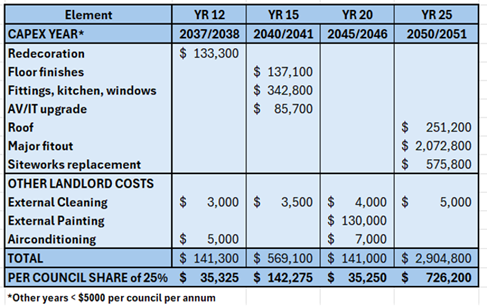
MACC OPEX
The Agreement also has NRC sharing equally CDEM Tenant
outgoings, maintenance (e.g. internal repairs, cleaning) and operational costs
(e.g. electricity, rates). With reference to QS estimates and the experience
with the Kaipara Service Centre, councils can reliably expect an annual OPEX of
between $64,800 and $102,000. As a co-tenant, FENZ pay approximately half of
this annual cost. This leaves councils sharing $43,200 to $68,000 pa (i.e.
$10,800 to $17,000 per council annually at 25% each).
Āpitihanga
/ Attachments
1. FINAL
DRAFt Heads of Agreement for a Multi-Joint Emergency Coordination Centre PLUS
Schedules - A5006366 ⇩ 
Hōtaka Take Ōkawa / Compliance Schedule:
Full consideration has been given to the provisions of the
Local Government Act 2002 S77 in relation to decision making, in particular:
1. A
Local authority must, in the course of the decision-making process,
a) Seek
to identify all reasonably practicable options for the achievement of the
objective of a decision; and
b) Assess
the options in terms of their advantages and disadvantages; and
c) If
any of the options identified under paragraph (a) involves a significant
decision in relation to land or a body of water, take into account the
relationship of Māori and their culture and traditions with their
ancestral land, water sites, waahi tapu, valued flora and fauna and other
taonga.
2. This
section is subject to Section 79 - Compliance with procedures in relation to
decisions.
|
He Take Ōkawa /
Compliance Requirement
|
Aromatawai Kaimahi /
Staff Assessment
|
|
State the level of significance (high or low) of the
issue or proposal as determined by the Council’s
Significance and Engagement Policy
|
Low degree of significance.
|
|
State the relevant Council policies (external or
internal), legislation, and/or community outcomes (as stated in the LTP) that
relate to this decision.
|
Covered under Discussion and Options.
|
|
State whether this issue or proposal has a District wide
relevance and, if not, the ways in which the appropriate Community
Board’s views have been sought.
|
Covered under Discussion and Options.
|
|
State the
possible implications for Māori and how Māori have been provided
with an opportunity to contribute to decision making if this decision is
significant and relates to land and/or any body of water.
State the
possible implications and how this report aligns with Te Tiriti o Waitangi /
The Treaty of Waitangi.
|
Covered under Discussion and Options.
|
|
Identify persons likely to be affected by or have an
interest in the matter, and how you have given consideration to their views
or preferences (for example – youth, the aged and those with
disabilities).
|
Covered under Discussion and Options.
|
|
State the financial implications and where budgetary
provisions have been made to support this decision.
|
Covered under Financial Implications section.
|
|
Chief Financial Officer review.
|
The Chief Financial Officer has not reviewed this
report.
|
|
Ordinary Council Meeting Agenda
|
12 December 2024
|
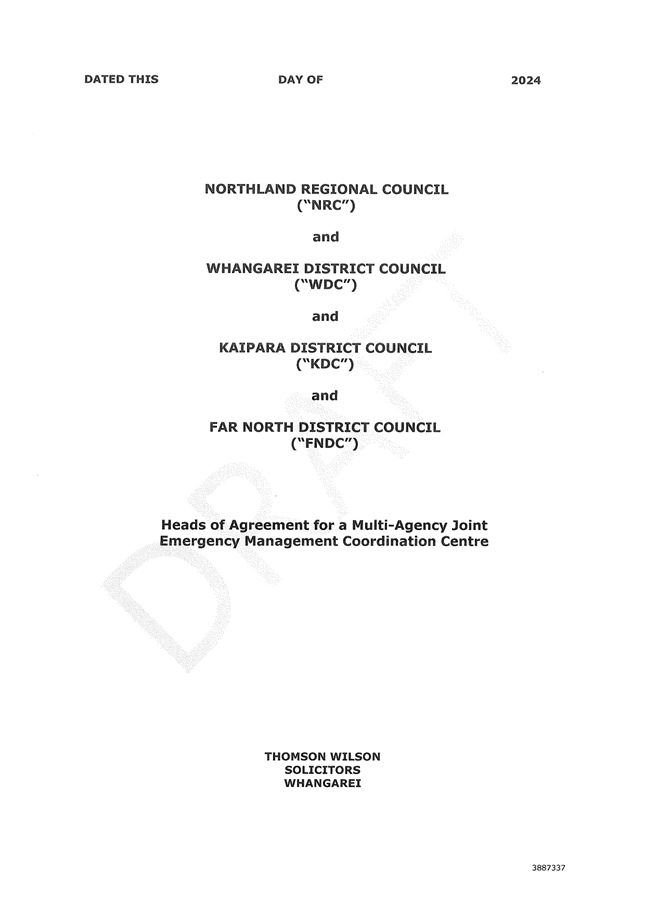

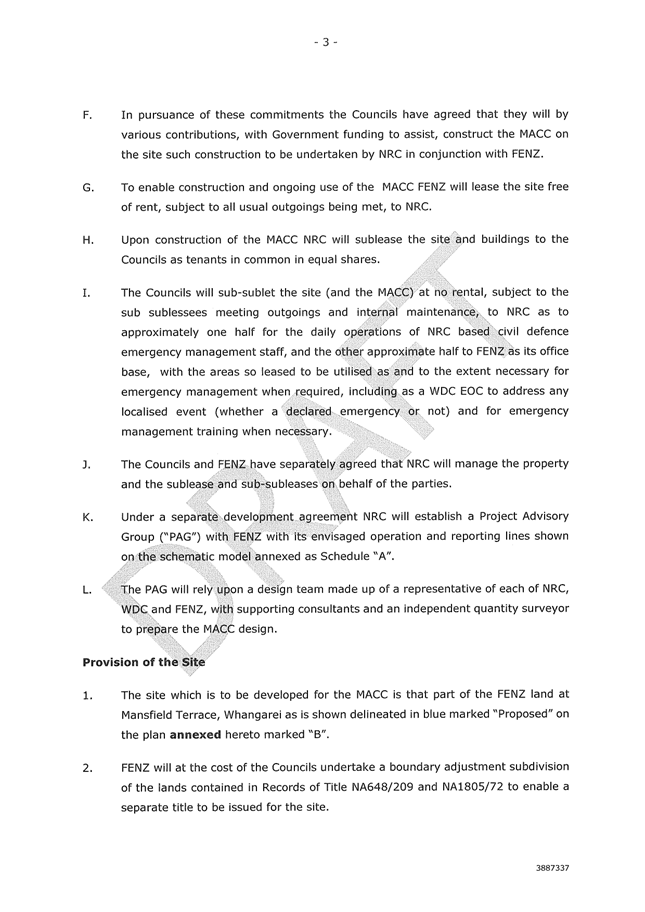
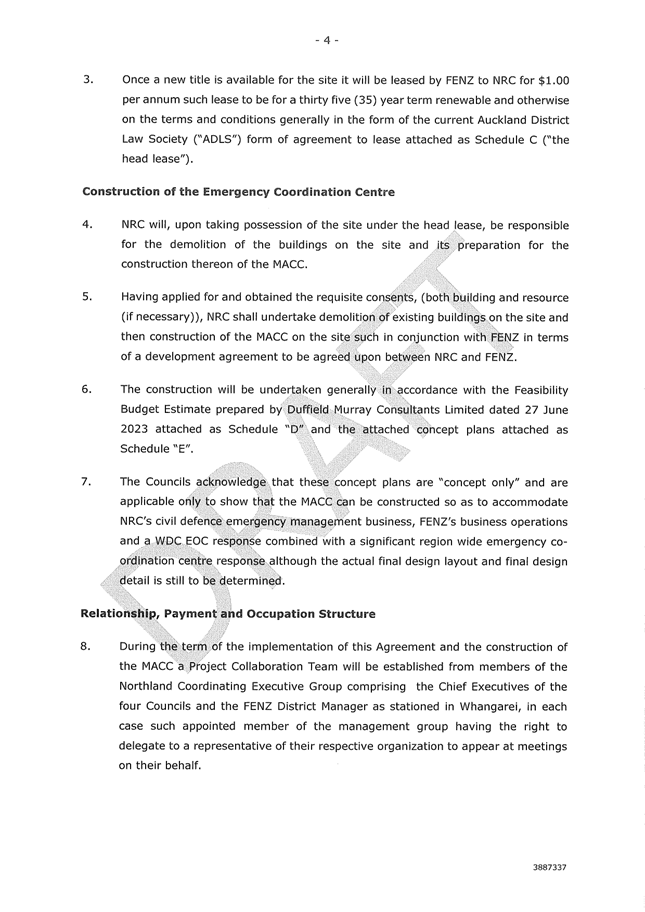
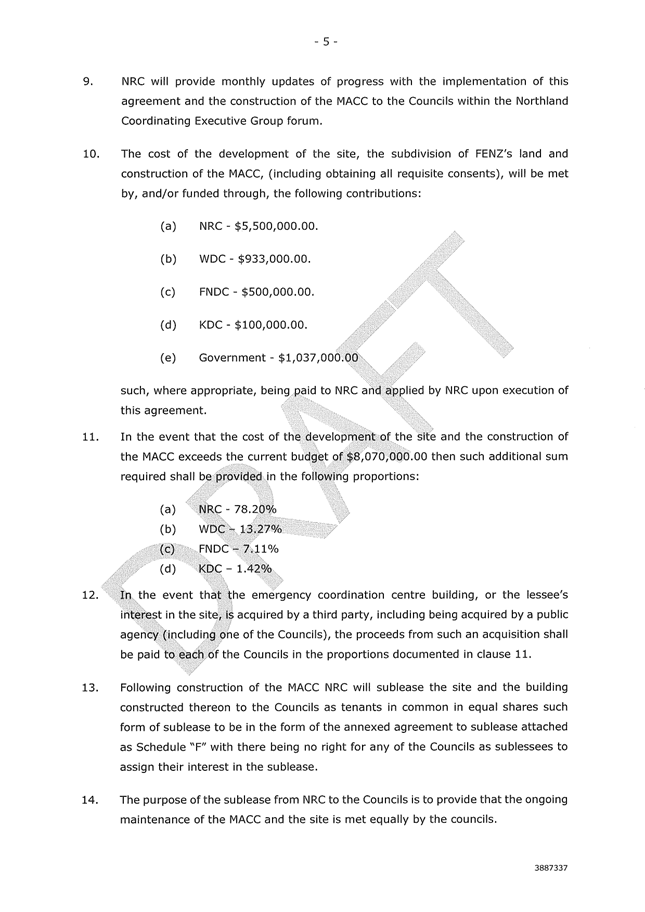
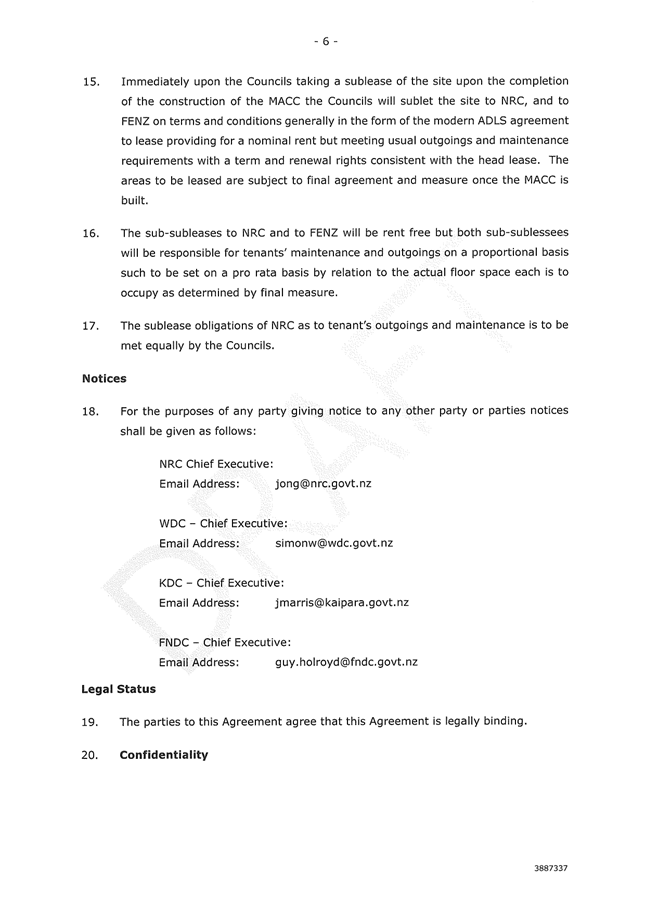
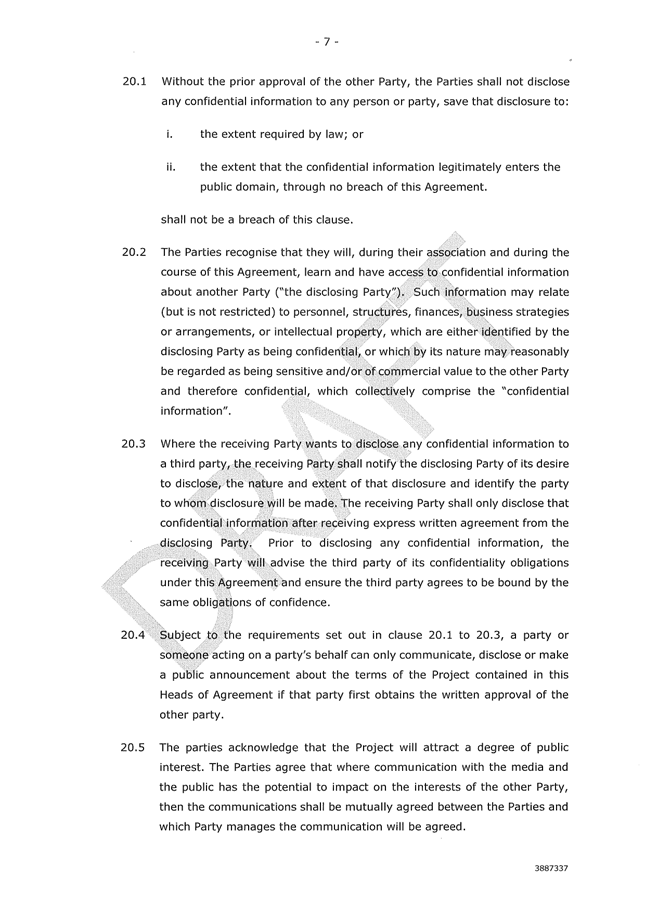
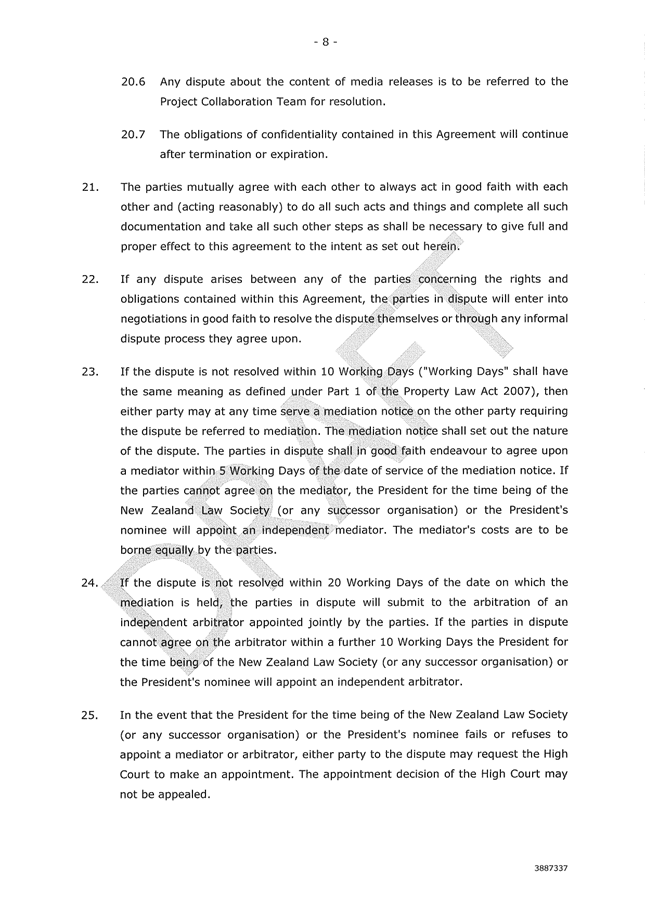
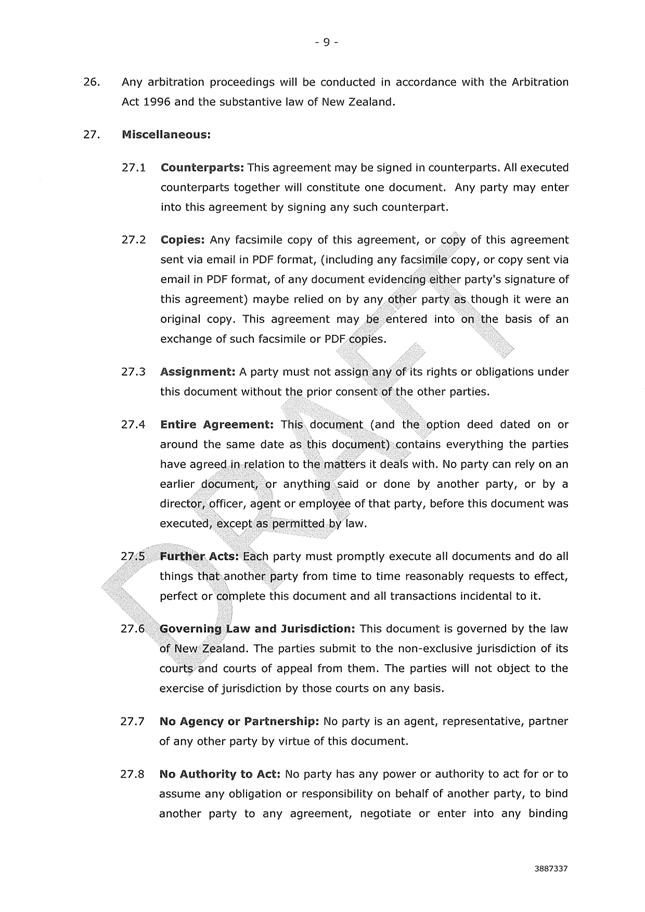
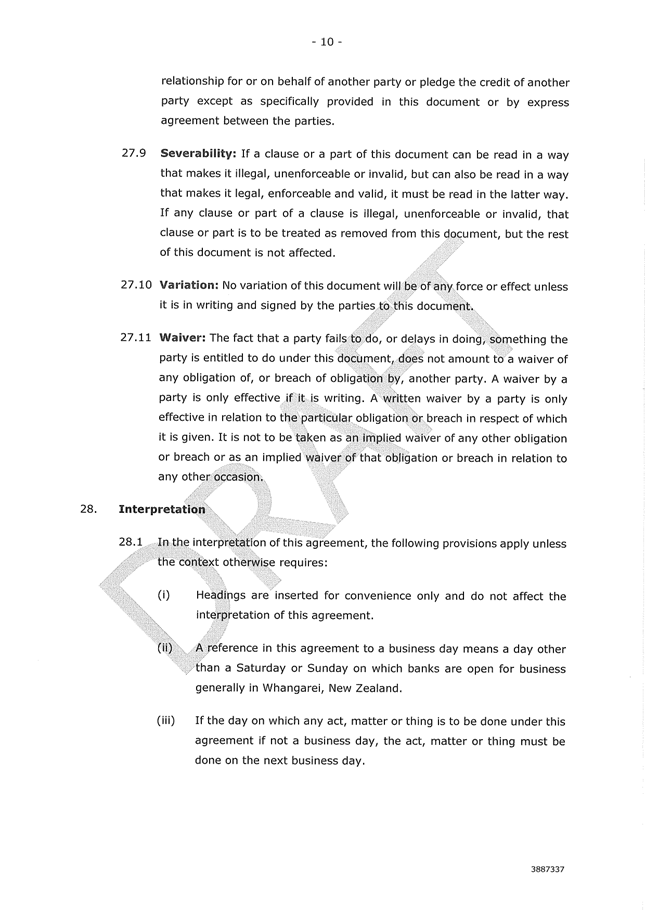
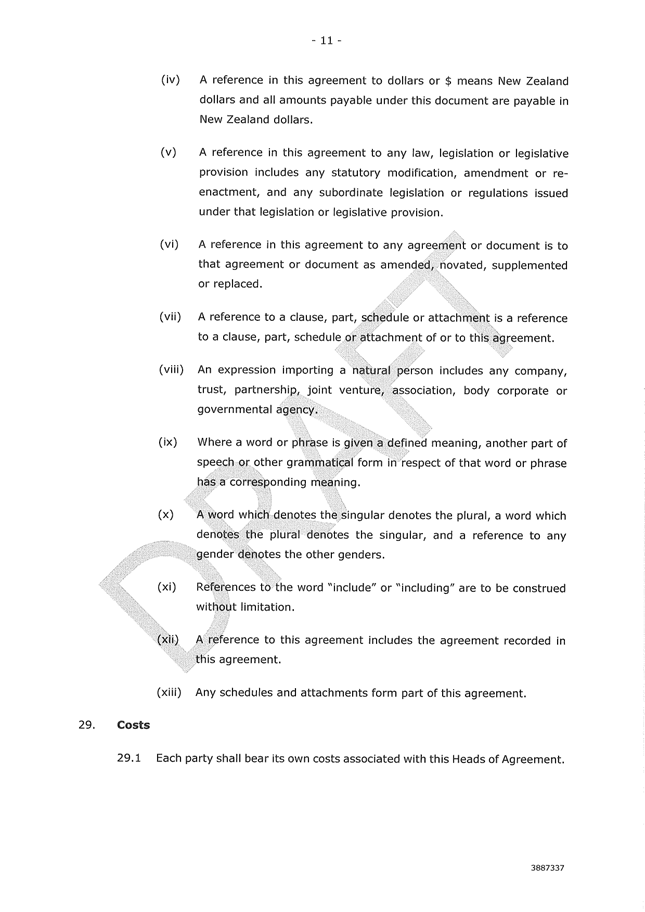
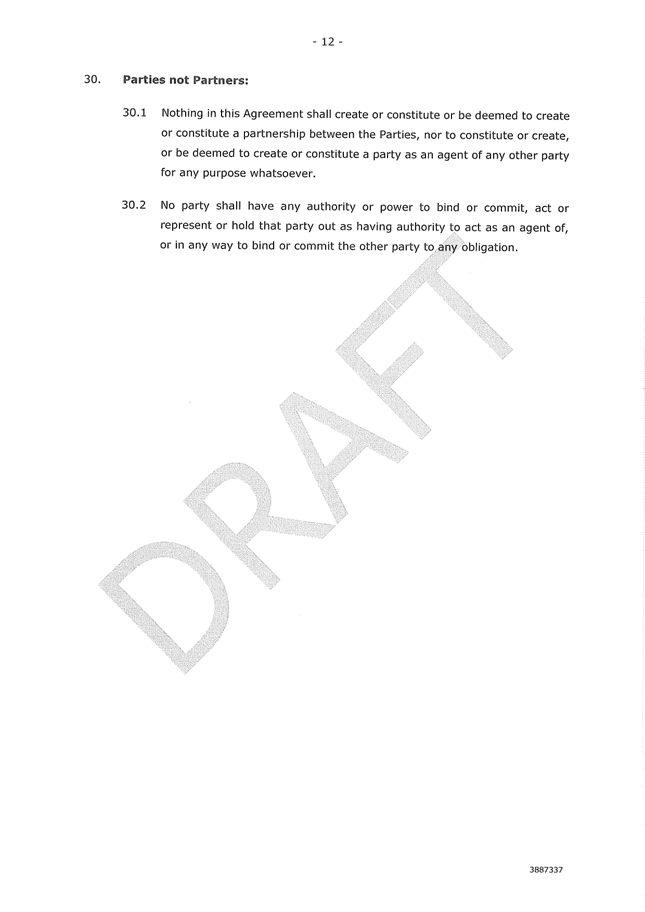
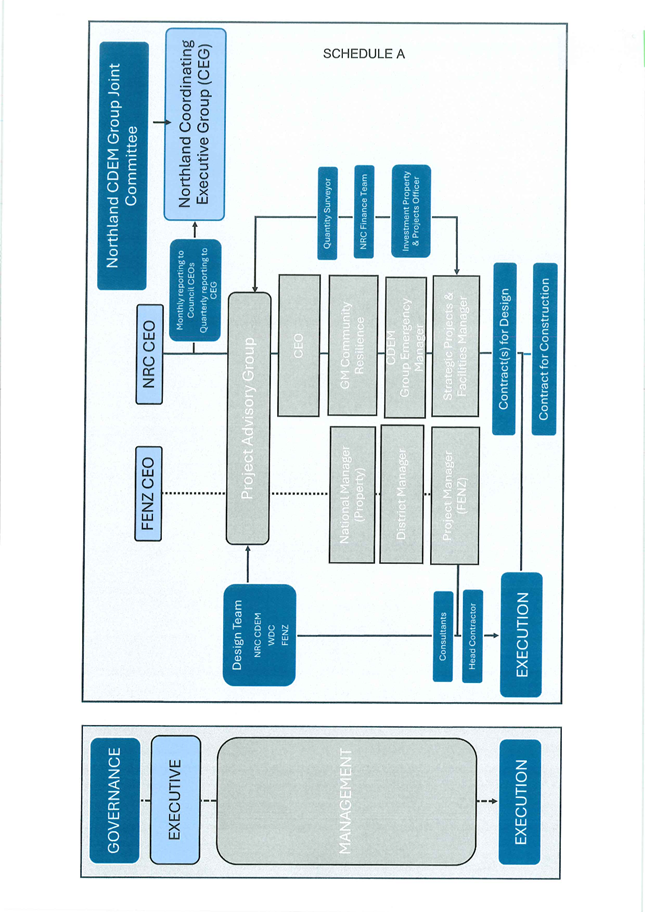
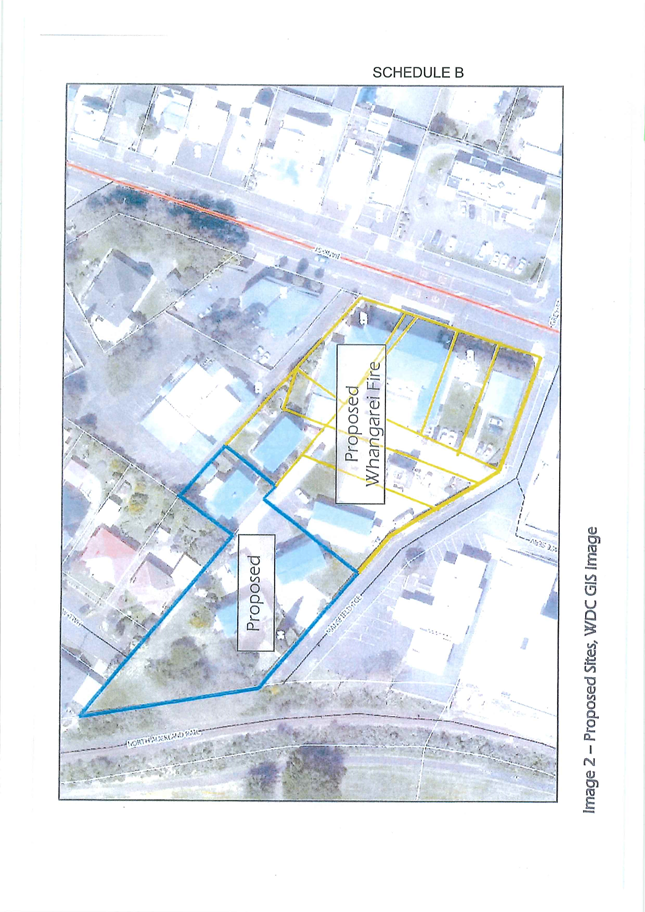
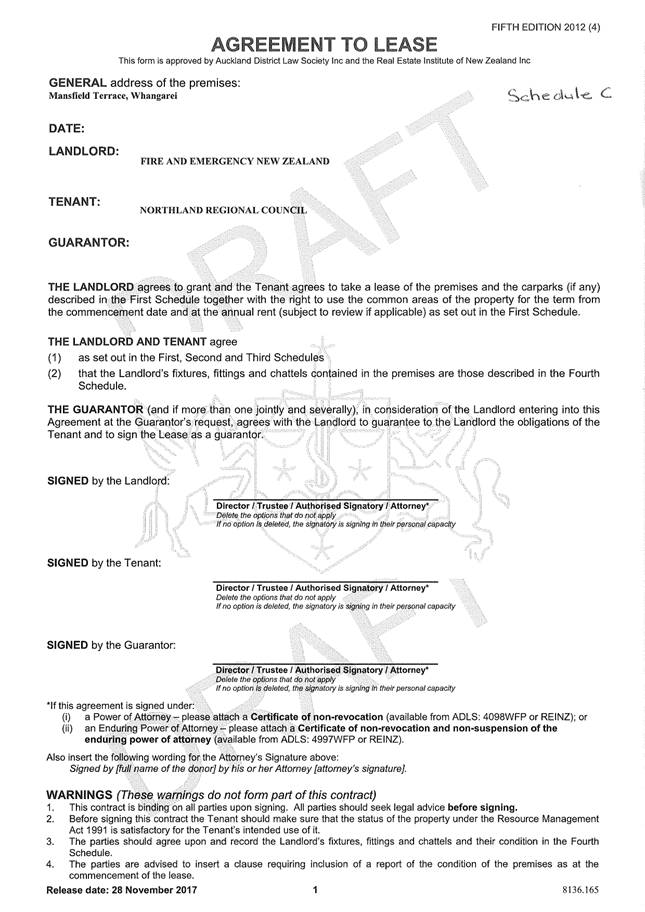
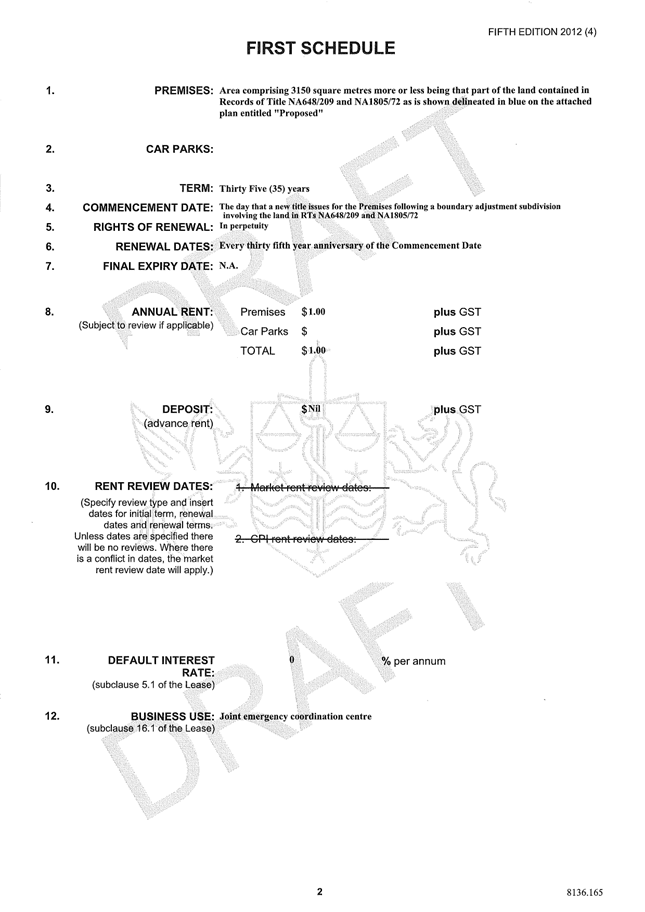
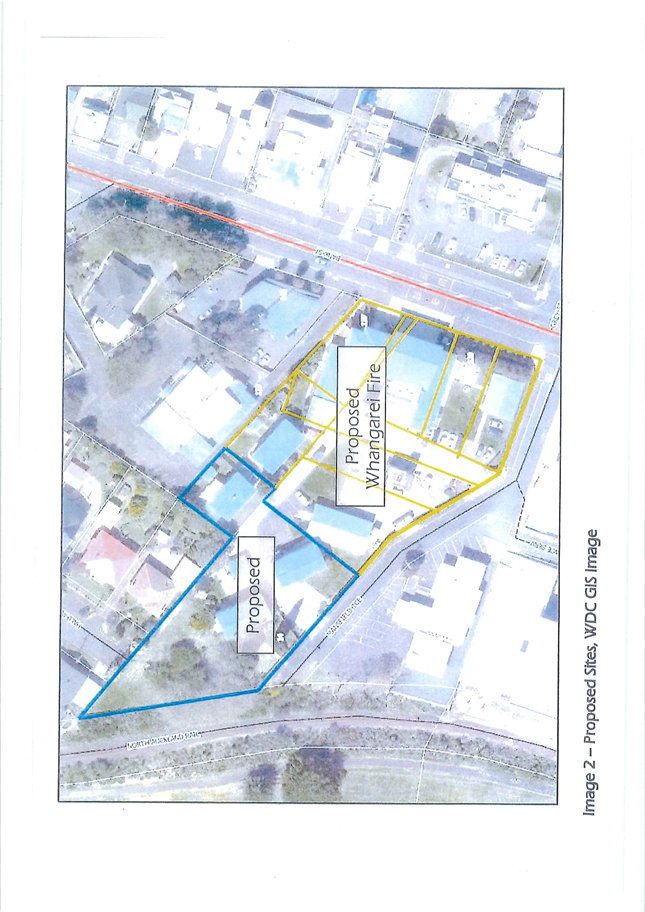
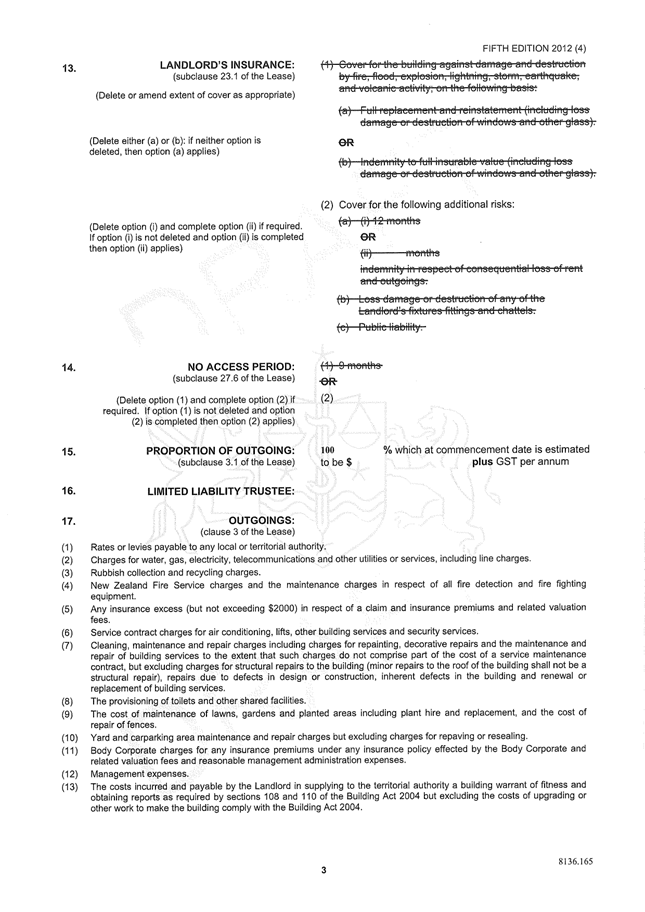
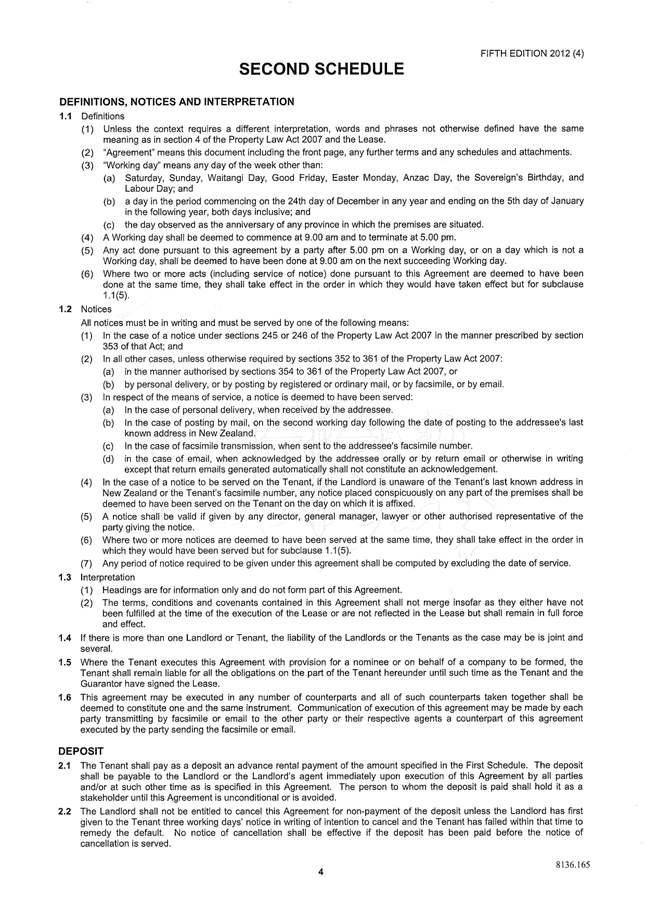
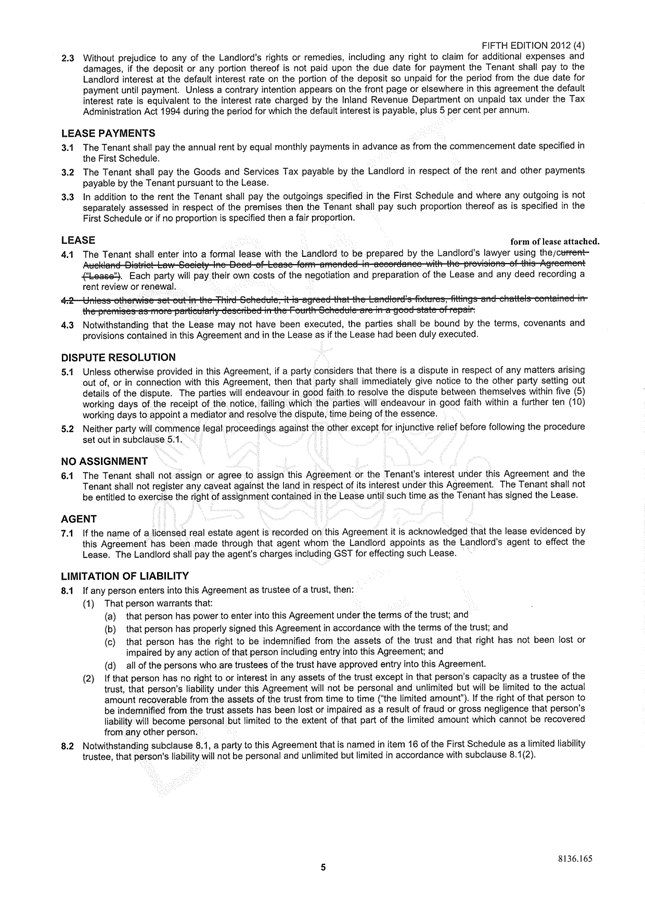

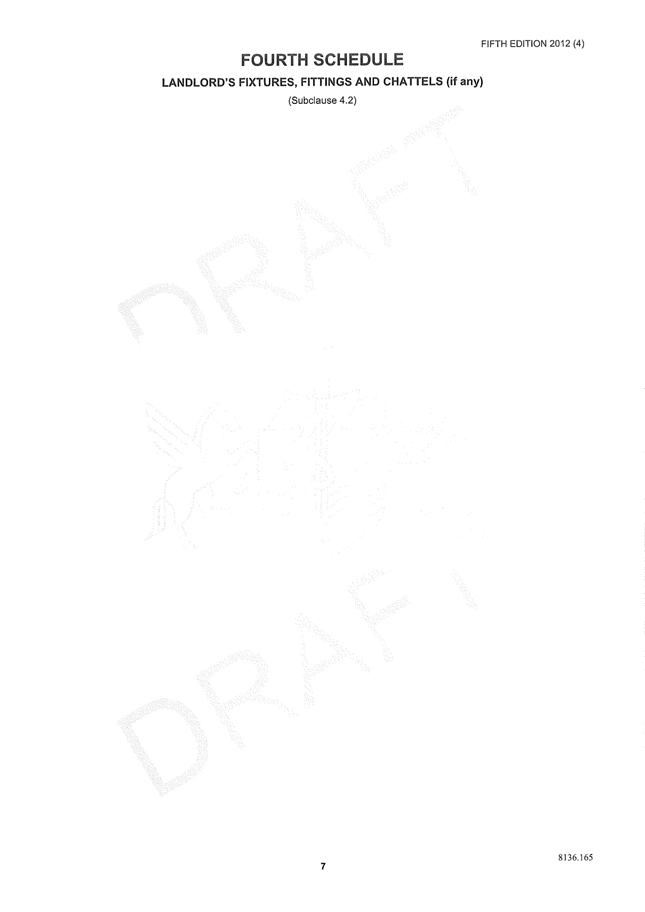
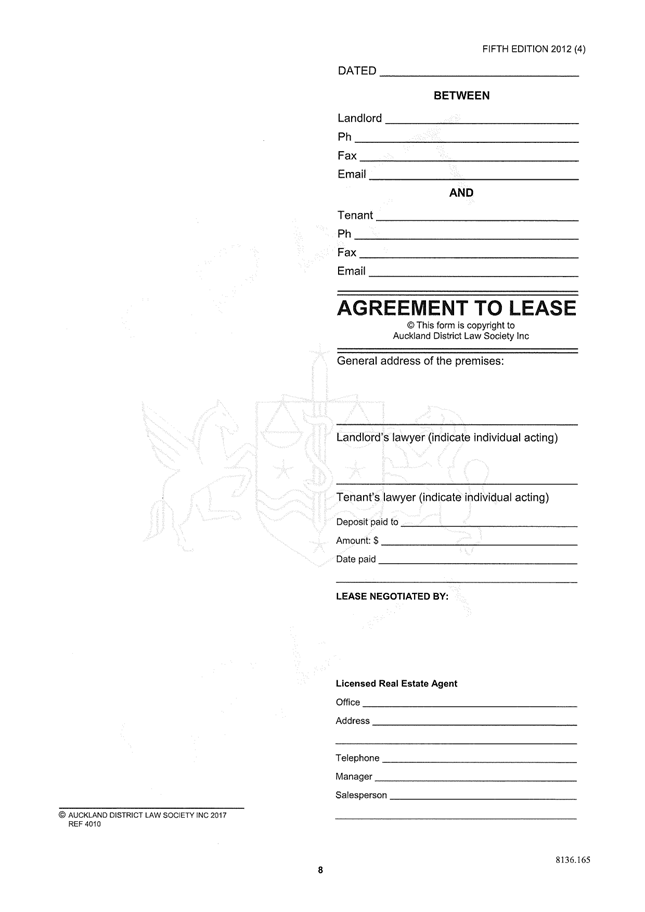
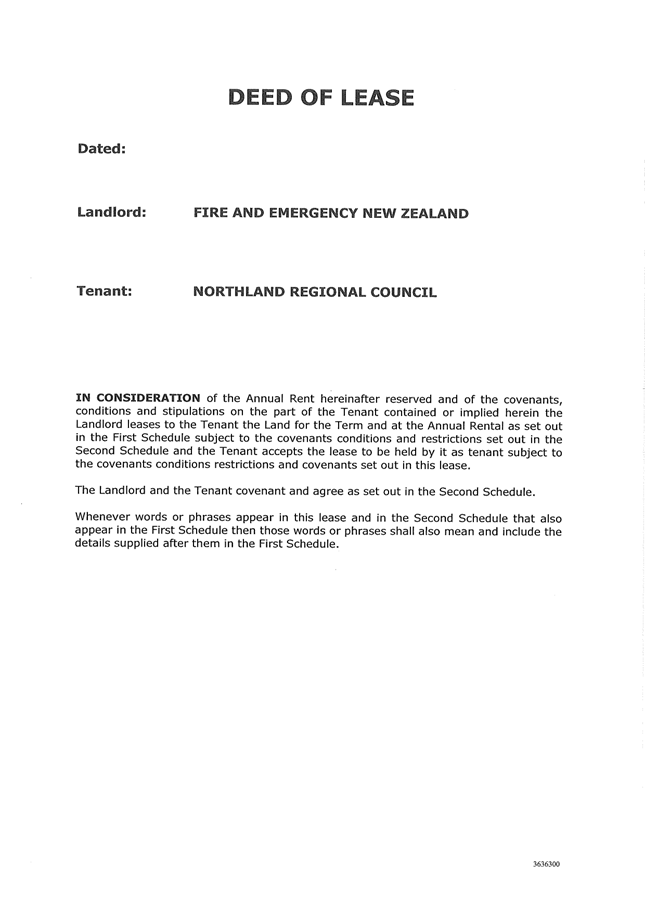
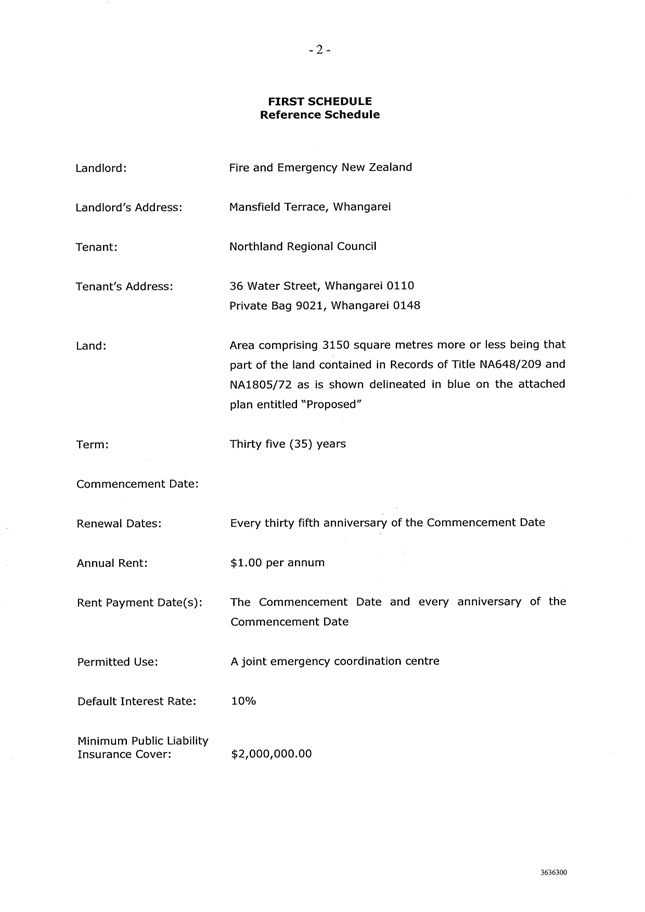

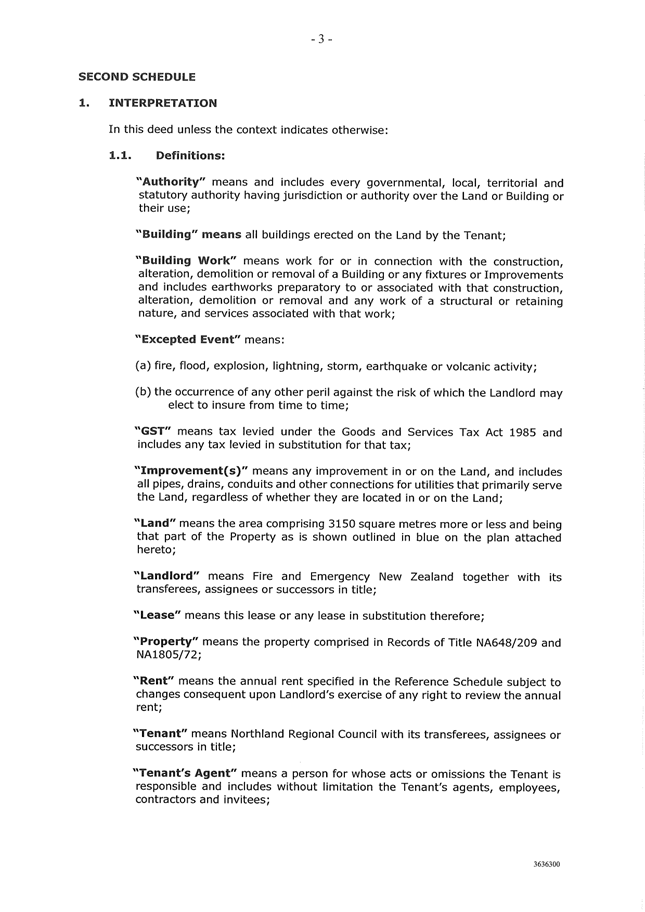
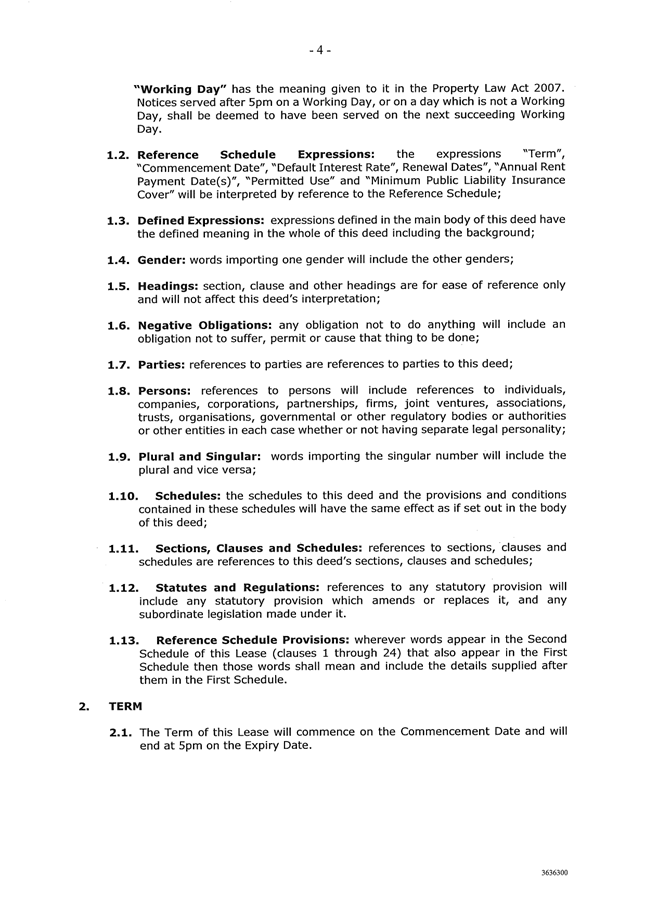
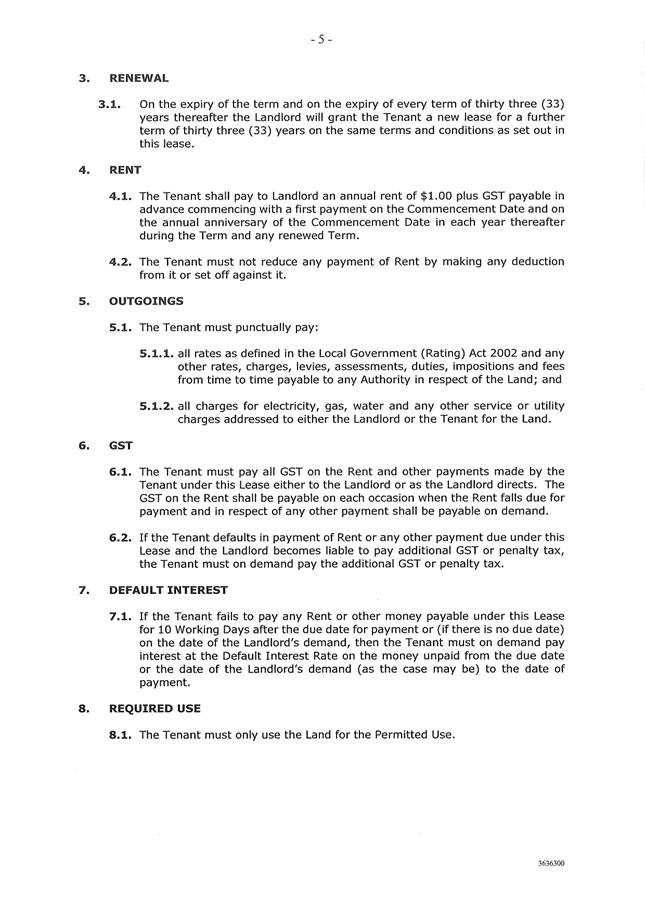
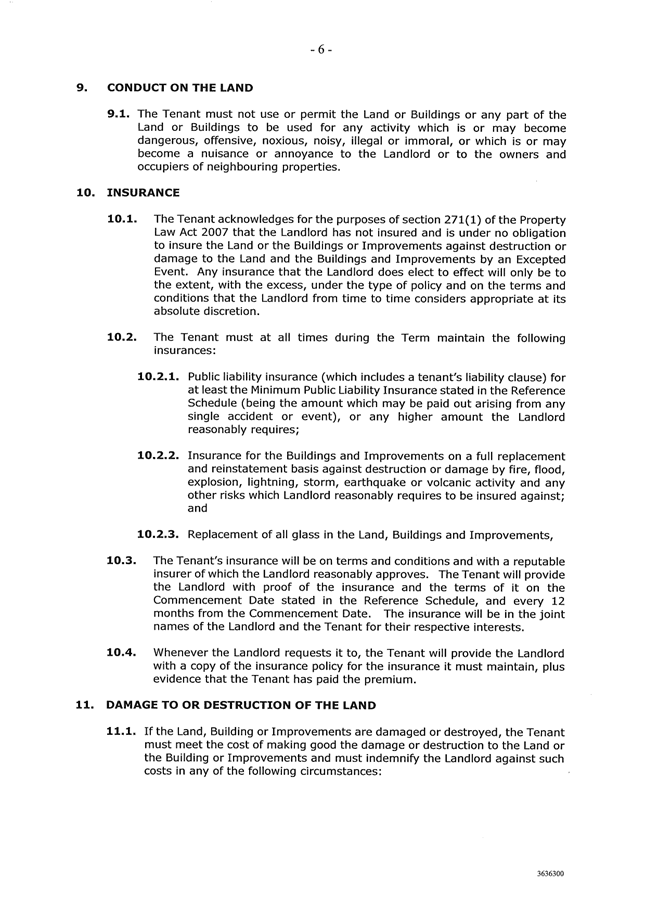
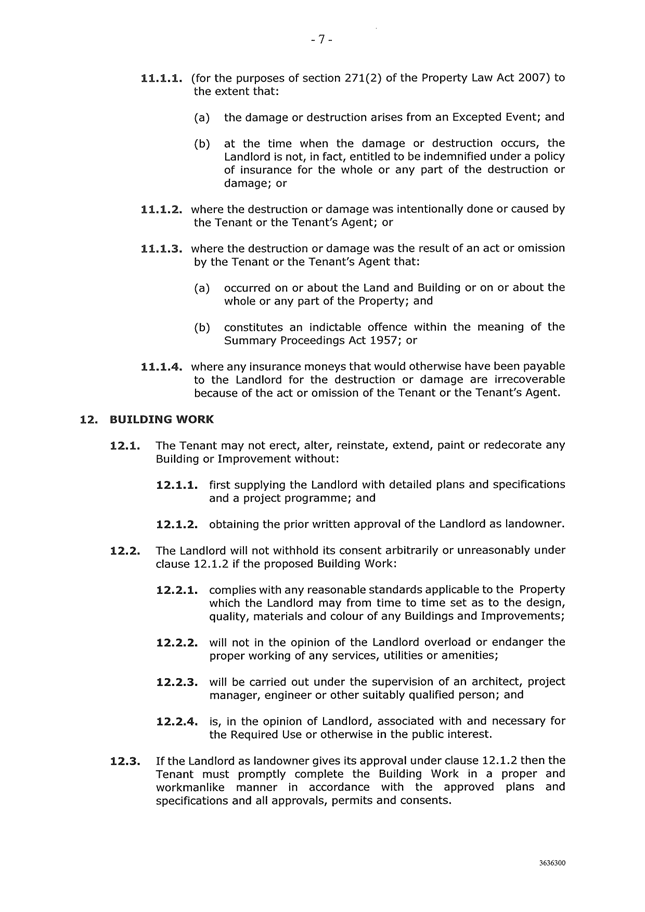
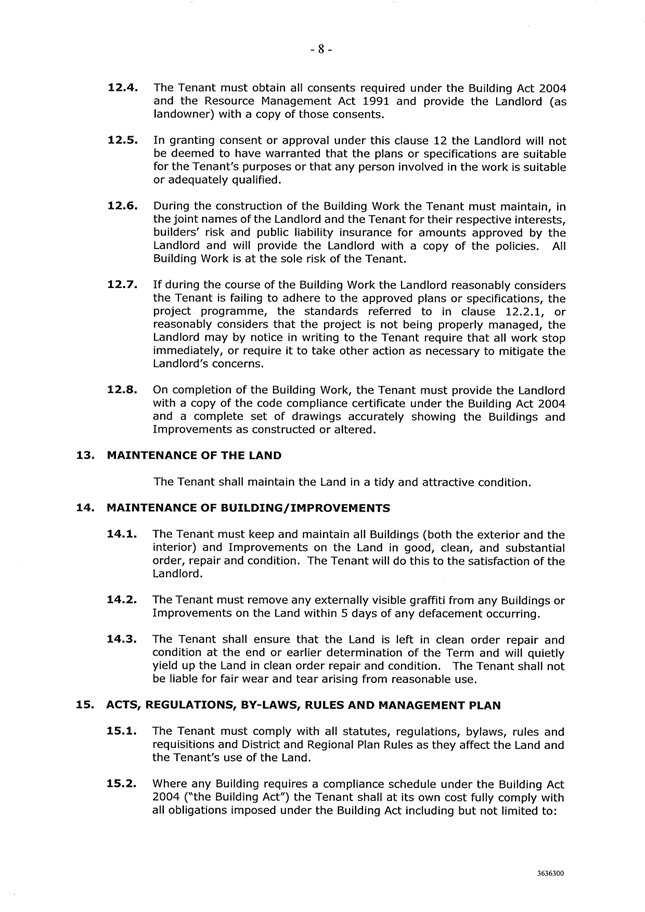
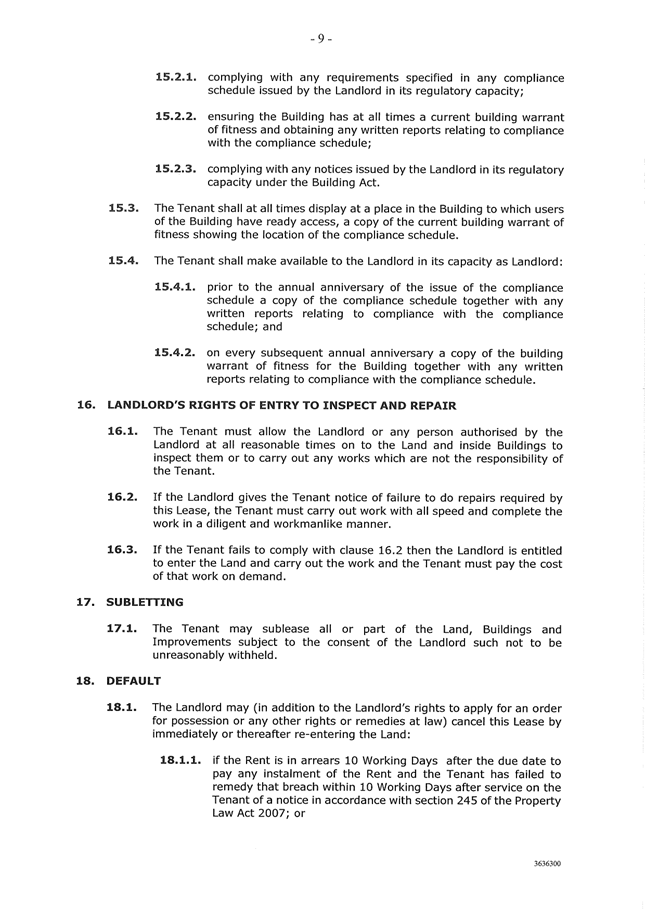
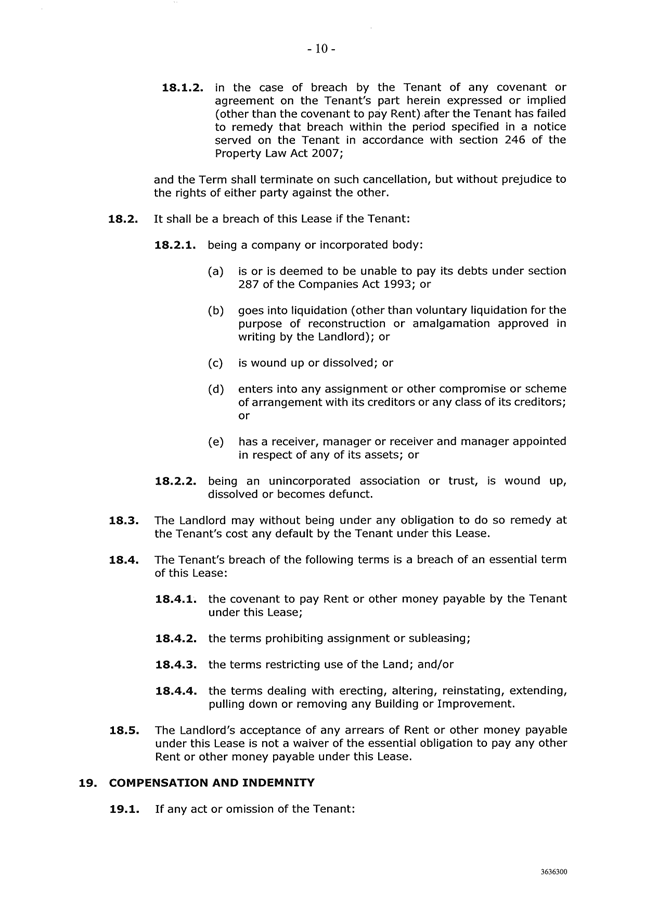
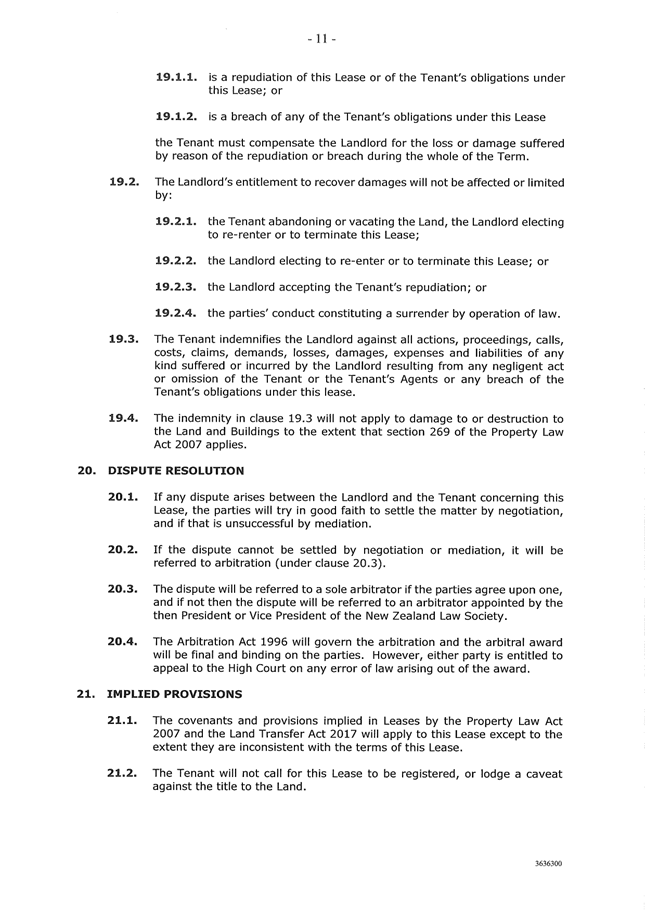

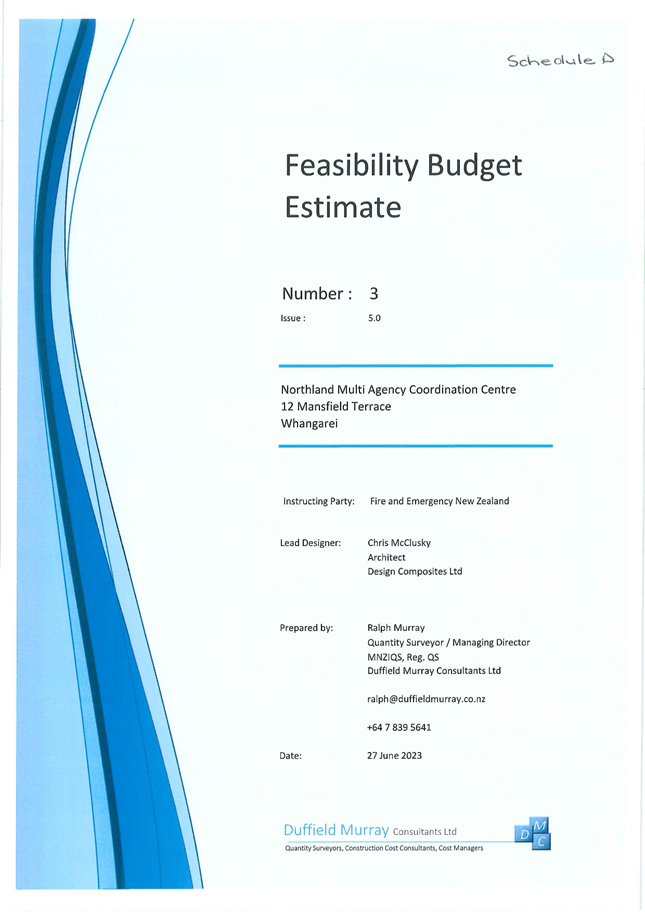
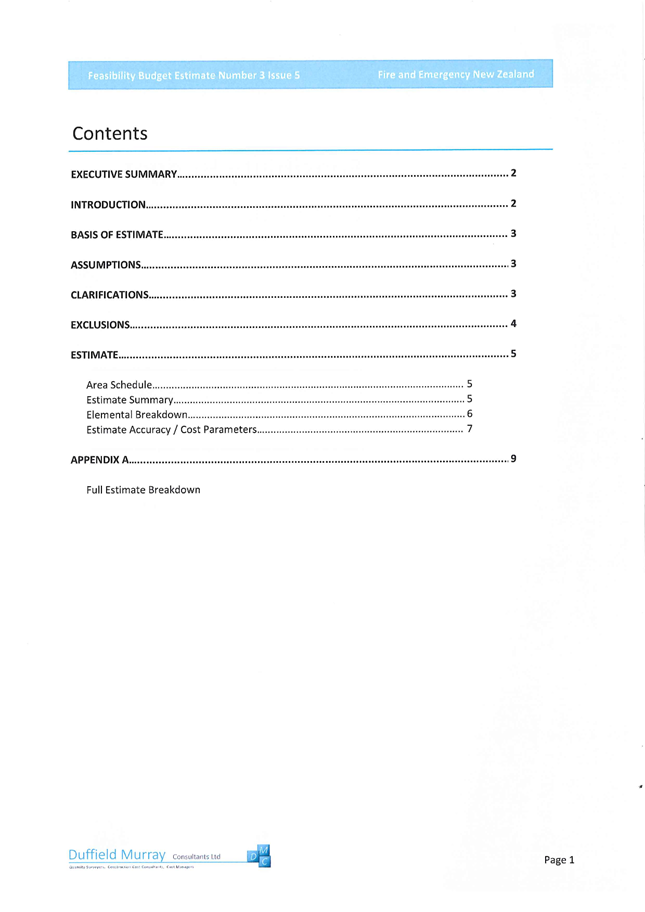
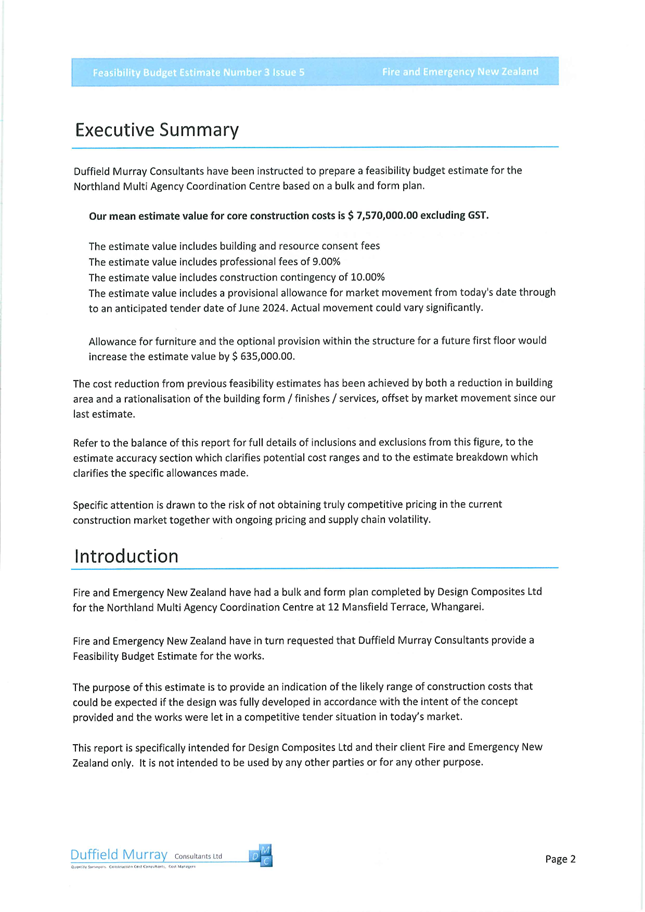
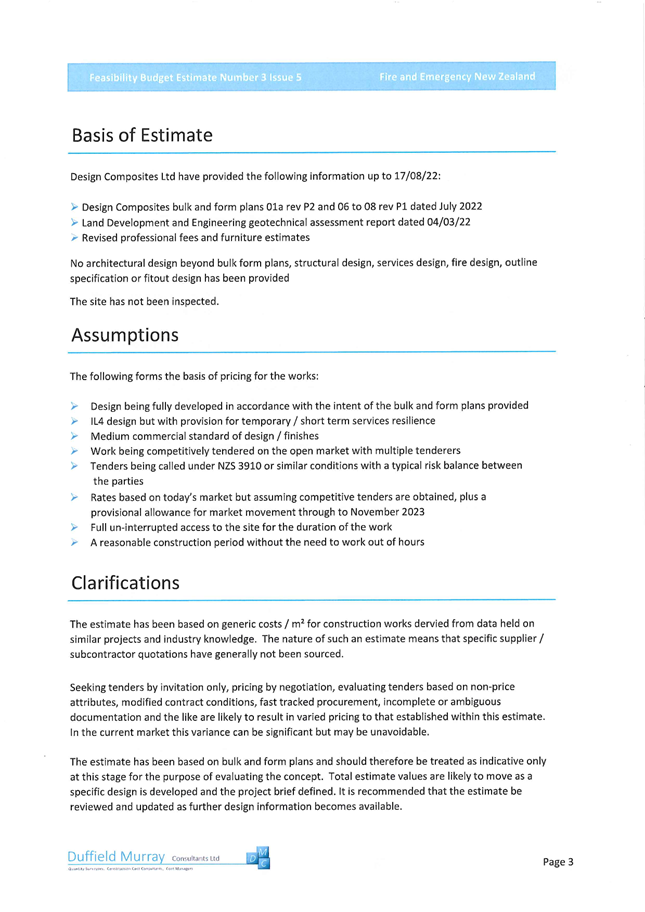
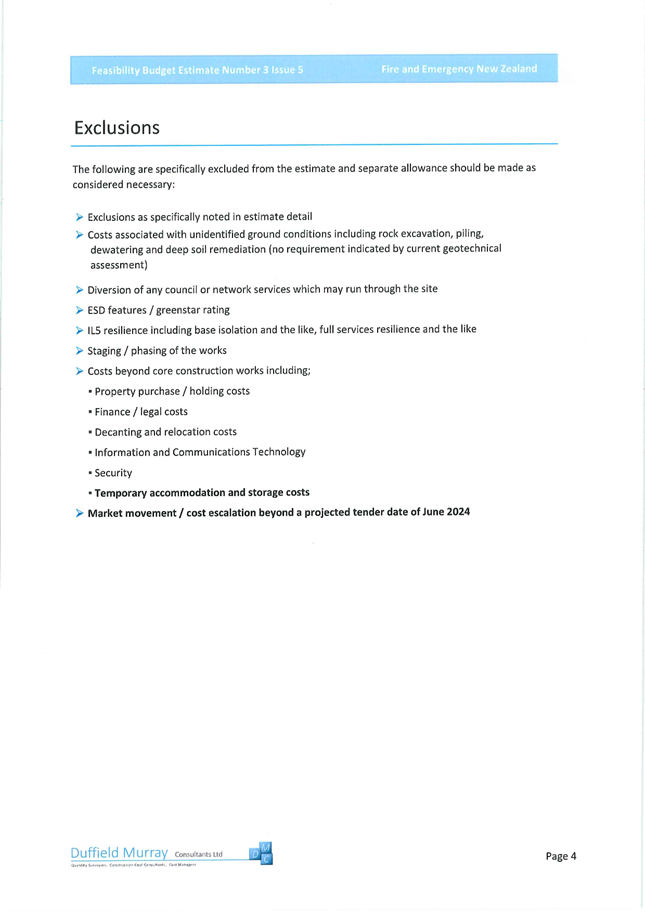
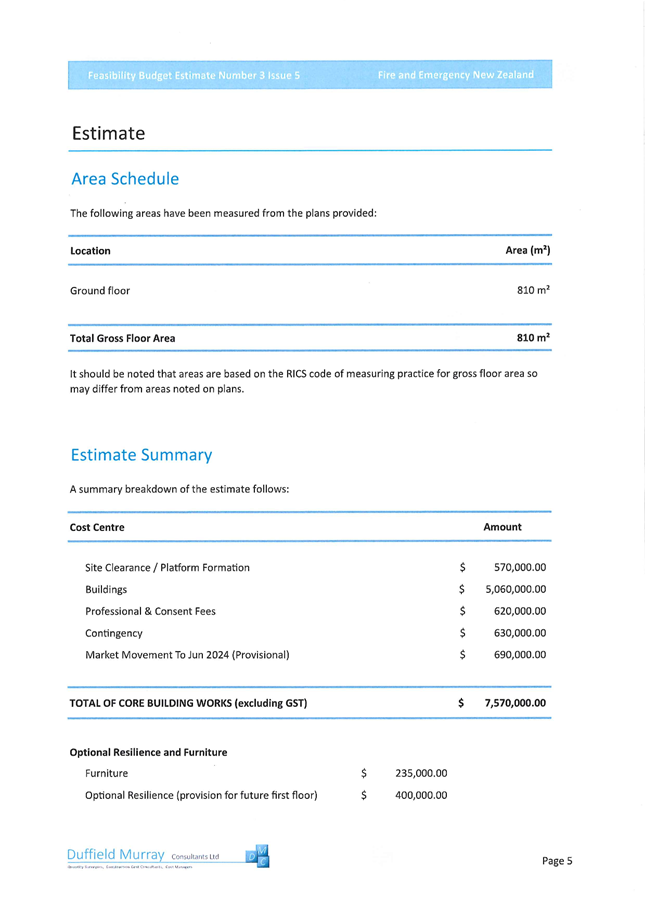
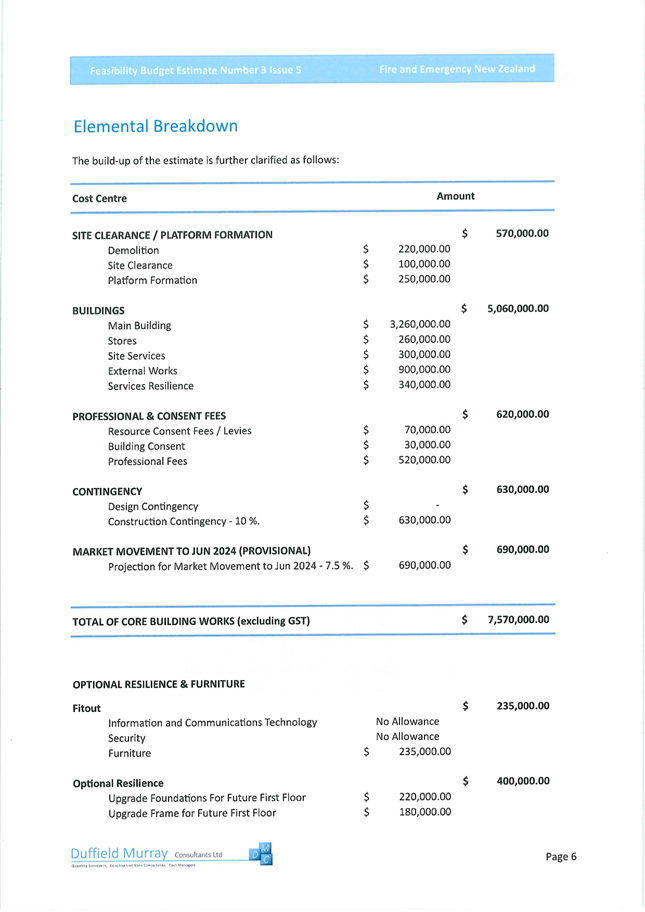
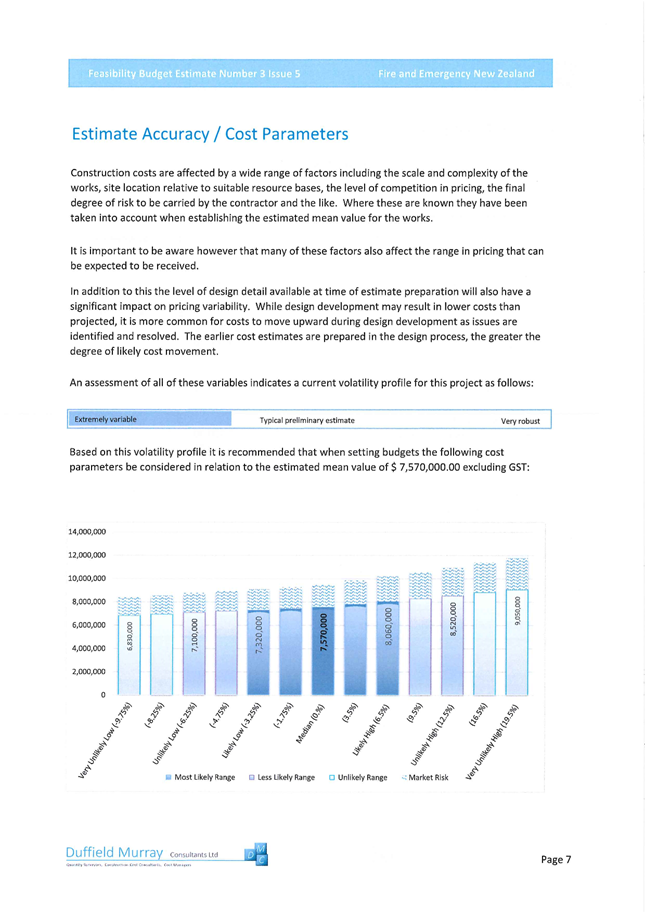
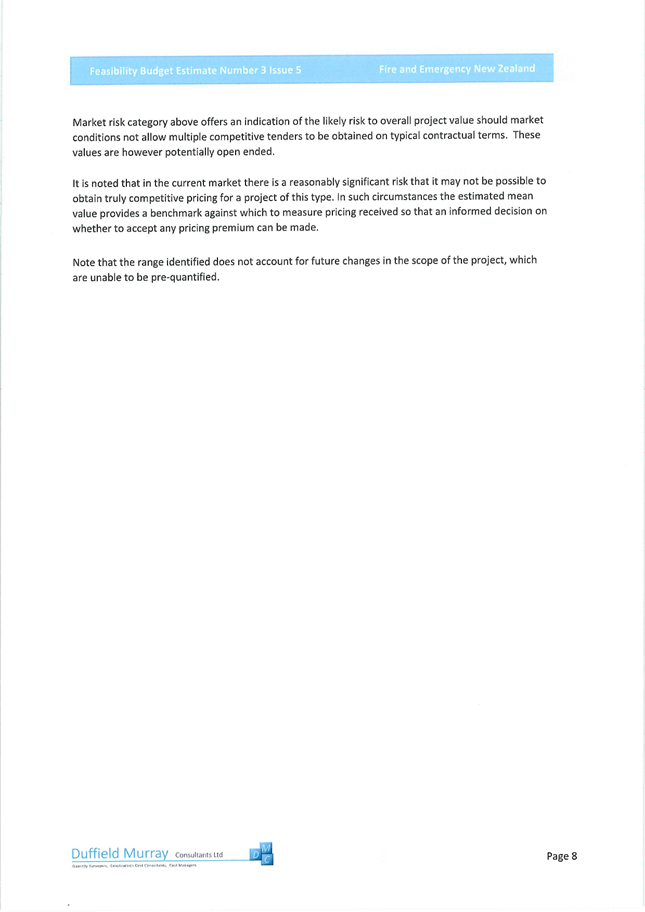

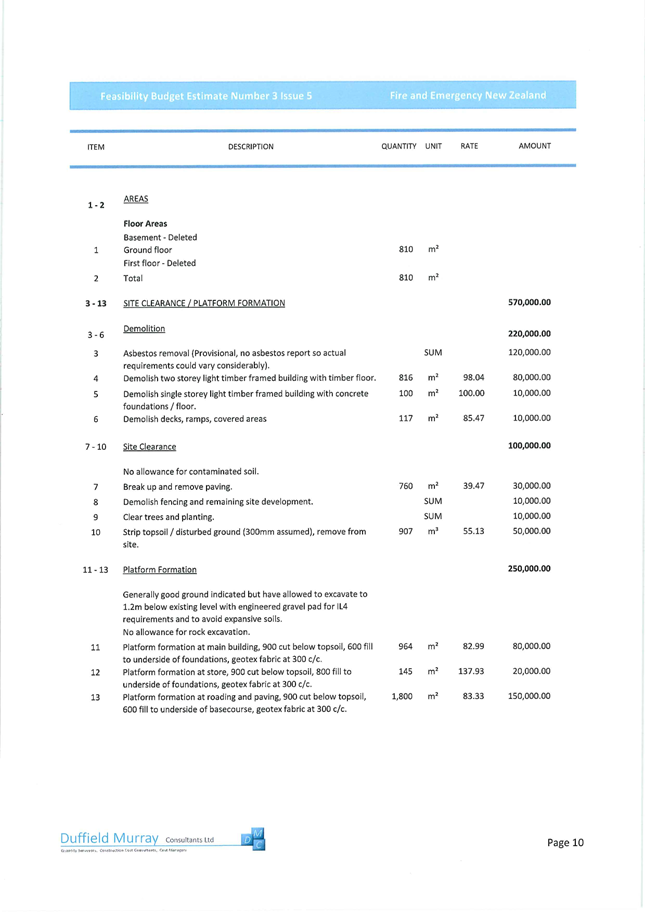
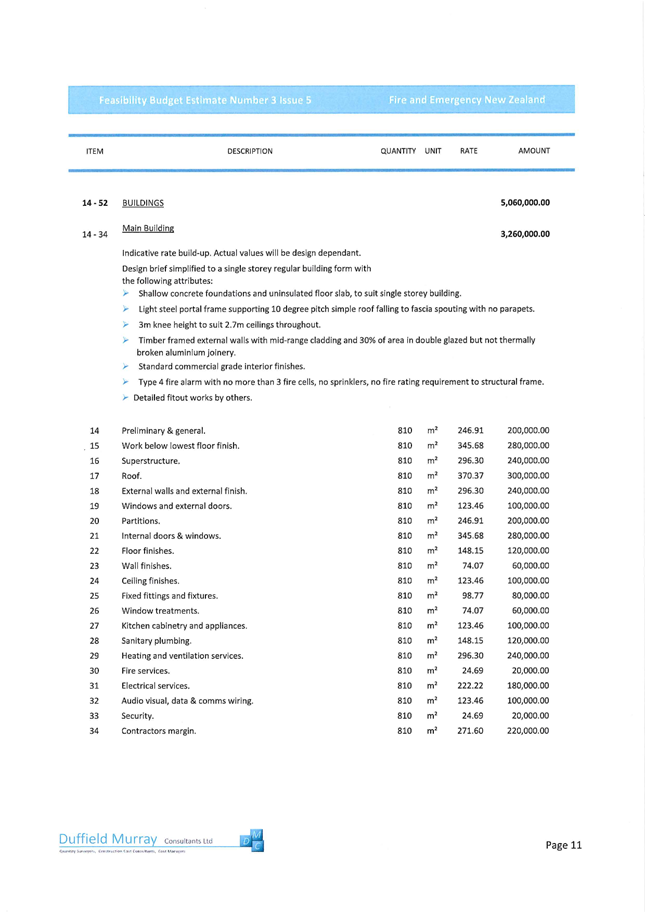
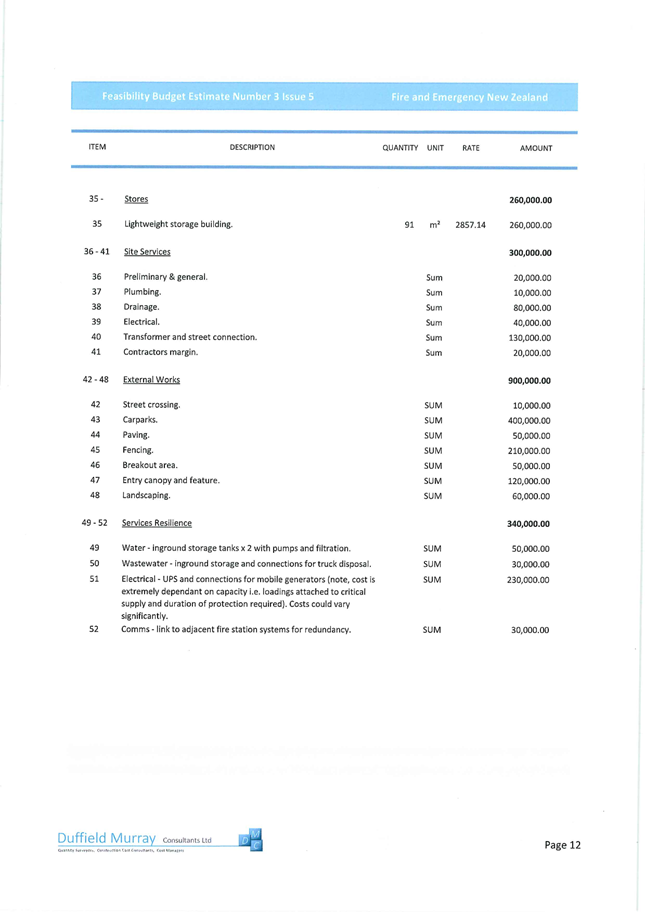

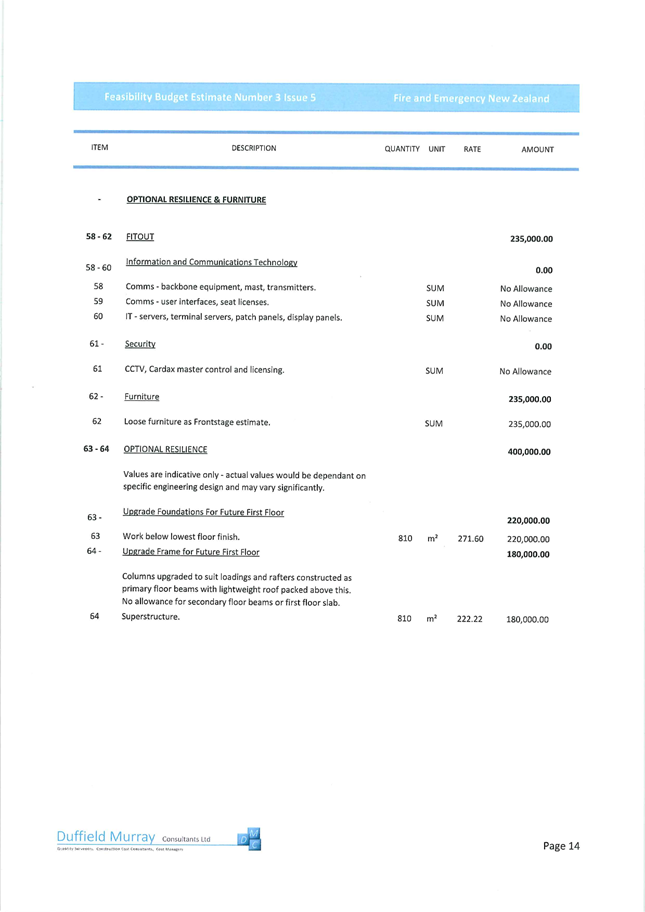
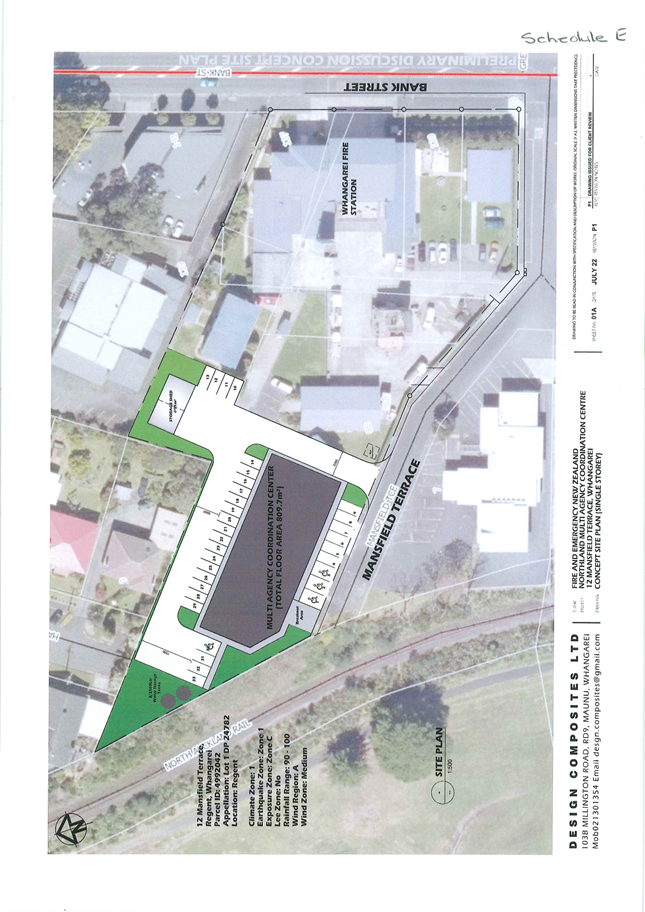
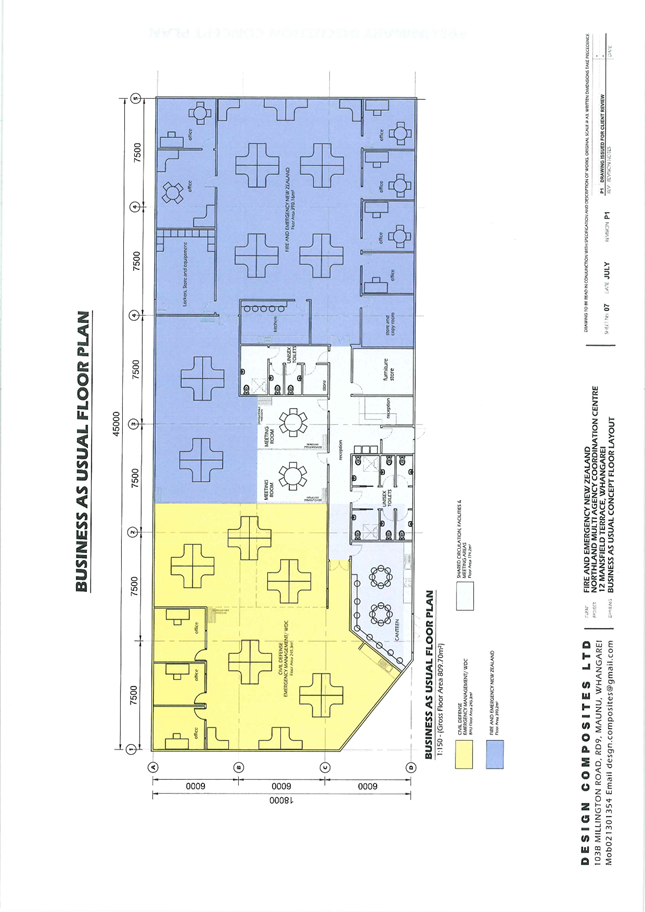
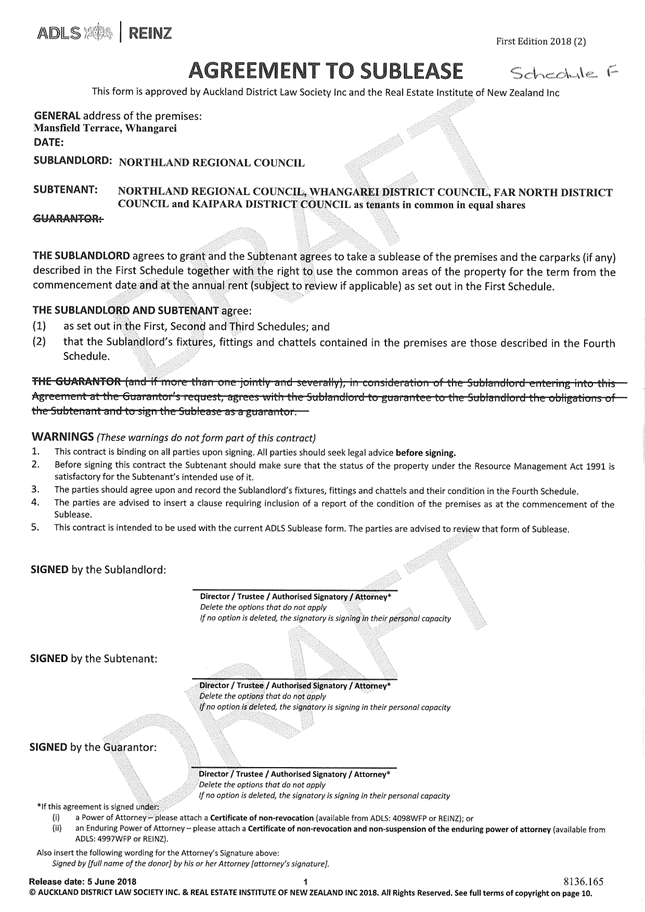
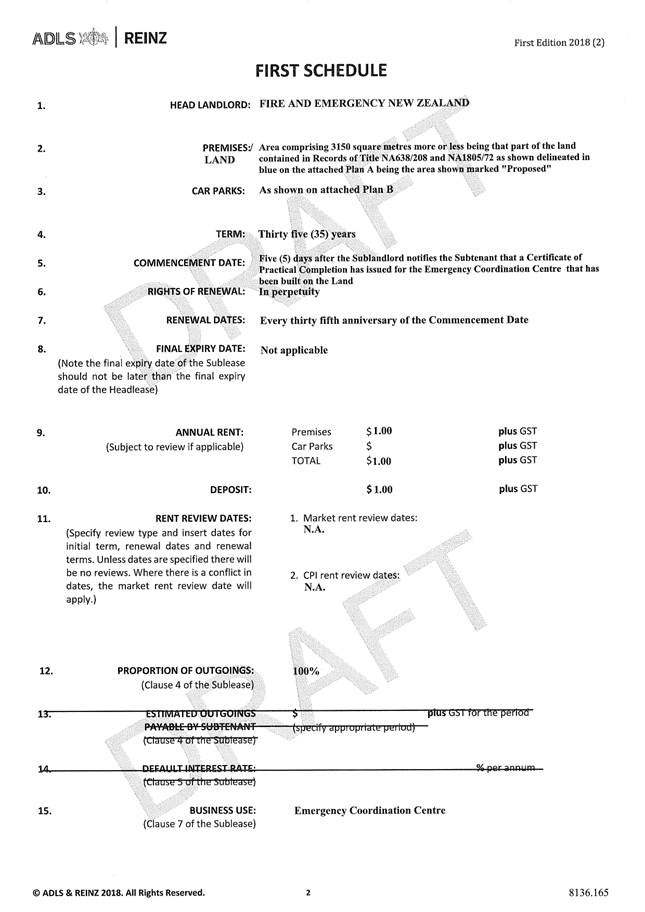
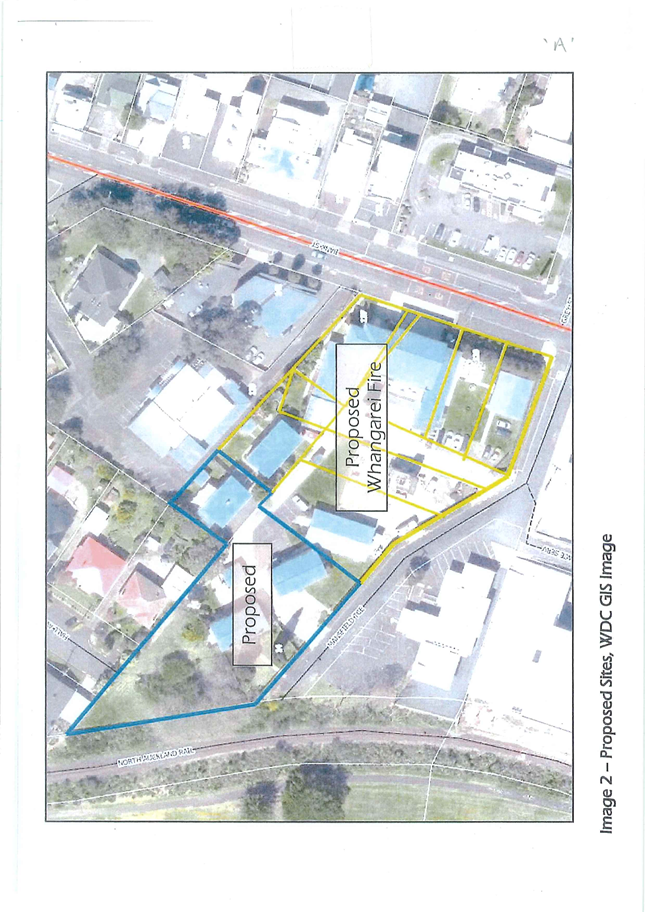
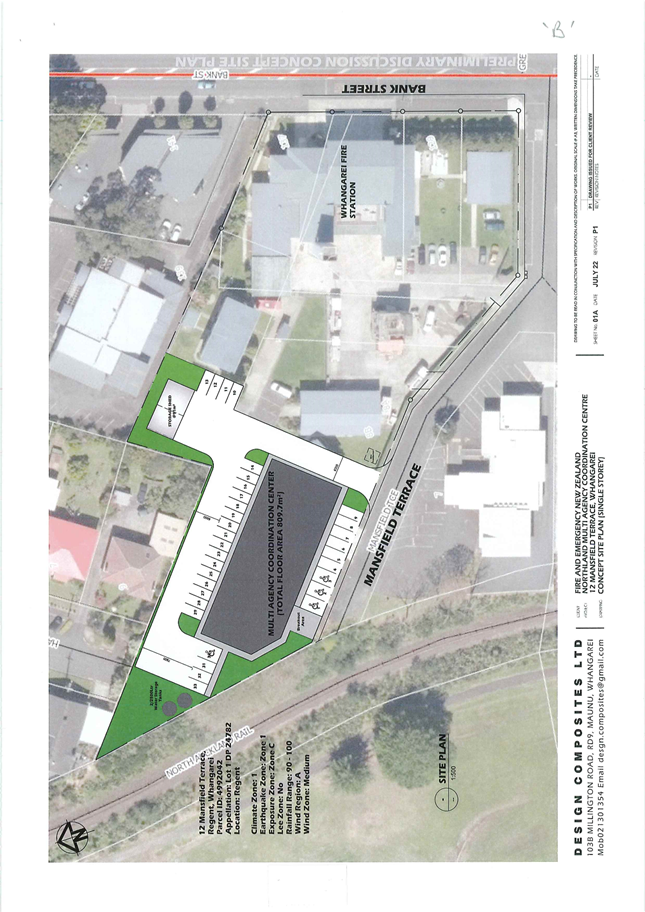
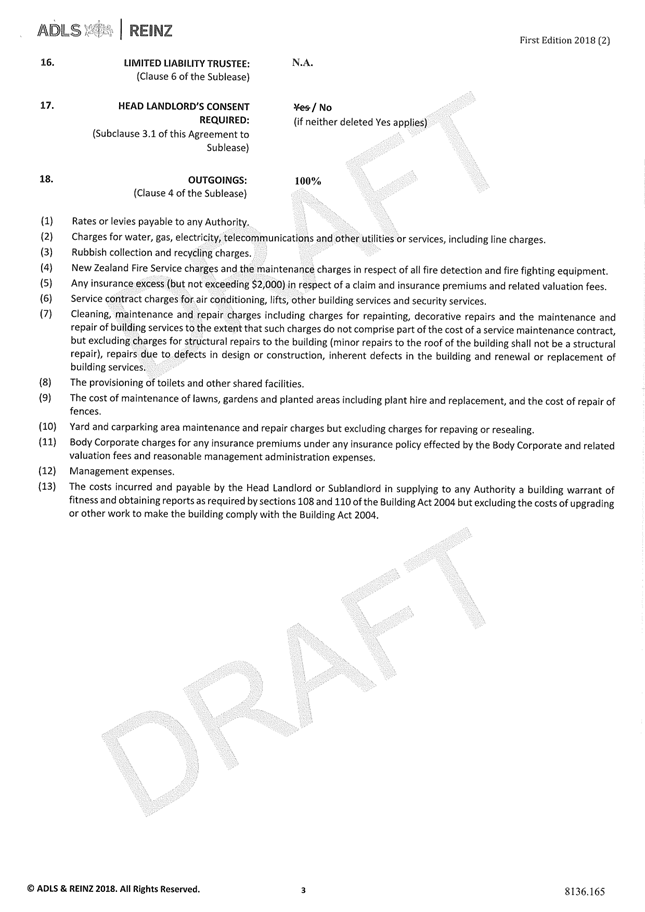
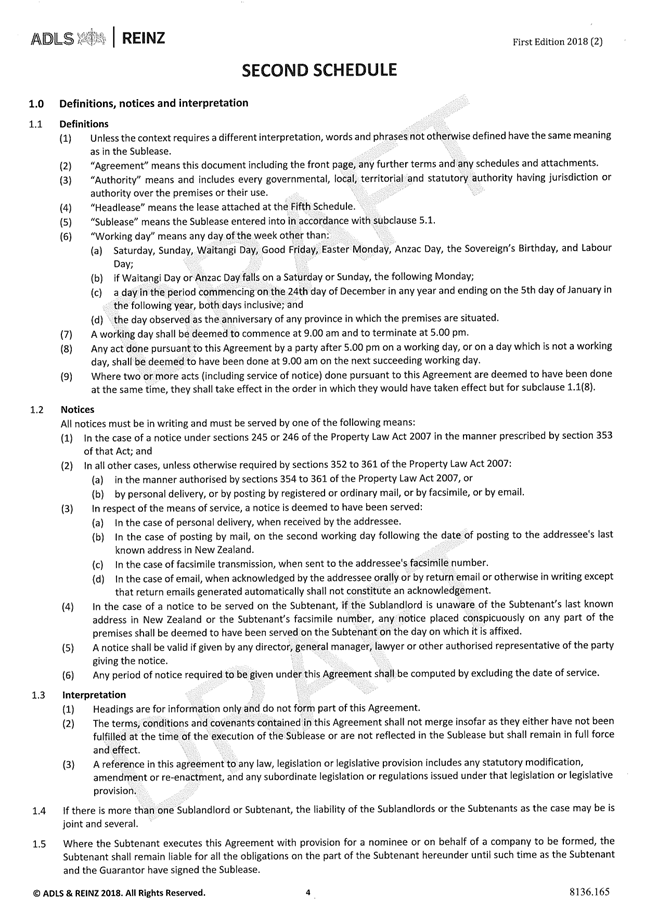
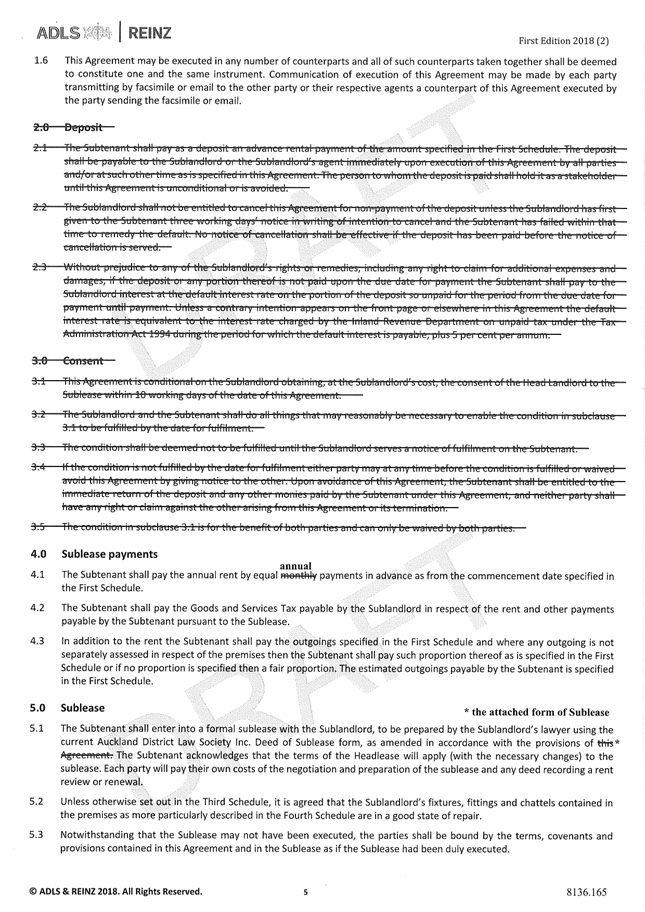
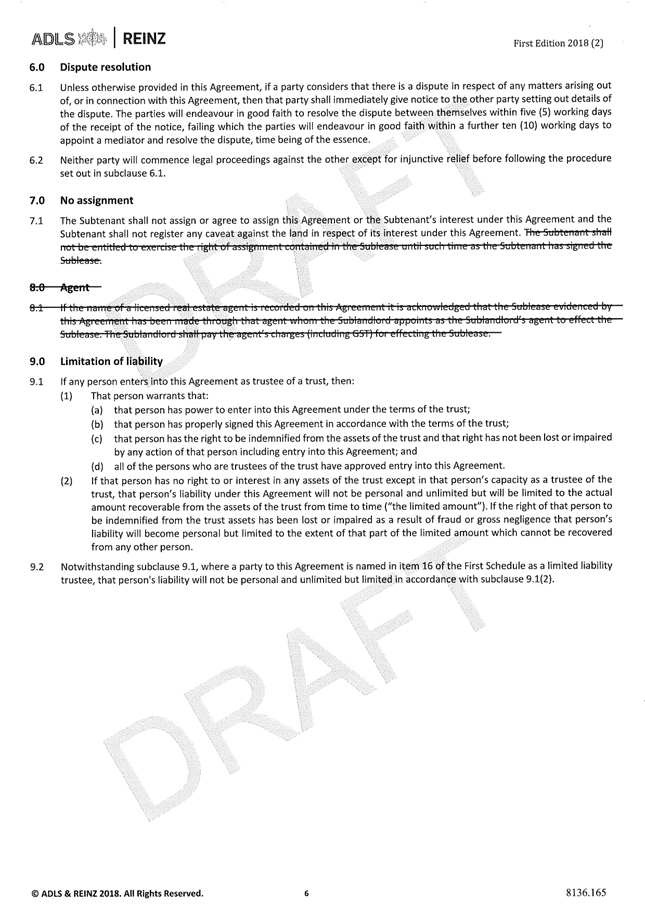
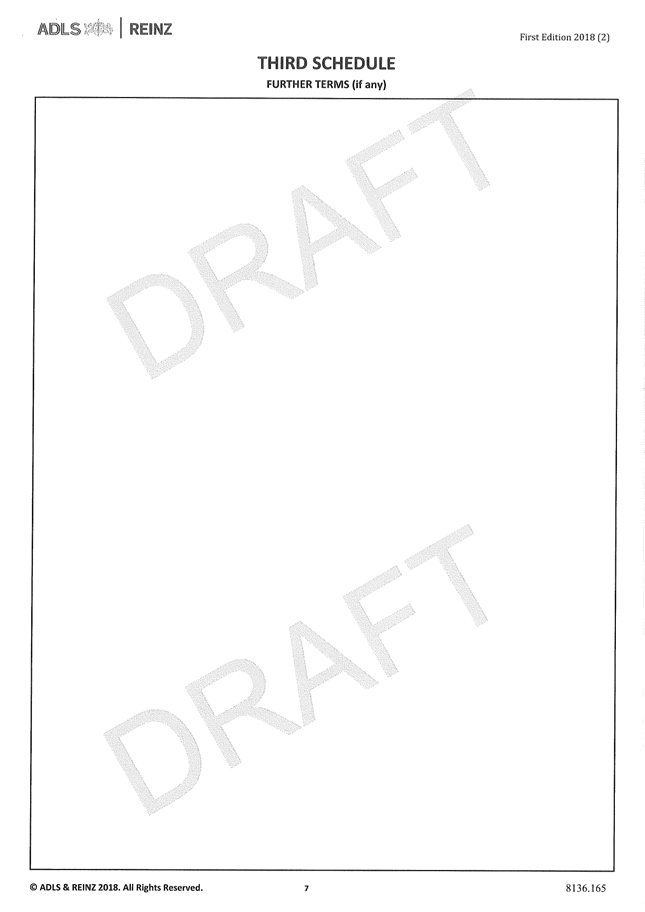
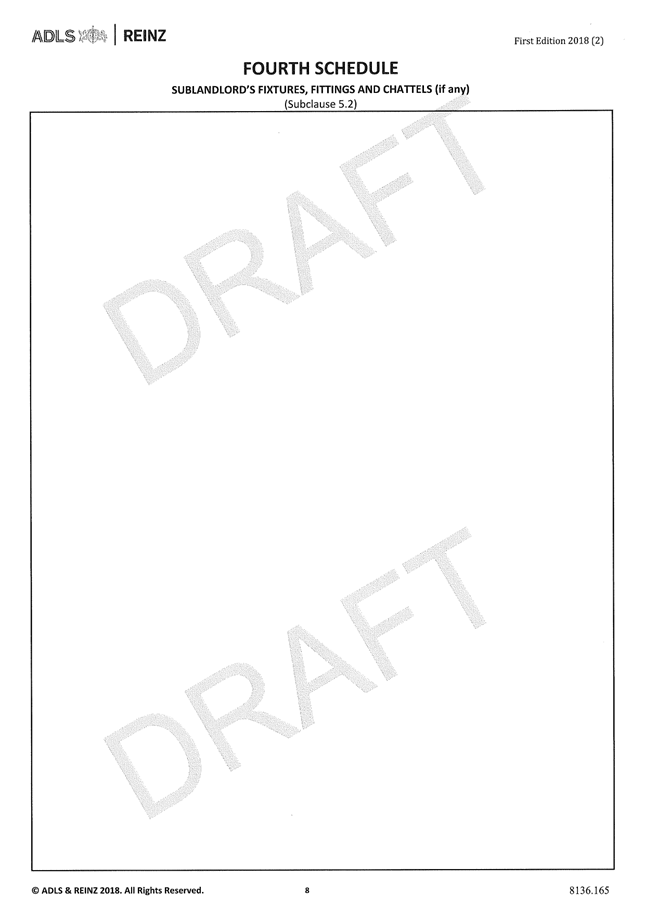
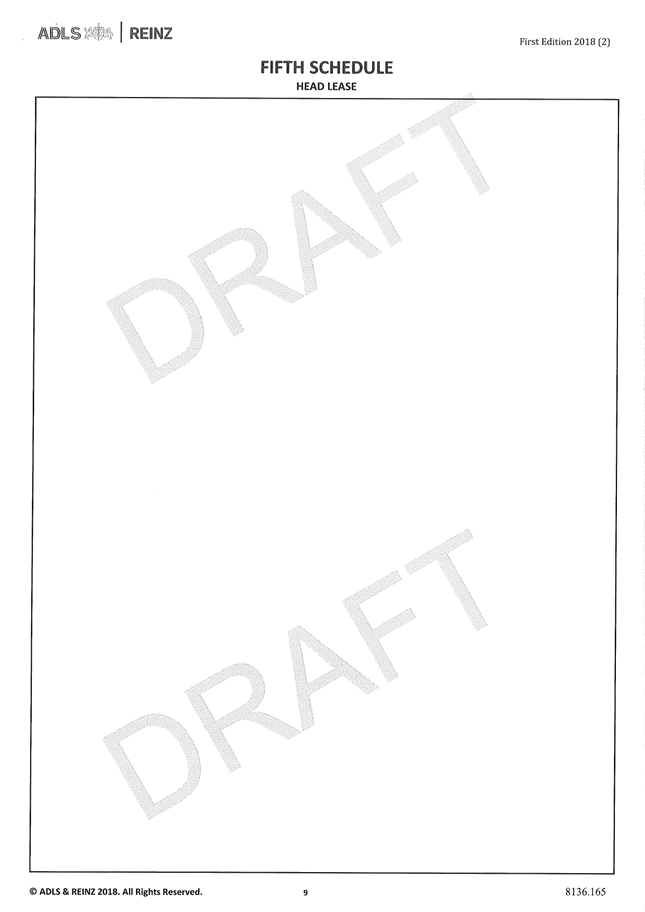
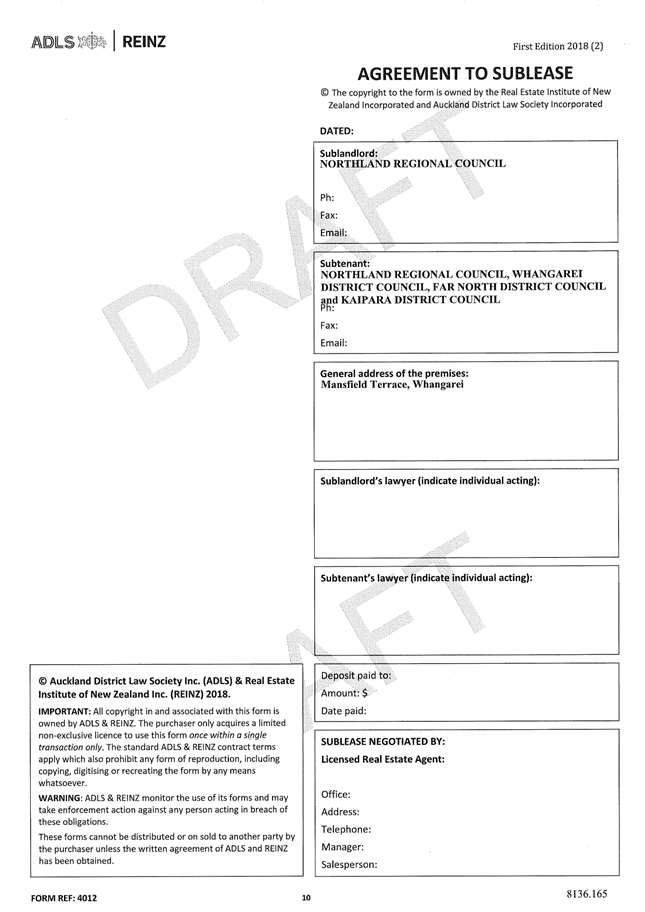
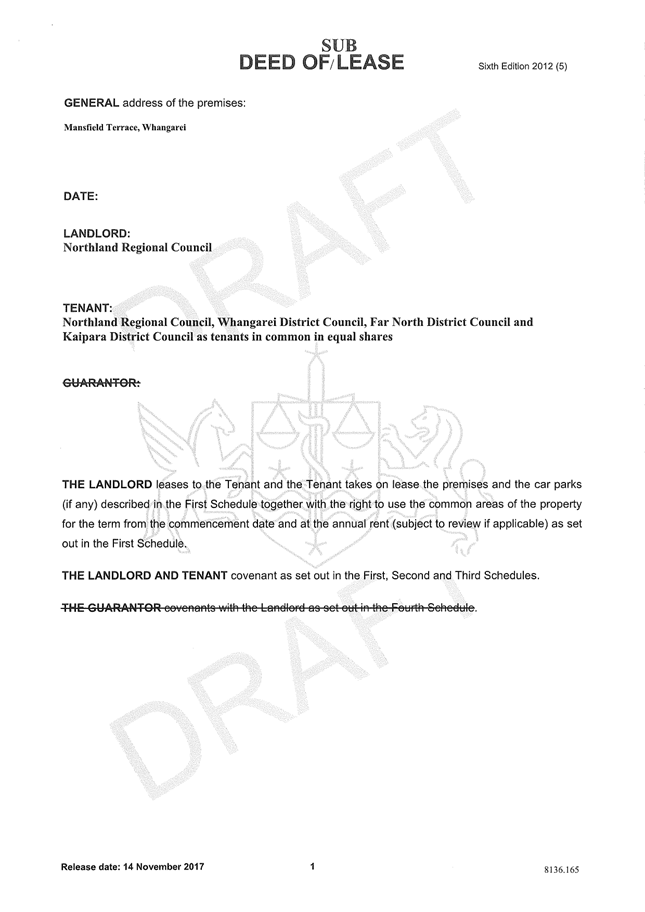
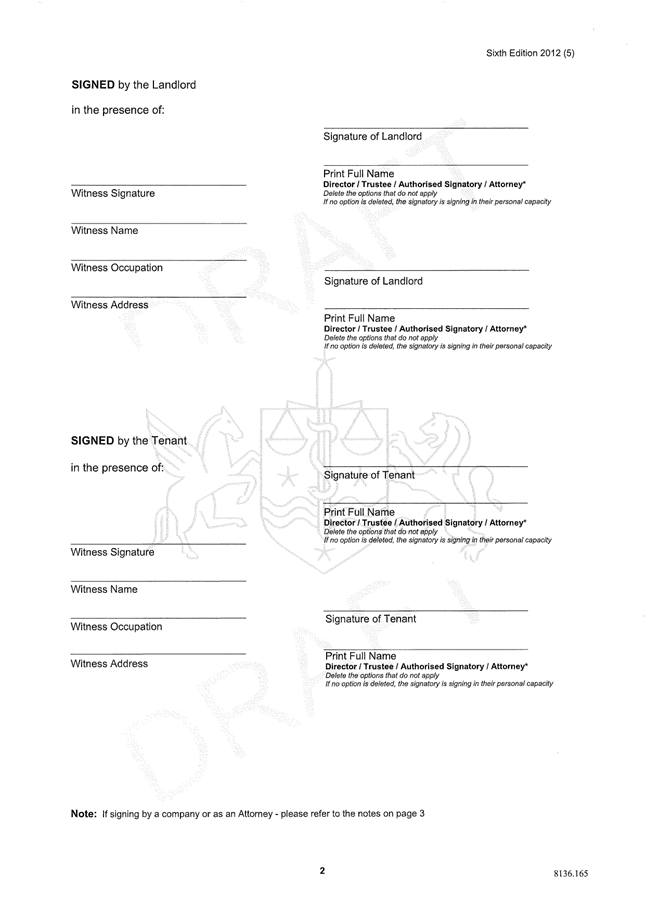
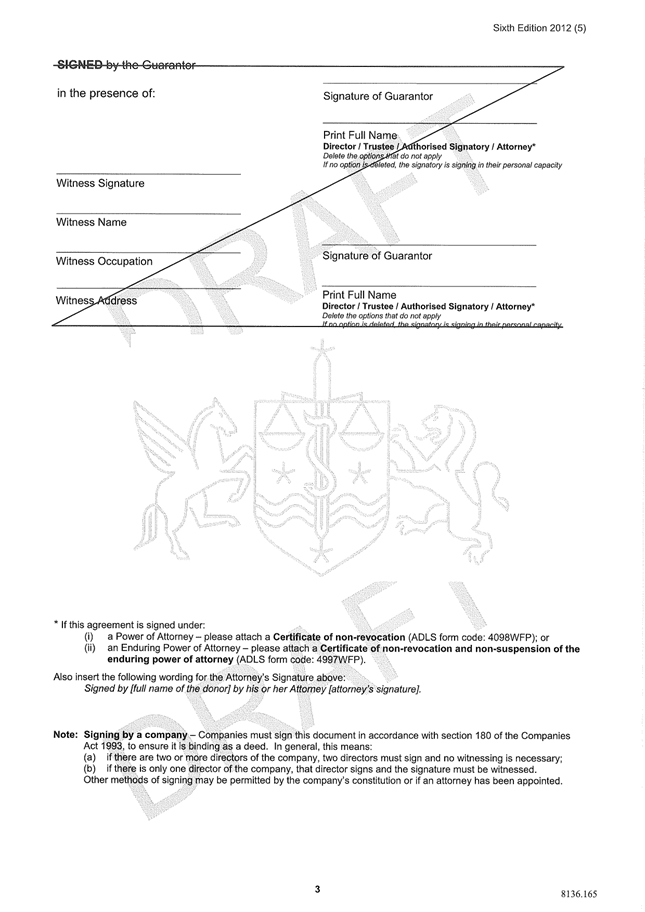
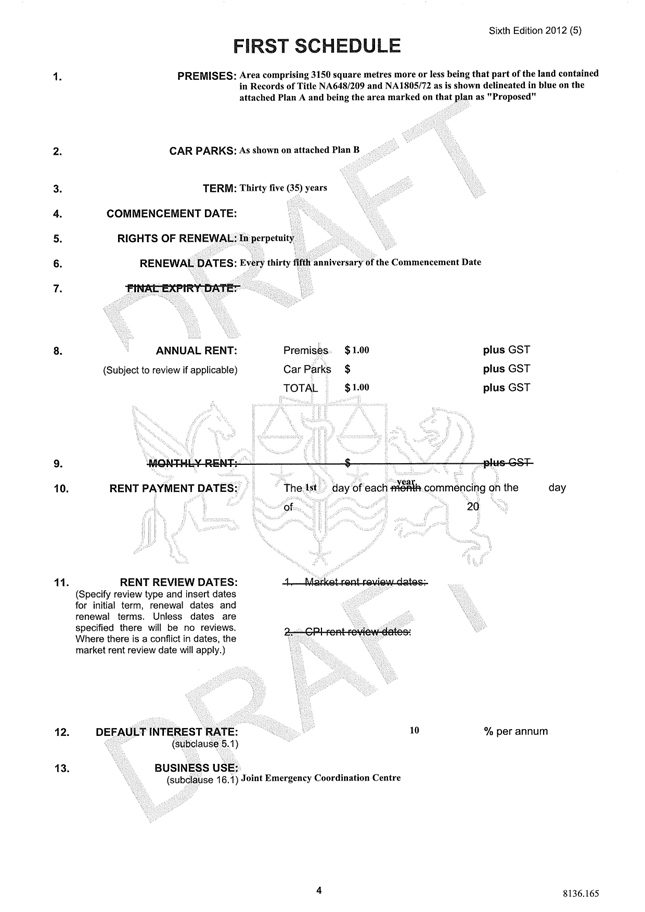
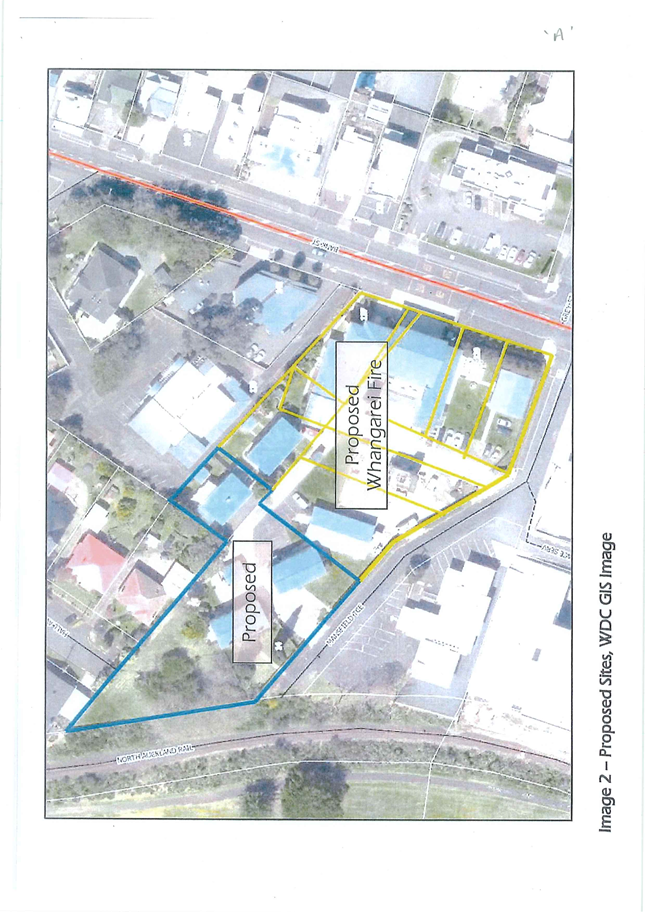
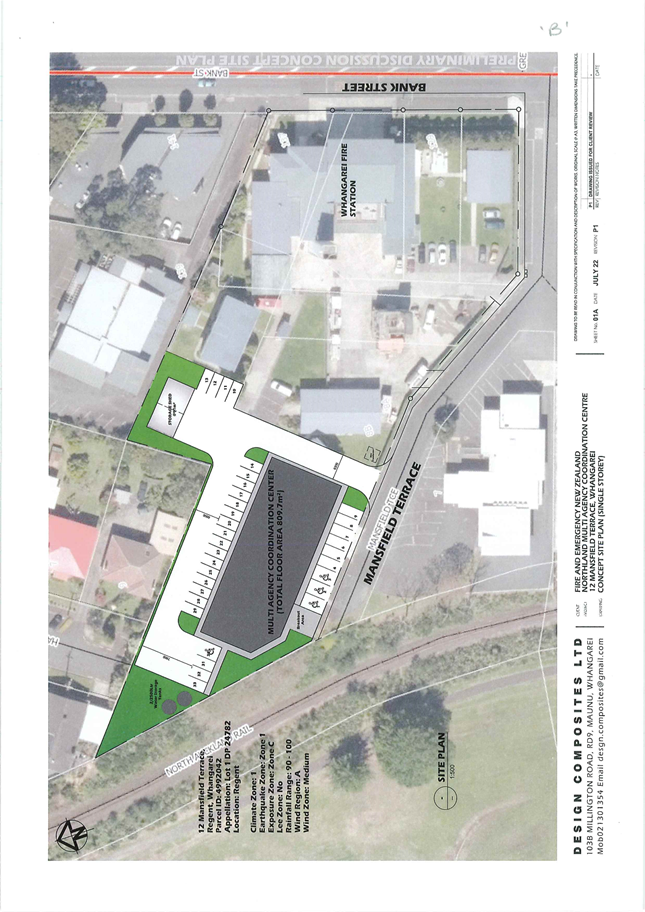
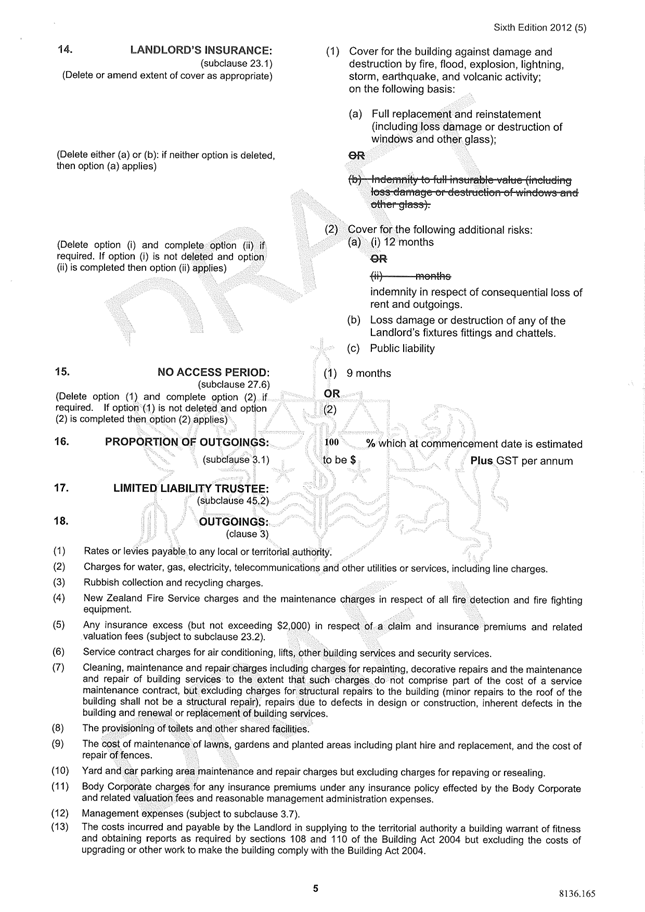

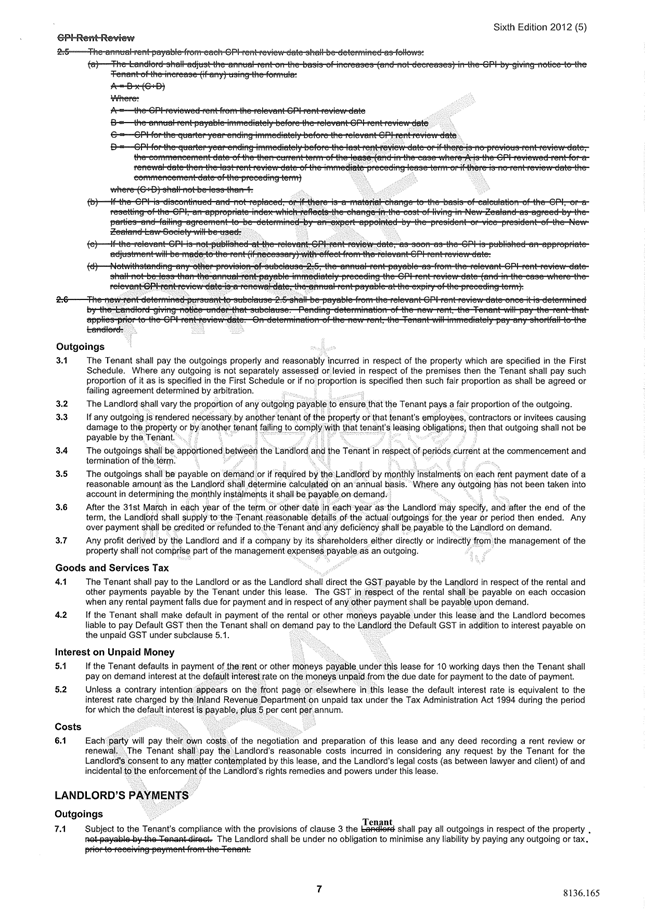
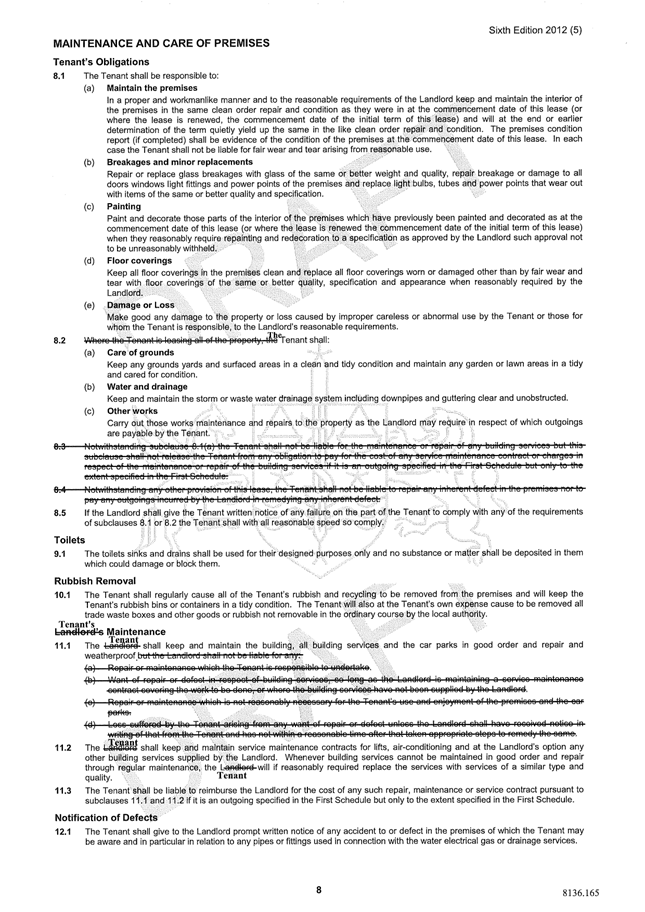
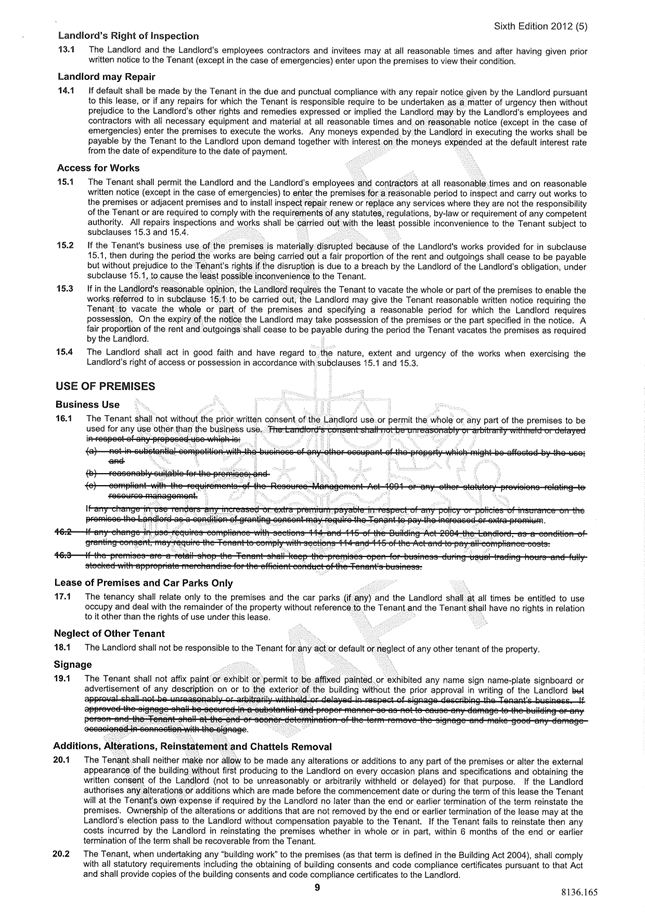
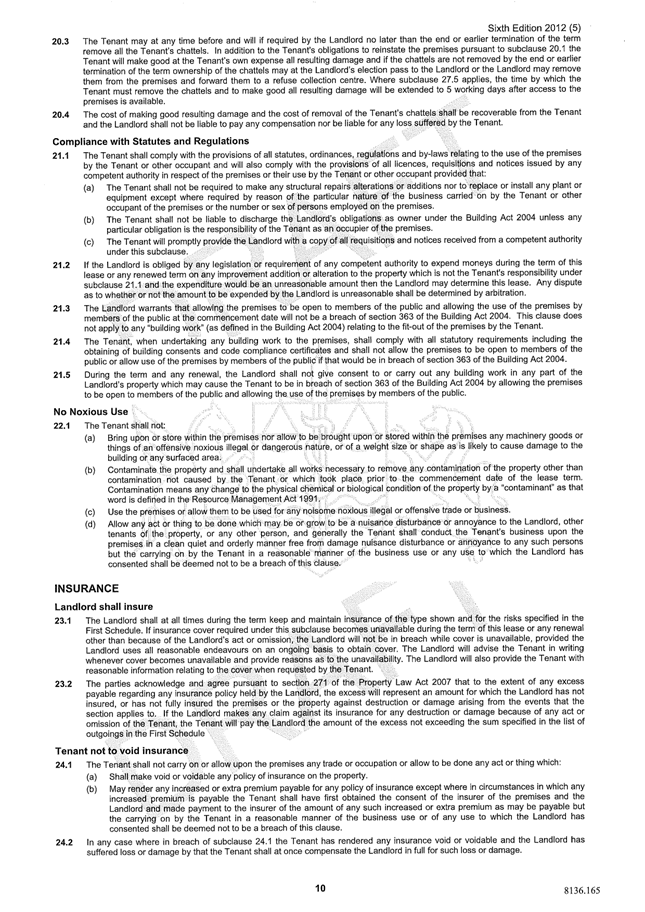
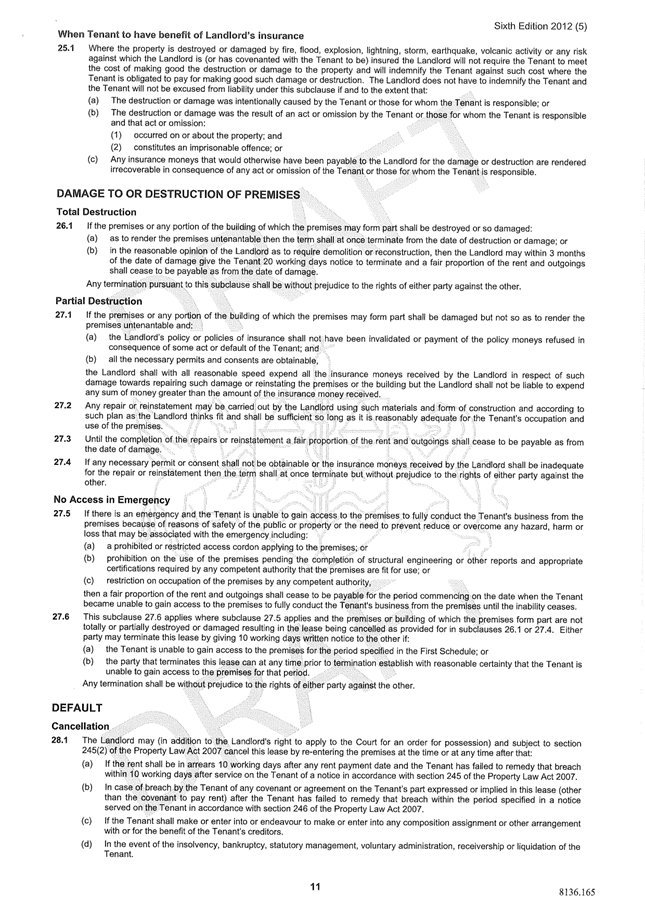
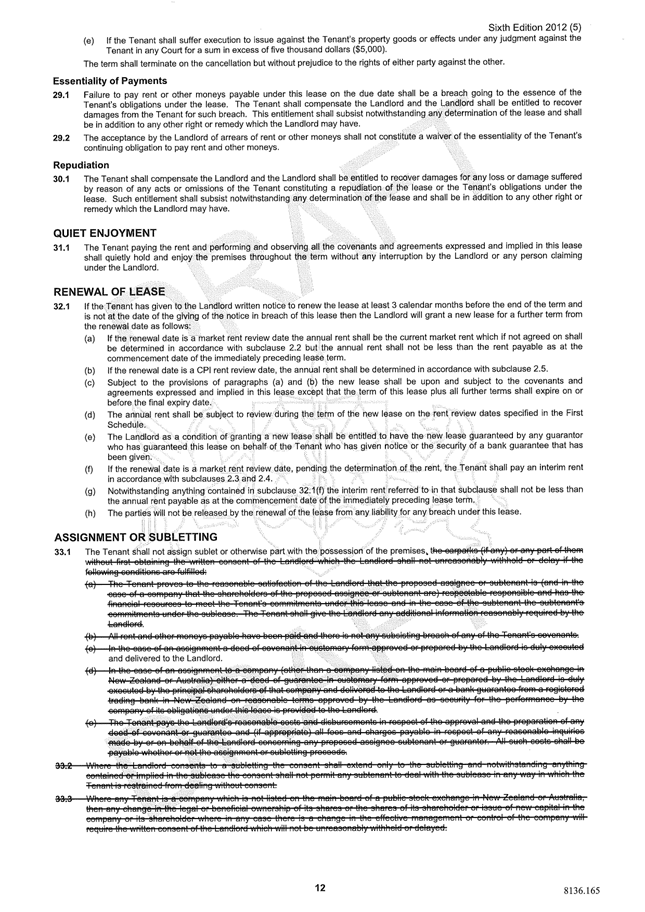
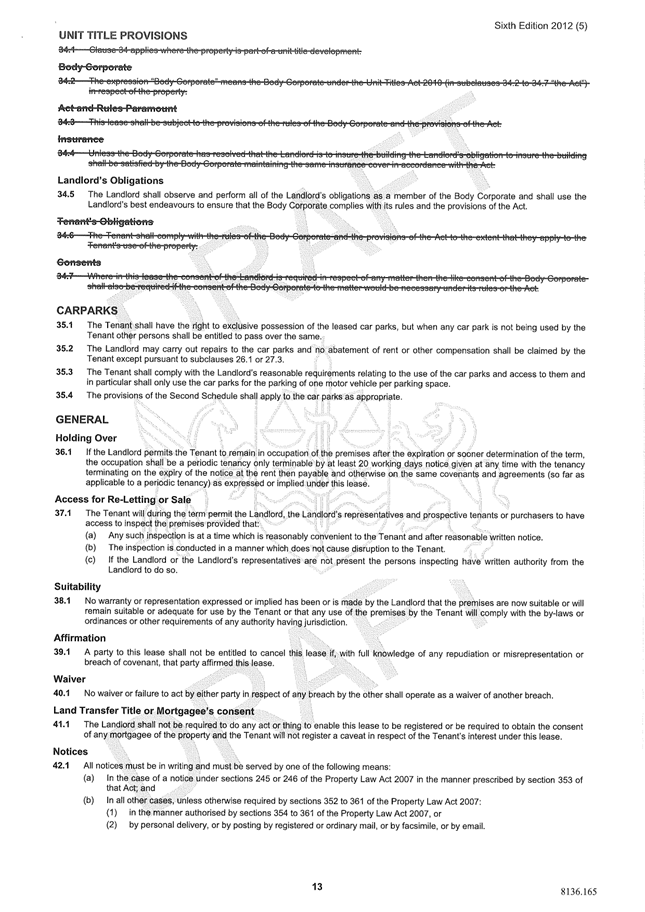
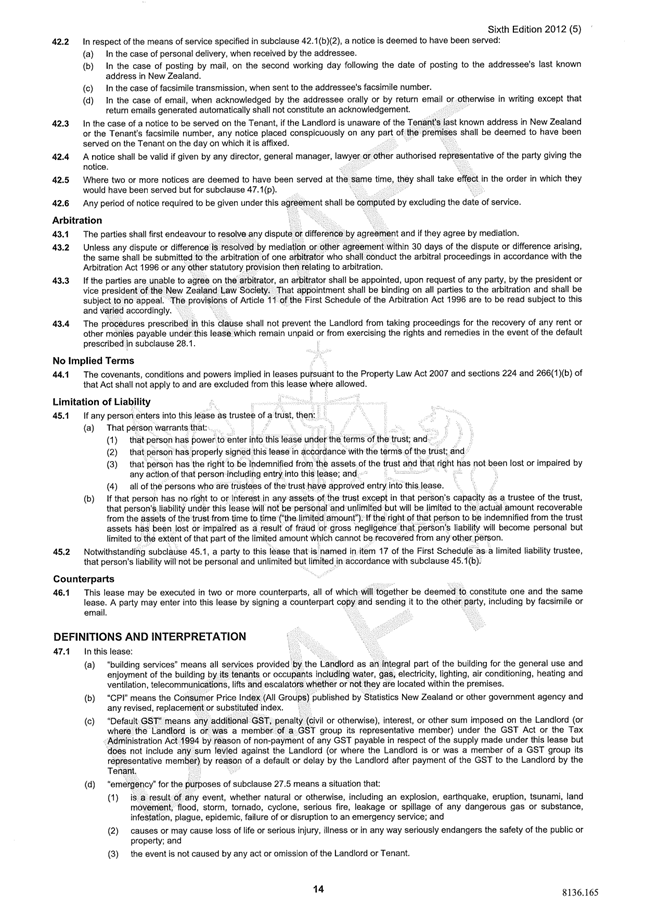
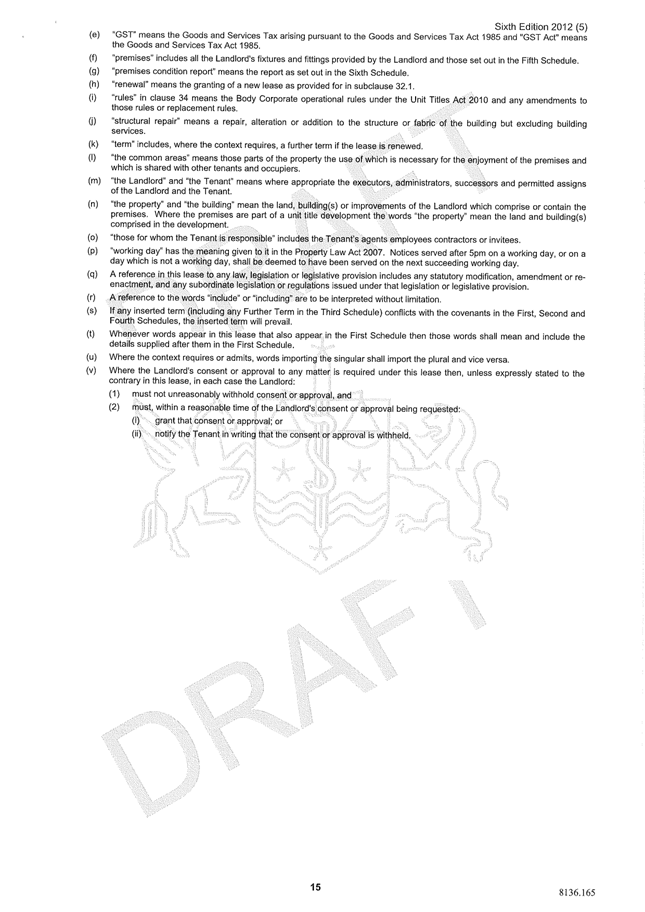
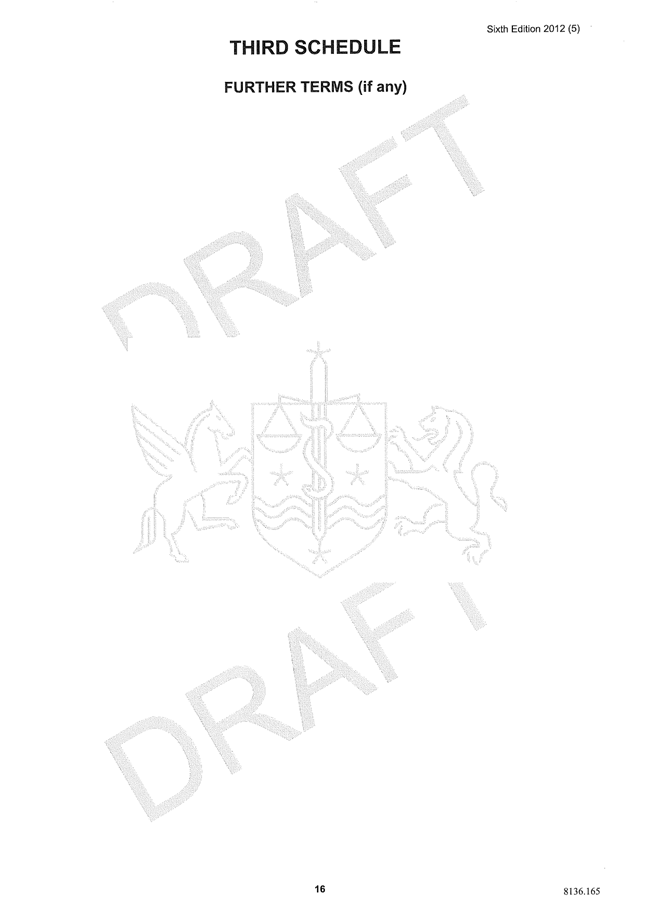
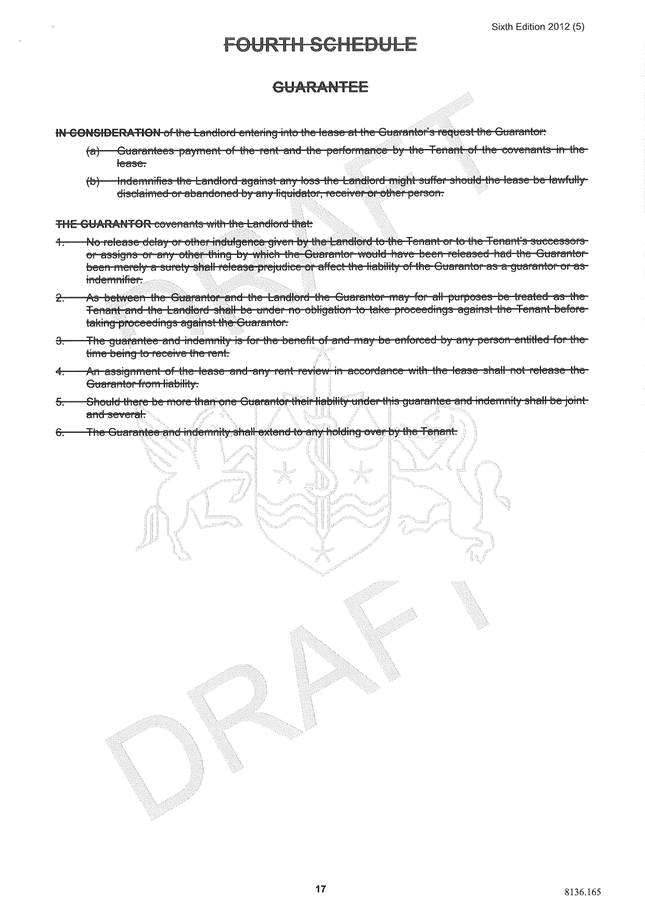
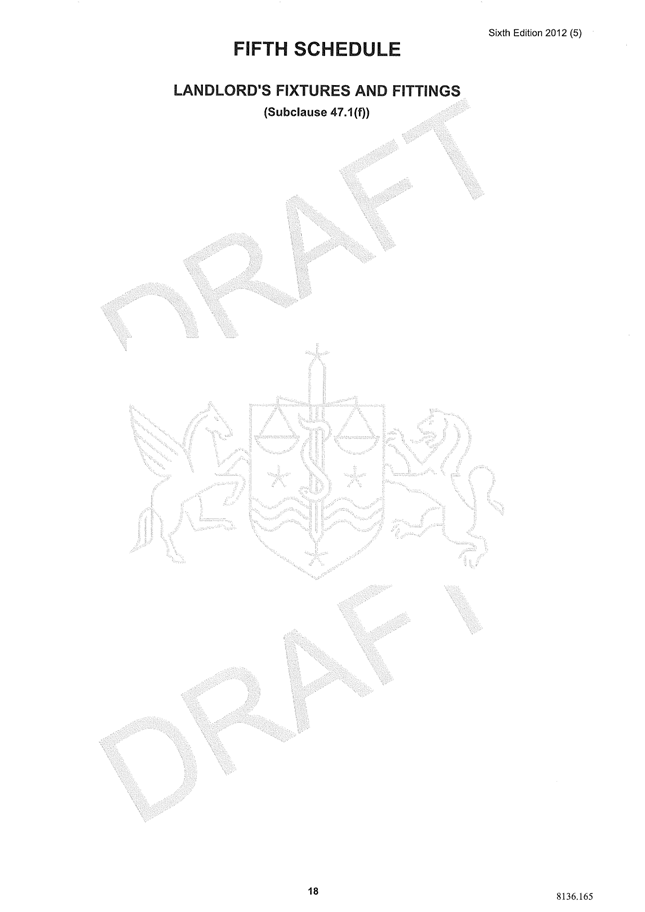
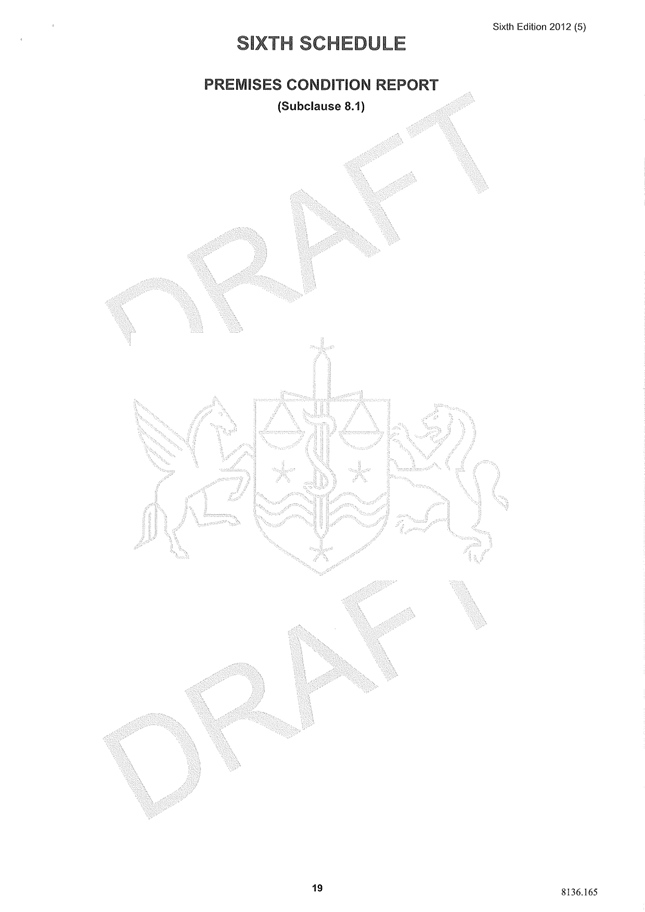
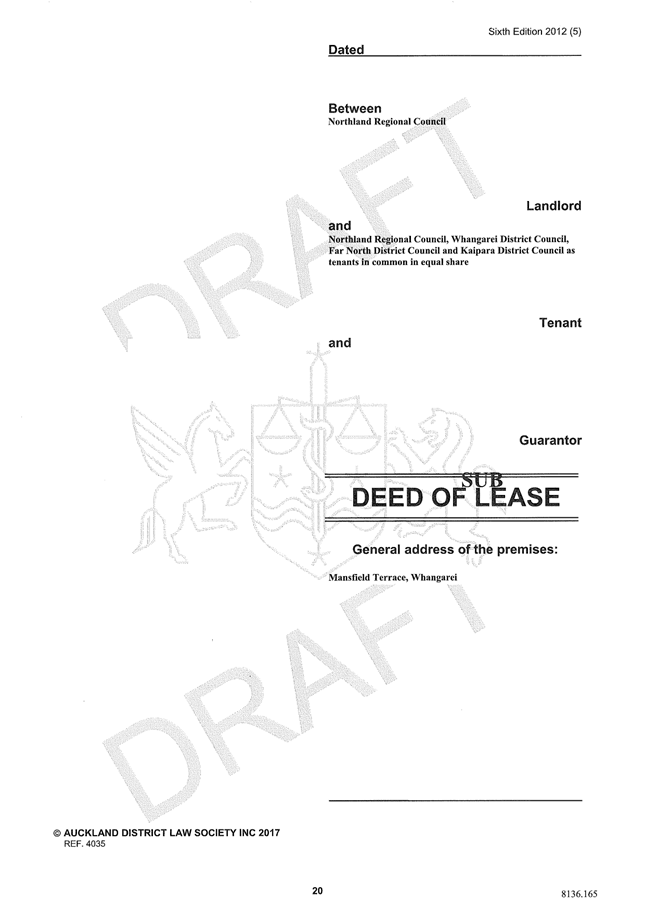
7.11 Regional
Deal Te Tai Tokerau Northland
File
Number: A5001582
Author: Roger
Ackers, Group Manager - Planning & Policy
Authoriser: Guy
Holroyd, Chief Executive Officer
Take Pūrongo / Purpose of the Report
To agree the process and response
to the Governments’ invitation to apply for a Regional Deal.
WhakarĀpopoto matua / Executive Summary
· On 21 November 2024, Hon Simeon Brown, Minister of Local Government
sent a letter to the mayors / chairs of all local authorities inviting them to
submit a regional deal proposal (Attachment 1).
· Regional deals are focused on delivering connected and resilient
infrastructure, building economic growth and improving the supply of affordable
housing. There will be based on a 30-year vision with 10-year strategic plans.
· In terms of boundaries, “regions” should be a
configuration of territorial authorities within a defined economic and
geographic area and must include the relevant regional council. It is left to
territorial authorities to determine how they collaborate with one another.
· In terms of timing, a registration form (Attachment 2) is due by 18
December 2024 and the “light-touch” proposal (Attachment 3) by 28
February 2025. A key part of the “light touch” proposal is for the
region to list five projects/initiatives that it wishes to be included in a
regional deal, detailing the outcomes expected, the contribution that councils
will be making to these, and what the region is seeking from central government
to achieve these outcomes.
· Cabinet will then agree on next steps for each region by mid-2025.
The intention is to finalise the first regional deal with one selected region
by December 2025 with two more deals finalised by October 2026 (ahead of the
next general election).
· Staff recommend agreeing to the steps outlined in this report as
they make use of existing resource and governance roles within the region and
provide an efficient mechanism for responding to the tight deadlines set by
government.
|
tŪtohunga
/ Recommendation
That Council:
a) Endorse the
preparation of a Regional Deal proposal for submission to central government.
b) Agree to
collaborate with the other three local authorities, Kaipara District Council
(KDC), Whangārei District Council (WDC), and Northland Regional Council
(NRC) as a single “region” for the purpose of the Regional Deal.
c) Approve
Northland Inc as the lead organisation responsible for coordinating the
development of the Regional Deal proposal, with support from all four
councils.
d) Approve the
Joint Regional Economic Development Committee as the governance entity
overseeing the development of the proposal.
e) Approve the
amendment to the Joint Regional Economic Development Committee Terms of
Reference as provided in Attachment 4 of this agenda item.
f) Agree
that the Chair of the Northland Mayoral Forum be the spokesperson of the
Regional Deal programme on behalf of the region.
g) Approve the
Registration form being submitted by Northland Inc. on behalf of Northland
Local Authorities (by 18 December 2024), following review by the Chief
Executive.
h) Note that the
Joint Regional Economic Development Committee may be required to meet outside
of the normal council meeting cycle during the traditional Christmas recess
period.
i) Note
that similar recommendations are being presented to KDC, WDC, and NRC at
their December 2024 meetings to ensure regional alignment and collaboration.
|
1) TĀhuhu kŌrero / Background
The government’s Regional Deals (RD) initiative is a
new framework aimed at supporting regional economic growth through customised
agreements between central and local government. The initiative aligns with the
shared economic development vision of Northland and emphasises collaboration on
projects that address local opportunities and challenges. Each regional deal
will cater to local priorities while sharing the following foundational
components:
• Each
regional deal will be based on a 30-year vision for the region.
• Each
deal will have a 10-year strategic plan with clear outcomes and actions
required to achieve them.
• Deals
will rely on existing resources to achieve shared goals over new funding.
• Deals
establish a framework through which new funding can be allocated as it becomes
available.
2) matapaki me NgĀ KŌwhiringa /
Discussion and Options
The Northland Mayoral Forum (NMF) discussed the
Minister’s letter at its meeting on Monday 25 November 2024 and agreed
that the following steps be taken:
• Proposal
Submission: A regional deal proposal be submitted.
• Regional
Collaboration: All four Northland councils (Far North District Council (FNDC),
Northland Regional Council (NRC), Whangārei District Council (WDC) and
Kaipara District Council (KDC)) will participate collectively as a single
“region”.
• Coordination
Role: Northland Inc, as the council-controlled organisation jointly owned by
all four councils, will coordinate the development of the proposal with support
from key staff within each council.
• Governance
Mechanism: The Joint Regional Economic Development Committee (Joint Committee),
made up of two members from each of the four councils, will act as the
governance entity for developing the proposal, engaging with central
government, and Regional Deals decision-making. A new role and
responsibility are required to be added to the Terms of Reference for the Joint
Committee to allow it to carry out this function (Attachment 4).
• Spokesperson:
The NMF Chair, Mayor Vince Cocurullo, will be the spokesperson for the Regional
Deals initiative.
To ensure that Council’s meet the central government
timeframes, this paper seeks agreement to the recommended steps for
Northland’s participation in this opportunity.
Similar papers are being provided to the other three
councils for their agreement. The respective council meeting dates are 10
December (NRC), 11 December (KDC) and 12 December (both FNDC and WDC).
Options
|
No.
|
Option
|
Advantages
|
Disadvantages
|
|
1
Recommended
Option
|
Agree to the
recommended collaborative approach (single “region” with
Northland Inc as coordinator and Joint Committee as governance body).
|
• Aligns with government’s preference for a unified regional
approach.
• Strengthens Northland’s proposal with a comprehensive and
cohesive vision.
• Leverages Northland Inc’s expertise and existing
inter-council governance structures.
• Builds stronger regional identity.
|
• Requires significant coordination across councils, potentially
leading to delays.
|
|
2
|
Don’t
agree to participate in the Regional Deals initiative and the steps outlined
above.
|
• Avoid administrative workload and resource allocation for proposal
development.
• Allows focus on other strategic priorities of council.
|
• Misses a significant opportunity to attract long-term government
investment.
• Risks Northland falling behind other regions that actively engage
in the initiative.
• Damages the council’s reputation as a collaborator in
regional development.
|
TAKE TŪTOHUNGA
/ REASON FOR THE RECOMMENDATION
Staff recommend Option 1 as it positions Northland to secure
investment while fostering collaboration across councils. The proposed
approach provides a mechanism for responding to the tight timeframes given in
the invitation from Hon Minister Brown by leveraging existing governance
structures, such as the Joint Committee and Northland Inc. This ensures
efficiency, aligns with government expectations, and enhances Northland’s
ability to present a unified and compelling regional vision.
E
WHAIAKE NEI / NEXT STEPS
A staff operational group has been formed from the four
councils to progress this work and schedule. This will need be communicated to
the Joint Committee. This will set expectations on the work needed and
commitments over the next two-to-three-month period.
3) PĀnga PŪtea me ngĀ
wĀhanga tahua / Financial Implications and Budgetary Provision
The cost for developing the “light-touch”
proposal and any subsequent negotiation with central government are expected to
be minimal and largely administrative. Any associated expenses will be
covered by the Investment and Growth Reserve (IGR) or existing council
resources, as approved by the Chief Executives. Any funding implications
arising from specific projects or developments that are incorporated into a
regional deal will need to be subject to separate and future council decisions.
Āpitihanga
/ Attachments
1. Letter
from Hon Simeon Brown to all Mayors and Chairs - A5002460 ⇩ 
2. Regional
Deals initial registration form - A5002459 ⇩ 
3. Regional
Deals - light touch proposal application - A5002458 ⇩ 
4. Joint
Regional Economic Development Committee ammended Terms of Reference - A5002461 ⇩ 
Hōtaka Take Ōkawa / Compliance Schedule:
Full consideration has been given to the provisions of the
Local Government Act 2002 S77 in relation to decision making, in particular:
1. A
Local authority must, in the course of the decision-making process,
a) Seek
to identify all reasonably practicable options for the achievement of the
objective of a decision; and
b) Assess
the options in terms of their advantages and disadvantages; and
c) If
any of the options identified under paragraph (a) involves a significant
decision in relation to land or a body of water, take into account the
relationship of Māori and their culture and traditions with their
ancestral land, water sites, waahi tapu, valued flora and fauna and other
taonga.
2. This
section is subject to Section 79 - Compliance with procedures in relation to
decisions.
|
He Take Ōkawa /
Compliance Requirement
|
Aromatawai Kaimahi /
Staff Assessment
|
|
State the level of significance (high or low) of the
issue or proposal as determined by the Council’s
Significance and Engagement Policy
|
Low level of significance as this proposal does not meet
any of the thresholds in Councils Significance and Engagement Policy. No
feedback is required, and the public will be informed of Council’s
decision via the agenda and minutes publication of this meeting, on the
website and through other channels if appropriate.
|
|
State the relevant Council policies (external or
internal), legislation, and/or community outcomes (as stated in the LTP) that
relate to this decision.
|
A new role and responsibility is required to be added to
the Terms of Reference for the Joint Regional Economic Development Committee
to allow it to undertake its governance task in relation to Regional Deals.
It is proposed that the following new role and responsibility by added to the
Terms of Reference provided in Attachment 4.
4) Make decisions relating to the
government’s Regional Deals initiative for establishing long-term
agreements between central and local government, including but not limited to
submitting a proposal, finalising a Memorandum of Understanding and
negotiating a deal, ensuring alignment with regional priorities and
collaboration among councils.
|
|
State whether this issue or proposal has a District wide
relevance and, if not, the ways in which the appropriate Community
Board’s views have been sought.
|
The recommendation in this report has District Wide
Relevance.
|
|
State the
possible implications for Māori and how Māori have been provided
with an opportunity to contribute to decision making if this decision is
significant and relates to land and/or any body of water.
State the
possible implications and how this report aligns with Te Tiriti o Waitangi /
The Treaty of Waitangi.
|
Māori have not been engaged in the decision-making
process because of the tight timeframes between receiving the invitation
letter from the Minister and the need for a council decision. However, the
“light-touch” proposal form requires local government to engage
with both Māori and the private sector to obtain their input into any
submission and this will be completed prior to submission approval.
|
|
Identify persons likely to be affected by or have an
interest in the matter, and how you have given consideration to their views
or preferences (for example – youth, the aged and those with
disabilities).
|
There are specific persons or groups outside of staff
from the Northland Councils and Northland In that will directly be affected
by the recommendation given in this agenda item.
|
|
State the financial implications and where budgetary
provisions have been made to support this decision.
|
The cost for developing the “light-touch”
proposal and any subsequent negotiation with central government are expected
to be minimal and largely administrative. Any associated expenses will
be covered by the Investment and Growth Reserve (IGR) or existing council
resources, as approved by the Chief Executives. Any funding implications
arising from specific projects or developments that are incorporated into a
regional deal will need to be subject to separate and future council decisions.
|
|
Chief Financial Officer review.
|
The Chief Financial Officer has not reviewed this
report.
|
|
Ordinary Council Meeting Agenda
|
12 December 2024
|
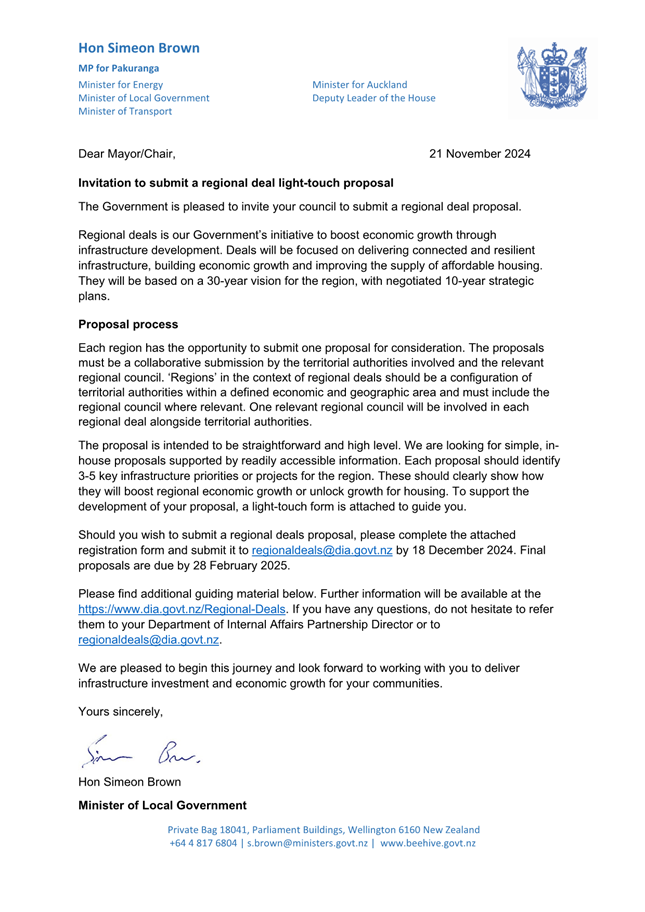
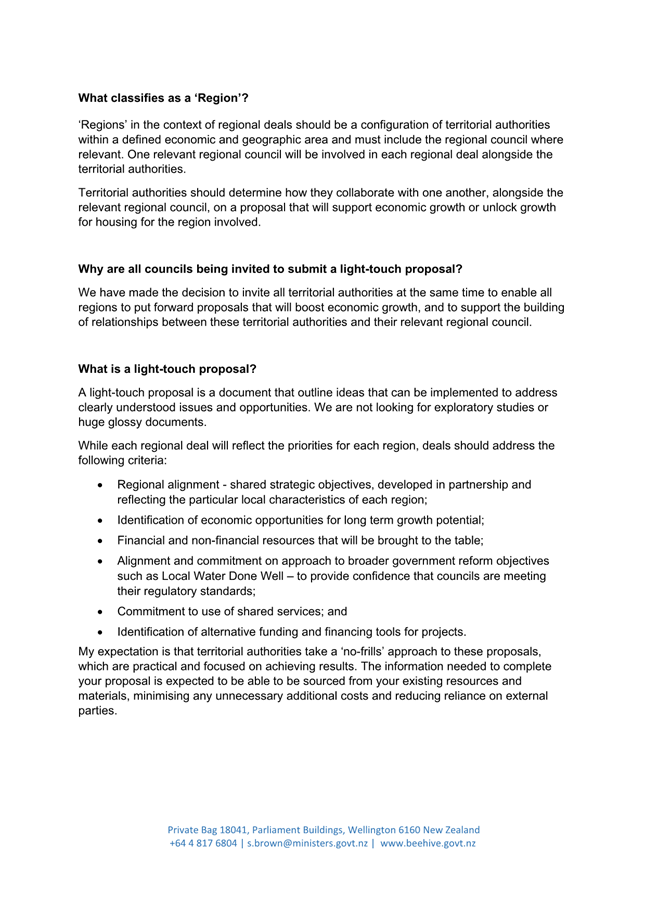
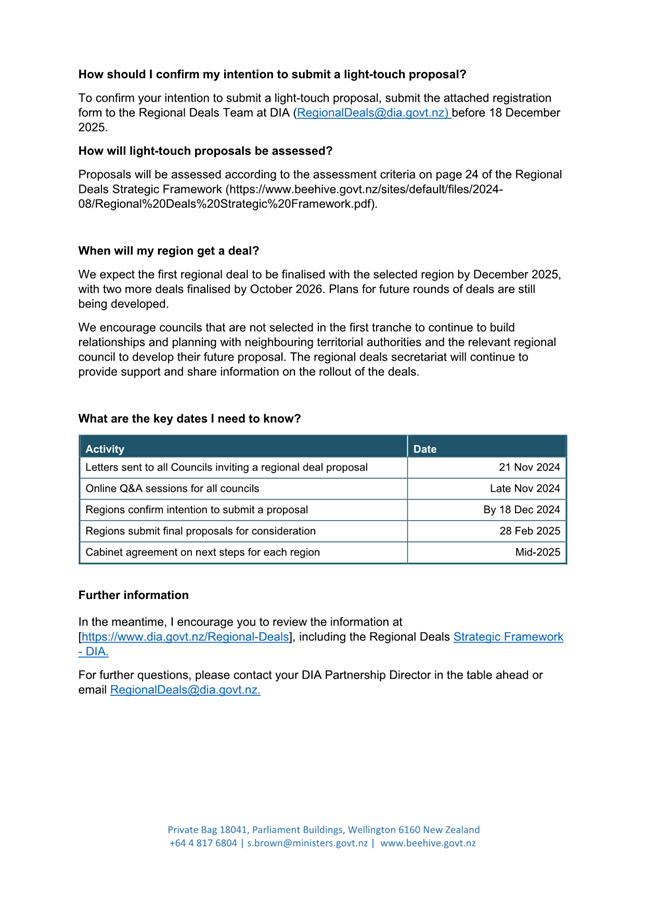
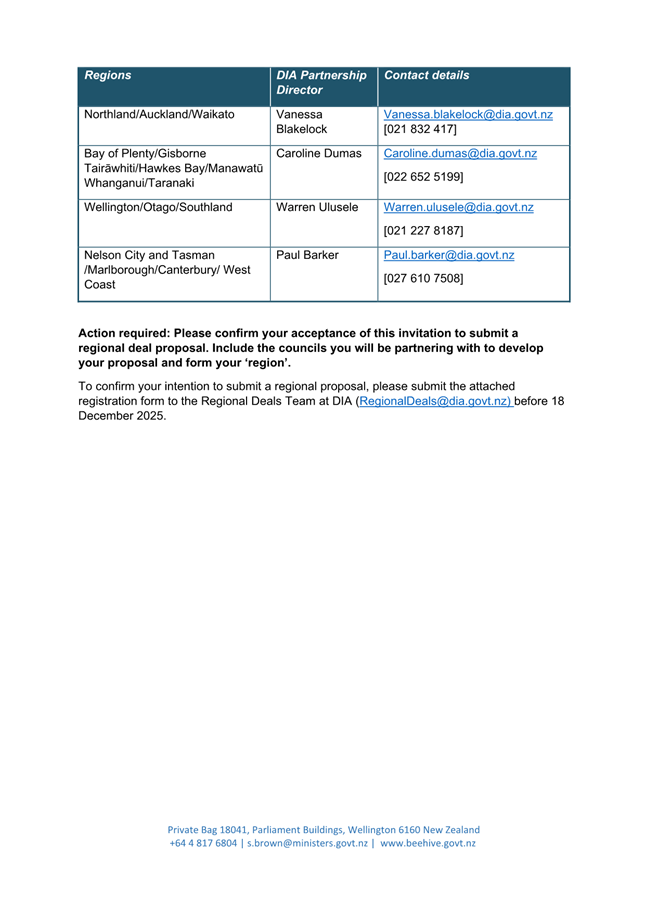
|
Ordinary Council Meeting Agenda
|
12 December 2024
|
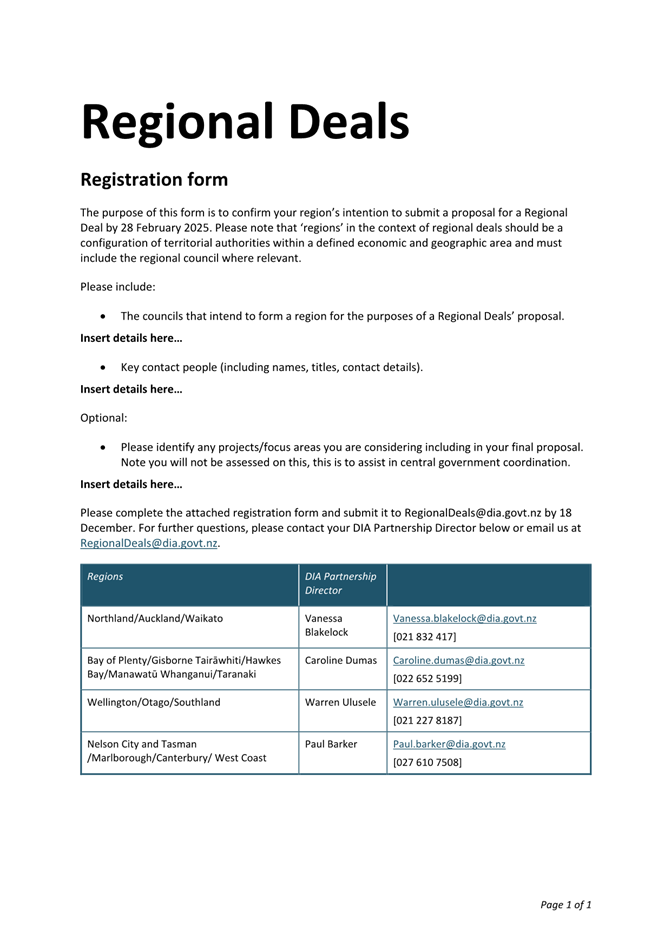
|
Ordinary Council Meeting Agenda
|
12 December 2024
|
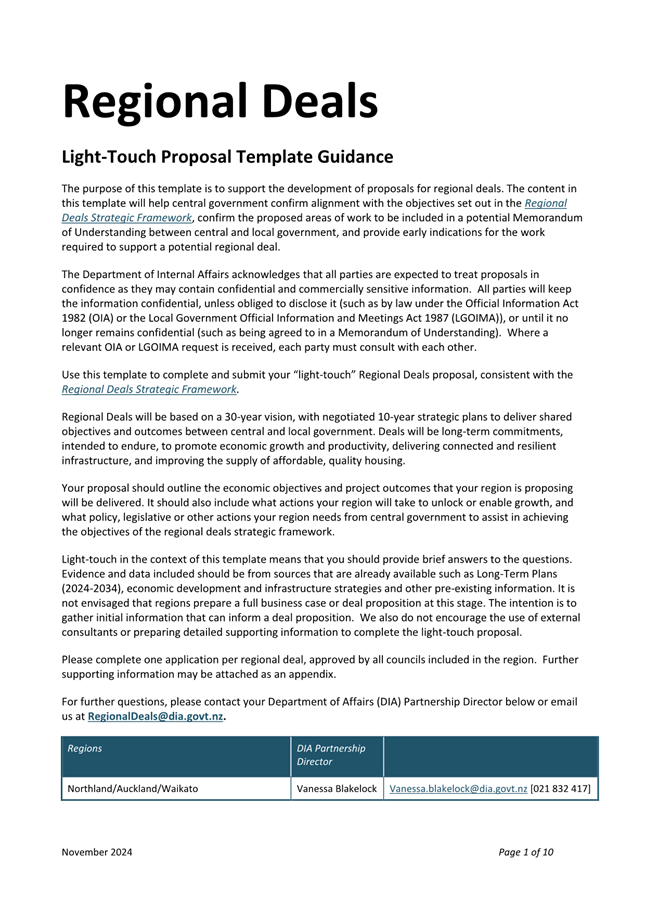
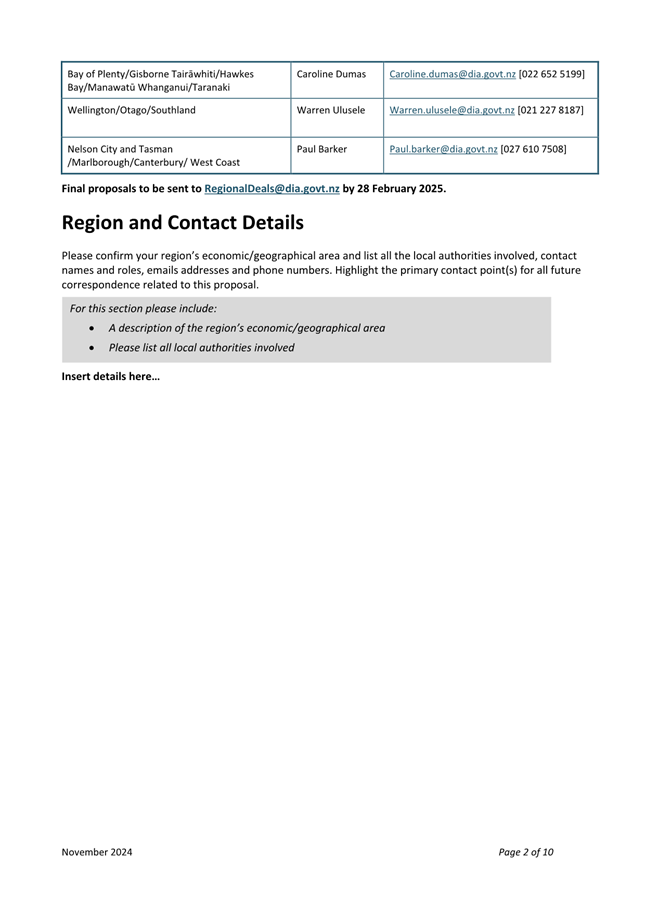
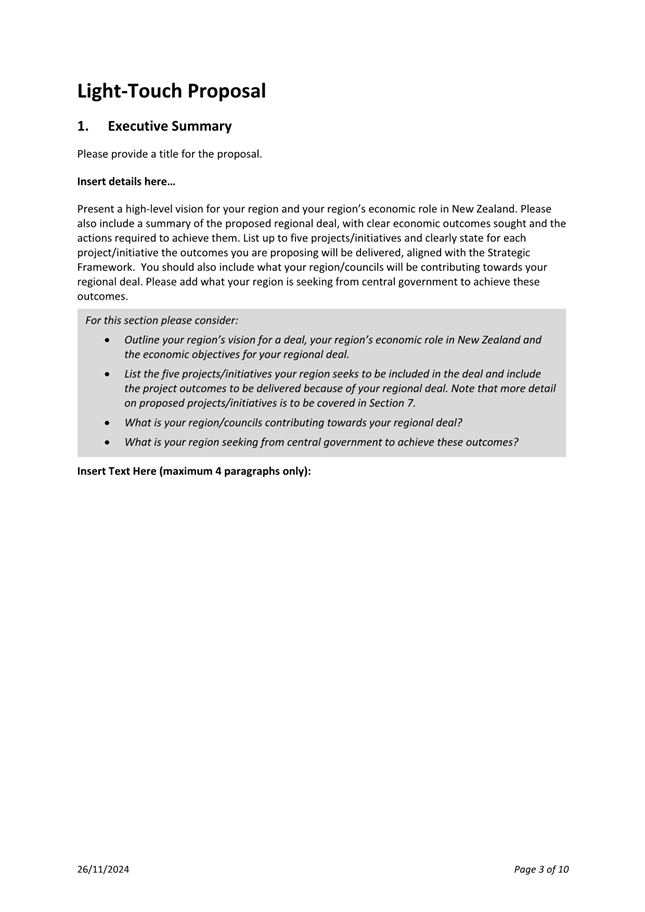
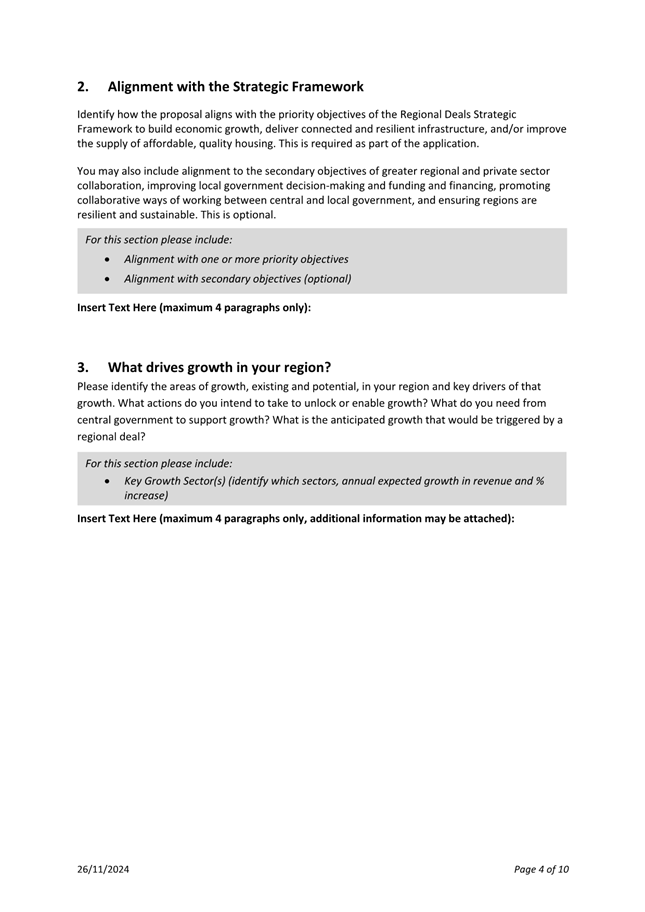
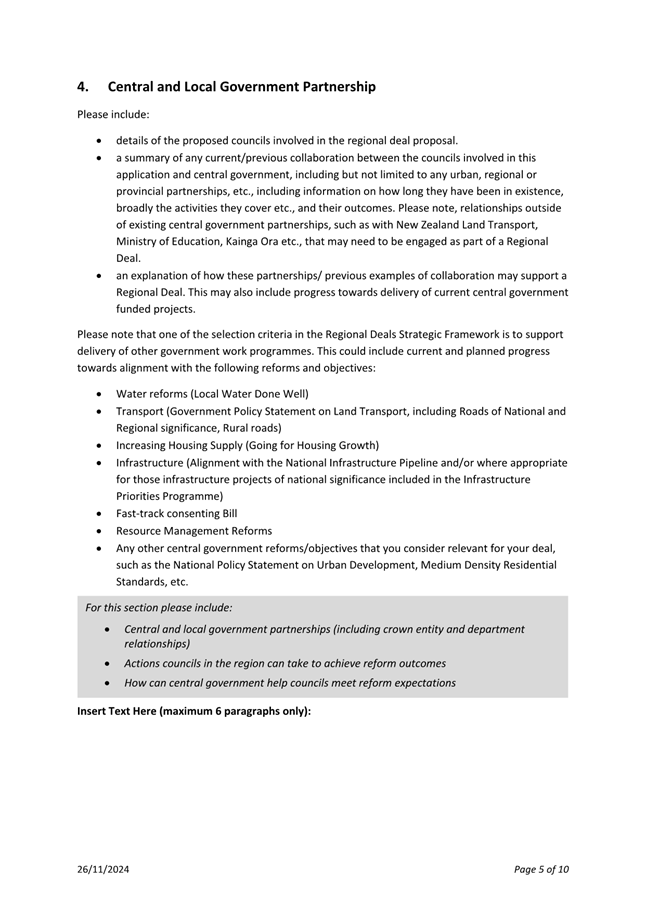
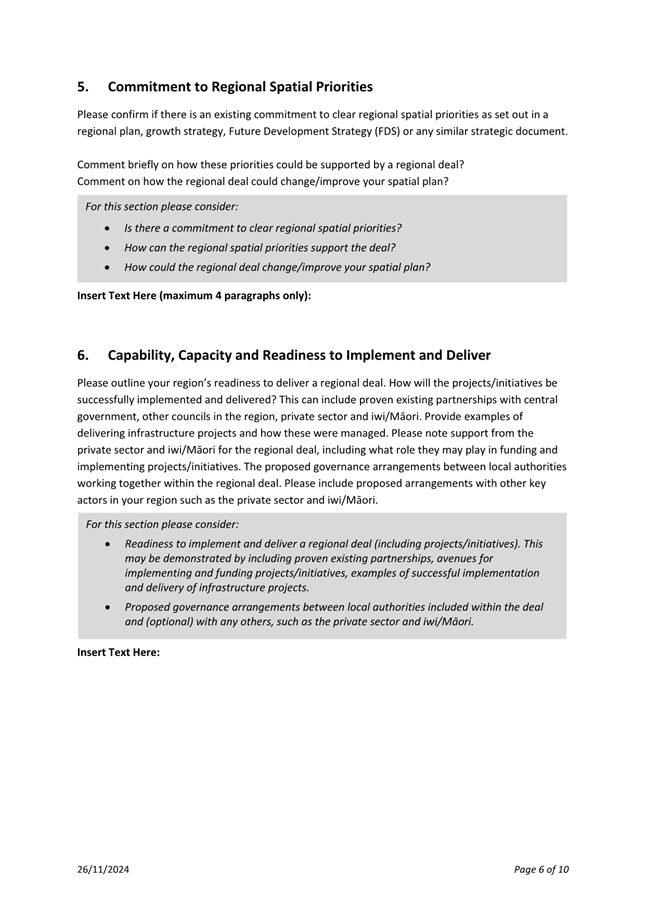
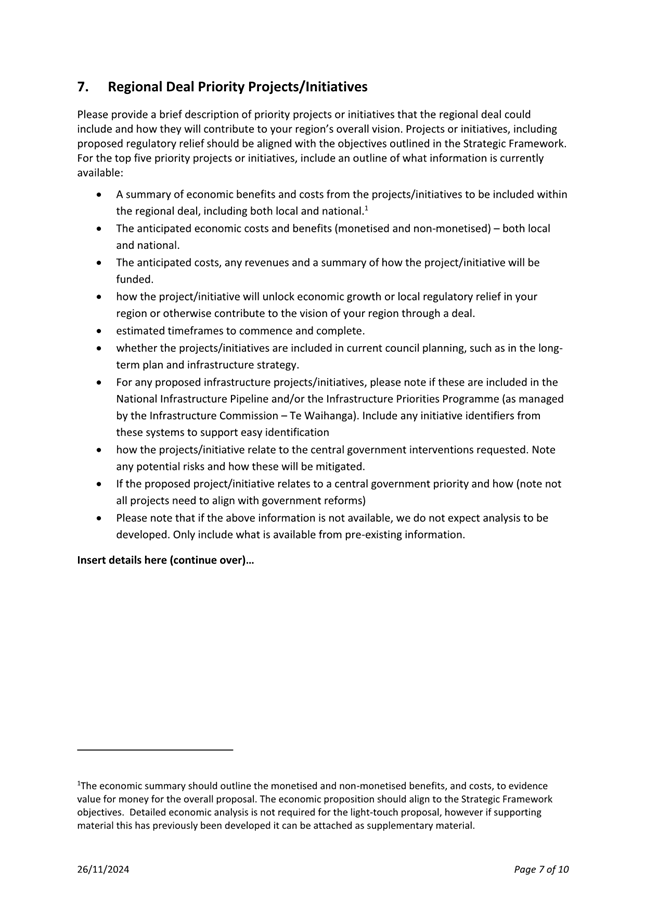

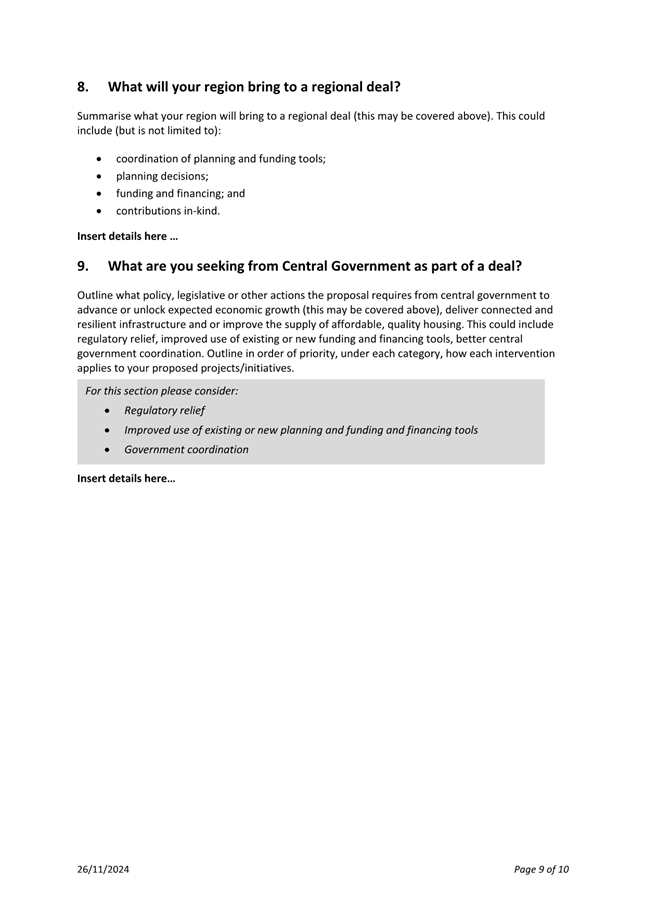
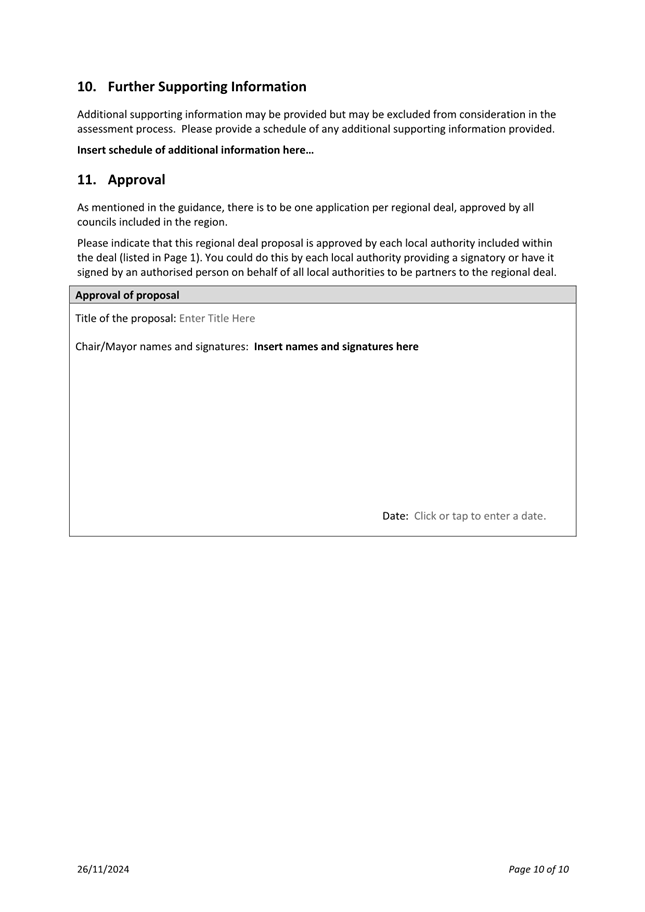
|
Ordinary Council Meeting Agenda
|
12 December 2024
|
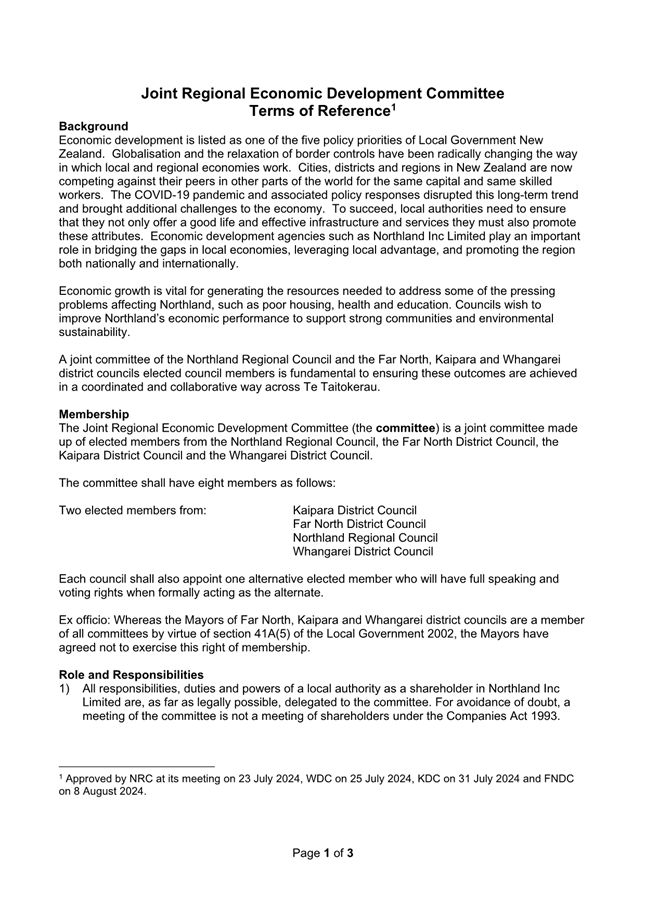
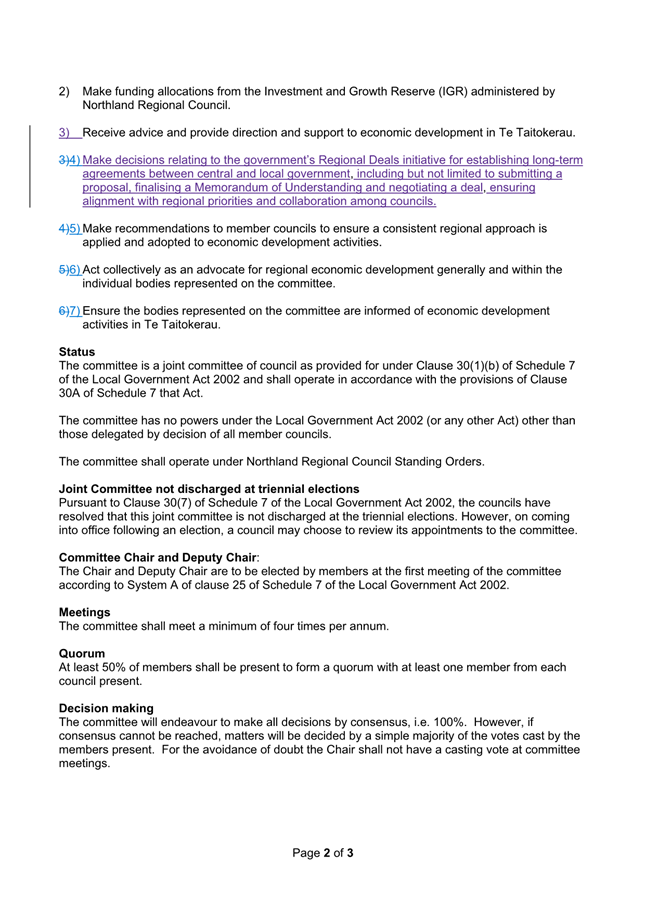
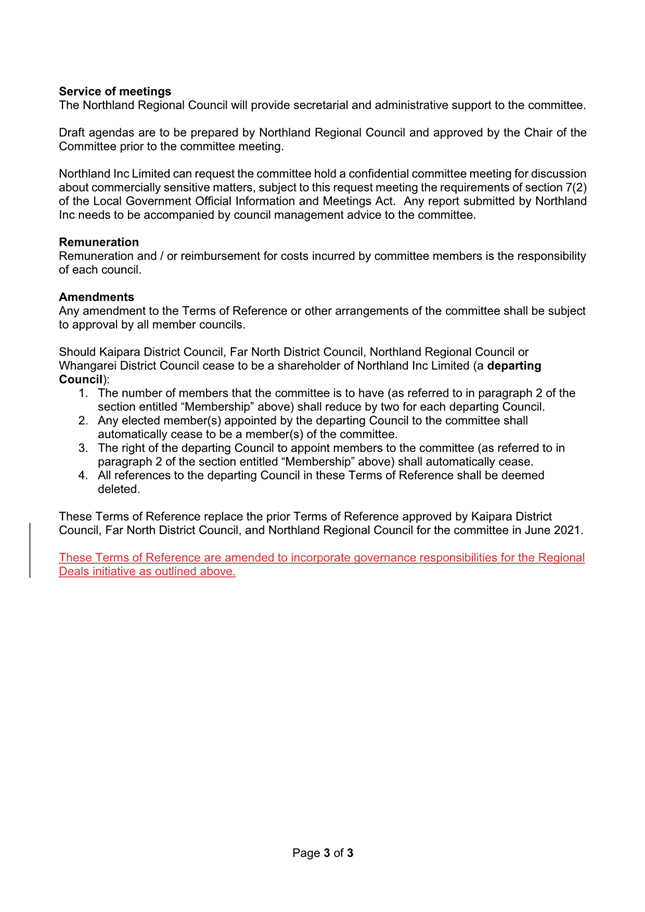
7.12 Submission
on the Treaty Principles Bill
File
Number: A5008393
Author: Briar
Macken, Manager - Strategy & Policy
Authoriser: Roger
Ackers, Group Manager - Planning & Policy
Take Pūrongo / Purpose of the Report
To seek endorsement of the submission on the Treaty
Principles Bill.
WhakarĀpopoto matua / Executive Summary
· On 07 November, the Government introduced the Treaty Principles
Amendment Bill (Bill).
· On 14 November, the Bill received its first reading and was
referred to the Justice Committee.
· On 18 November, the Justice Committee called for public submissions.
The closing date for submissions is 07 January 2025.
· The
purpose of the bill is to set out the principles of the Treaty of Waitangi in
legislation, and require, where relevant, those principles to be used when
interpreting legislation.
· Council staff intend to make a submission on the Bill as the
proposed amendments could significantly impact our relationship with tangata
whenua and increase the resourcing required to meet our obligations for council
activities such as engagement on resource consent matters.
|
tŪtohunga
/ Recommendation
That Council endorse the submission on the
Treaty Principles Amendment Bill.
|
1) TĀhuhu kŌrero / Background
On 07 November 2024, the Government introduced the Treaty
Principles Amendment Bill (Bill). The Bill seeks to define in law the
principles of Te Tiriti o Waitangi and the Treaty of Waitangi.
As part of the coalition agreement between the Act Party and
the National Party to form the current government, the National Party agreed to
support the Bill to the select committee stage. However, all elected parties
other than ACT have made statements regarding voting the bill down beyond the
first reading, therefore the bill is unlikely to pass its second reading.
On 14 November 2024, the Bill received its first reading and
was referred to the Justice Committee. The Bill is now open for public
submission which closes on 7 January 2025.
FNDC intend to submit on the operational implications this
bill may have for Council.
2) matapaki me NgĀ KŌwhiringa /
Discussion and Options
Council staff are concerned that if the
Bill were to proceed:
· we may not be able to meet our requirements under the Local
Government Act 2002
· we
may not be able to uphold our obligations under genuine
partnership
· we may not be able to fulfil our obligations under our 14 existing
Memorandums of Understanding with iwi and hapū
· increased resources will be required to manage the relationships
with settled vs unsettled iwi and to undertake operational
activities such as engagement on resource consent matters.
The Far North district includes
approximately 144 marae, 10 Iwi Runanga and over 250 hapū. The
majority of our District’s iwi and hapū have not reached settlements
under the Waitangi Tribunal. There
have only been 9 treaty settlements to date in the Far North. However, there is
potential for around 200 more as each hapū could settle in their own
right.
The Bill essentially includes three principles. All three
principles will impact tangata whenua and our relationship
with iwi and hapū. However, the principle which will impact Council
the most is Principle 2 which states:
|
(1)
|
The Crown recognises, and will
respect and protect, the rights that hapū and iwi Māori had under
the Treaty of Waitangi/te Tiriti o Waitangi at the time they signed it.
|
|
(2)
|
However, if those rights differ
from the rights of everyone, subclause (1) applies only if those
rights are agreed in the settlement of a historical treaty claim under the
Treaty of Waitangi Act 1975.
|
In local government we are governed by
legislation, mainly the Local Government Act 2002 (LGA). Clause 4 of the LGA
states
“In
order to recognise and respect the Crown’s responsibility to take
appropriate account of the principles of the Treaty of Waitangi and
to maintain and improve opportunities for Māori to contribute to local
government decision-making processes, Parts 2 and 6 provide
principles and requirements for local authorities that are intended to
facilitate participation by Māori in local authority decision-making
processes.”
Therefore, Council must align with the
principles of the Treaty of Waitangi for all operational matters. However, if
the principles are amended to only apply to the rights of iwi and hapū that have settled, then it will be
difficult for FNDC to adhere to our other requirements under the LGA,
specifically sections 75, 81, and 82 which are intended to facilitate
participation by Māori in local authority decision-making processes.
Council staff have concerns that the Bill does not take into
consideration those iwi and hapū who are yet to reach an
agreement. For example, there is an overlap of boundaries between iwi who have
settled and those iwi who have not, e.g., Te Roroa and Nga Puhi
boundaries. This overlap may lead to conflicts and increase the resources
required to manage those conflicts when undertaking operational activities such
as engagement on resource consent matters.
As a district, FNDC strives to work closely
with iwi and hapū and has embedded this collaboration into various layers
of Council. We are concerned that this bill will unfairly impact tangata whenua
and our relationship with them. We believe the management of settled vs
unsettled iwi will cause significant issues within our district and impact our relationship with iwi and hapū.
FNDC have Memorandum of Understandings with
11 iwi and 3 hapū in the district which covers how we as a council will
work with them. An obligation with the 11 iwi authorities through these
memoranda is to partner on matters of significance to iwi and hapū
including undertaking inclusive engagement in resource consent matters. A
concern now arises whether FNDC will be able to fulfil our obligations under
these memoranda.
The partnership with tangata whenua is embedded into the way
FNDC works today and is an involving relationship. This bill
will impact a number of the mechanisms which FNDC has in place to ensure iwi
and hapū input and partnership, for example:
· Iwi/Hapū (Environmental) Management Plans Policy which includes
as an objective to “integrate and consider the views and values of
iwi/hāpu regarding the use of natural and physical resources in
Council’s strategies, plans, and work programs”.
· Policies in the Proposed District Plan, specifically to work
proactively with iwi and hapū and implement agreements with them.
· A
Mana Whakahono ā Rohe with Te Runanga a Iwi o Ngapuhi under the Resource
Management Act. This has involved 2 years of work alongside the Iwi to
develop a Relationship Protocol that outlines how we as council will work
alongside the Iwi. This covers participation around resource management
decisions such as planning, compliance, and monitoring.
· Hapū
working groups – e.g. Kaikohe Wastewater Treatment Plant Hapū Roopu,
Ahipara Takiwā Working Group, Taipa Placemaking Working Group, Ngati Kawa
Ngati Rahiri Water Treatment Plant Working group.
Council staff foresee risks and issues from the Bill that
would impact our community and disproportionately affect the significant number
of iwi and hapū we have in our district.
TAKE TŪTOHUNGA
/ REASON FOR THE RECOMMENDATION
Council staff intend to make a submission
on the Treaty Principles Bill as:
· we may not be able to meet our requirements under the Local
Government Act 2002
· we
may not be able to uphold our obligations under genuine
partnership
· we may not be able to fulfil our obligations under our 14 existing
Memorandums of Understanding with iwi and hapū
· increased resources will be required to manage the relationships
with settled vs unsettled iwi and to undertake operational
activities such as engagement on resource consent matters.
3) PĀnga PŪtea me ngĀ
wĀhanga tahua / Financial Implications and Budgetary Provision
There are no financial implications from the decision in
this report.
Āpitihanga
/ Attachments
1. Treaty
Principles Bill Submission - A5011106 ⇩ 
Hōtaka Take Ōkawa / Compliance Schedule:
Full consideration has been given to the provisions of the
Local Government Act 2002 S77 in relation to decision making, in particular:
1. A
Local authority must, in the course of the decision-making process,
a) Seek
to identify all reasonably practicable options for the achievement of the
objective of a decision; and
b) Assess
the options in terms of their advantages and disadvantages; and
c) If
any of the options identified under paragraph (a) involves a significant
decision in relation to land or a body of water, take into account the
relationship of Māori and their culture and traditions with their
ancestral land, water sites, waahi tapu, valued flora and fauna and other
taonga.
2. This
section is subject to Section 79 - Compliance with procedures in relation to
decisions.
|
He Take Ōkawa /
Compliance Requirement
|
Aromatawai Kaimahi /
Staff Assessment
|
|
State the level of significance (high or low) of the
issue or proposal as determined by the Council’s
Significance and Engagement Policy
|
In line with the Significance and Engagement Policy, the
endorsement of the submission will have little effect on financial
thresholds, ratepayers, or levels of service. Therefore, the level of
significance is low.
|
|
State the relevant Council policies (external or
internal), legislation, and/or community outcomes (as stated in the LTP) that
relate to this decision.
|
The Local Government Act 2002 applies to the submission
in this report.
|
|
State whether this issue or proposal has a District wide
relevance and, if not, the ways in which the appropriate Community
Board’s views have been sought.
|
The decision in this report has district wide relevance
and therefore the views of community boards have not been sought.
|
|
State the
possible implications for Māori and how Māori have been provided
with an opportunity to contribute to decision making if this decision is
significant and relates to land and/or any body of water.
State the
possible implications and how this report aligns with Te Tiriti o Waitangi /
The Treaty of Waitangi.
|
The Treaty Principles Bill has significant implications
for Māori.
|
|
Identify persons likely to be affected by or have an
interest in the matter, and how you have given consideration to their views
or preferences (for example – youth, the aged and those with
disabilities).
|
The submission is discussing how the proposed Treaty
Principles Bill would affect council operations, therefore Council staff have
been given an opportunity input through our internal processes.
|
|
State the financial implications and where budgetary
provisions have been made to support this decision.
|
There are no financial implications.
|
|
Chief Financial Officer review.
|
The Chief Financial Officer has not reviewed this
report.
|
|
Ordinary Council Meeting Agenda
|
12 December 2024
|
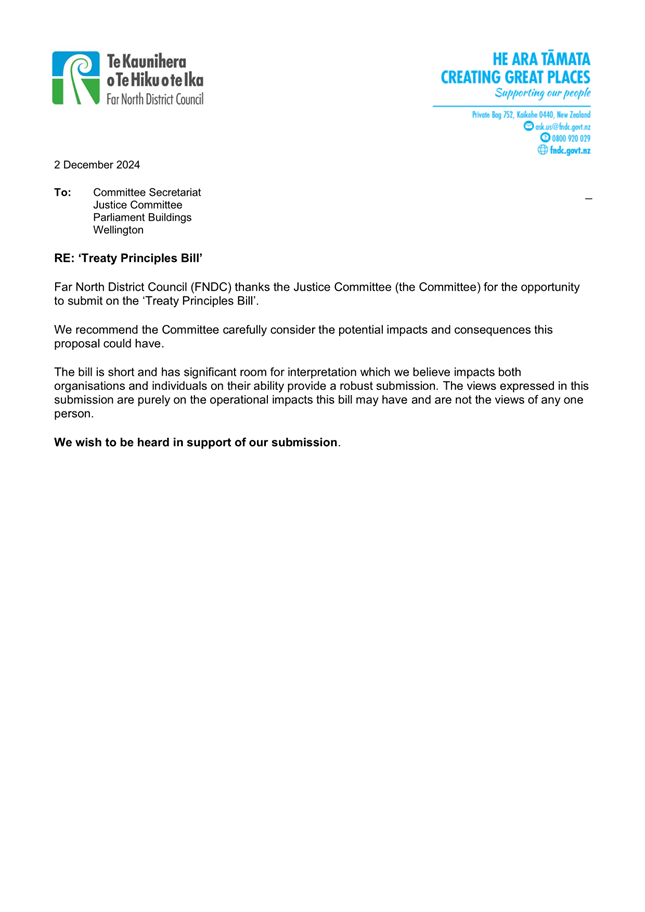
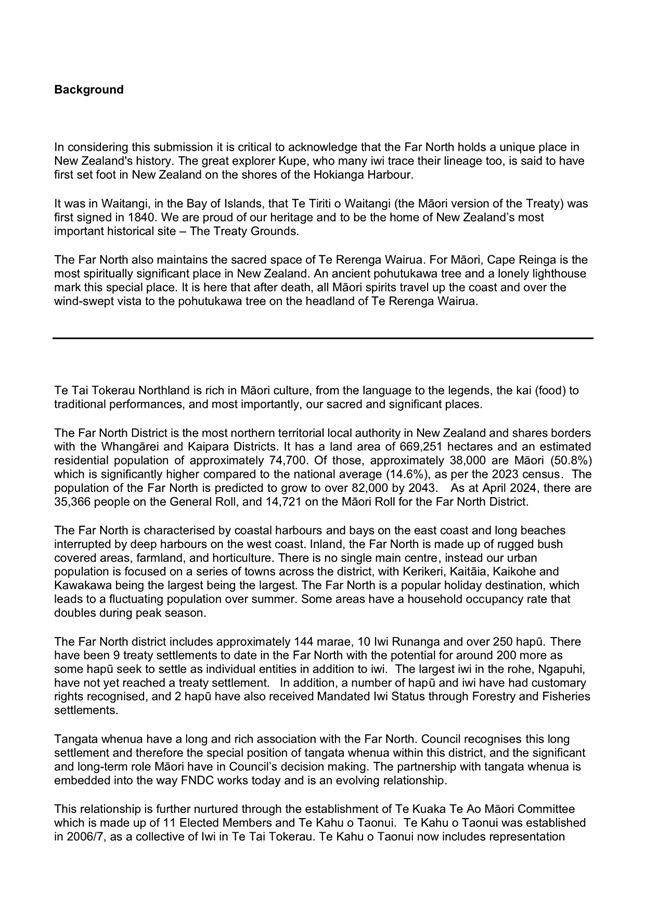

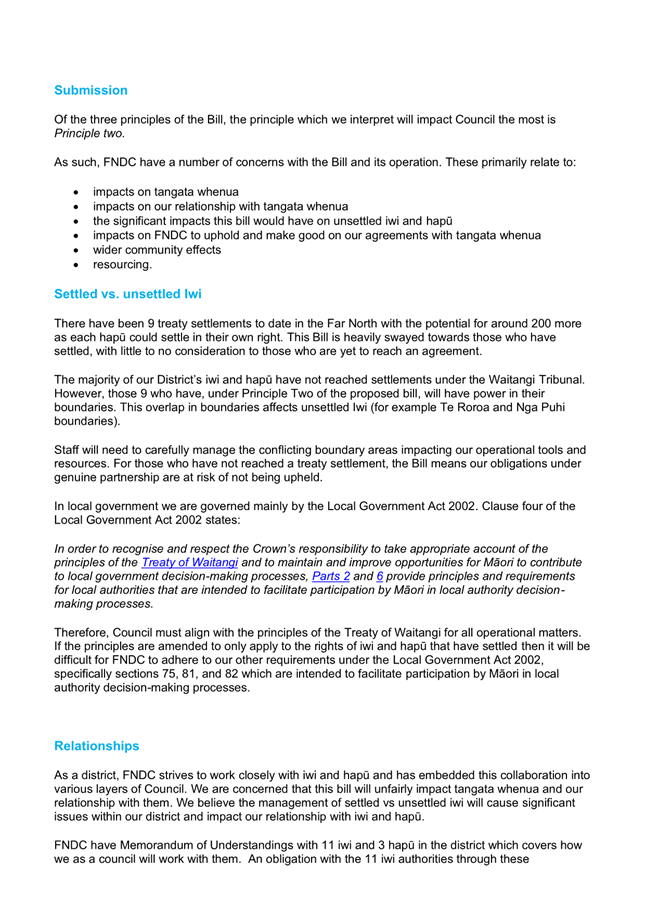
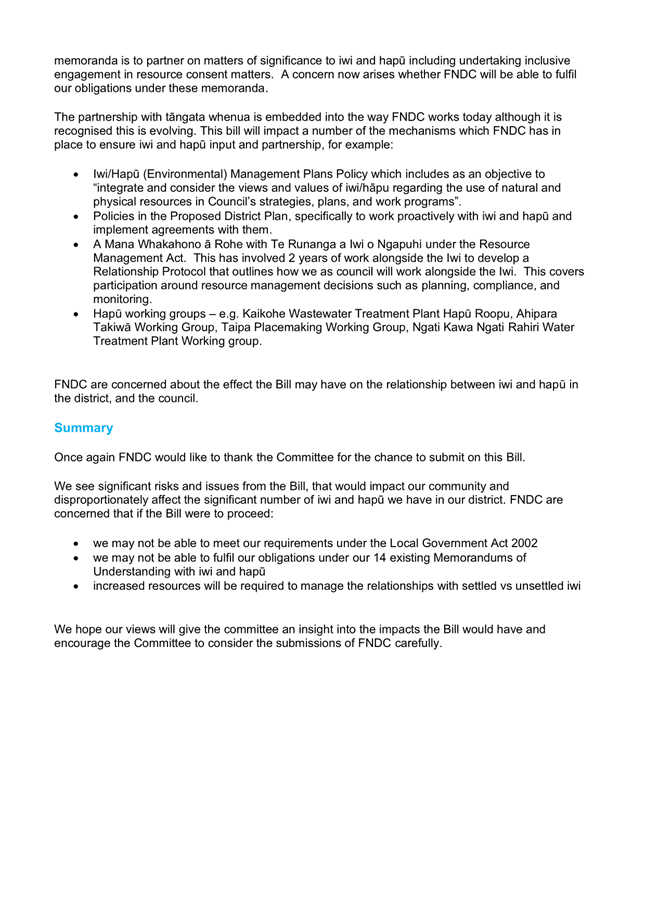
7.13 Adoption
of Far North Holdings Statement of Intent for the year ended 30 June 2025
File Number: A5013083
Author: Angie
Thomas, Acting Chief Financial Officer
Authoriser: Charlie
Billington, Group Manager - Corporate Services
Take Pūrongo / Purpose of the Report
The purpose of this report is to adopt the Far North
Holdings Limited – Statement of Intent for the year ended 30 June 2025.
WhakarĀpopoto matua / Executive Summary
· Far North Holdings Limited (FNHL) delivered a draft Statement of
Intent (SOI) to Council by 1 March 2024, and following review of comments and
feedback from Council, a final SOI for adoption on 20 June 2024.
· Council as shareholder is required to adopt FNHL’s SOI and
publish a copy of the SOI on its external website within one month of Council
adopting the SOI for a period of 7 years.
|
tŪtohunga
/ Recommendation
That Council:
1) adopt
the Far North Holdings Limited Statement of Intent for the year ended 30 June
2025
2) publish
the Far North Holdings Limited Statement of Intent for the year ended 30 June
2025 on its website within 1 month of adoption
|
1) TĀhuhu kŌrero / Background
Part 5 and Schedule 8 of the Local
Government Act 2002 (LGA02) provides a process for preparation, review,
adoption and publication of a SOI by FNHL and Council as shareholder.
Clause 3, Schedule 8 of the LGA02requires FNHL, as a council
controlled trading organisation, to deliver a final SOI to Council as
Shareholder before the commencement of the financial year to which it relates.
FNHL delivered a draft Statement of Intent to Council as Shareholder by 1 March
2024, which was presented at the Governance to Governance workshop on the 7th
March 2024.
Further
reviews were undertaken by Council and FNHL on 19 April 2024, with Management,
Te Miromiro Chair, and was also shared with Murray Bain as part of the FNHL
Governance Review.
Council
provided comments and feedback to FNHL by 1 May 2024, which was further
discussed with FNHL Management and Chair on 30 May 2024 at the Ngawha
Innovation Park.
Taking all
feedback and discussion into account, as required, FNHL provided the final SOI,
which was delivered in draft to Council pending the FNHL Board meeting approval
on 10 June. The SOI was approved by the FNHL Board, finalised, and provided in
final form to Council as shareholder on 20 June 2024.
The FNHL
SOI includes the $5m special dividend which has been incorporated into
FNDC’s 2024/25 Annual Plan.
Reference to the final SOI was
included in the LTP 2024-27, however, formal adoption of the SOI in accordance
with Part 5/ Schedule 8 requirements did not occur in conjunction with the
adoption of the LTP.
There is no statutory deadline for
Council to adopt an SOI but under usual practice Council would either
agree to the SOI or take steps to modify it once the final version has been
sent to Council FNHL. Once the SOI has been adopted by Council it must
publish on Council’s website within 1 month of adoption and maintained on
that site for a period of no less than 7 years.
This report looks to finalise the
adoption and publication process formally.
2) matapaki me NgĀ KŌwhiringa /
Discussion and Options
Option 1
(Recommended)
Agree to
the final FNHL SOI without further modification and publish it within one month
of adoption.
Advantages
-Complies with the statutory
requirements under Part5/ Schedule 8 of the LGA02.
Disadvantages
-None
Option 2
Seek
further modification of the SOI
Advantages
-Allows Council to address
any concerns or improvements that may be identified after review already
conducted.
Disadvantages
-Council has already
undertaken an extensive review of the SOI, and additional delay might not be
required.
Option 3
Do not agree
to the final FNHL SOI.
Advantages
-Forces a comprehensive
re-evaluation of FNHL's strategic direction and performance objectives.
Disadvantages
-Council will not have
followed the statutory process for adoption and publication under the LGA02.
-Creates uncertainty for
FNHL, hindering their ability to operate effectively and plan for the financial
year.
TAKE TŪTOHUNGA
/ REASON FOR THE RECOMMENDATION
Option 1 is
recommended because it ensures compliance with legal requirements, acknowledges
the thorough review process already completed, and supports FNHL's ability to
proceed with its operations without unnecessary delays. Adopting the SOI as
finalised demonstrates effective governance and maintains a strong,
collaborative relationship with FNHL.
3) PĀnga PŪtea me ngĀ
wĀhanga tahua / Financial Implications and Budgetary Provision
There are no specific financial implications arising from
this report.
Āpitihanga
/ Attachments
1. Far
North Holdings SOI FY25 - A5012399 ⇩ 
Hōtaka Take Ōkawa / Compliance Schedule:
Full consideration has been given to the provisions of the
Local Government Act 2002 S77 in relation to decision making, in particular:
1. A
Local authority must, in the course of the decision-making process,
a) Seek
to identify all reasonably practicable options for the achievement of the
objective of a decision; and
b) Assess
the options in terms of their advantages and disadvantages; and
c) If
any of the options identified under paragraph (a) involves a significant
decision in relation to land or a body of water, take into account the
relationship of Māori and their culture and traditions with their
ancestral land, water sites, waahi tapu, valued flora and fauna and other
taonga.
2. This
section is subject to Section 79 - Compliance with procedures in relation to
decisions.
|
He Take Ōkawa /
Compliance Requirement
|
Aromatawai Kaimahi /
Staff Assessment
|
|
State the level of significance (high or low) of the
issue or proposal as determined by the Council’s
Significance and Engagement Policy
|
The decision involve adherence to a routine statutory
requirement. Council is required under section 64 LGA02 to either agree
to FNHL’s SOI or require modifications once it has been delivered to
Council by FNHL.
|
|
State the relevant Council policies (external or
internal), legislation, and/or community outcomes (as stated in the LTP) that
relate to this decision.
|
Part 5 and Schedule 8 of the Local Government Act 2002
|
|
State whether this issue or proposal has a District wide
relevance and, if not, the ways in which the appropriate Community
Board’s views have been sought.
|
FNHL operates across the District, therefore the
decision has district-wide relevance.
|
|
State the
possible implications for Māori and how Māori have been provided
with an opportunity to contribute to decision making if this decision is
significant and relates to land and/or any body of water.
State the
possible implications and how this report aligns with Te Tiriti o Waitangi /
The Treaty of Waitangi.
|
Type here
|
|
Identify persons likely to be affected by or have an
interest in the matter, and how you have given consideration to their views
or preferences (for example – youth, the aged and those with
disabilities).
|
Type here
|
|
State the financial implications and where budgetary
provisions have been made to support this decision.
|
Type here
|
|
Chief Financial Officer review.
|
|
|
Ordinary Council Meeting Agenda
|
12 December 2024
|
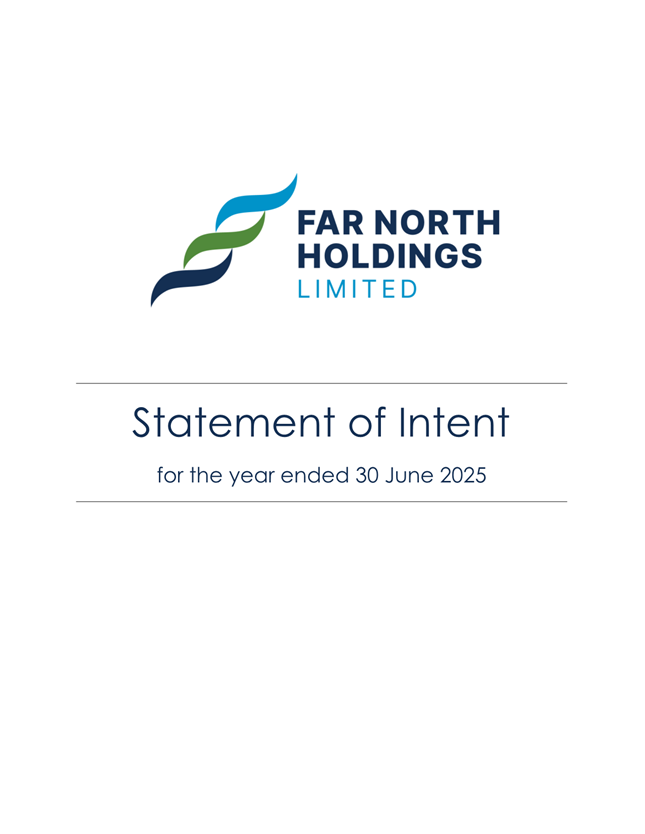
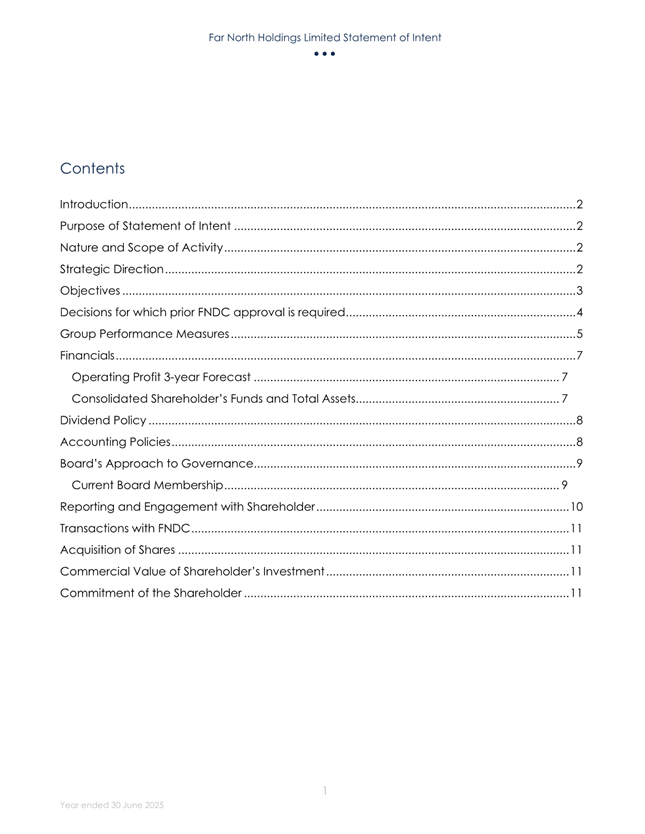
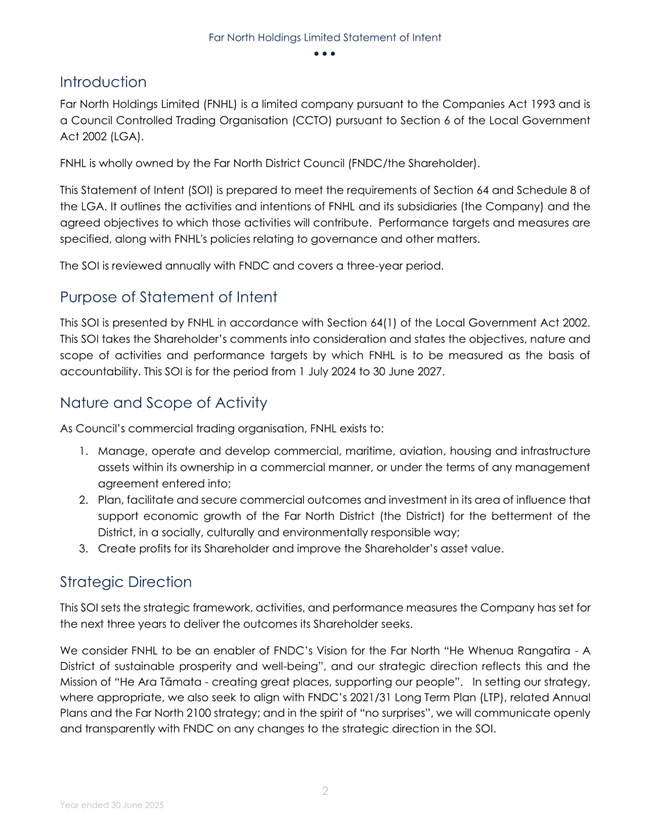
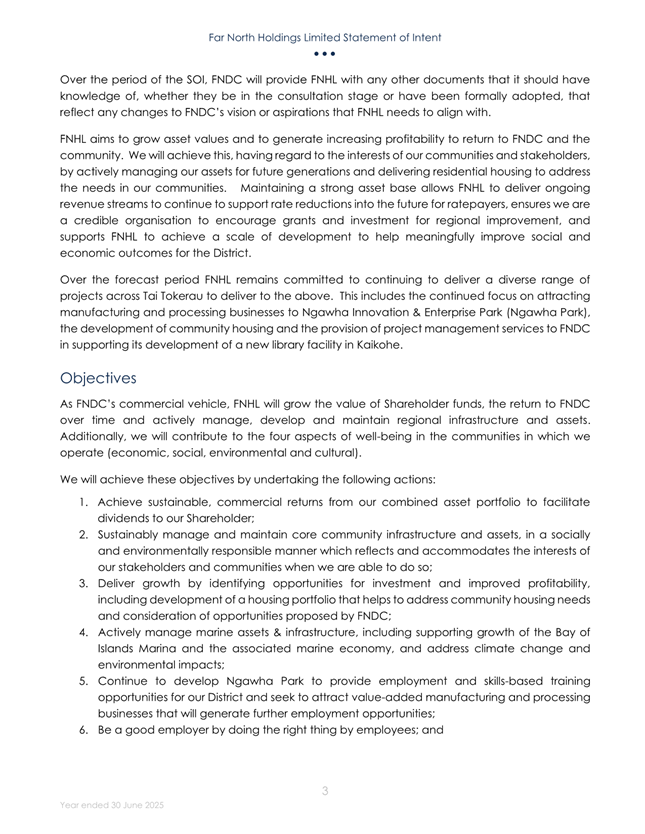
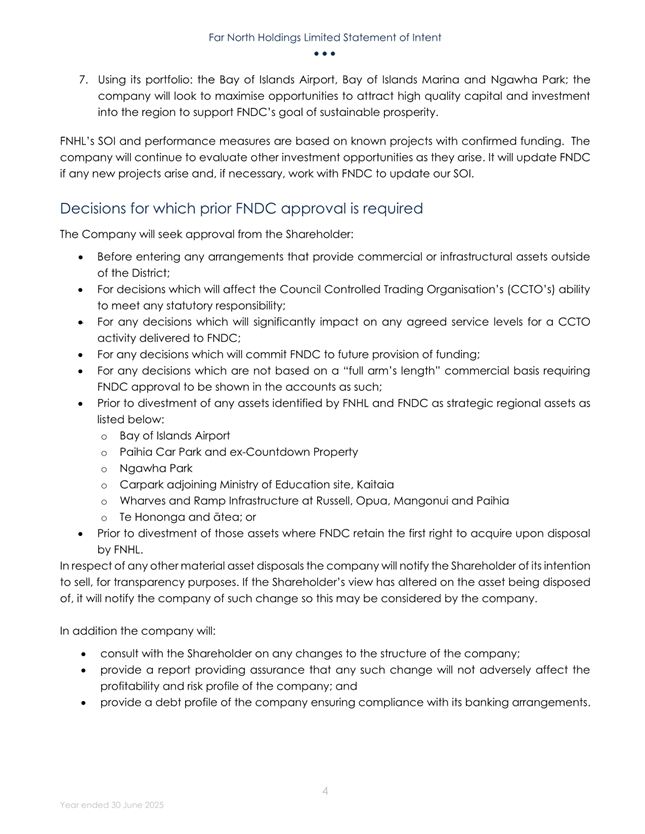
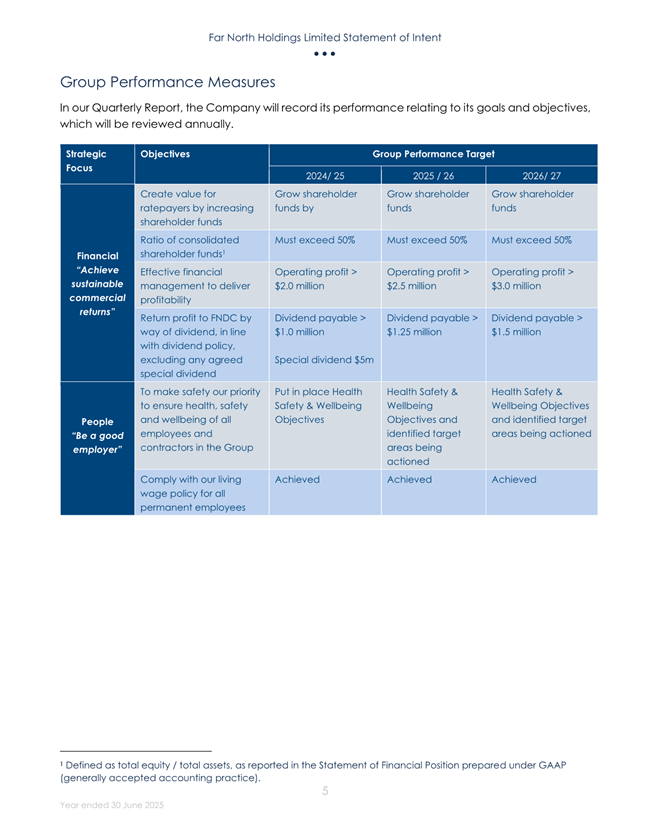
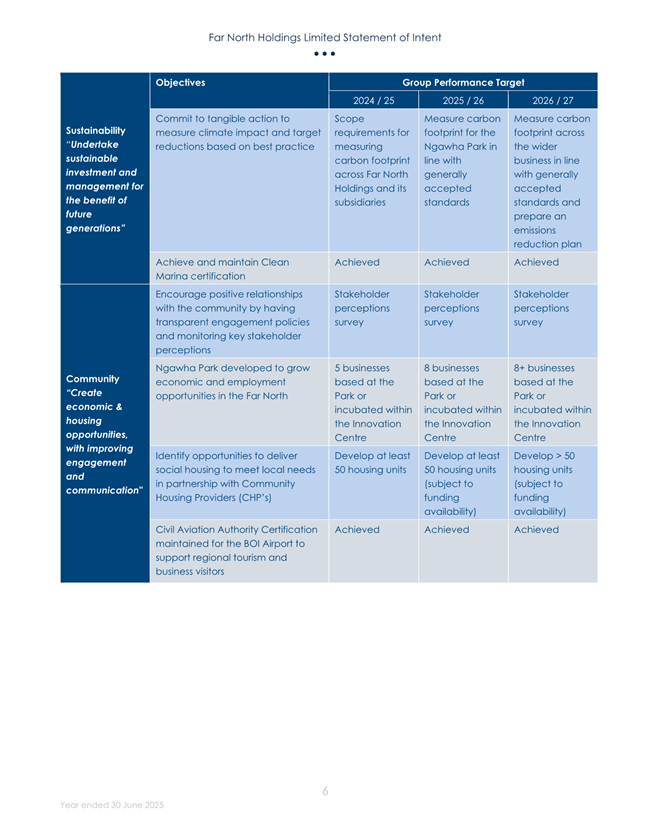
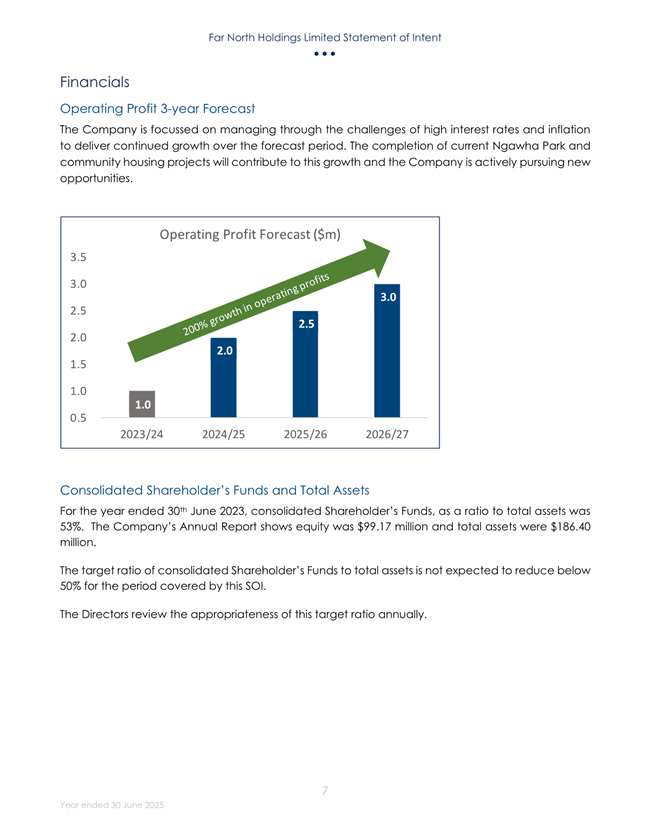
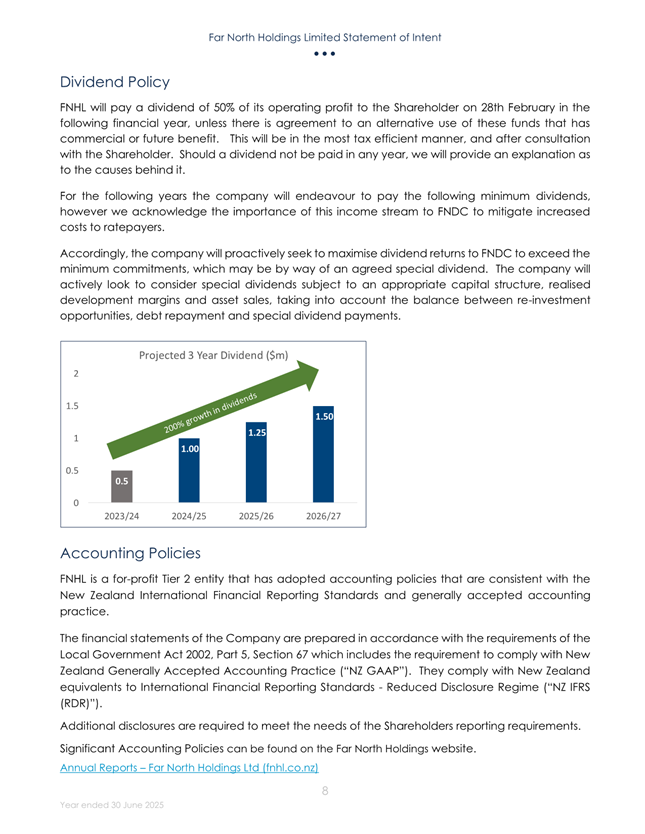
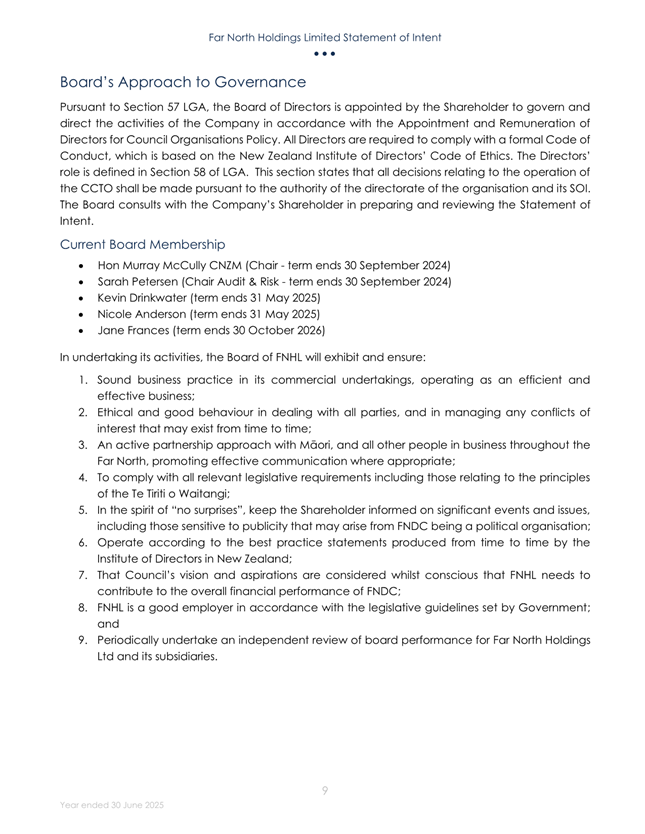
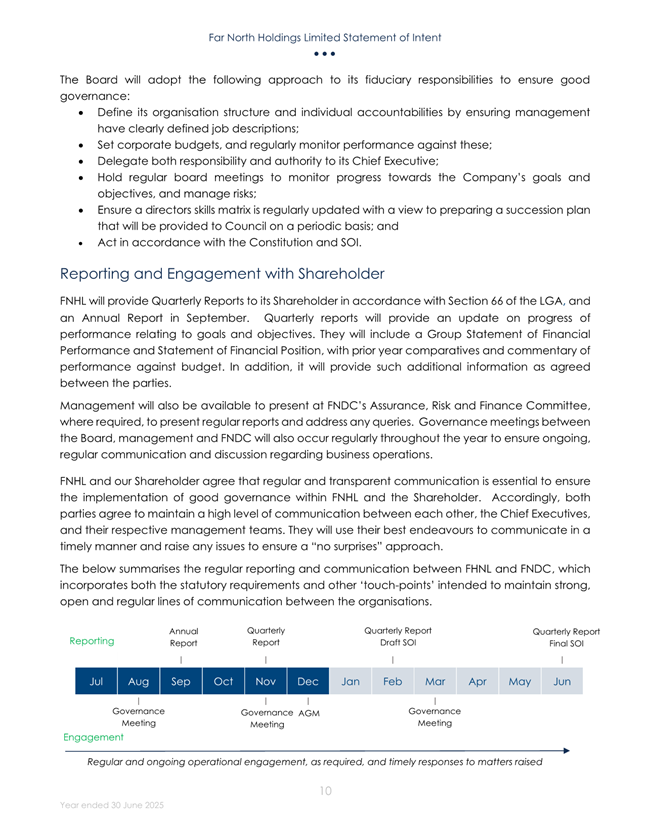
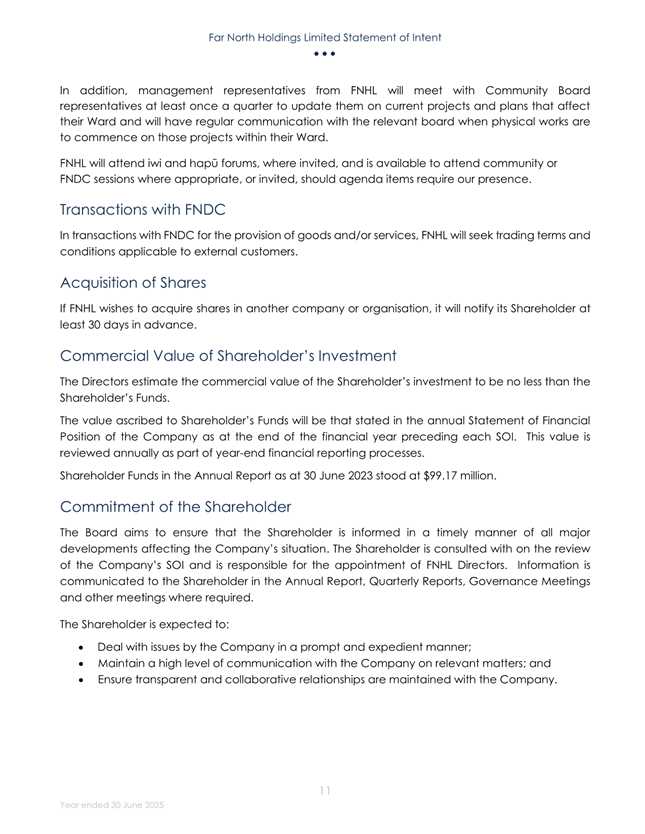
8 Ngā
Pūrongo Taipitopito / Information Reports
8.1 Report
on the Inaugural State of the Far North Address: Outcomes, Insights, and Future
Directions
File
Number: A4997684
Author: Ruben
Garcia, Group Manager – Community and Engagement
Authoriser: Guy
Holroyd, Chief Executive Officer
TAKE PŪRONGO / Purpose of the Report
The purpose of this
report is to provide a comprehensive overview of the inaugural State of the Far
North Address event, held on 12 November 2024. This report will outline the
event's significance, outcomes, and alignment with the Council’s vision.
Additionally, it will propose next steps and opportunities for future
improvement while detailing the financial implications of the event.
WHAKARĀPOPOTO MATUA / Executive SummarY
The State
of the Far North Address was a groundbreaking event for the Far North District
Council, held at the Turner Centre in Kerikeri. Attended by over 200
stakeholders, it aimed to connect governance with the community, sharing
updates on challenges, achievements, and the Council’s vision.
Mayor Moko
Tepania delivered a compelling presentation themed Road to Recovery,
addressing issues such as extreme weather events, infrastructure improvements,
and long-term strategic projects. The event received positive feedback from
attendees, national media coverage, and robust digital engagement.
The Address set a
precedent for Council transparency and community connection and is recommended
to become an annual event. Future iterations will benefit from insights gained
and recommendations for improvement outlined in this report.
|
TŪTOHUNGA
/ Recommendation
That the Council receive the report on the Inaugural
State of the Far North Address: Outcomes, Insights, and Future Directions.
|
tĀHUHU KŌRERO / Background
The State of the Far
North Address was conceived as a platform to bridge the gap between governance
and the community by highlighting the Council’s progress, challenges, and
plans for the future. It emphasised themes of transparency, accountability, and
partnership, aligning closely with the Council’s strategic goals.
Attendees included local
business leaders, community advocates, elected members, and Te Ao Māori
representatives, reflecting a diverse and engaged audience. The event also
featured pre- and post-presentation networking opportunities, fostering dialogue
among attendees.
MATAPAKI ME NGĀ KŌWHIRINGA /
Discussion and Next Steps
Discussion
The inaugural State of
the Far North Address was structured around three core themes: The Road
Behind Us, Where We Stand, and The Road Ahead. These themes
framed a transparent narrative about the challenges faced, actions taken, and
the Council's vision for the future.
1. The Road Behind
Us: This segment reflected on past challenges, including severe drought,
Cyclone Gabrielle, and COVID-19 lockdowns, and highlighted the Council's
innovative responses to these crises.
2. Where
We Stand: This segment showcased current achievements, such as:
a. Maintaining
the lowest rates increase in New Zealand (4.5%).
b. Major
infrastructure investments, including $7.1 million for roads and footpaths and
$8.7 million for water supplies in the first quarter of the financial year.
c. Enhancing
customer service delivery, with 90% of inquiries resolved at the first point of
contact.
3. The Road Ahead:
The Mayor outlined ambitious long-term projects such as the Kaitāia Water
Project and the Kaikohe Library and Civic Hub, alongside strategies to foster
greater community engagement and participation in the democratic process.
Survey Feedback
Post-event survey results
(n=58) provided valuable insights into attendee experiences:
• Overall
Experience: 91% rated their experience as "Excellent" or
"Good."
• Content
Relevance: 92% "Strongly Agreed" or "Agreed" that the
presentation provided valuable information on Council efforts and goals.
• Theme
Clarity: 70% felt the themes (The Road Behind Us, Where We Stand, The Road
Ahead) were communicated "Very Clearly," while another 26% felt the
themes were communicated “Somewhat clearly.”
• Networking
Opportunities: 86% found the networking sessions beneficial.
• Event
Logistics: 99% rated the logistics as "Excellent" or
"Good."
Open-ended feedback
praised the Mayor’s delivery and the event’s innovative format but
suggested areas for improvement, such as providing translations for te reo
Māori and reducing presentation length.
National and Local
Media Coverage
The event gained
widespread media attention, further amplifying its impact:
• RNZ
published an article describing the event as a groundbreaking effort to
reconnect with residents, emphasising its innovative format and transparent
messaging (link
to story…).
• NZ
Herald highlighted the challenges faced by the district and the
Council’s proactive measures to address them, describing the event as a
“state of the nation-style” address (link
to story…).
• Te
Ao News reported on the event’s success in showcasing Council’s
achievements and future plans, noting the Mayor’s candid approach to
addressing community concerns (link
to story…).
These articles provided a
balanced perspective on the event, reinforcing its role in enhancing
Council’s reputation and visibility.
Next Steps
1. Make
the Address an Annual Event: Formalise the State of the Far North Address
as an annual event to ensure consistent engagement and accountability.
2. Enhance
Future Events:
a. Improve
ticketing processes and provide name tags for all attendees.
b. Introduce
a dress code for elected members and speakers to maintain professionalism.
c. Conduct
multiple rehearsals, including a full dry run with all participants.
d. Schedule
event around the Parliament calendar to ensure attendance from key Members of
Parliament.
3. Extend
Reach: Explore the feasibility of localised roadshow events throughout the
District to engage broader audiences.
4. Increase
Community Engagement: Develop follow-up resources, such as video highlights
and summary documents, to maintain momentum and reach a wider audience.
5. Media
Training: Equip Council leadership with media training to handle post-event
engagement confidently.
PĀNGA PŪTEA ME NGĀ WĀHANGA
TAHUA / Financial Implications and Budgetary Provision
The
event’s total budget was $9,778.26 (excluding GST), allocated across key
expense categories, including:
• Venue
hire: $2,643.50
• Catering:
$5,000.00
• Security:
$395.76
• Koha:
$1,500.00
• Rentals
& Office Supplies: $239.00
The event remained within
budget, reflecting effective cost management. The value derived from the event
included heightened community engagement, positive media coverage, and robust
digital engagement, with 430 video views and nearly 100 hours of watch time in
the first week following the event.
Āpitihanga
/ Attachments
Nil
|
Ordinary Council Meeting Agenda
|
12 December 2024
|
8.2 Community
Board Minutes - November 2024
File
Number: A5002685
Author: Maria
Bullen, Democracy Advisor
Authoriser: Aisha
Huriwai, Manager - Democracy Services
TAKE PŪRONGO / Purpose of the Report
To provide an overview of
resolutions made by Community Boards with an opportunity for Chairpersons to
speak with Council about pertinent discussions held at Community Board.
WHAKARĀPOPOTO MATUA / Executive SummarY
Minutes from Te
Hiku, Bay of Islands-Whangaroa and Kaikohe-Hokianga Community Board September
2024 meetings are attached for Council information.
|
TŪTOHUNGA
/ Recommendation
That Council note the following Community Board
minutes:
· 19 November
2024 Te Hiku Community Board;
· 21 November
2024 Bay of Islands-Whangaroa Community Board; and
· 22 November
2024 Kaikohe-Hokianga Community Board
|
tĀHUHU KŌRERO / Background
This report is to provide Council with an overview of
resolutions made at Community Board meetings and for Community Board
Chairpersons to raise any Community Board issues with Council.
MATAPAKI ME NGĀ KŌWHIRINGA /
Discussion and Next Steps
This is intended as an information report but shows on the
agenda as a standard report to place it earlier on the agenda.
From time-to-time Community Boards may make recommendations
to Council. This report is not considered to be the appropriate mechanism for
Council to make a decision from a Community Board recommendation. Council could
however move a motion to formally request a report on a particular matter for
formal consideration at a subsequent meeting. The report would then ensure that
Council have sufficient information to satisfy the decision-making requirements
under the Local Government Act 2002 (sections 77-79).
The minutes presented to this meeting include
recommendations to Council, which staff have requested be considered by Council
for the June meeting.
PĀNGA PŪTEA ME NGĀ WĀHANGA
TAHUA / Financial Implications and Budgetary Provision
There are no financial
implications or need for budget provision in considering this report.
Āpitihanga
/ Attachments
1. 2024-11-19
Te Hiku Community Board Minutes - A4981580 ⇩ 
2. 2024-11-21
Bay of Islands-Whangaroa Community Board Minutes - A4971228 ⇩ 
3. 2024-11-22
Kaikohe-Hokianga Community Board Minutes - A4979369 ⇩ 
|
Ordinary Council Meeting Agenda
|
12 December 2024
|
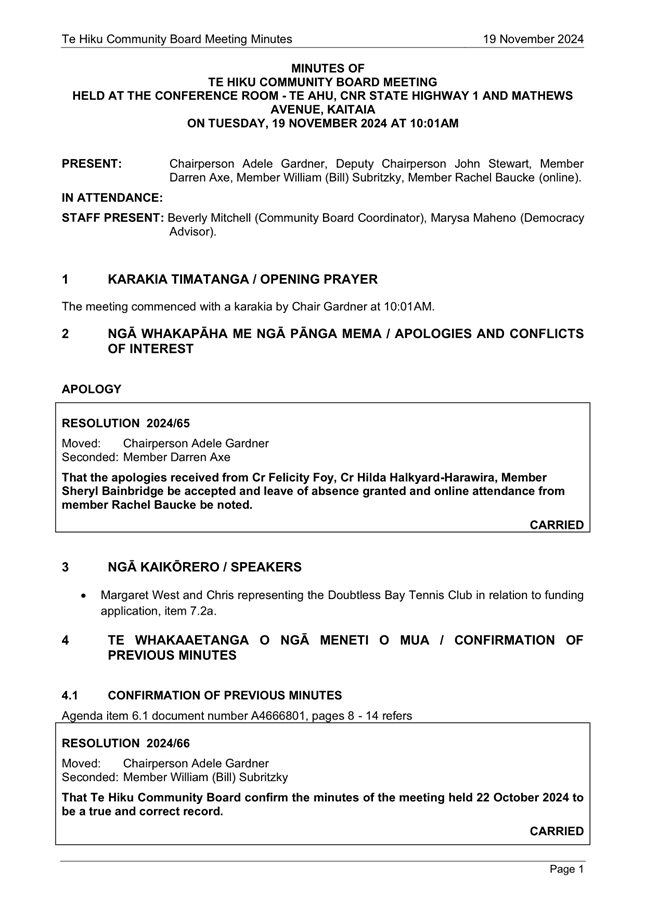
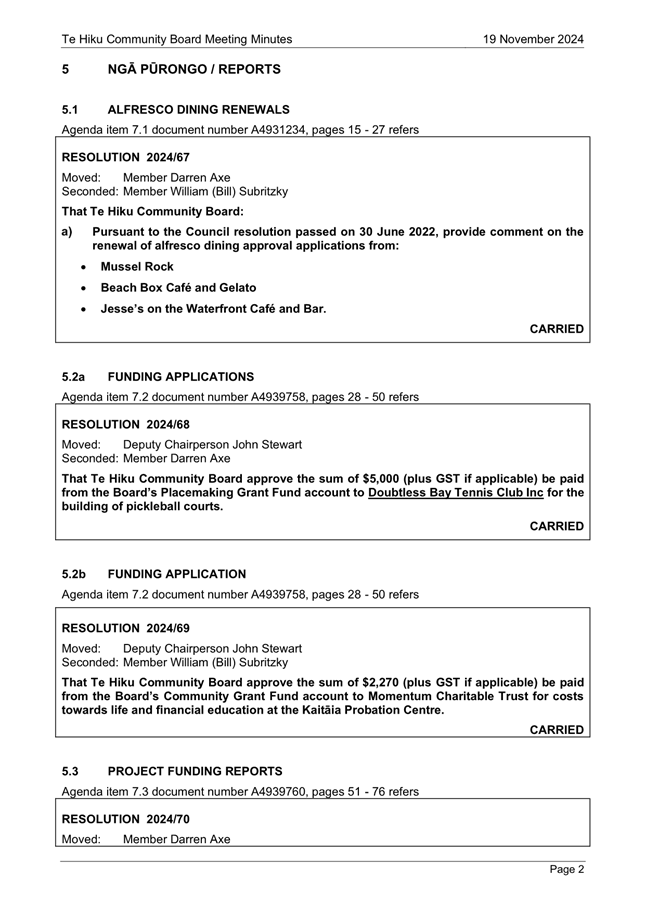
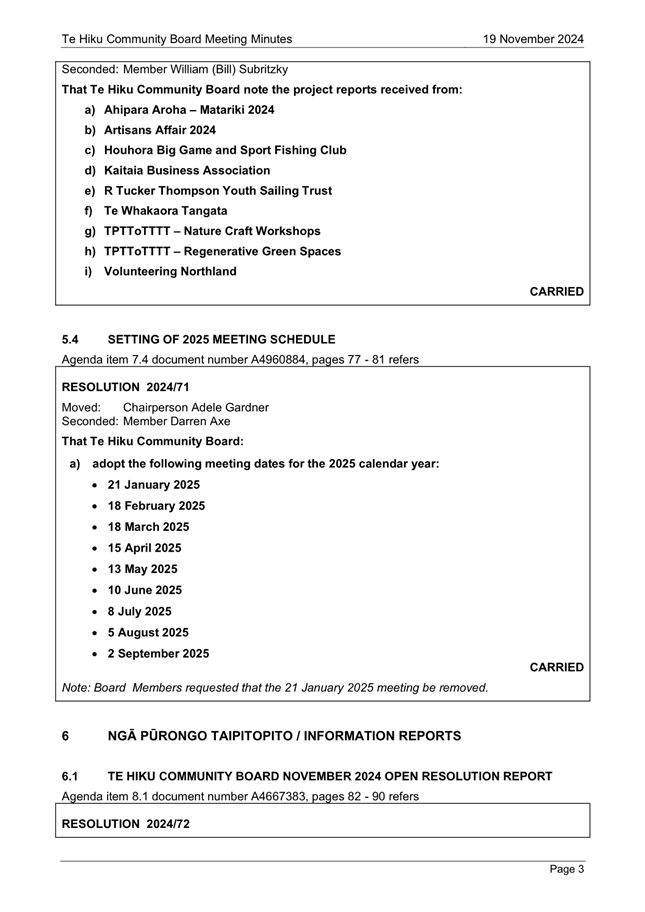
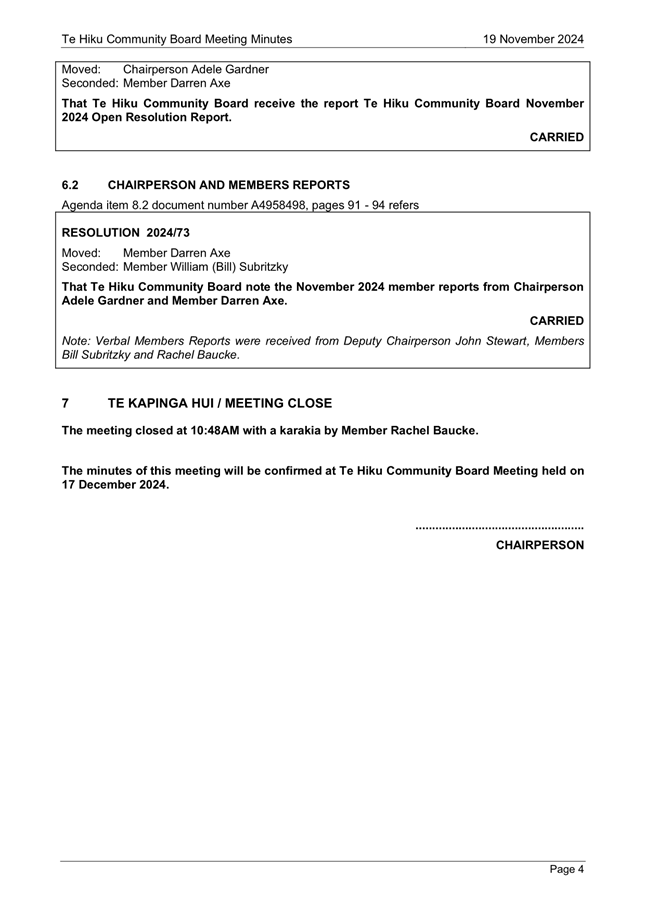
|
Ordinary Council Meeting Agenda
|
12 December 2024
|
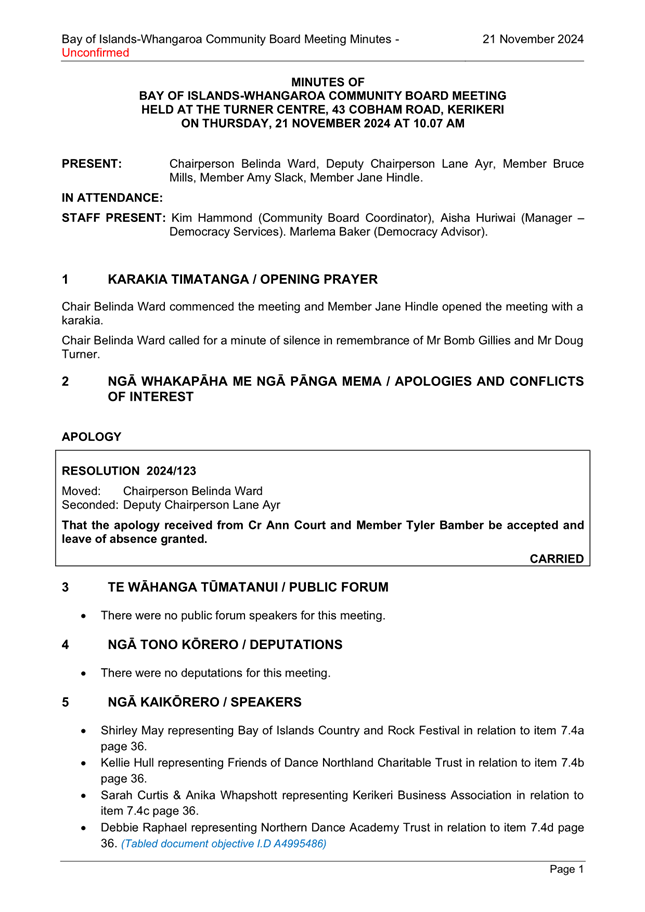
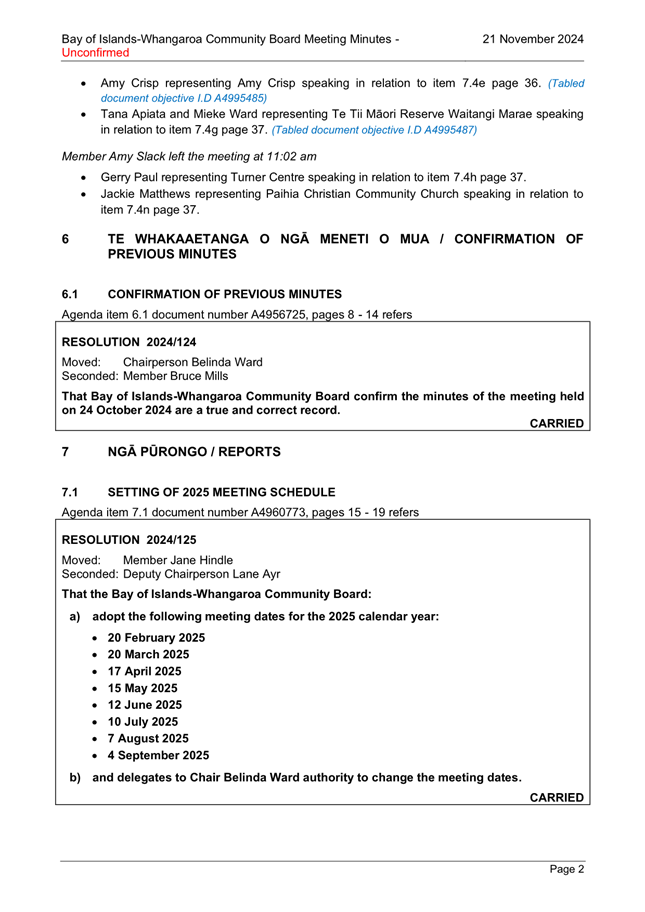
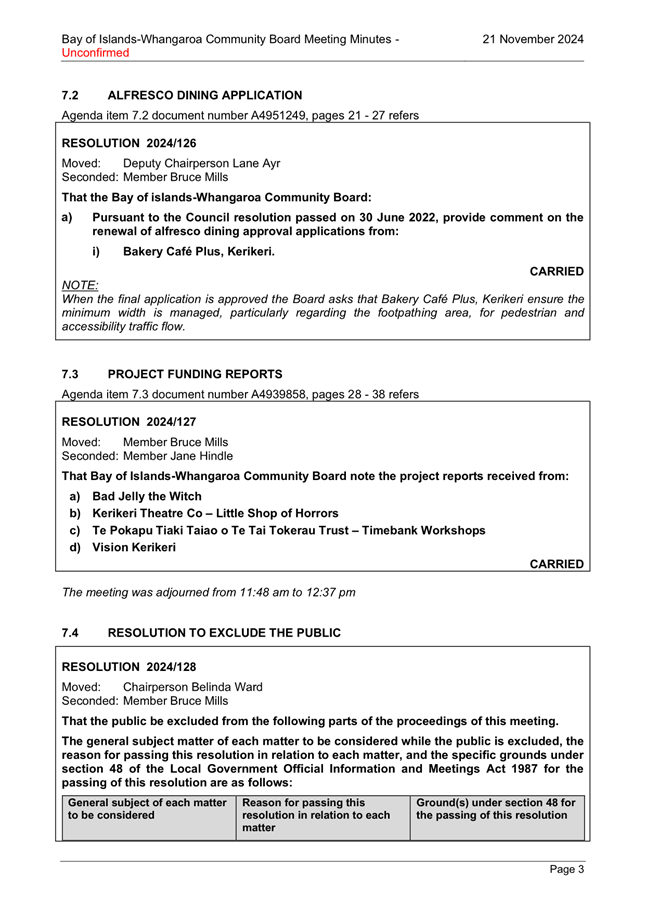
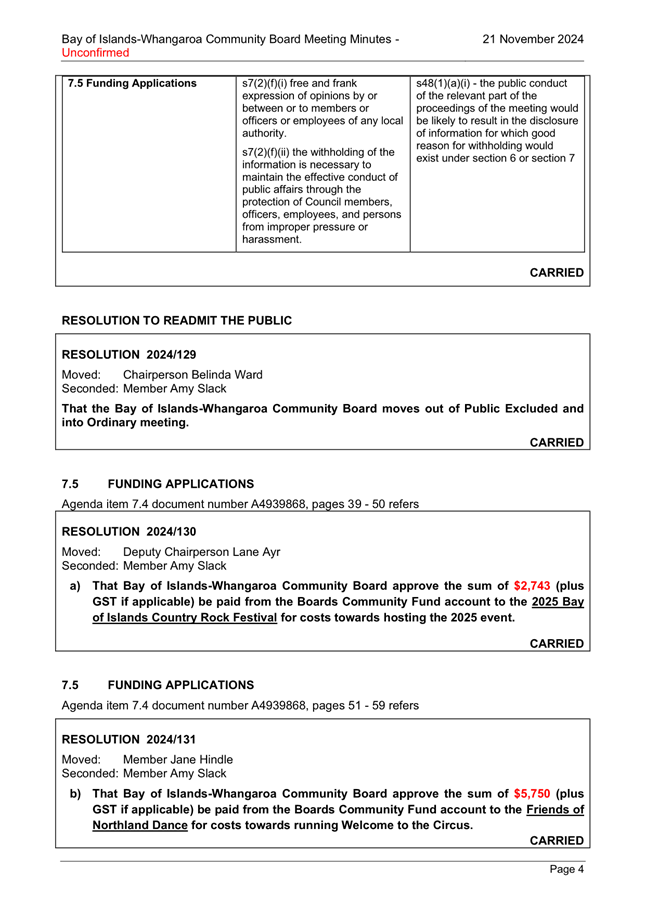
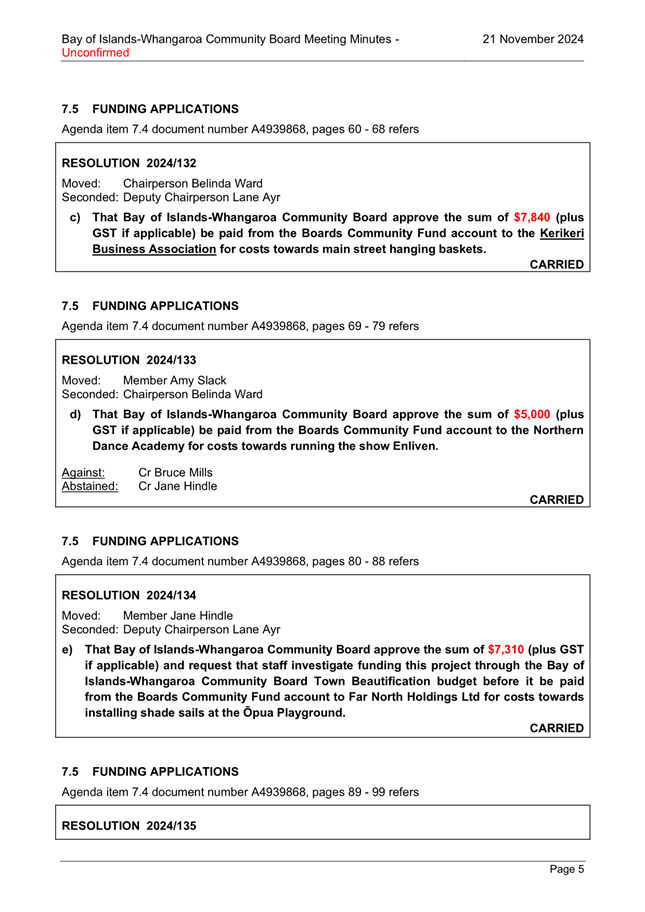
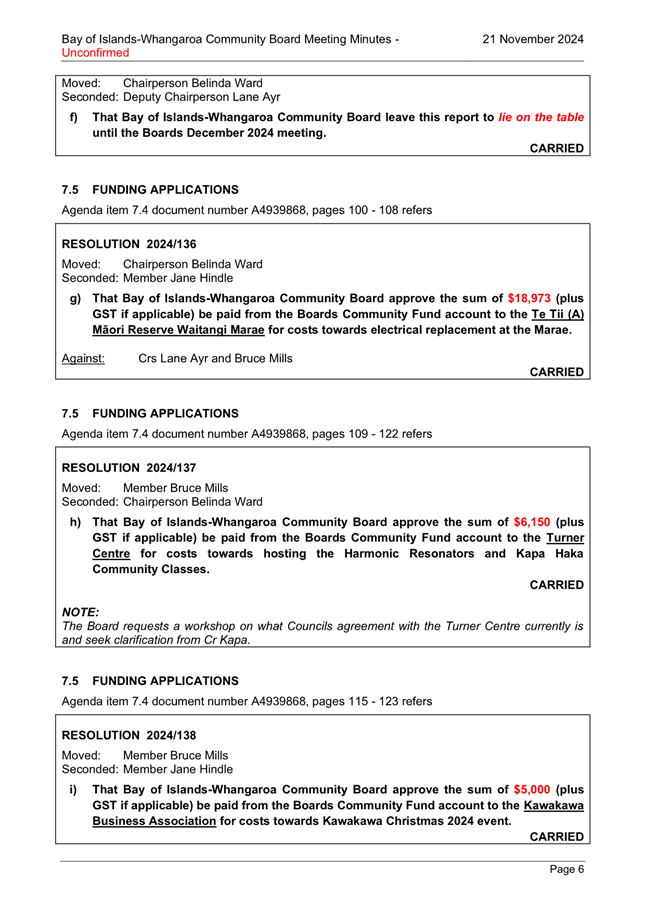
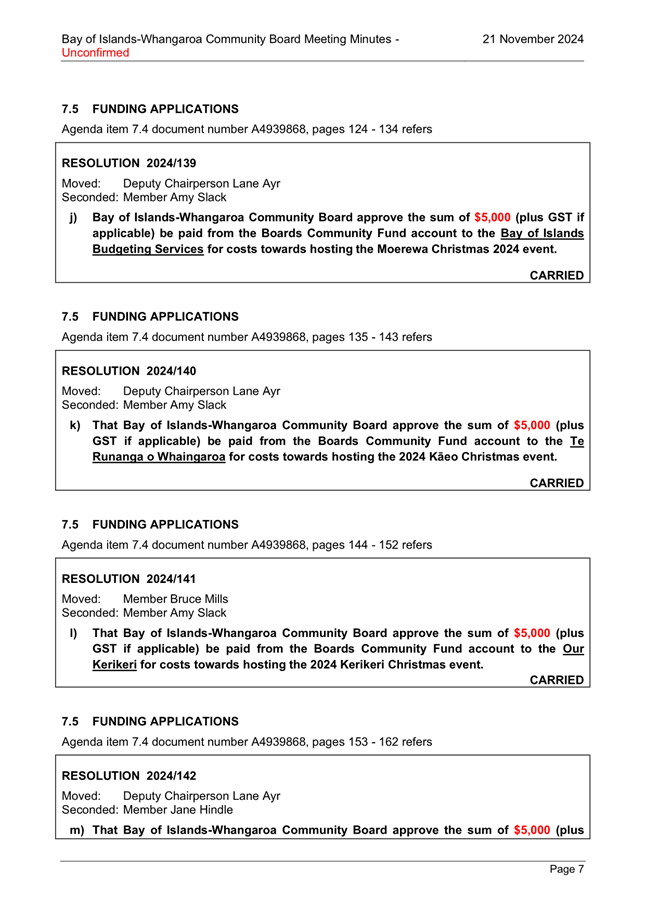
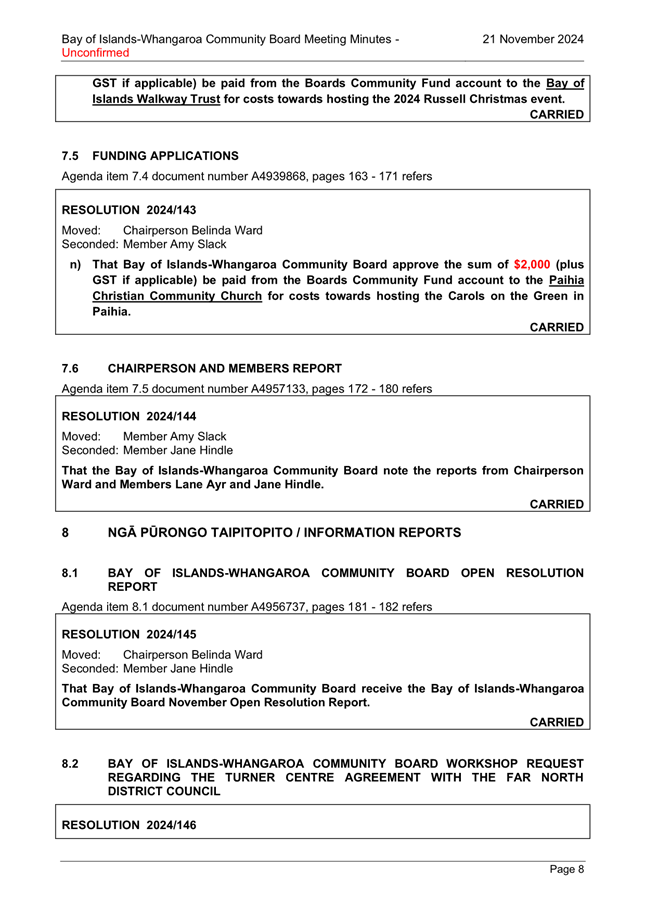
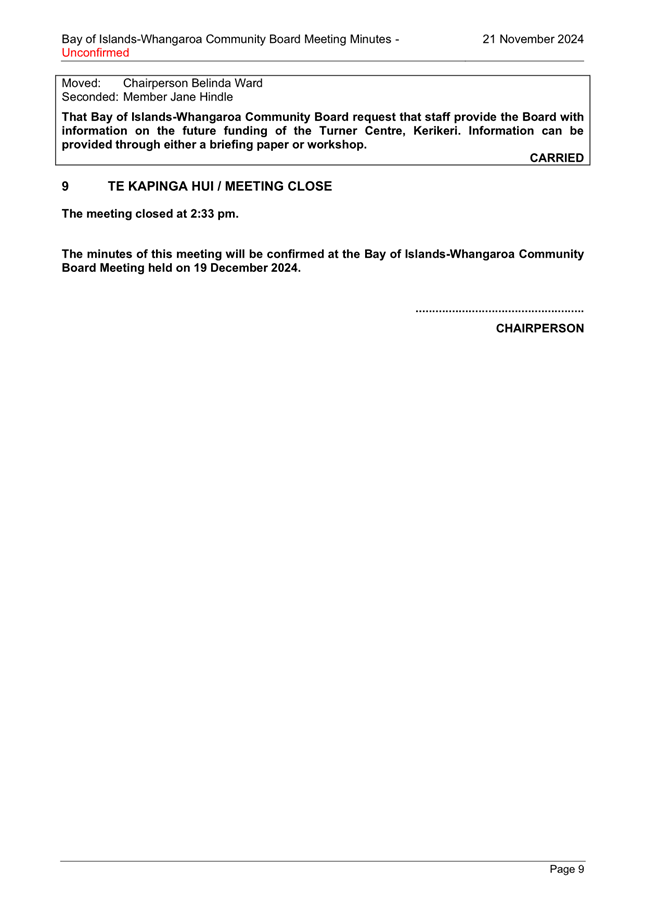
|
Ordinary Council Meeting Agenda
|
12 December 2024
|
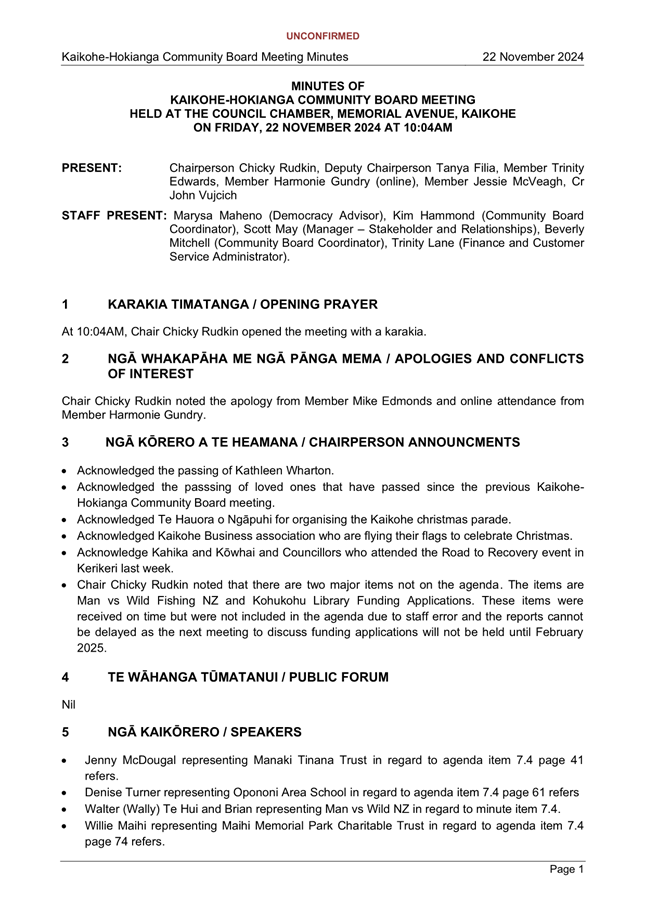
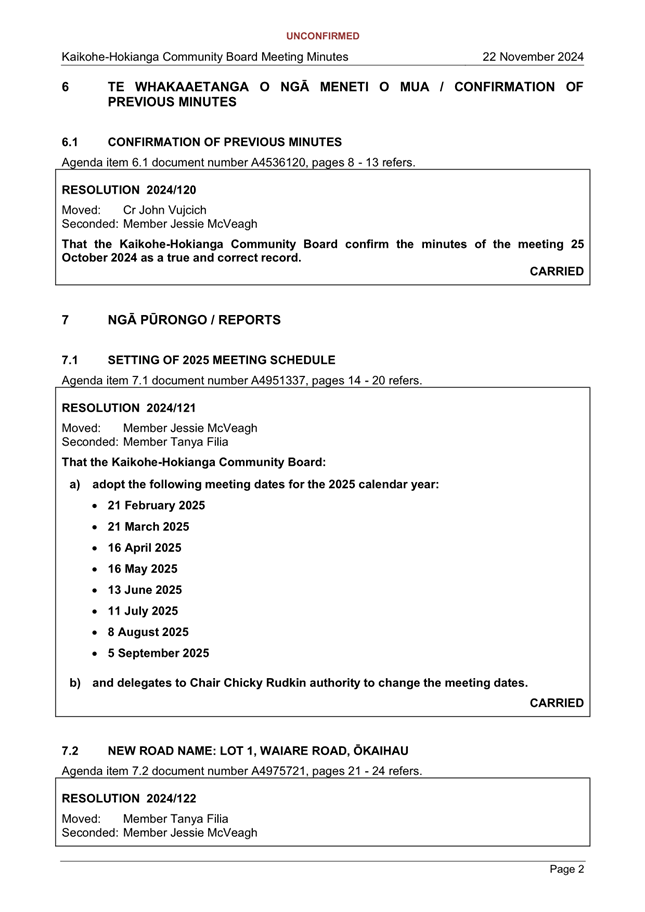
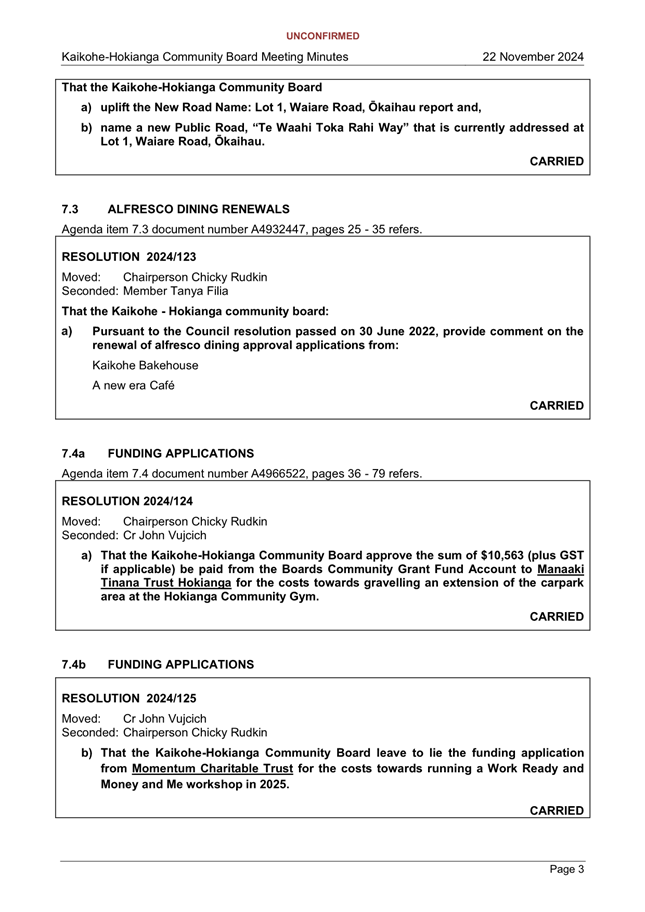
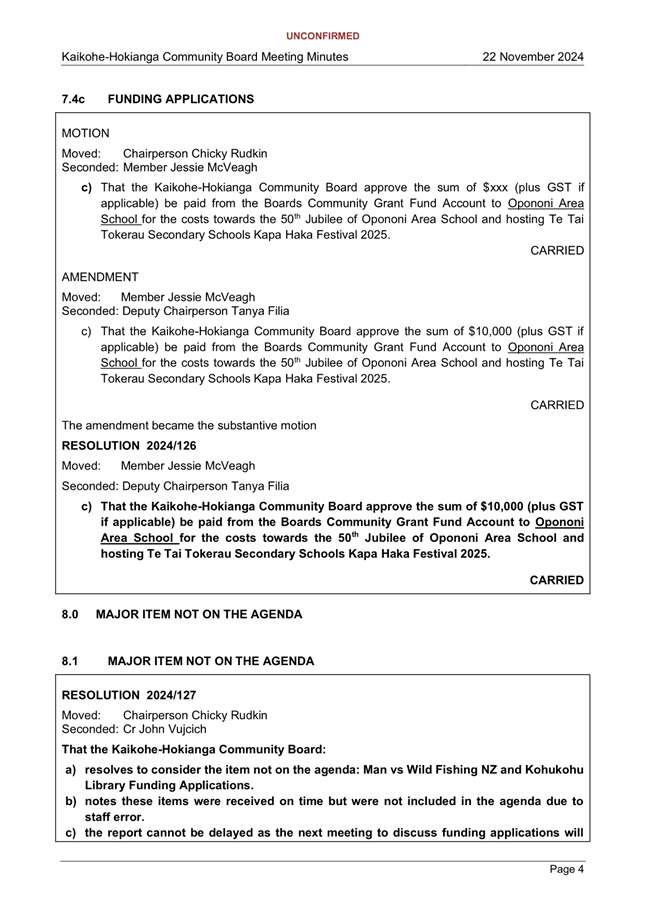
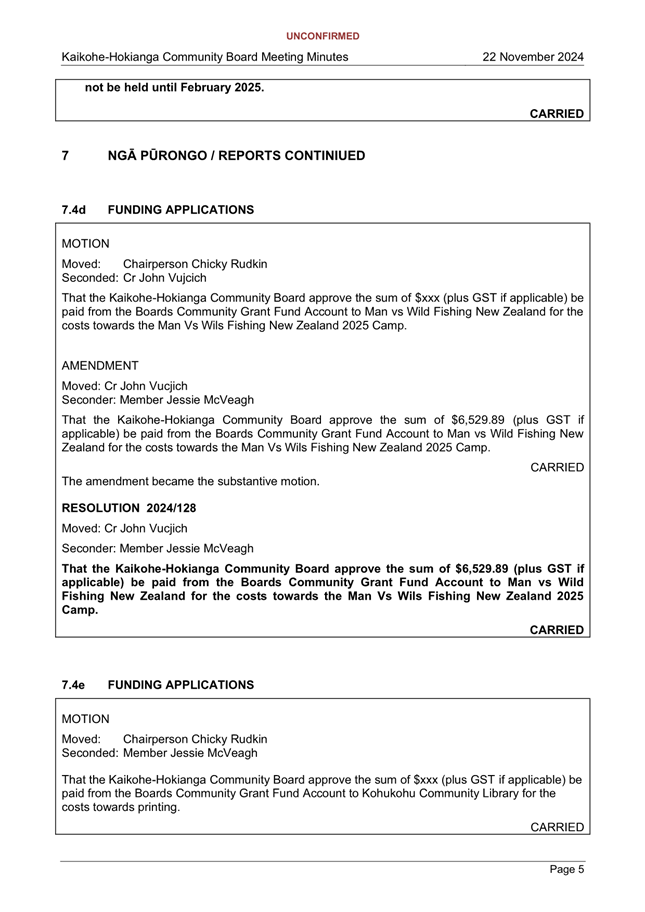
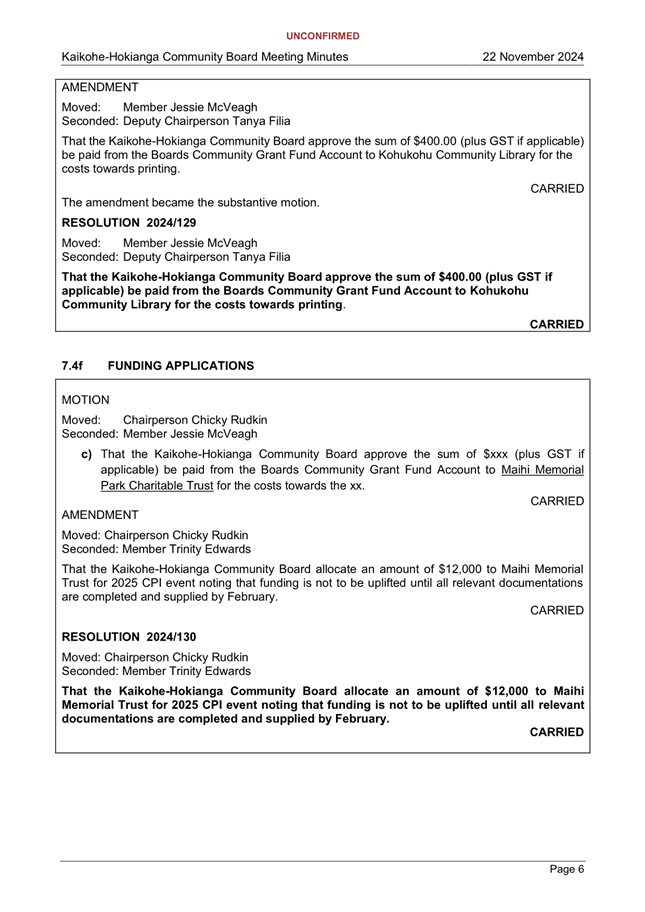
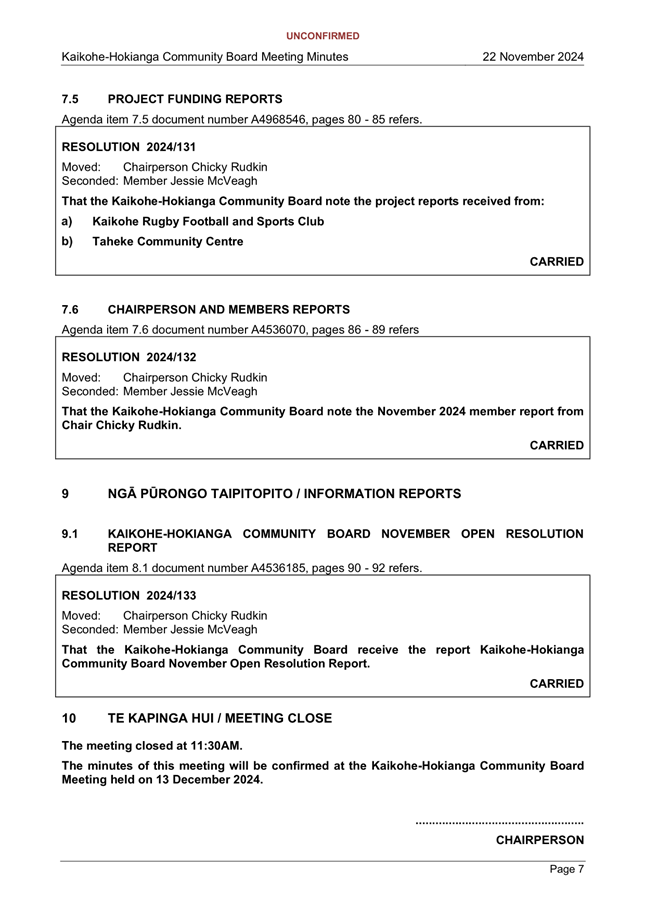
8.3 Mayor
and Councillor's Reports
File
Number: A5002703
Author: Maria
Bullen, Democracy Advisor
Authoriser: Aisha
Huriwai, Manager - Democracy Services
TE TAKE PŪRONGO / Purpose of the Report
This report is a mechanism to have open communication and
transparency on activities undertaken by Councillors as elected
representatives.
|
NGĀ
TŪTOHUNGA / Recommendation
That Council note the reports submitted by Kahika Moko
Tepania, Kōwhai Kelly Stratford, Crs Hilda Halkyard-Harawira, Ann Court,
Tāmati Rākena and Penetaui Kleskovic be received.
|
TE tĀHUHU KŌRERO / Background
Kahika-Mayor Tepania has
reintroduced Council members reports as a mechanism to have open communication
and transparency on activities undertaken by Councillors as elected
representatives. Members reports are compulsory for Councillors.
TE MATAPAKI ME NGĀ KŌWHIRINGA /
Discussion and Next Steps
Members reports are attached for
information.
REASON
FOR THE RECOMMENDATION
To formally receive the Mayor and
Councillor reports.
NGĀ PĀNGA PŪTEA ME NGĀ WĀHANGA
TAHUA / Financial Implications and Budgetary Provision
There are no financial implications
or the need for budgetary provision as a result of this report.
ngĀ
Āpitihanga / Attachments
1. Member
Report Kahika Moko Tepania - A5006379 ⇩ 
2. Far
North District - A5006380 ⇩ 
3. RPT_Far
North_6 Month_Jan FINAL - A5006381 ⇩ 
4. Member
Report Kōwhai Kelly Stratford - A5010286 ⇩ 
5. Member
Report Hilda Halkyard-Harawira - A5006991 ⇩ 
6. Member
Report Ann Court - A5007101 ⇩ 
7. Member
Report Tāmati Rākena - A5008079 ⇩ 
8. Member
Report Penetaui Kleskovic - A5009172 ⇩ 
|
Ordinary Council Meeting Agenda
|
12 December 2024
|
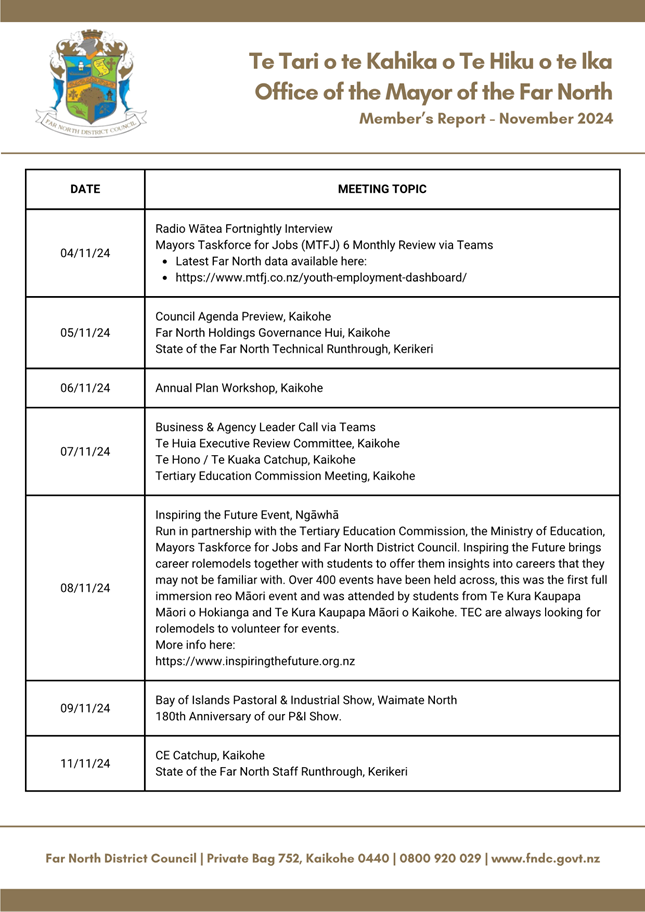
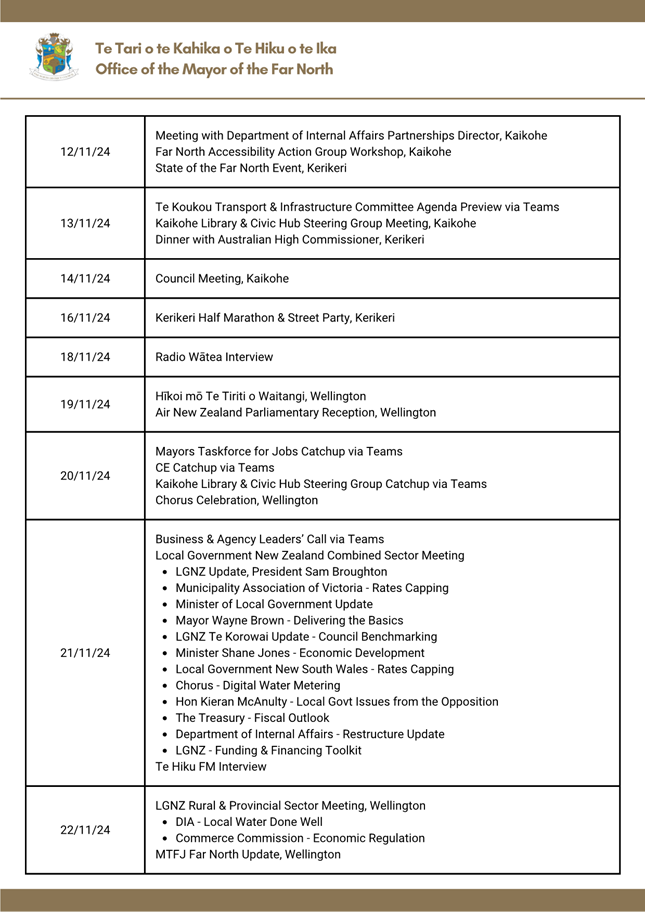
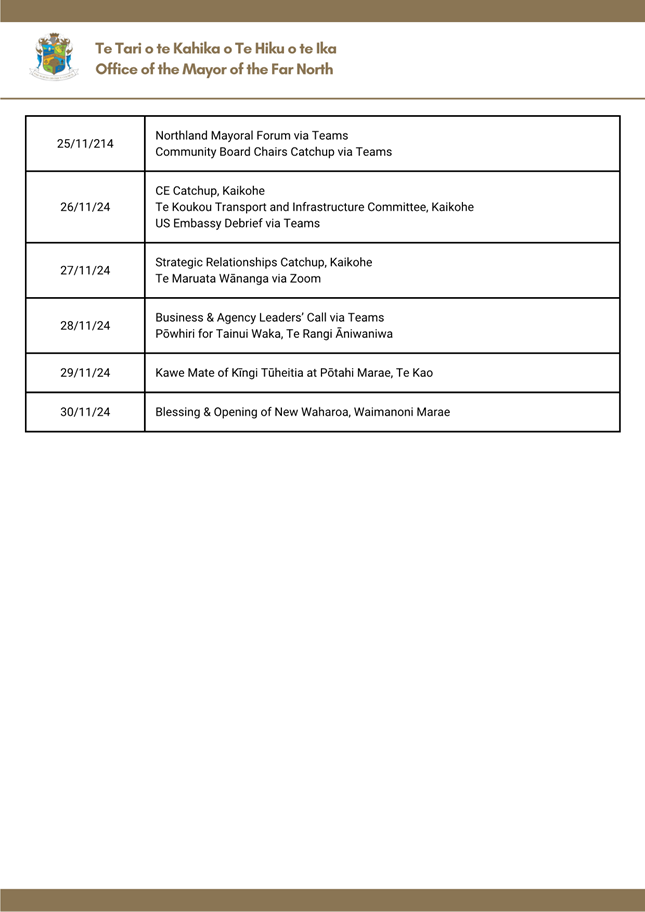
|
Ordinary Council Meeting Agenda
|
12 December 2024
|
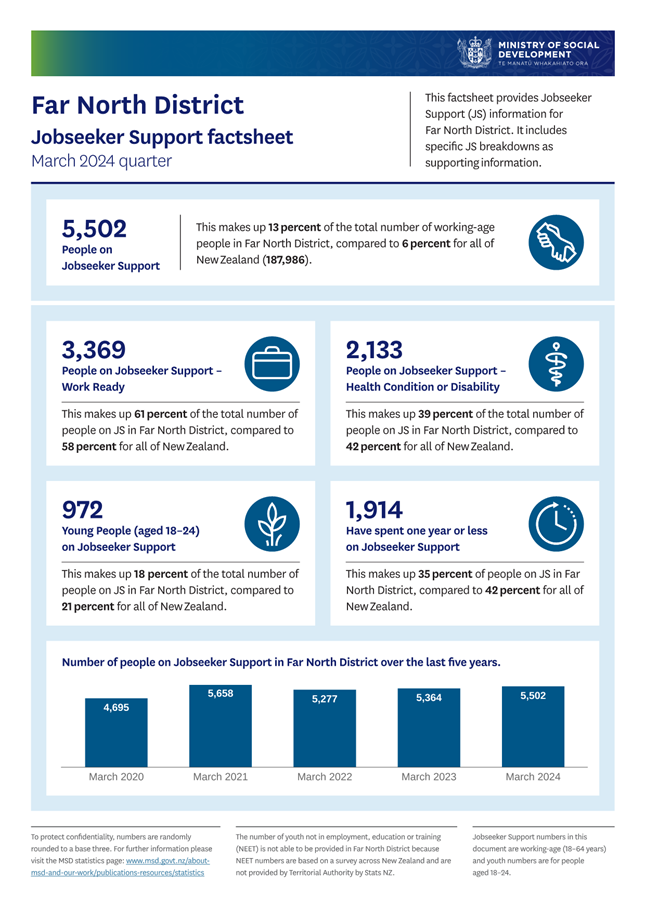
|
Ordinary Council Meeting Agenda
|
12 December 2024
|
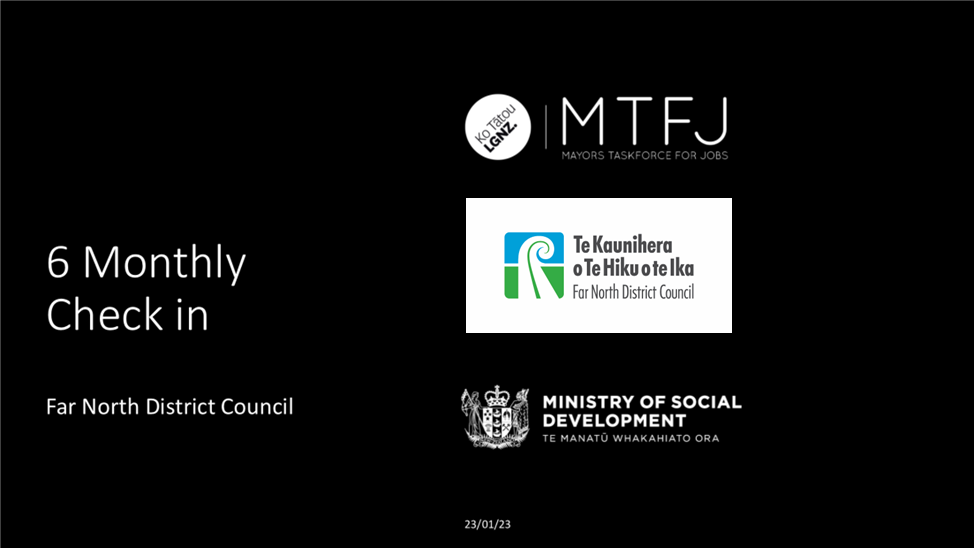
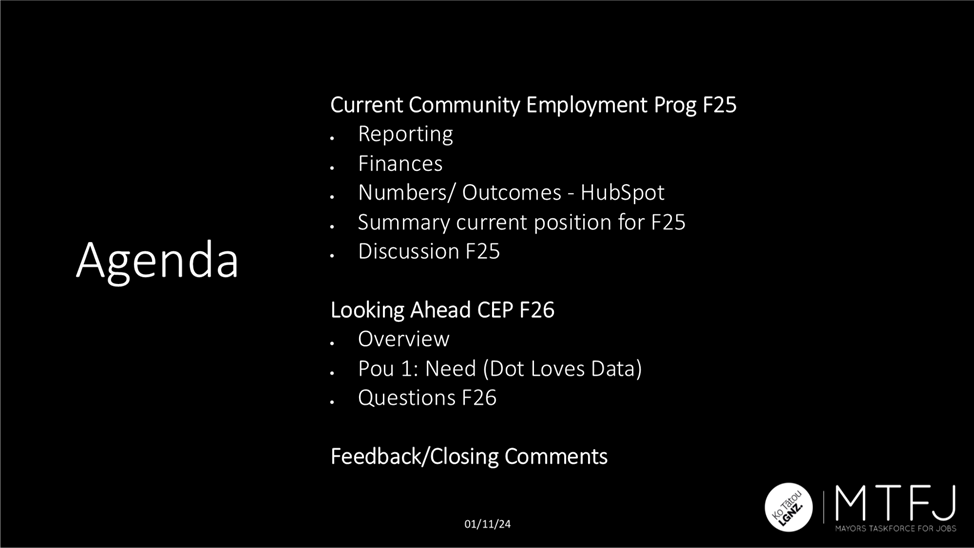

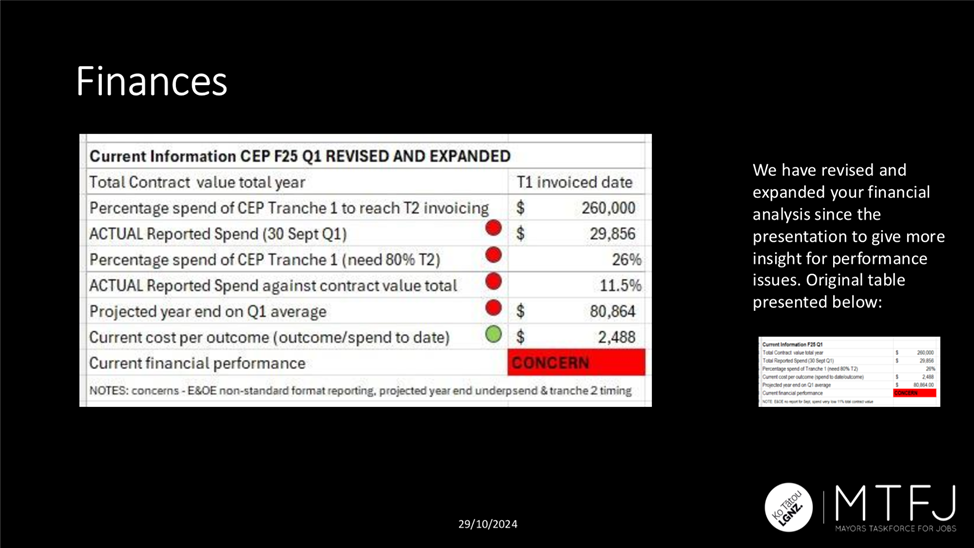
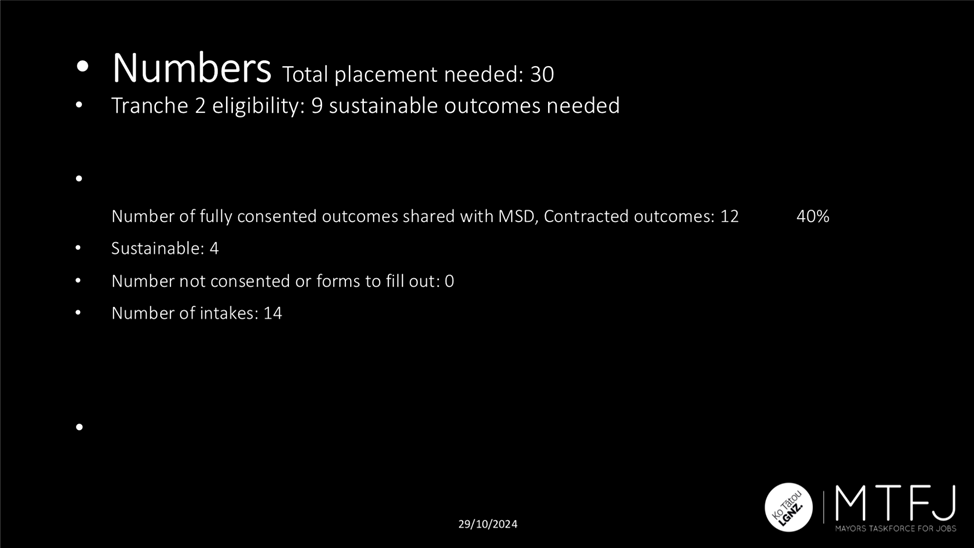
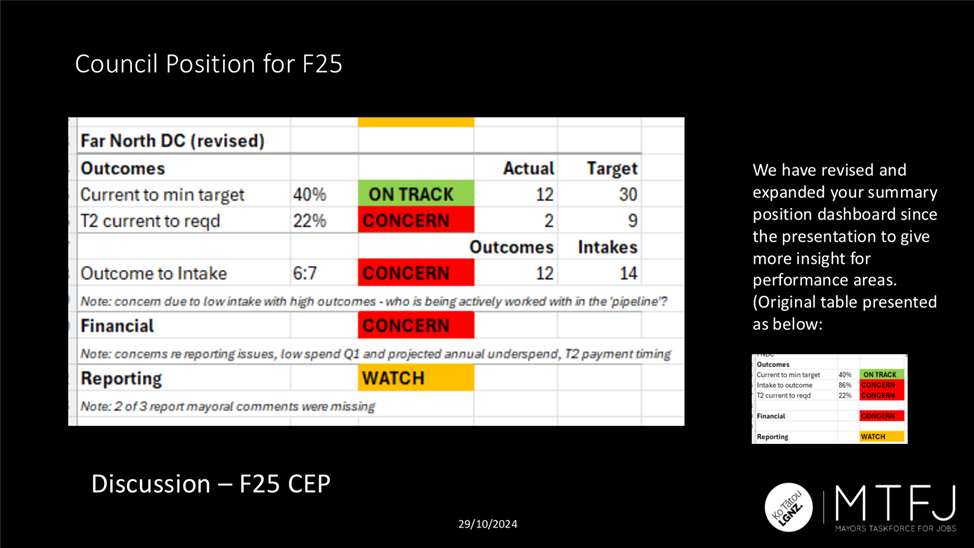
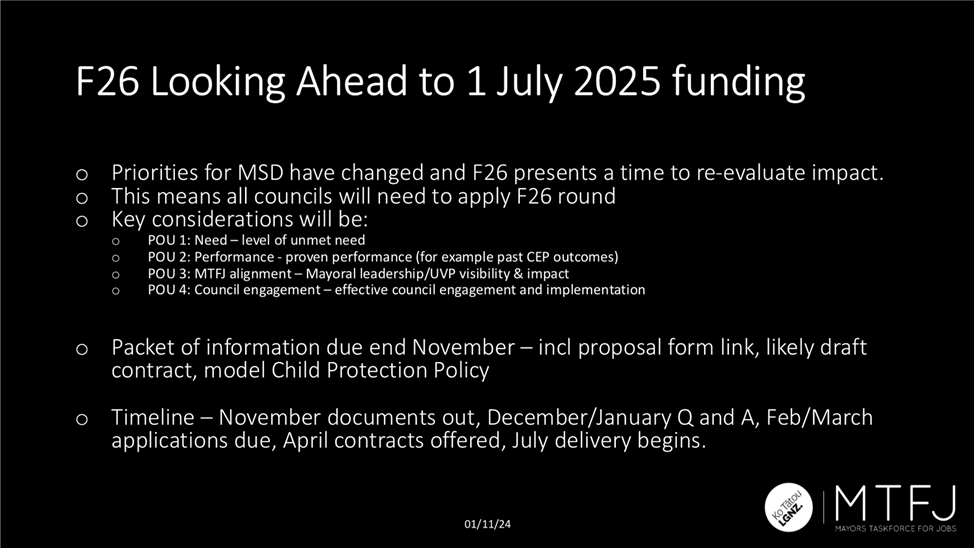
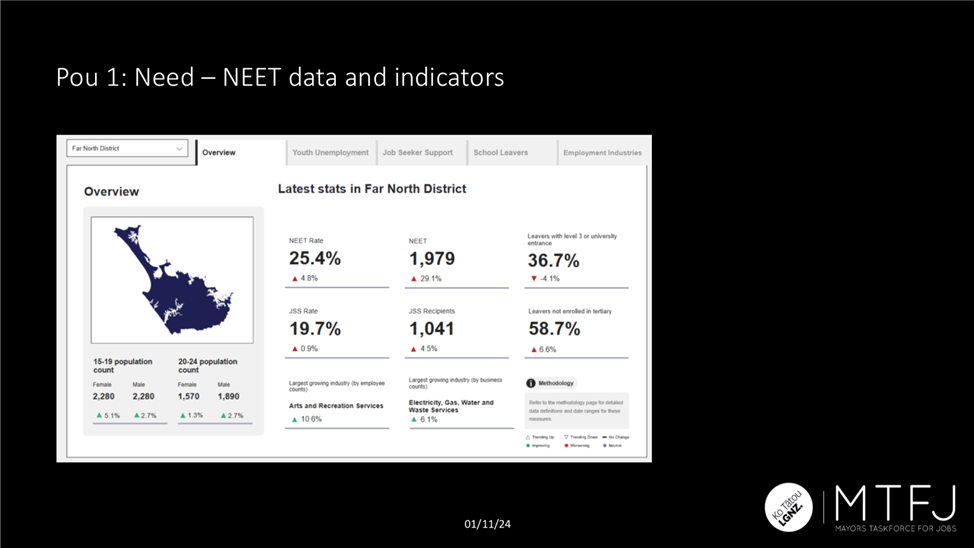
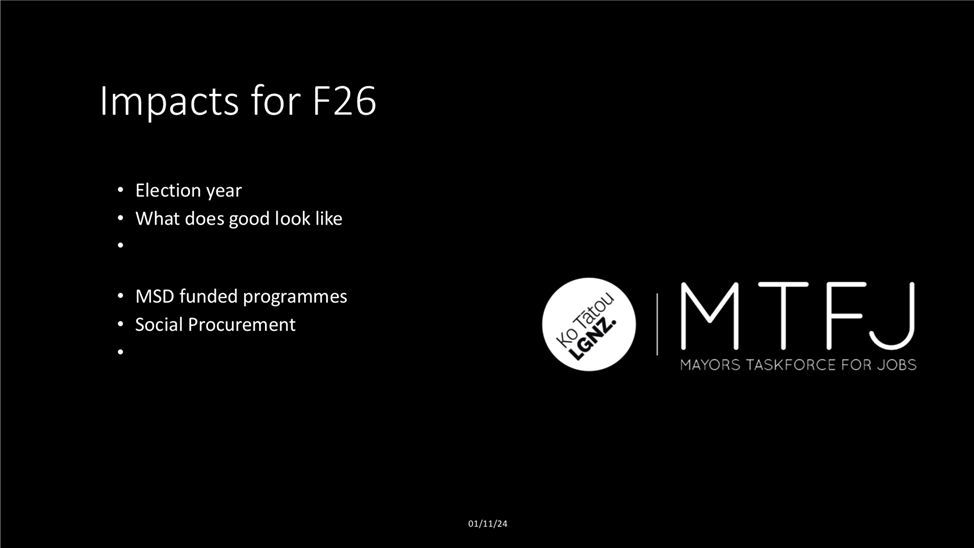
|
Ordinary Council Meeting Agenda
|
12 December 2024
|
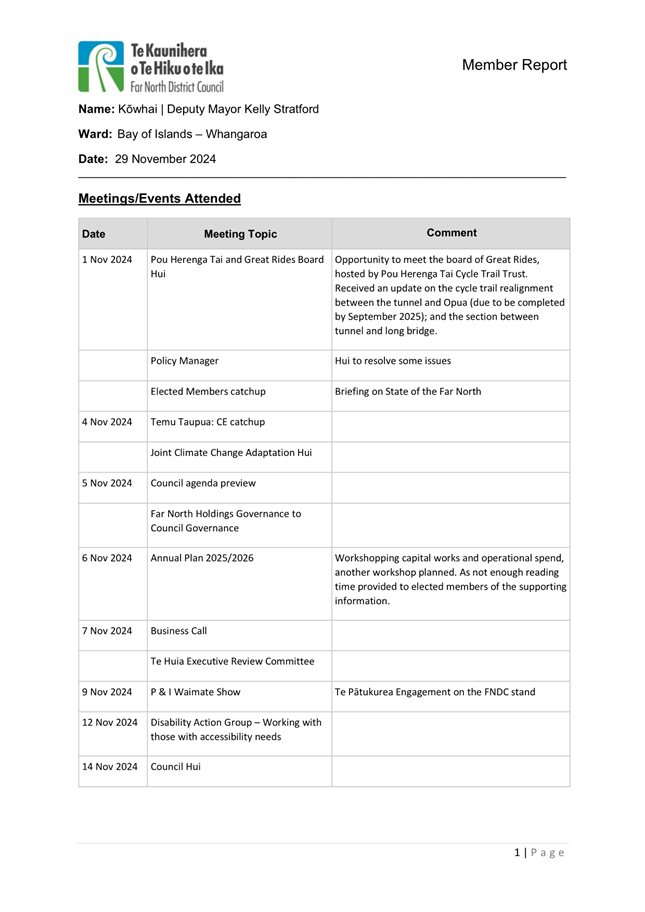
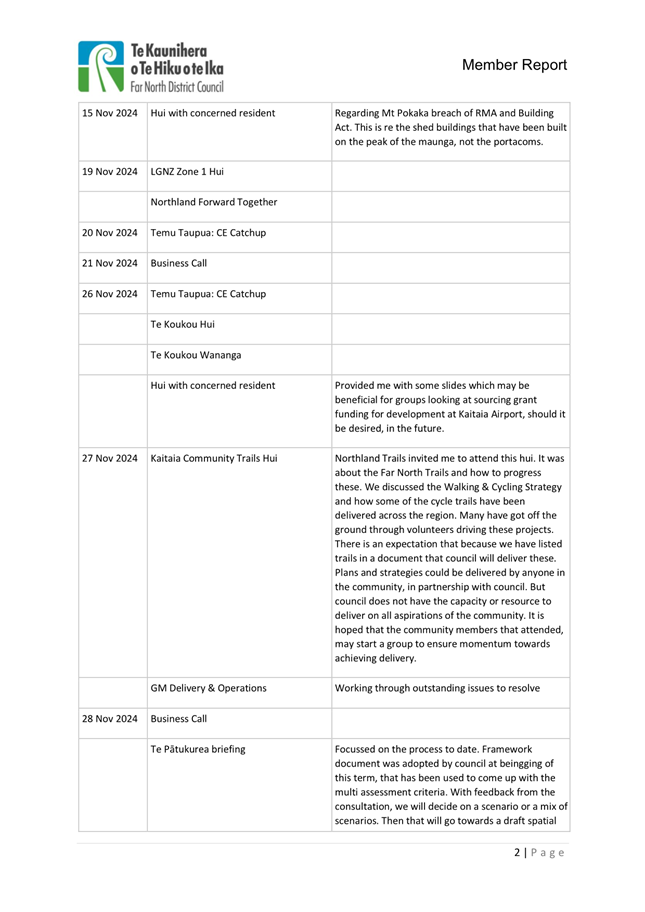
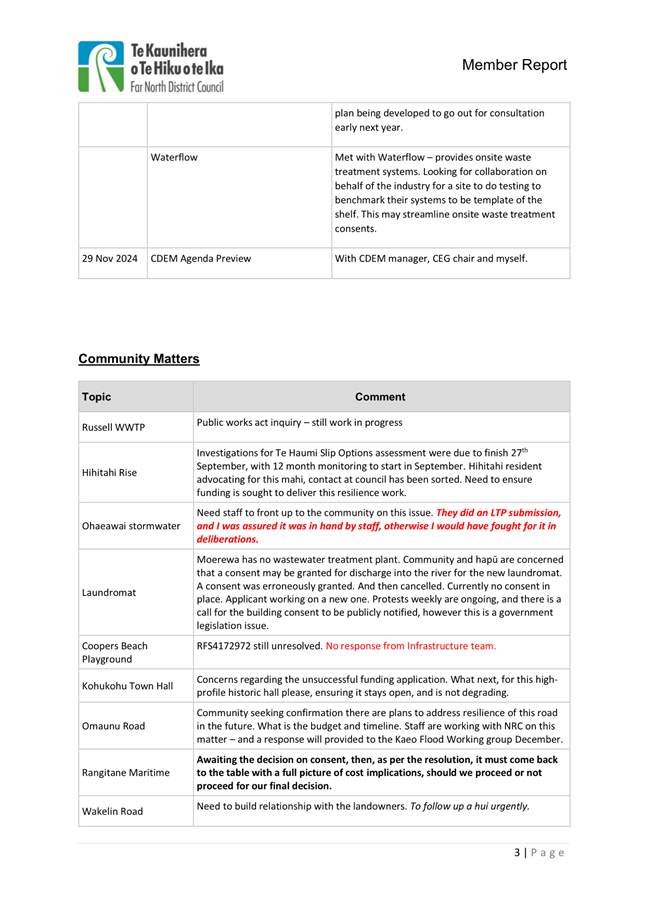
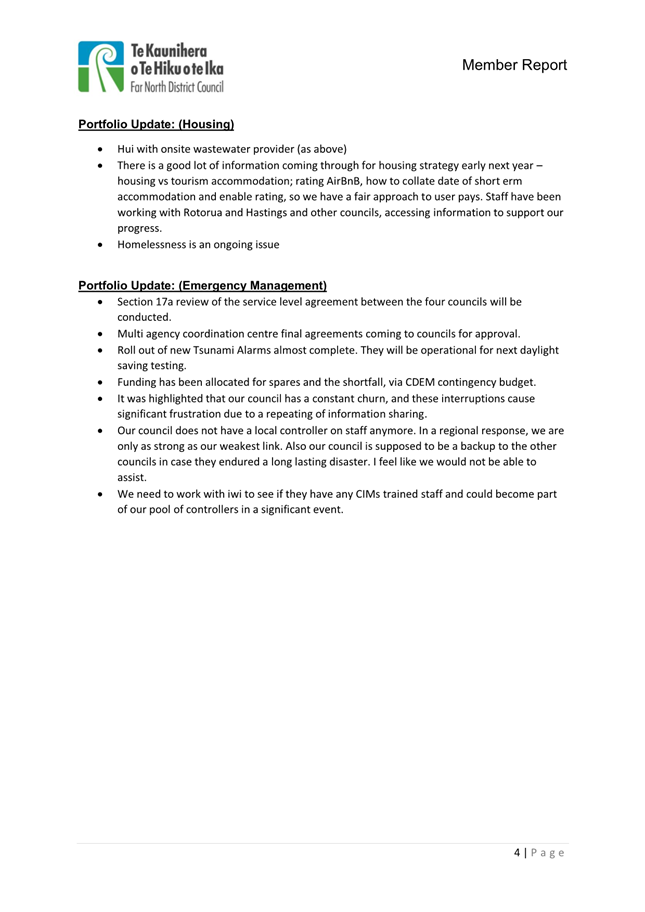
|
Ordinary Council Meeting Agenda
|
12 December 2024
|
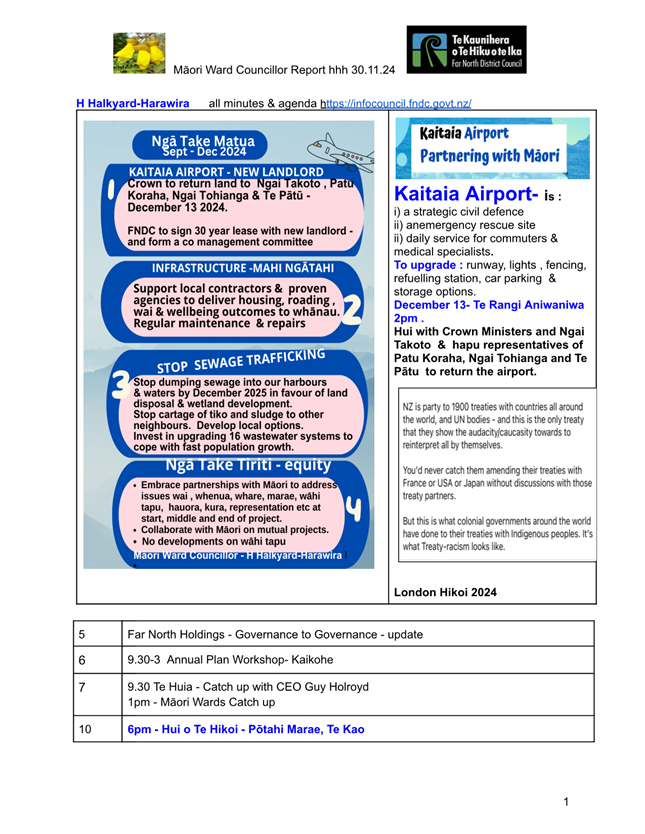
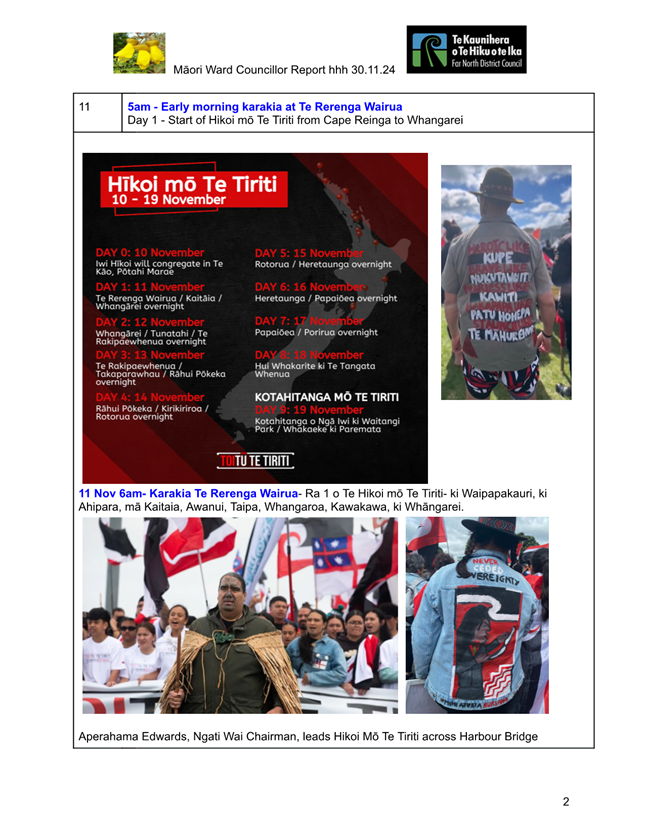
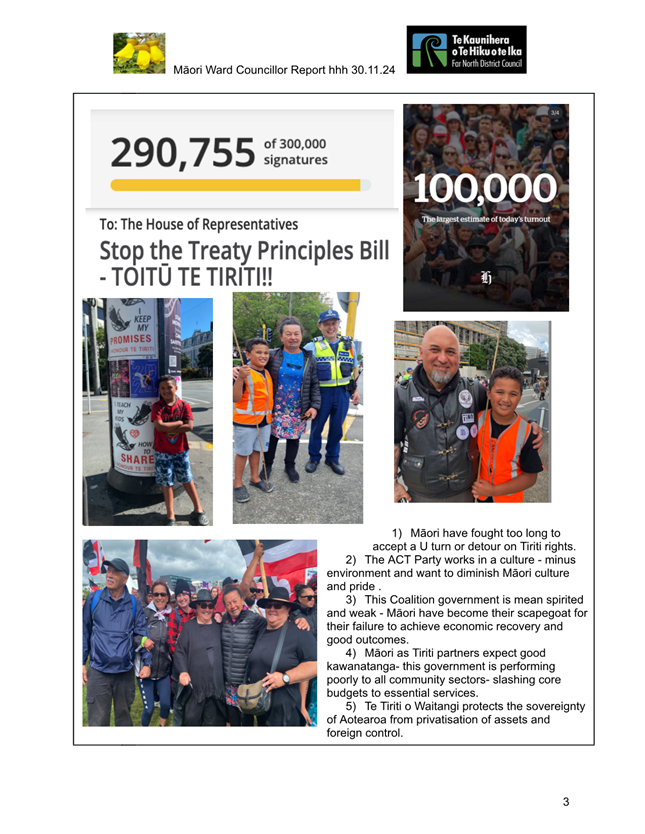
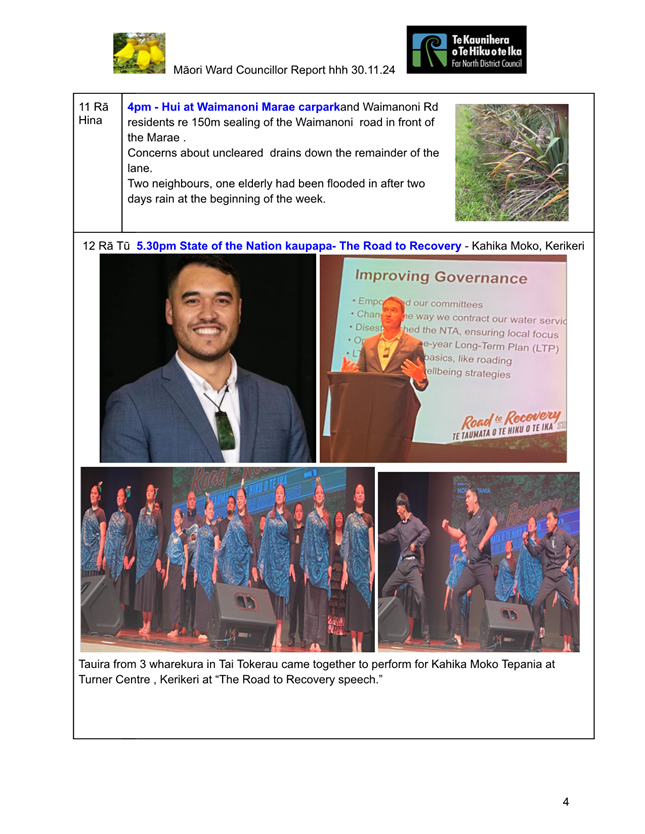
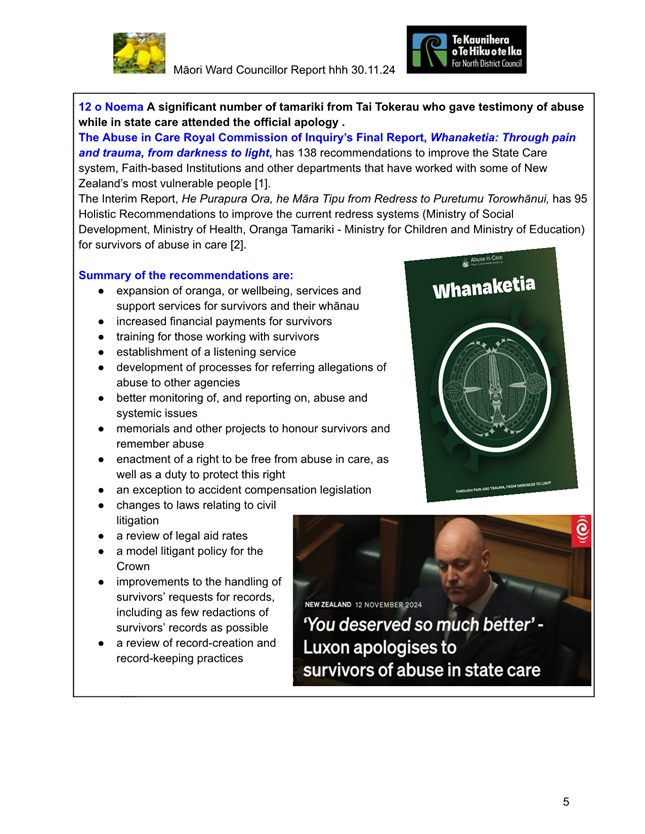
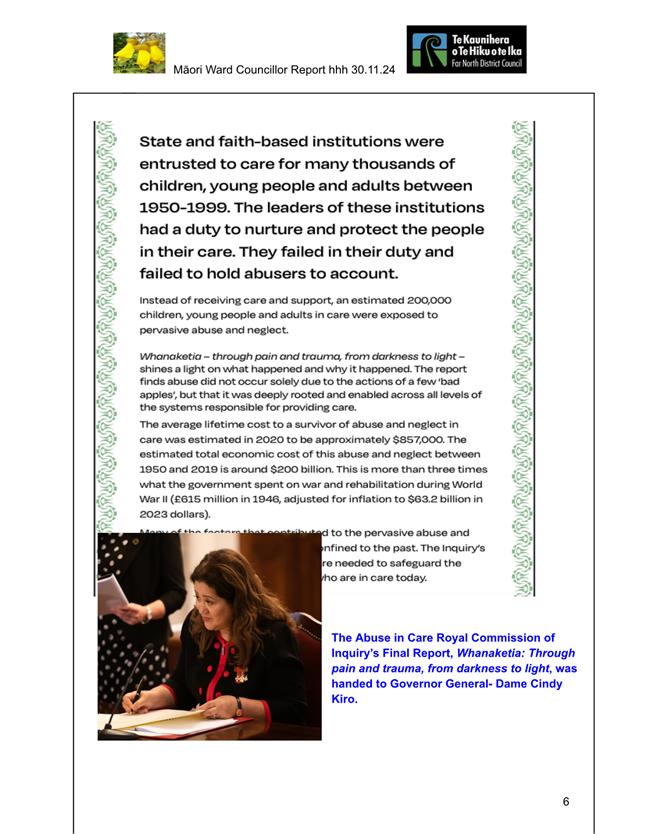
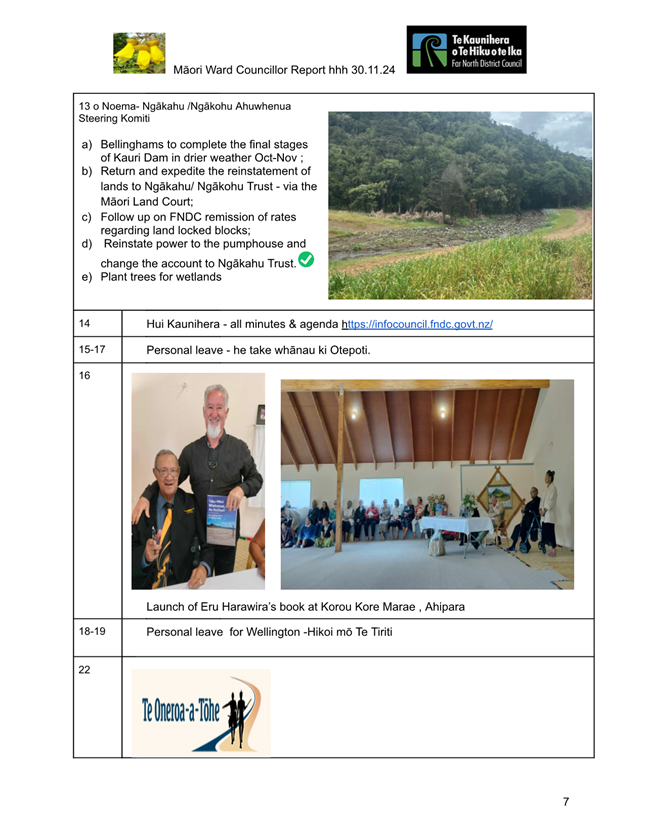
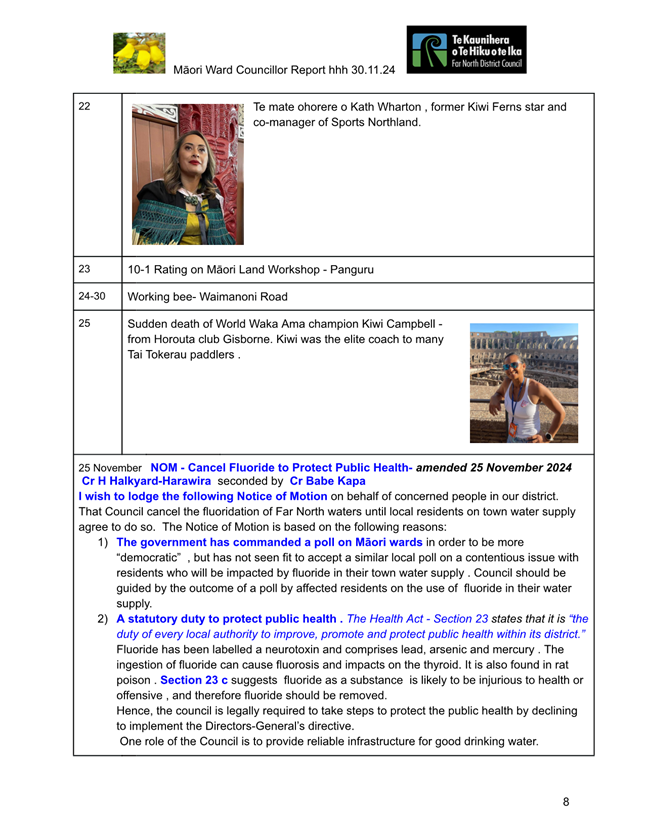
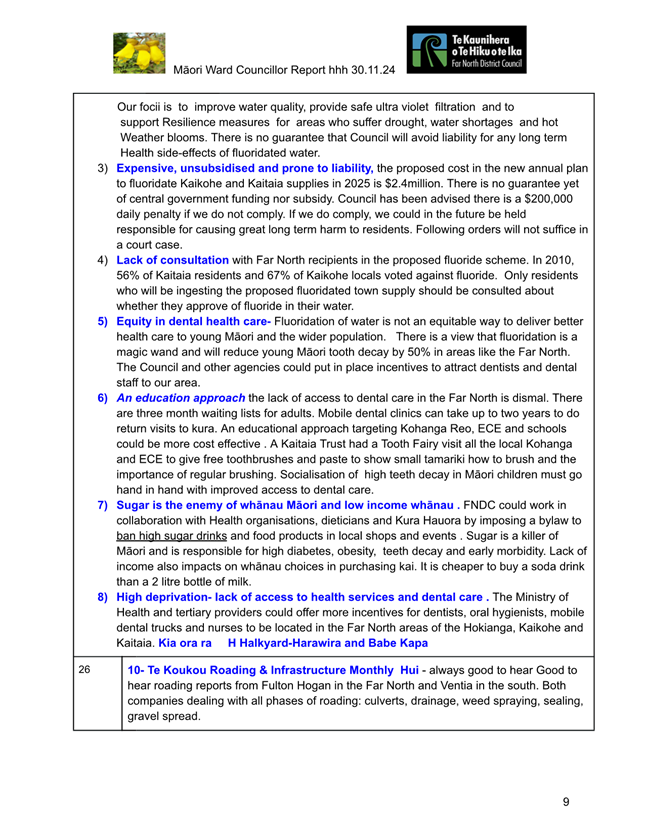
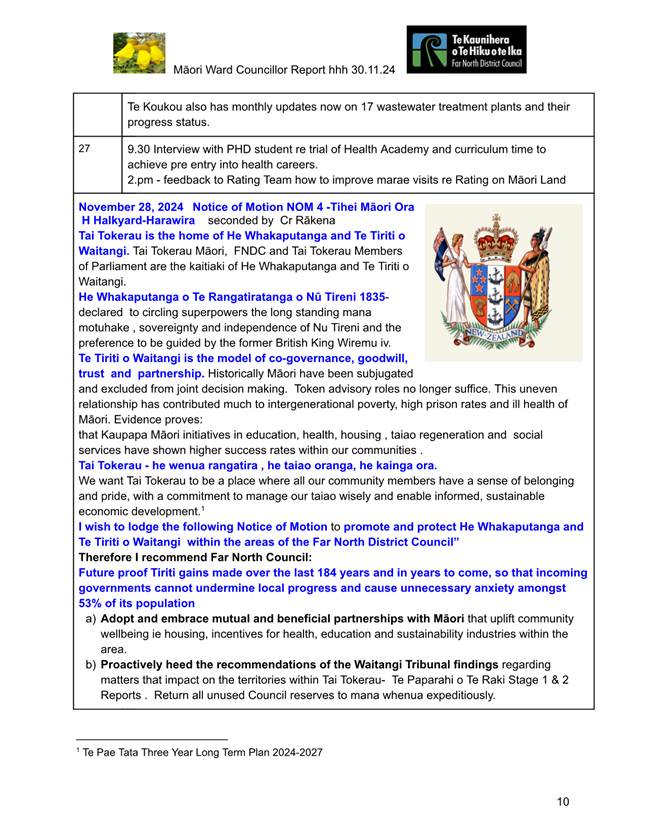
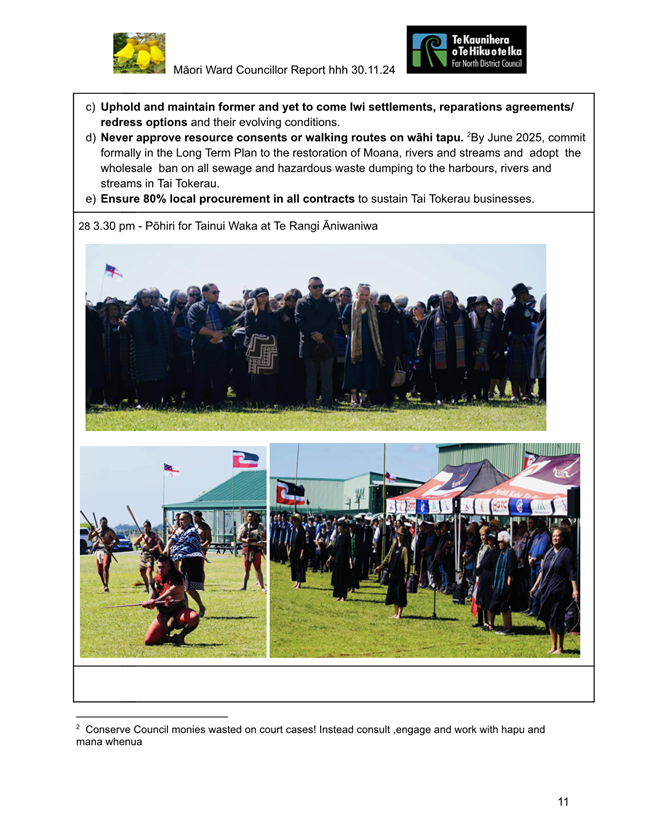
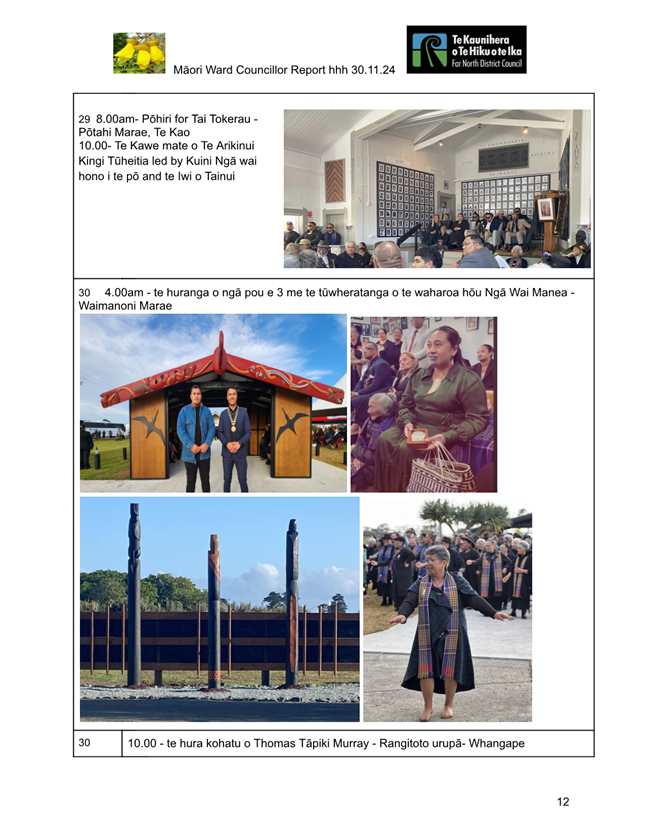
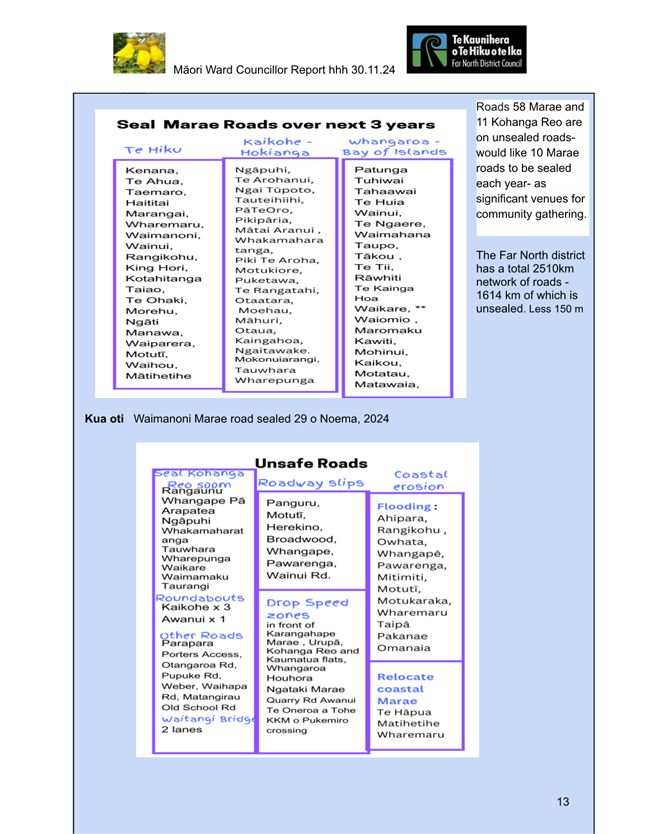
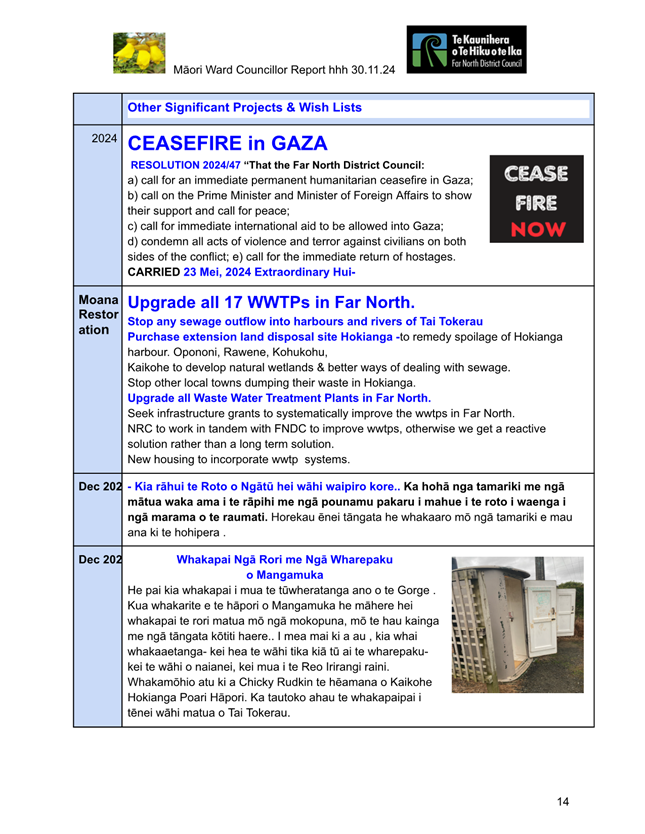

|
Ordinary Council Meeting Agenda
|
12 December 2024
|


|
Ordinary Council Meeting Agenda
|
12 December 2024
|
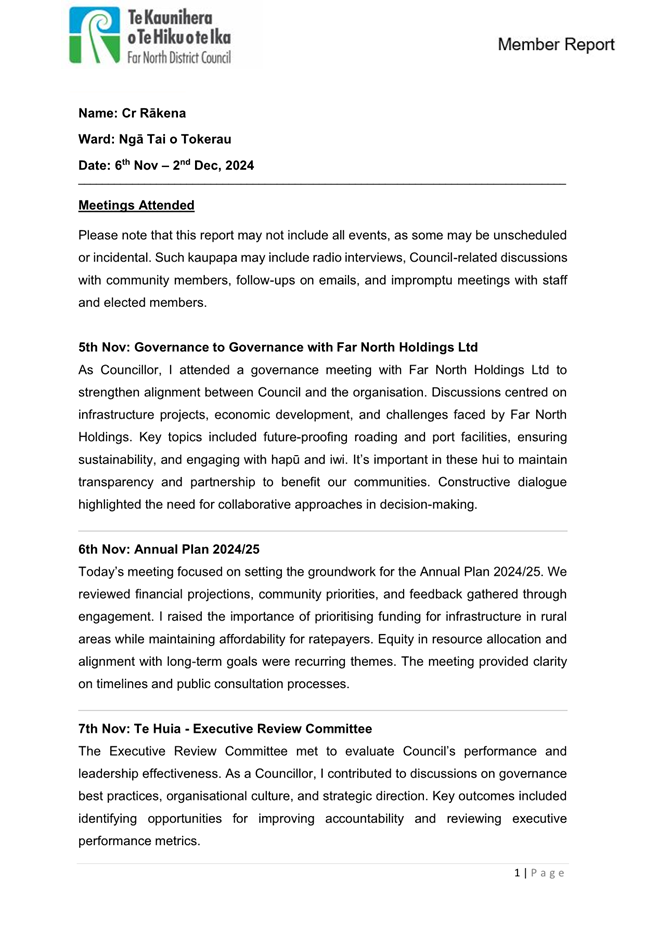
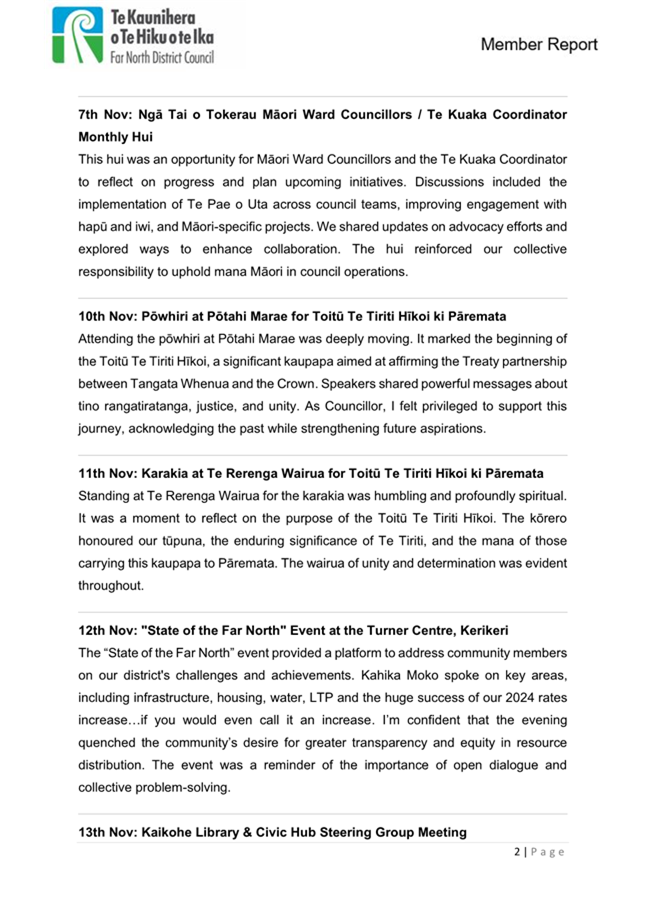
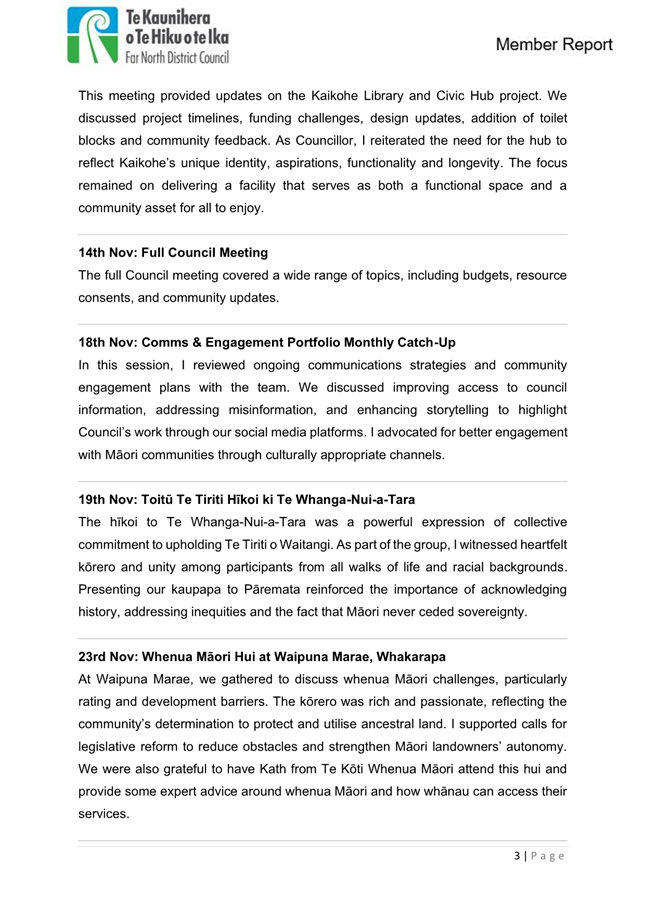
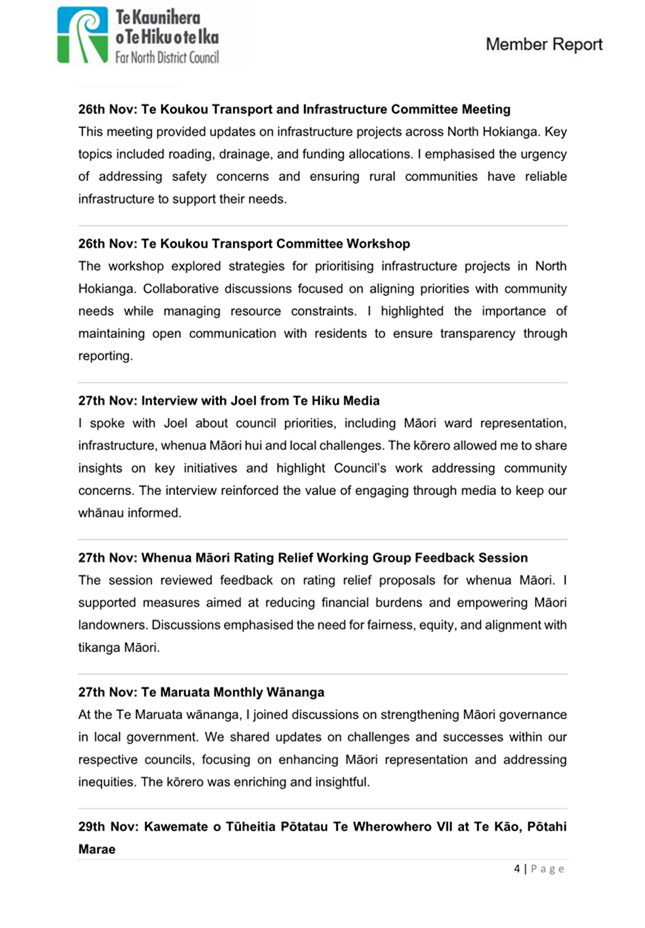
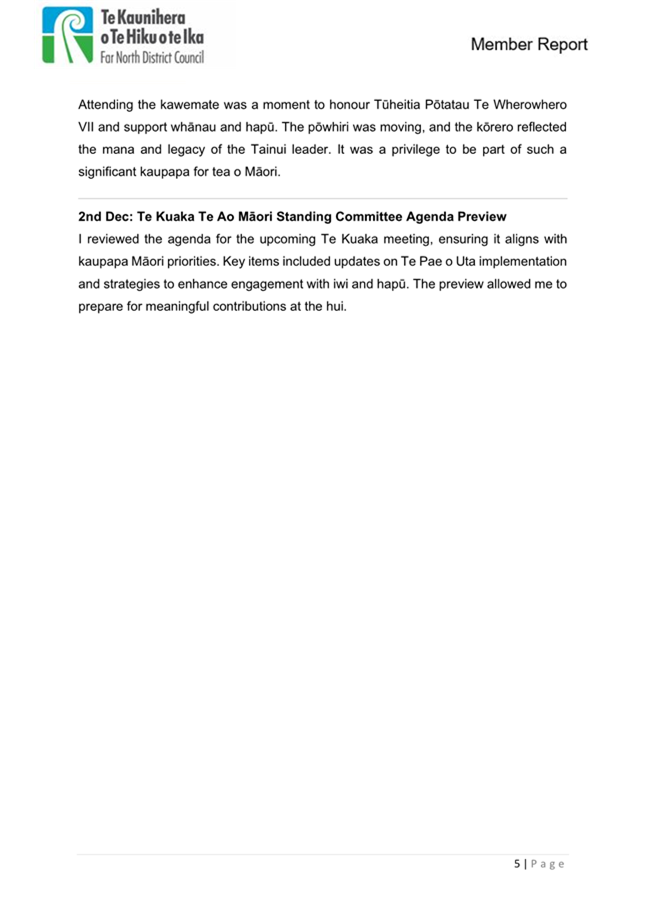
|
Ordinary Council Meeting Agenda
|
12 December 2024
|
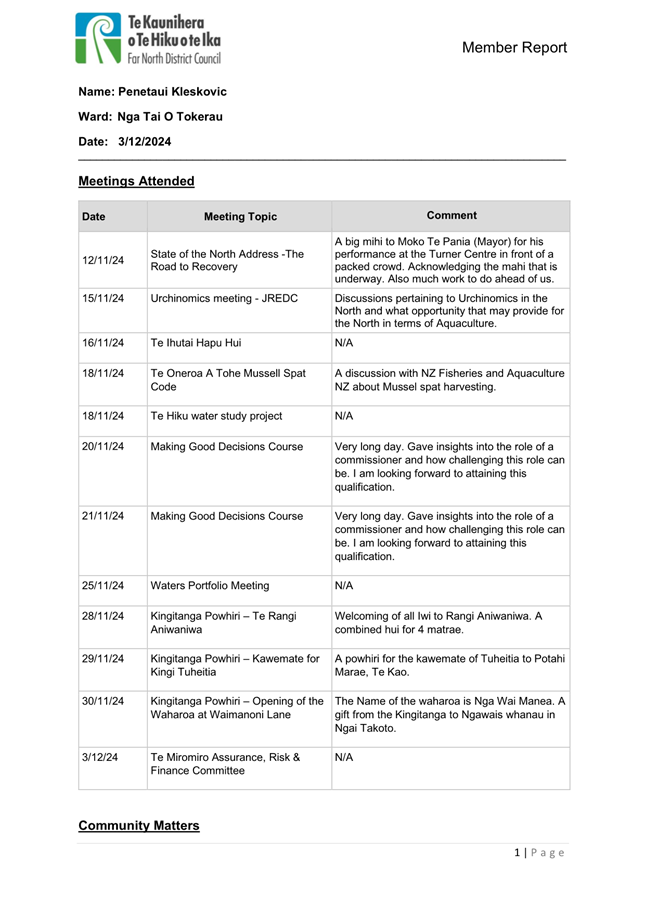
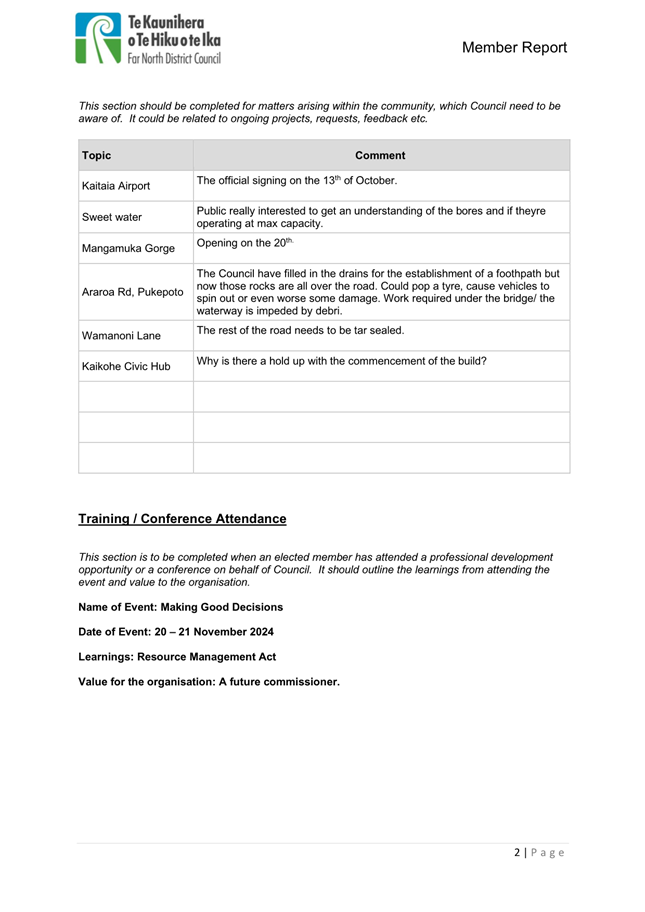
8.4 Council
Open Resolutions Update December 2024
File
Number: A5002693
Author: Maria
Bullen, Democracy Advisor
Authoriser: Aisha
Huriwai, Manager - Democracy Services
Take Pūrongo / Purpose of the Report
To provide Council with
an overview of outstanding Council and the previous term Committee decisions
from 1 January 2020.
WhakarĀpopoto matua / Executive Summary
· Open resolutions are a mechanism to communicate progress against
decisions/resolutions.
· Open resolutions are also in place for all formal elected member
meetings.
|
tŪtohunga
/ Recommendation
That Council receive the report Council Open
Resolution Update December 2024.
|
1) TĀhuhu kŌrero / Background
Any resolution or decision from a meeting is compiled on an
open resolution status report, to capture actions trigged by Council decisions.
Staff provide updates on progress against tasks that are not yet completed.
The open resolution report also includes outstanding actions
from previous triennium committees.
2) matapaki me NgĀ KŌwhiringa /
Discussion and Options
The outstanding tasks are often multi-facet projects that
take longer to fully complete. Where a decision differs to the recommendation
of staff there may be unintended consequences or challenges that take longer
for staff to work through.
TAKE TŪTOHUNGA
/ REASON FOR THE RECOMMENDATION.
To provide Council with
an overview of outstanding Council decisions from 1 January 2020.
3) PĀnga PŪtea me ngĀ
wĀhanga tahua / Financial Implications and Budgetary Provision
There are no financial
implications or need for budgetary provision in receiving this report.
Āpitihanga
/ Attachments
1. Council
Open Resolutions - A5013639 ⇩ 
|
Ordinary Council Meeting Agenda
|
12 December 2024
|
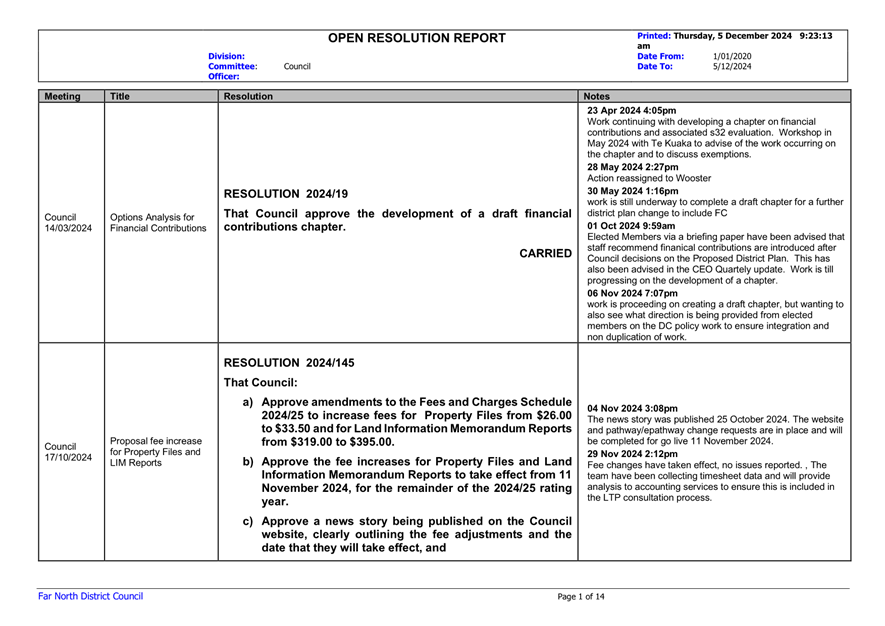
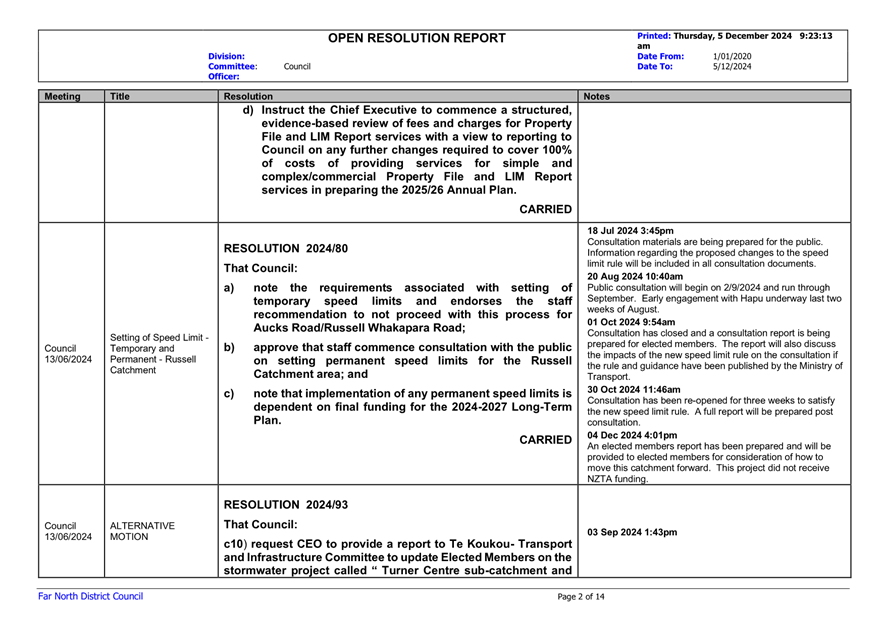

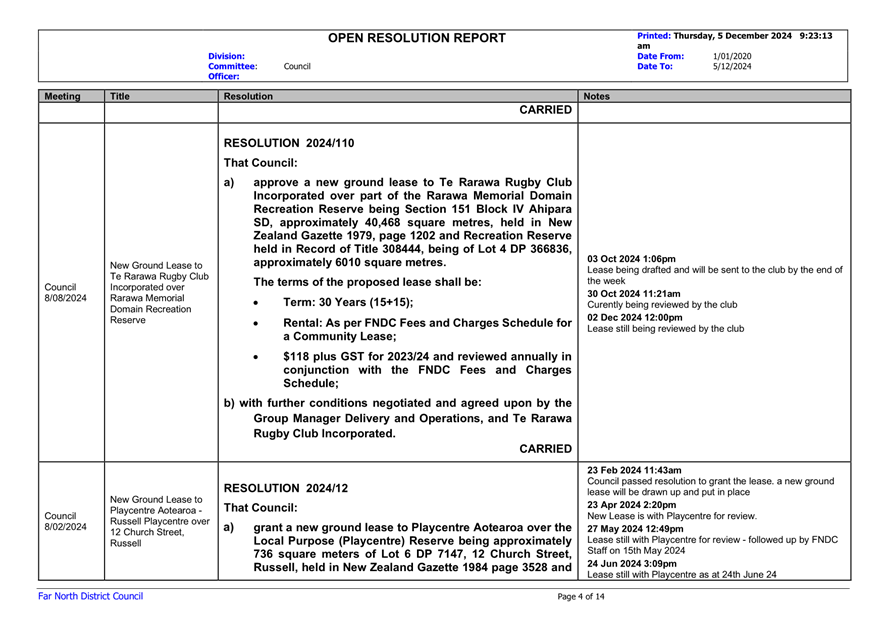
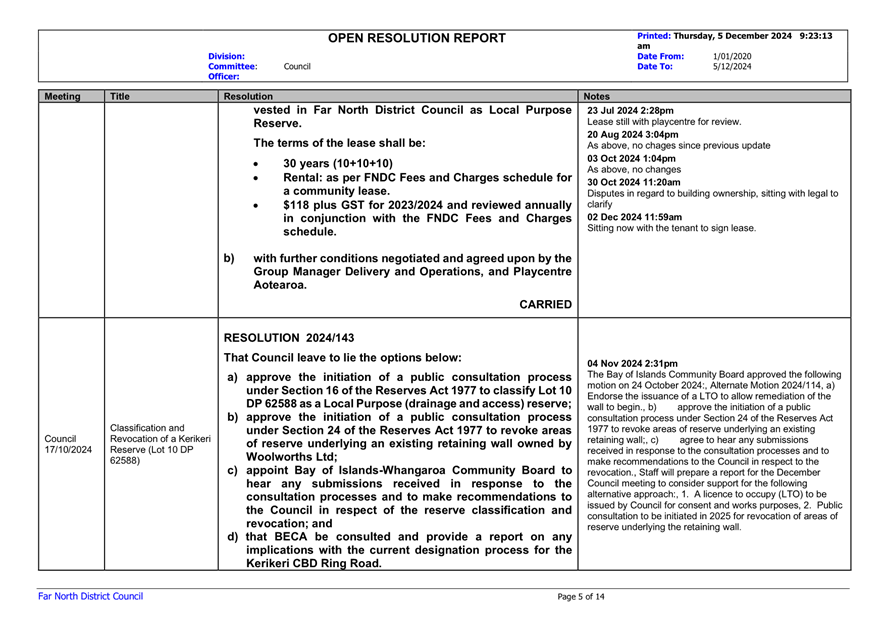
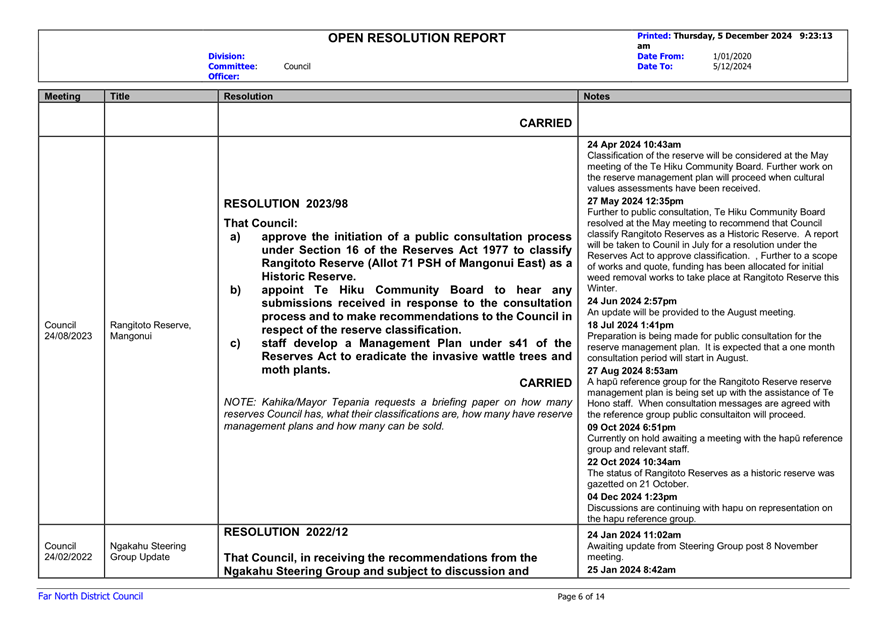
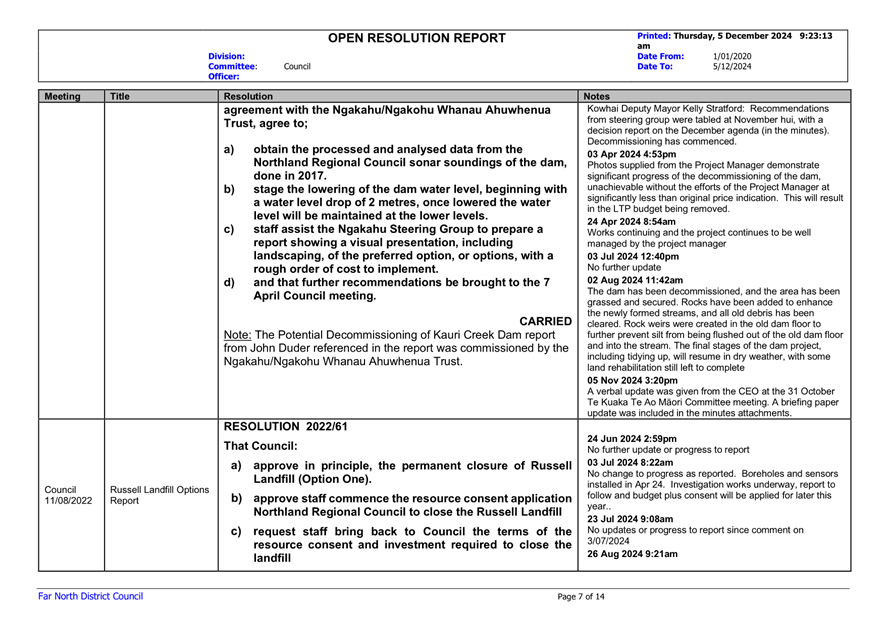
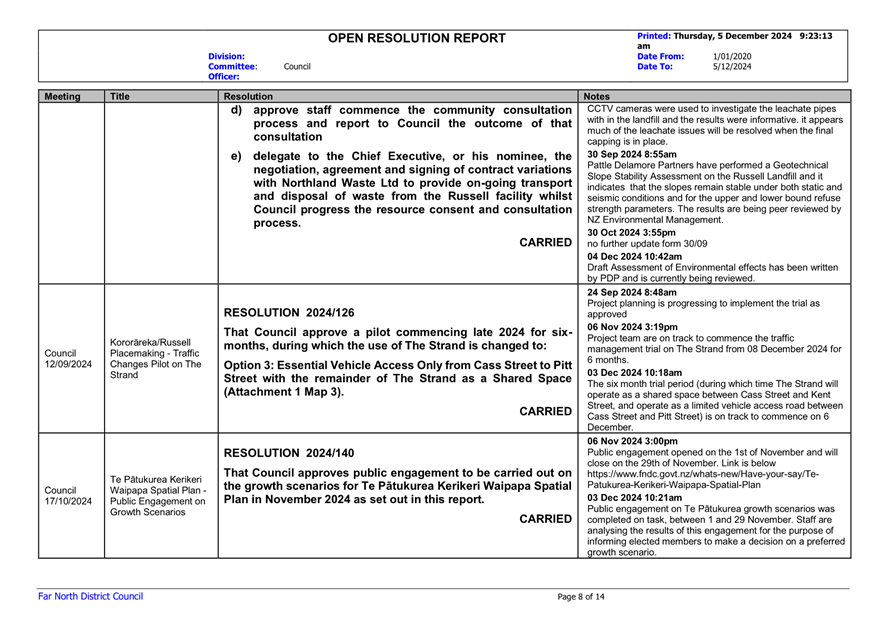
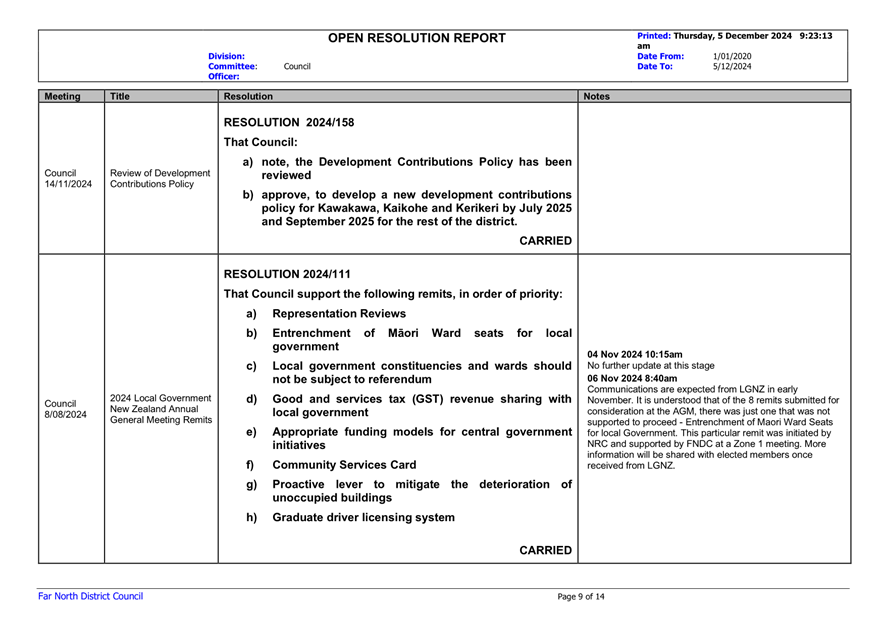
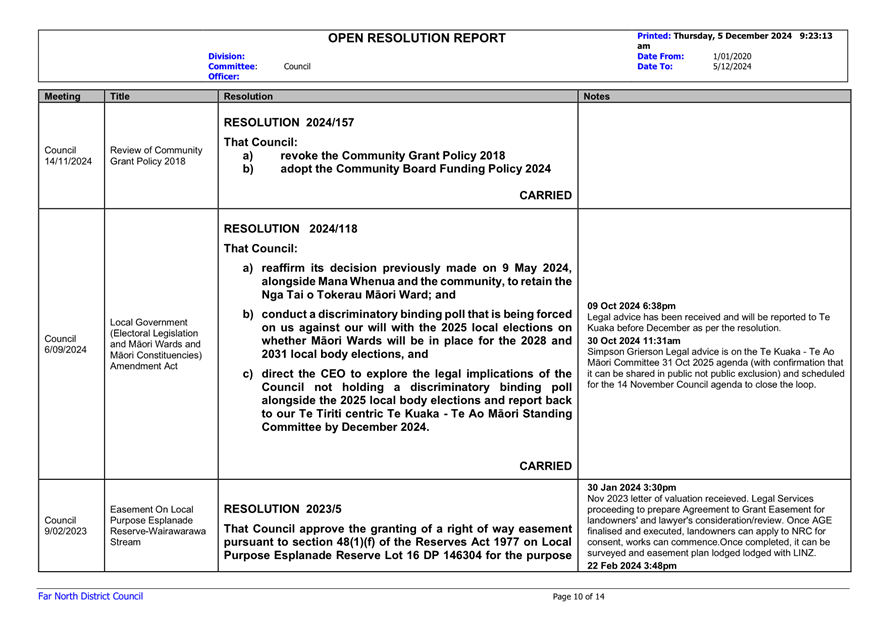
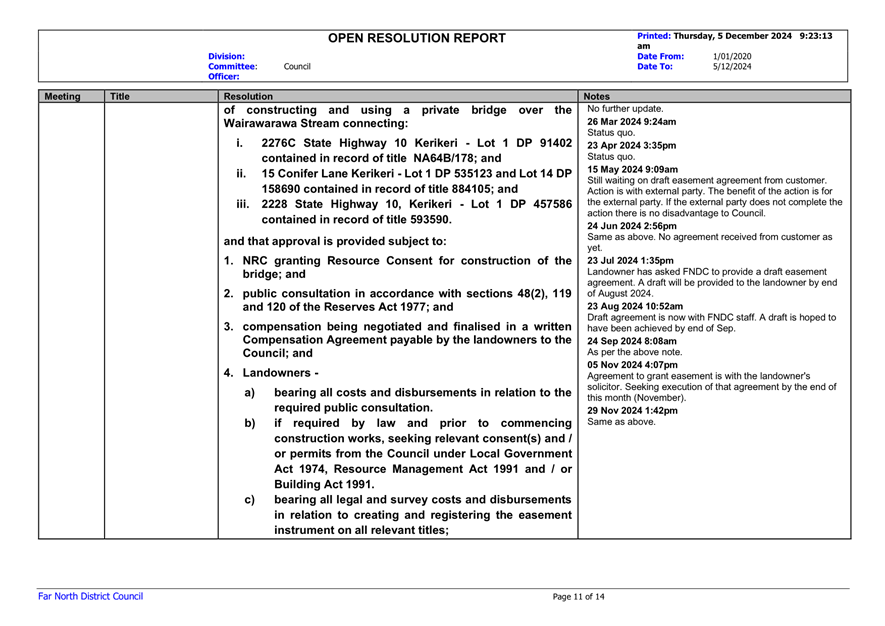
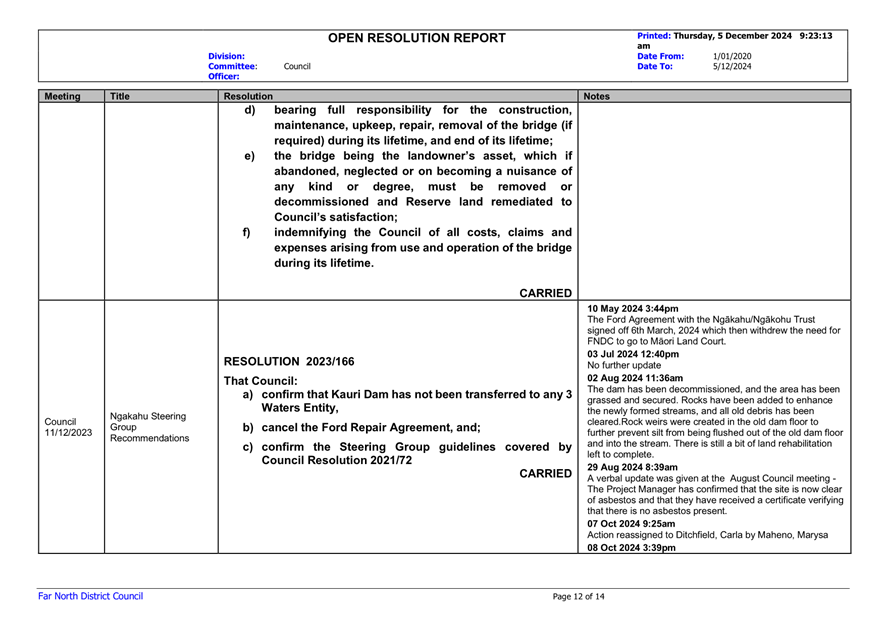
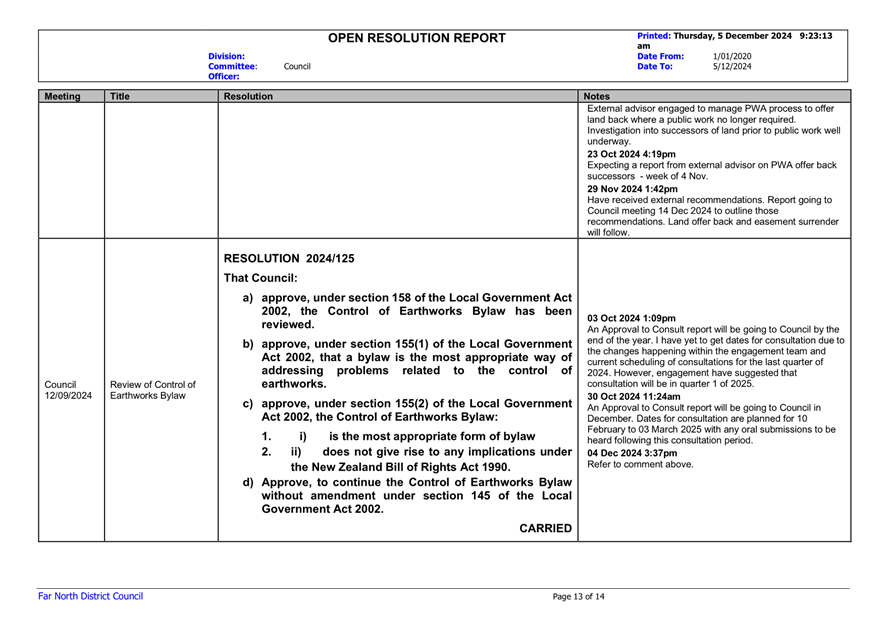
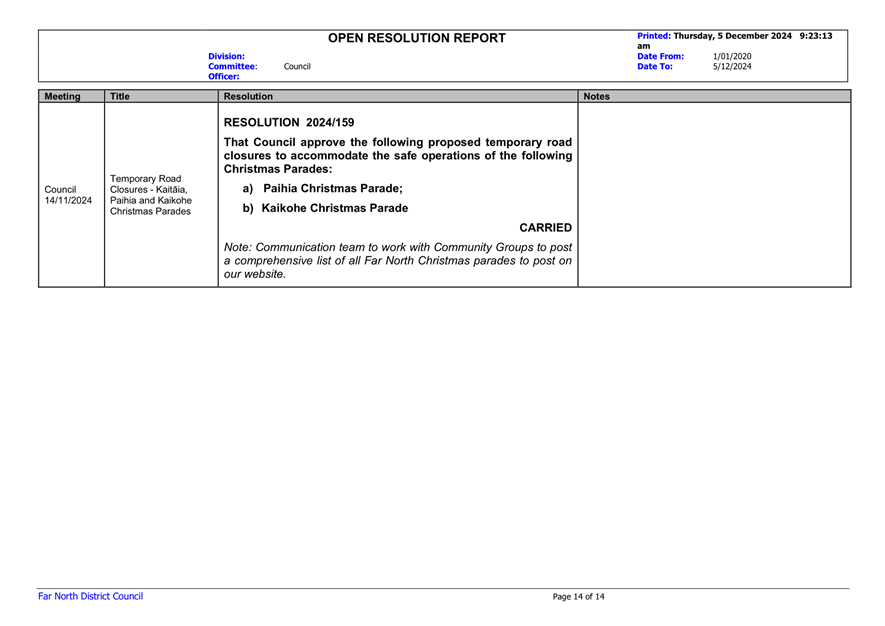
|
Ordinary Council Meeting Agenda
|
12 December 2024
|
9 Te
Wāhanga Tūmataiti / Public Excluded
RESOLUTION TO
EXCLUDE THE PUBLIC
|
Recommendation
That the public be excluded from the following parts of
the proceedings of this meeting.
The general subject matter of each matter to be
considered while the public is excluded, the reason for passing this
resolution in relation to each matter, and the specific grounds under section
48 of the Local Government Official Information and Meetings Act 1987 for the
passing of this resolution are as follows:
|
General subject of each matter to be
considered
|
Reason for passing this resolution in
relation to each matter
|
Ground(s) under section 48 for the
passing of this resolution
|
|
9.1 - Confirmation of Previous Minutes
- Public Excluded
|
s7(2)(a) - the withholding of the information is
necessary to protect the privacy of natural persons, including that of
deceased natural persons
s7(2)(h) - the withholding of the information is
necessary to enable Council to carry out, without prejudice or
disadvantage, commercial activities
s7(2)(i) - the withholding of the information is
necessary to enable Council to carry on, without prejudice or disadvantage,
negotiations (including commercial and industrial negotiations)
|
s48(1)(a)(i) - the public conduct of the relevant
part of the proceedings of the meeting would be likely to result in the
disclosure of information for which good reason for withholding would exist
under section 6 or section 7
|
|
9.2 - Facilities Management FNDC
Swimming Pools
|
s7(2)(h) - the withholding of the information is
necessary to enable Council to carry out, without prejudice or
disadvantage, commercial activities
s7(2)(i) - the withholding of the information is
necessary to enable Council to carry on, without prejudice or disadvantage,
negotiations (including commercial and industrial negotiations)
|
s48(1)(a)(i) - the public conduct of the relevant
part of the proceedings of the meeting would be likely to result in the
disclosure of information for which good reason for withholding would exist
under section 6 or section 7
|
|
9.3 - Options for the Future of 11
Matthews Avenue, Kaitāia
|
s7(2)(h) - the withholding of the information is
necessary to enable Council to carry out, without prejudice or
disadvantage, commercial activities
s7(2)(i) - the withholding of the information is
necessary to enable Council to carry on, without prejudice or disadvantage,
negotiations (including commercial and industrial negotiations)
|
s48(1)(a)(i) - the public conduct of the relevant
part of the proceedings of the meeting would be likely to result in the
disclosure of information for which good reason for withholding would exist
under section 6 or section 7
|
|
9.4 - Disposal of land under Public
Works Act: the Kaitāia waterwork known as Kauri Dam.
|
s7(2)(i) - the withholding of the information is
necessary to enable Council to carry on, without prejudice or disadvantage,
negotiations (including commercial and industrial negotiations)
|
s48(1)(a)(i) - the public conduct of the relevant
part of the proceedings of the meeting would be likely to result in the
disclosure of information for which good reason for withholding would exist
under section 6 or section 7
|
|
9.5 - Moerewa Storm Water Improvements
Contract Award
|
s7(2)(b)(ii) - the withholding of the information
is necessary to protect information where the making available of the
information would be likely unreasonably to prejudice the commercial
position of the person who supplied or who is the subject of the information
|
s48(1)(a)(i) - the public conduct of the relevant
part of the proceedings of the meeting would be likely to result in the
disclosure of information for which good reason for withholding would exist
under section 6 or section 7
|
|
9.6 - Kaitāia Wastewater
Treatment Plant Desludging Procurement
|
s7(2)(i) - the withholding of the information is
necessary to enable Council to carry on, without prejudice or disadvantage,
negotiations (including commercial and industrial negotiations)
|
s48(1)(a)(i) - the public conduct of the relevant
part of the proceedings of the meeting would be likely to result in the
disclosure of information for which good reason for withholding would exist
under section 6 or section 7
|
|
9.7 - Options for Flood Affected
Location
|
s7(2)(a) - the withholding of the information is
necessary to protect the privacy of natural persons, including that of
deceased natural persons
s7(2)(h) - the withholding of the information is
necessary to enable Council to carry out, without prejudice or
disadvantage, commercial activities
|
s48(1)(a)(i) - the public conduct of the relevant
part of the proceedings of the meeting would be likely to result in the
disclosure of information for which good reason for withholding would exist
under section 6 or section 7
|
|
9.8 - Council Public Excluded Open
Resolutions Update December 2024
|
s7(2)(g) - the withholding of the information is
necessary to maintain legal professional privilege
s7(2)(i) - the withholding of the information is
necessary to enable Council to carry on, without prejudice or disadvantage,
negotiations (including commercial and industrial negotiations)
|
s48(1)(a)(i) - the public conduct of the relevant
part of the proceedings of the meeting would be likely to result in the
disclosure of information for which good reason for withholding would exist
under section 6 or section 7
|
|
9.9 - Committee Recommendations and
Resolutions - December 2024
|
s7(2)(i) - the withholding of the information is
necessary to enable Council to carry on, without prejudice or disadvantage,
negotiations (including commercial and industrial negotiations)
|
s48(1)(a)(i) - the public conduct of the relevant
part of the proceedings of the meeting would be likely to result in the
disclosure of information for which good reason for withholding would exist
under section 6 or section 7
|
|
































































